Birth of the Pride and Spirit



Copyright © 2024
All rights reserved. No part of this book may be reproduced in any form or by any electronic or mechanical means, including information storage and retrieval systems, without permission in writing from the author, except by a reviewer, who may quote brief passages in a review.
Additional copies of this book are available from the author.
Pat Deaville, P.O. Box 6294, Lake Charles, LA 70606 pdeaville3@gmail.com
There are many students named in this book.
But the book is dedicated to the band parents, boosters, faculty members, and citizens of Lake Arthur who provided the extraordinary financial and moral support necessary for the success of the Pride and Spirit Band.
You are our heroes and heroines.
The LAHS Tiger Band existed for decades before my arrival in August 1974. There had been some good ensembles and competitive achievements. However, in the late 60s and early 70s, the number of participants dwindled to the point that the program was in danger of being eliminated.
What 1974 brought was a new culture and approach that we quickly labeled Pride and Spirit. Between August 1974 and May 1979, the band experienced unprecedented membership growth and reestablished performance excellence.
This book is focused on those first five years of the Pride and Spirit culture. I hope the stories, pictures, and lessons will bring back beautiful memories to band alums and inspireyoung musicians anddirectors to believein thepowerof music,children, and the community.
After I departed Lake Arthur in 1979, I entered graduate school at McNeese State University and later accepted the band director position at Lake Charles High School.
Under Eddie Thompson's new leadership, the Pride and Spirit Tiger Band continuedtoflourishandachieve.With Mr.Thompsonatthehelm,theLAHSTiger Band earned many accolades well into the 80s.
Likewise, the succession of drum majors from Sally Wade to Cathy O'Blanc to Eva Giles helped cement LAHS's extraordinary student leadership over an entire decade of excellence. The band has continued to represent Lake Arthur well and has experienced several periods of resurgence since the mid-1980s.
Most notably, the return of one of LAHS's native sons and Pride and Spirit's original members as band director, David Landry, resulted in significant growth and performance excellence in district and state competitions. Lake Arthur remains a "Band Town." It always has been and always will be.
Section One – The Pride and Spirit Band’s Foundational Years (1974-79)
Before Year One
Year One (1974-75)
The Transition to Year Two (Planning for Marching Band)
Year Two (1975-76)
Year Three (1976-77)
Year Four (1977-78)
Year Five (1978-79)
Evolution of the Junior High Band Program (For Beyond Year Five)
Milestones of the Foundational Years
The 1974-1975 Band Recruits
Yearbook Photos of the Foundation Years
Beyond Year Five
The Story behind the moniker "Pride and Spirit"
The Pride and Spirit represented the full spectrum of the school body
On the road to Baton Rouge and Arlington
Summer Camps at the University of Southern Mississippi (USM)
Corps Captain: The role with historic traditions
The Story behind the “Fourth Quarter Jam"
The Story behind the “Ejection and the Game Ball"
The Story behind the “Invitation to Disney World"
The Story behind the “Disney Bus Adventure"
The Story behind two Pride and Spirit traditions
It's my favorite story from the “Sweat Box"
The iconic photo aboard the “Captain Price"
The Boys in the Band
Pride and Spirit members are at “The Top of the Class”
The Beauties of Lake Arthur’s Pride and Spirit Band
The Pride and Spirit’s “Boosters, Parents, and Faculty Members”
The Pride and Spirit’s Student Leadership (Part One)
The Pride and Spirit’s Student Leadership (Part Two)
The Pride and Spirit’s Drum Major Legacy
The Story behind the quest for “Quantity and Quality”
The data behind the “Birth of Pride and Spirit”
The Story behind the “Final Concert and Crawfish Boil"
Contributions by Denice LaFosse Sonnier, Sally Wade Comer, Greg Stevens, Cathy O’Blanc Young, David Green, Paula N. Scott Herring, Marcia Miller, Edwina Wilks, Kathy Jester Mack, Pamela Breaux Thibodeaux, Sandra
Ramos, Lola Broussard, Brian Bertrand, Terrence Harrington, Madonna
Hammond, Darla LaComb, Tracy Manuel Trahan, Colette Manuel, LaNeve
Alejandro, Tina Gagneaux Nowocin, Bridget Bonin Peeler, Penny Cantrelle, and Jennifer Prejean.
A Red and Blue Thank You
The Birth of Pride and Spirit
The Band Director’s Legacy
Call the Band to “Attention!”
Foundation
Pride
Spirit
Teach
Dobson Assumes Principal’s Post (Summer 1974)
Winners Crowned at Miss Lake Arthur Beauty Pageant (Spring 1977)
Busy Summer Preparing for the 1977-78 School Year (Summer 1977)
Drum Major Wins Again (Summer 1977)
LAHS Band Members Named to All-American Honors (Spring 1977)
Biggest Little Band Contest (Fall 1977)
Four Years of Growth and Achievement (Spring 1978)
Tiger Band Continues to Shine (Fall 1978)
LAHS Band Sweeps Up Awards (Fall 1978)
Five Years of Growth and Achievement (Spring 1979)
Pat Deaville Resigns as LAHS Band Director (Spring 1979)
Section One – The Pride and Spirit Foundational Years (1974-79)
The LAHS Tiger Band Mid-1960s
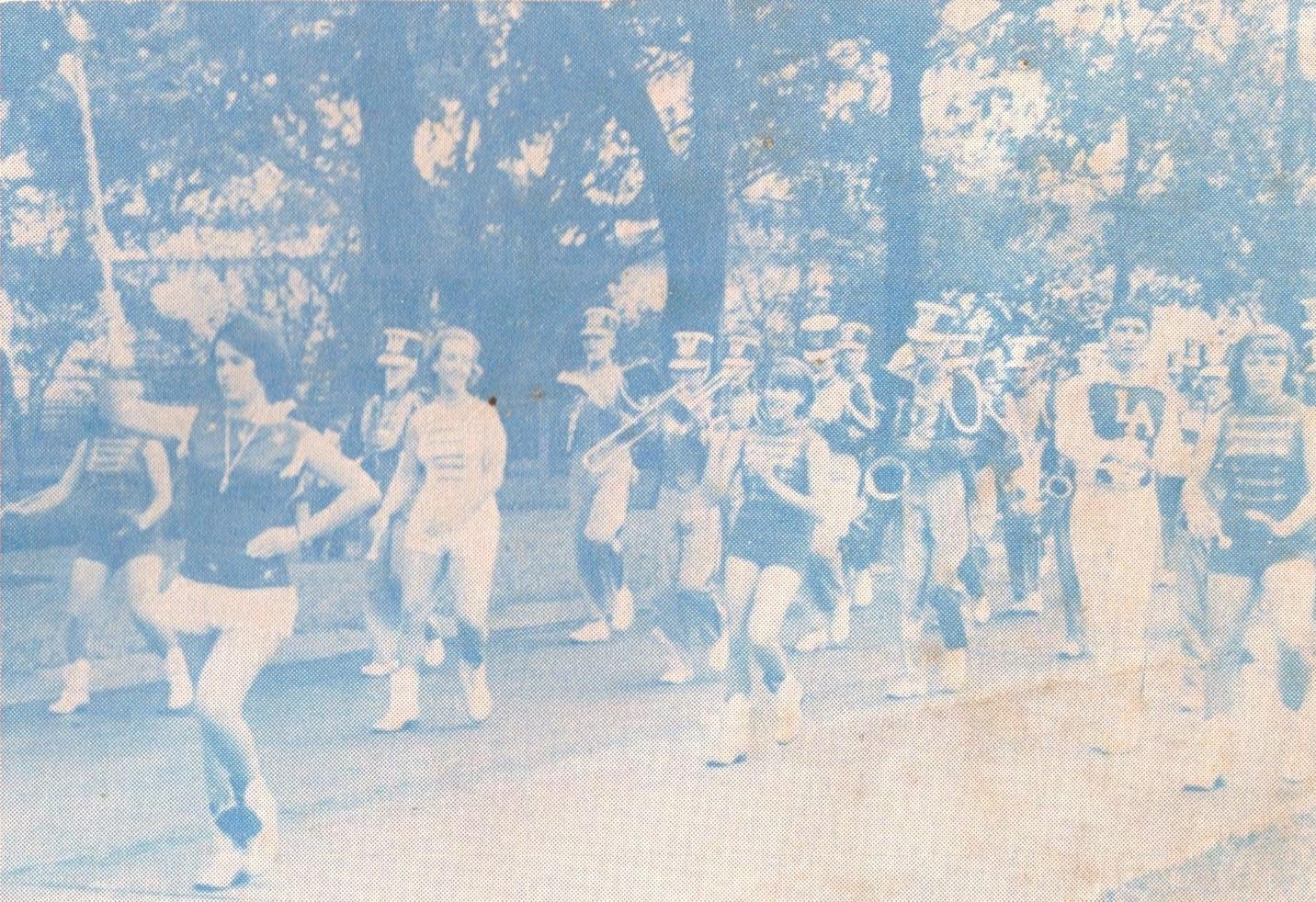
(Photo Courtesy of the Lake Arthur Chamber of Commerce.)
Edwina Wilks
I was hanging out with the Lake Arthur Band in the stands in 1965. Fun! I knew then I wanted to be a part of that! It took almost a decade, but I “made the cut.” Pride and Spirit, Lake Arthur had it, and it showed at all sporting events! What a pleasure to be a part of that great ride! Thanks for everything! Always forward! Go Tigers!
Cathy O'Blanc YoungWhen I was in 6th and 7th grades, some of the band members would ride in the back of Kenny Lyons truck from the band room to the football field. I was one of them. I played the drums.
Two hours after signing a contract to teach in Lake Arthur, I received a stern lecture from a man I had never met. His name was Orville Kelley. Mr. Kelley was a Texas Bandmaster Hall of Famer who currently operated the Swicegood Music Store in Lake Charles. He was a legend in the band business.
That morning, his words were bouncing off the walls behind the closed doors of his music store’s office. Before returning to Ft. Bragg, North Carolina, to finish out my tour of duty, my visit to Mr. Kelley’s store was mainly an attempt to meet the man who was the leading supplier of musical instruments, instrument repair, and sheet music for the region. More importantly, I wanted to introduce myself to him as he was a “Godfather” figure for band directors in Southwest Louisiana. When Orville spoke, people listened.
I won’t use the words he used, but after I had told him I had just signed a contract to teach in Lake Arthur, he advised me to leave his office, get in my car, and drive immediately back to the Jeff Davis Parish School Board office, and tell them I had changed my mind. He advised me they would not be surprised.
Cutting to the bottom line, he reminded me, “You have not worked one minute for them, they have not paid you one penny, your contract does not even become real until it’s approved in a board meeting, and right this minute they are probably in shock that you signed the contract.”
Going on, he explained in colorful language that Lake Arthur was not the place to start my career. He knew I had solid offers from Calcasieu Parish and Lauderdale County in Mississippi.
Trying to convince me to change my mind, he explained that in the past two years, he had only sold three instruments to people in Lake Arthur, and two of those had been returned. He closed by saying he had nothing against the school, but Lake Arthur was not a “band town,” and I would only be a sacrificial lamb before they closed the program.
Obviously and fortunately, I did not follow Mr. Kelley’s advice in this instance, but throughout my career, Mr. Kelley became a treasured friend and key professional advisor. Much of my growth and ultimate success as a band director can be directly attributed to him.
Fast forward four months, Mr. Kelley, with some serious reservations, conducted a "horn display" in the LAHS band room in September of 1974. At the end of the evening, he had the signatures of over fifty parents on rental/purchase agreements. Every single musical instrument brought to Lake Arthur that evening had been sold.
More importantly, he was sold on Lake Arthur. From that moment forward, he went above and beyond the call of duty countless times to support what became the Pride and Spirit Band.
Fast forward five years, and Mr. Kelley told me I had lost my mind. I had just explained to him that I was resigning from my position in Lake Arthur and moving to Lake Charles to work on my master's degree at McNeese. Orville fumed, fussed, and expressed his disbelief that I would ever leave such a great "band town" like Lake Arthur.
Fast forward another five years. Mr. Kelley was a groomsman for my second wedding, and Alvin Richard, former Band Booster President at LAHS, was the best man.
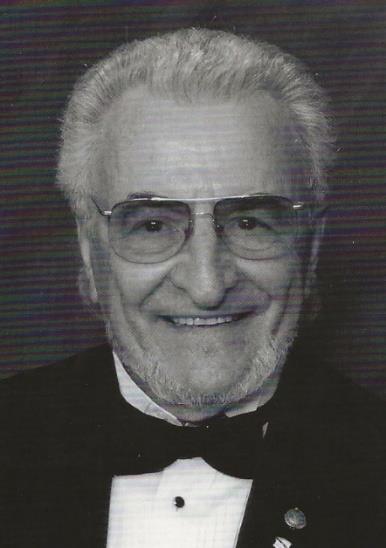
(Orville Kelley was a Texas Bandmaster Hall of Famer who operated the Swicegood Music franchise in Lake Charles. He was a key mentor throughout my band director career.)
Lake Arthur wasn't even on the radar.
In the Spring of 1974, I took a two-week leave from Ft. Bragg, North Carolina, and drove home to Jennings, Louisiana. Beyond visiting my family and in-laws, the purpose of the trip was to secure a teaching job as a band director for the 1974-75 school year.
My two years of active duty in the U. S. Army would end on July 31, 1974. As a young man with a wife and newborn son to support, I needed to be sure my family would have no break in paychecks or insurance coverage.
Fortunately, there were two job offerings of great promise on the table
The first was at the junior high in Meridian, Mississippi. This school had an excellent, well-established band program. The high school director was Tom Fraschillo, one of the South's most respected young band leaders. I would teach during the school day at the junior high, and after school, I would assist him with the high school marching band.
The second offer was in Calcasieu Parish at S. P. Arnett Middle School. Like at Meridian, I would spend most of my time at the middle school but would also assist with the rapidly growing Westlake High School Ram Band under the direction of Frank Harrell. Frank was a young LSU go-getter with a contagious smile. He was already establishing a fine reputation as a recruiter and program builder
Professionally, the Meridian offer was a fantastic opportunity to start my career under the wing of the legendary Tom Fraschillo. Tom eventually became the band director at the University of Southern Mississippi and President of the Collegiate National Band Directors Association.
Practically, the teaching position in Westlake would place me and my young family close to my hometown of Jennings and both sets of grandparents for my newborn son. Likewise, most of my family, professional connections, and musical mentors were rooted in Southwest Louisiana.
So, it was just a matter of meeting with officials in Calcasieu Parish, then stopping for the interview in Meridian on the way back to North Carolina. Both systems said
they would give me a deadline to decide. Before the deadline, I could mail a signed contract back to the personnel department in either Lake Charles or Meridian
At this point in the story comes the question, "How did you end up in Lake Arthur?" Good question. Becoming the band director at Lake Arthur High School wasnotapartoftheplan.LakeArthurwasn'tevenontheradarofjobconsiderations.
I had sent an application to many school districts during my final year at Ft. Bragg, and being a native of Jennings, I sent one to the Jefferson Davis Parish School System. They responded with a polite letter that explained there were no projected openings for a band director in the 1974-75 school year.
But three days before my return to Ft. Bragg with a stop in Meridian, Mr. Allen Fitzgerald, Principal at LAHS, called my father and asked if he would talk to me about interviewing for the band director position in Lake Arthur. Again, there was no advertised opening at the school, so it seemed mysterious.
Mr.Fitzhaddabbledinthehorsebusinessonthesideand,therefore,knewmyfather, Paul Deaville, a well-known horse trainer in Louisiana.
Dad told Mr. Fitz that I was locked into the Meridian or Westlake job but would ask me to interview at LAHS as a personal courtesy.
So, I did. It turned out to be a life-altering encounter. It set me ricocheting into a career trajectory that concluded with my induction into the Louisiana Music Educators Hall of Fame thirty years later.
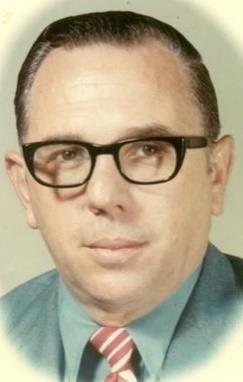
(Mr. Allen Fitzgerald)
The interview was set for early on a Saturday morning. I pointed my Dodge Dart (standard transmission without air conditioning) down Highway 26 toward Lake Arthur. My mother grew up in the city, and as I was soon to discover, everyone in the town would claim to be my distant cousin.
It had been many years since I had been on the LAHS campus. I remembered being a part of an all-parish band while at Jennings High and faintly recalled rehearsing in the LAHS band room a few times.
These were pre-GPS days, but Dad gave me rudimentary instructions, reminding me how to get to the school. It involved turning off the highway at a sawmill and continuing past a football field for a few blocks.
Getting lost in a small town is difficult, but I managed. Nevertheless, I eventually pulled into a parking place behind the school with what appeared to be a gym and a small storage building to my right.
The meeting with Mr. Fitz was set for 9 a.m., but as usual, I was early. I tried a door on the side of the main building, but it was locked. I heard some sounds from the gym, so I went to see if anyone could get me into the main building.
On the way to the gym, I stopped and looked through a window door in the storage building. What a mess. There was lots of random stuff scattered about. When I got to the gym, I found Mr. Fitzgerald talking to a man I later learned was Coach Leto Comeaux.
I introduced myself and got a firm handshake from Mr. Fritz, plus a "grin and nod" from the coach. We proceeded to Mr. Friz's office and had a discussion that was unlike anything I had expected.
Mr. Fitzgerald was candid with me. While I won't specifically relate all that was said, he did clarify that "the band job" would soon be eliminated unless something was done quickly to salvage the program. The number of members no longer justified having a band director on the faculty.
In a careful yet vague manner, he explained the school system might be willing to make a bargain with the current director, who needed one more year of service to be eligible for retirement. They would work something out so that he could get his final year…just not at LAHS.
Mr. Fitzgerald said if I took the job, he felt he could convince theJDP Central Office staff to give LAHS one more year to justify retaining the band director position.
The LAHS campus serviced students from grades six though twelve. I would be assigned one high school band class (of which only seven students were projected to enroll) and one high school "music" course that could be a choir or music appreciation class.
There would not be any junior high band classes in the schedule in 1974-75, but I would be expected to teach music in the teacher rooms so that each teacher in grades 6-8 could receive at least one extra planning hour per week.
That was it. That was the offer. I kept a straight face, remained polite, and expressed my appreciation to Mr. Fitzgerald for considering me and wanting to continue the band program.
As I got up and shook his hand, I was ready to run. Then he added, "Would you like to see the band room?" My brain shouted, "No," as my mouth said, "Of course." He gave me a key and told me it was the building between the gym and the main building. He said to give the key to the coach in the gym when I finished.
Again, my brain said, "No." It simply can't be. It was. I opened the door of what I had originally thought was a storage building and explored for a few minutes. Initially, I found a few music stands, a room containing some old uniforms, and a pile of dust-covered cases. There was the familiar aroma of musical instruments that had not been used in quite a while. The most memorable item I saw in the middle of the rehearsal room was a sizeable black recliner with torn upholstery.
I pointed my car back towards Jennings and felt, at the very least, I had complied with my father's request by meeting with Mr. Fitzgerald. Mr. Fitz seemed sincere but knew he was just taking a "shot in the dark." There was no way anyone would go to LAHS under those circumstances.
Sometimes, the heart takes the lead.
Most people reading this book have traveled Highway 26 connecting Lake Arthur and Jennings. It's not a long drive between the towns. It can be done in fifteen minutes or less, depending on if one obeys the speed limit.
My car did not exceed the speed limit when I drove back to my parents’ house after meeting Mr. Fitzgerald. But my mind was racing because my brain and heart were arguing seriously.
My heart was reading between the lines of what Mr. Fitz had communicated. Was he subtly trying to tell me they were closing the band program at the end of this school year unless I agreed to be the new director? At that time, closing a program was the only way a school could cut a tenured teacher. Was that what was going to happen?
My head pointed out that I had two excellent job offers and had committed verbally to take one or the other My brain kept telling me, "Don't get caught up in this Lake Arthur situation. It's none of your business. It is not your concern. Just let it go."
My heart was furious with my brain. This internal argument continued through the drive. But I could tell something was happening within me that I could not explain because it defied all logic and reason.
I refused to talk to anyone about the conflict inside me for almost twenty-four hours. My heart kept telling me, "The other school systems are offering you a job because they 'want' you. While they have made it clear you are at the top of their list of candidates, there was a 'list' of candidates."
If I chose to turn down the job offers in Westlake and Meridian, plenty of other highly qualified directors were ready to take my place at the top of the list. But Lake Arthur "needed" me…or so my heart argued.
At some point, my brain shut up, my heart took over, and I called Mr. Fitzgerald. He said a contract would be at the Jeff Davis Parish School Board office on Monday morning. All I had to do was sign, and the job was mine. I told him I would. He assured me the school system would work out all the other details to help the current director meet his retirement goal.
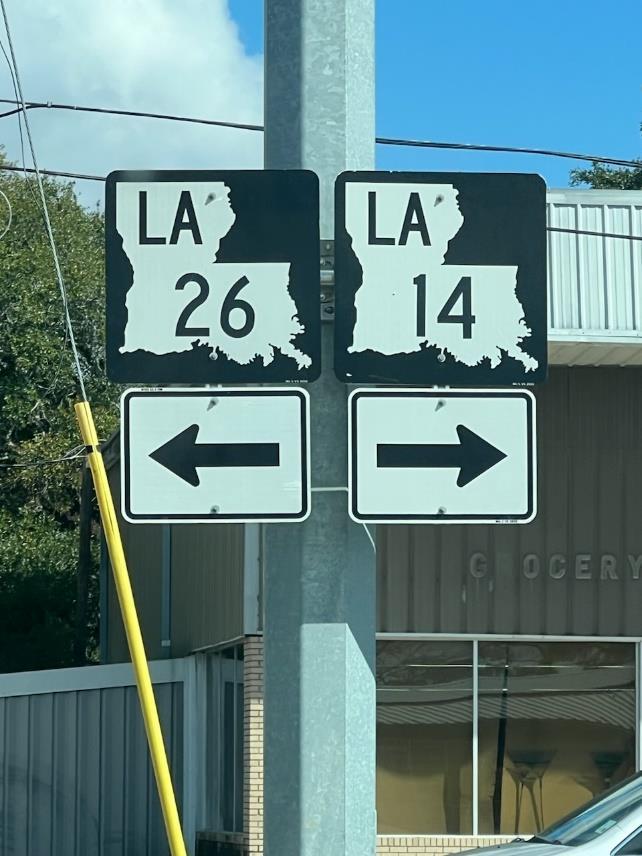
(The Epiphany: Which way to go? My heart took the lead.)
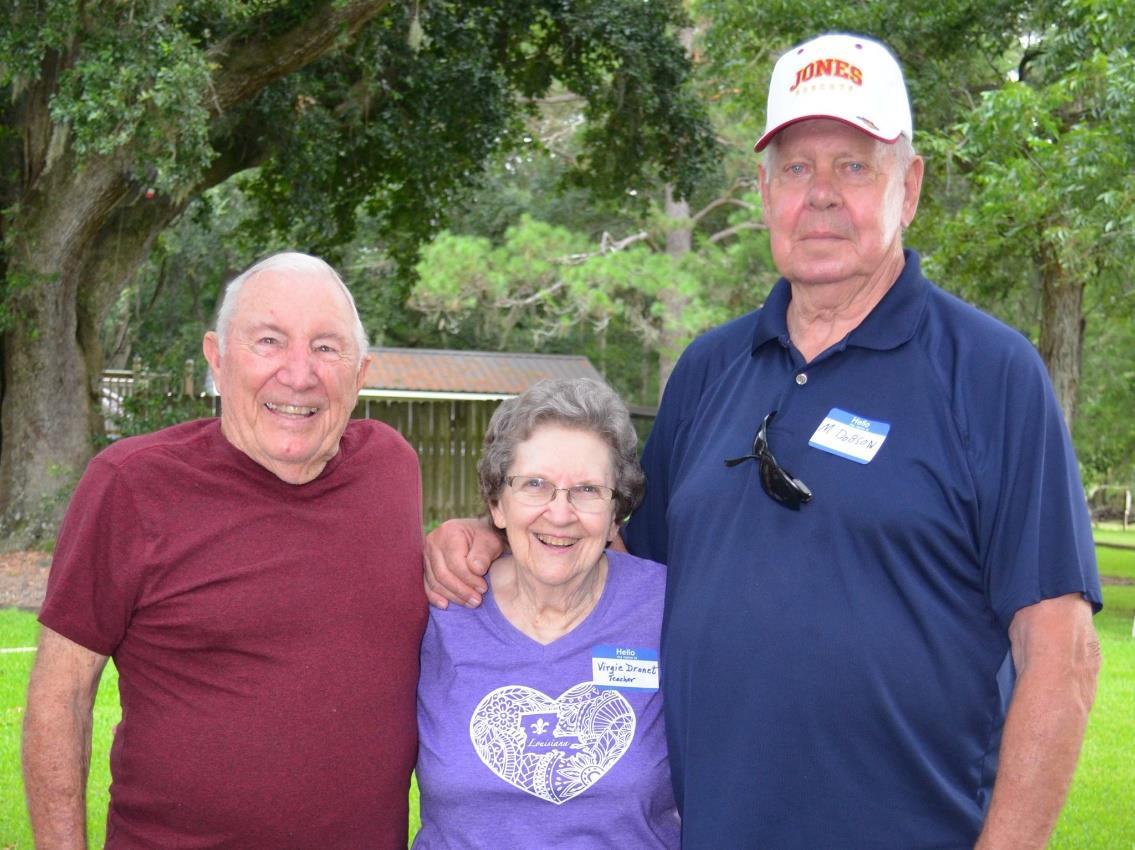
(Leto Comeaux, Virgie Dronet, and Malon Dobson would prove to be great mentors for me at LAHS.)
If you don't do it, it won't get done.
One of the more challenging aspects of being the only music teacher in a small, rural school was that you would have to do everything. I was not an expert in all aspects of every musical instrument and auxiliary unit within the band organization.
Band directors in big schools in larger cities commonly utilized private teachers to help develop individual performers. They also hired experts to assist in the instruction of the drumline, flag corps, and rifle corps.
The more sizeable high schools often had an assistant director or a middle school director who would help with the high school band as needed (usually during marching season).
When I arrived at Lake Arthur, I was just starting as a band director, and I had much to learn. My background was in piano, trumpet, and drum majoring. These had been at the core of my high school and collegiate training.
While I certainly had to pass methodology courses on all the band instruments, I was only genuinely proficient in trumpet. My piano background would eventually prove useful when writing arrangements of popular songs for the marching band.
Fortunately, my experience as a drum major was extensive and enabled me to quickly bring the Pride and Spirit drum majors up to a very high level.
While attending McNeese State University, I gained much knowledge about the evolving marching band scene, complete with drill design, music arrangement, and the use of auxiliary units.
McNeese's "Brother Love's Traveling Salvation Show," led by Kelly Love, sent shock waves throughout Louisiana by introducing revolutionary changes that mimicked much of what was happening with "drum and bugle corps." Mr. Love and his wife, Georgane Love, gave the audience popular musical arrangements, the big brass sound, the multitude of auxiliary units, the independent drum line, and the flashy freestyle drum major, of which I became the first in MSU's history.
Mr. Love also enticed numerous Mississippi band directors to relocate to Lake Charles and the SWLA region. They brought great expertise as Mississippi was much further along in implementing the new marching style and image.
Mr. Love was the inspirational leader behind the scenes. He encouraged the high schoolband directors to createlocal marching festivals such as the ones at LaGrange High, DeRidder High, and Sulphur High.
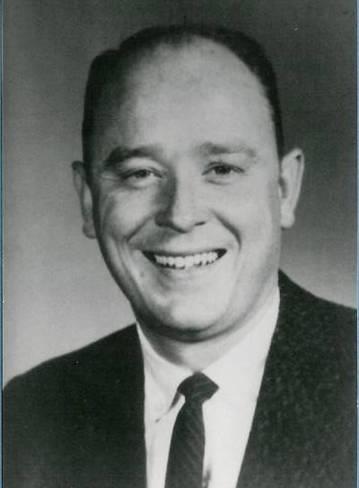
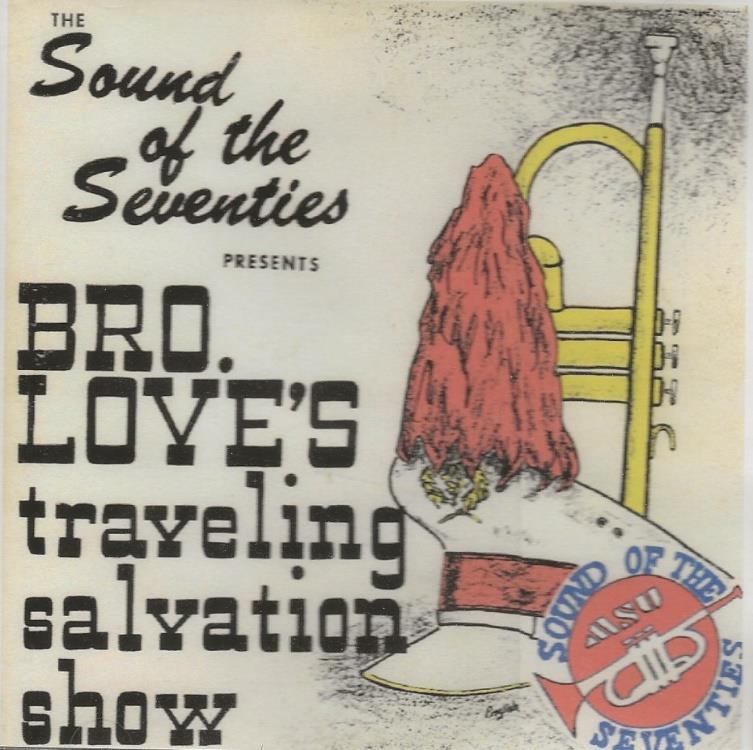
(Mr. Kelly Love was my college band director at McNeese State University, giving me a strong foundation for building a marching band program.)
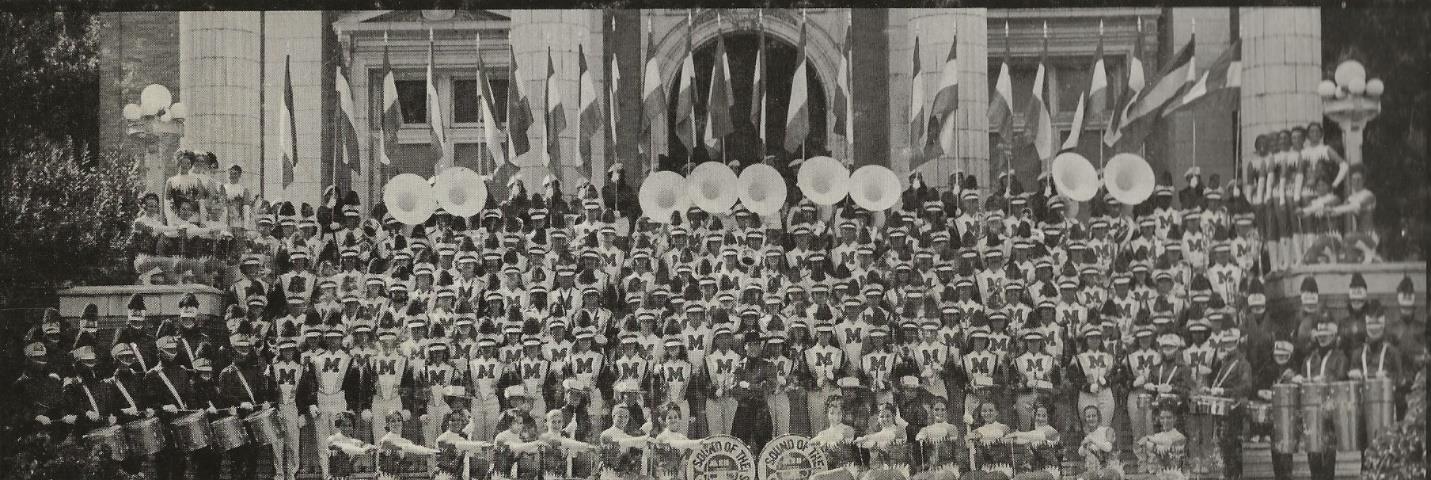 (Under Kelly Love, the McNeese State University Band revolutionized marching band concepts throughout Louisiana in the early 1970s.)
(Under Kelly Love, the McNeese State University Band revolutionized marching band concepts throughout Louisiana in the early 1970s.)
Some years ago, I had to suppress a smile when a young band director asked me about my “master plan” in creating the Pride and Spirit band back in the 70s. She had heard bits and pieces of the story from Mr. Kelley and was intrigued about how it all came together.
My answer was, “There was no master plan. Taking that band program from ‘where it was’ to ‘where I wanted it to be’ did not involve a predesigned blueprint. The project was not a ‘paint by the numbers’ process provided by a collegiate music education course.”
Those of you who are familiar with my obsessive-compulsive disorder may find it difficult to believe that I arrived in Lake Arthur three months after signing a contract without a plan. Afterall, I am a human being who NEEDS a plan every day of his life.
In my defense, I was a very busy soldier during those three months. As adjutant of the largest battalion in the U. S. Army, there was not much time to sort out what I would do when I got to LAHS.
I spent my final months providing logistical support for the XVIII Airborne Corps, smack dab in the middle of Operation Brave Shield. This operation evolved into being the most complex U. S. military field exercise of the 1970s. There wasn’t even time for sleep, much less plan for my next job.
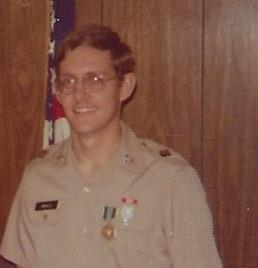
(Adjutant of the 530th Battalion in the XVIII Airborne Corps.)
My final day on active duty at Ft. Bragg, North Carolina, was July 29, 1974. I drove my family to Louisiana in two days, and we unpacked the car at my parents’ home in the middle of the night.
When the sun came up the following day (August 1, 1974), I was parked behind the band room atLAHS,unsureof exactlywhat to do first. While Idid not havea master plan, I had a vision of what I wanted the band to become, a burning passion to make it happen, and a simple formula for success that grew from my military experience.
Here is the formula that got me through the first day and all the remaining days of that five-year experience.
“Vision is knowing where to go. Wisdom is knowing how to get there. Skill is having the ability to do it. Virtue is doing it.”
There you go. It is not magic or a secret. Fall short in any of those areas, and you will likely fall short in achieving your goals.
From the first minute on the job, I was solid on the “vision” and “virtue.” The “wisdom” and “skill” were where I needed to improve But I grew along with the band every single day. Together, we exceeded all school and community expectations.
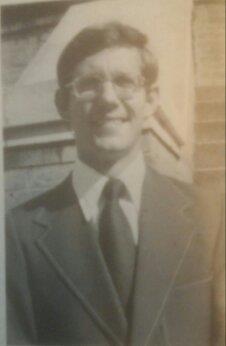
(My first photo at the old LAHS in downtown Lake Arthur.)
On my first day at LAHS, I made an important decision. Knowing there was nothing I could do to recruit students, as the school opening was a few weeks away, I immediately decided to do what I could about the teaching environment.
The LAHS band room had seen better days. While it had a charm in prior years, the entire facility badly needed cleaning and organizing. The old uniforms were mildewed, and most of the music instrument inventory was in disrepair. The music library was in disarray with few methods books suitable for starting a diverse group of beginning band students.
So, on my first day, I gathered everything lying around that did not belong in a band room and placed it in a massive pile in the center. Then, I crossed the street to Adam's Grocery Store and bought cleaning supplies.
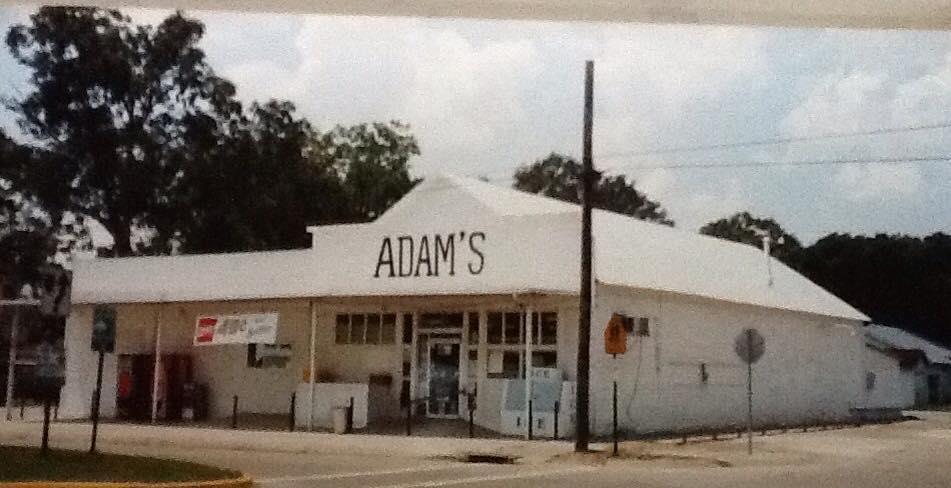
(All the supplies for the cleanup of the band room were purchased at Adam’s Grocery Store.)
The next day, utilizing my Dad's pickup truck, I made multiple trips to the parish dump site with all the useless trash and materials in the band room. No, I did not ask permission. I just did it. And no one said a word about it.
For the following 72 hours, it was all about dusting, scrubbing, and painting. At no time did I have a discussion with the custodial staff or school administration about all of this. I just proceeded to use my own money, resources, and muscle. I wanted people to witness my determination and commitment.
There was no air conditioning to make the temperature more pleasant during those August days. There was a wall of windows on the north side of the building, which I was able to open after cleaning and oiling. I also borrowed a box fan for the doorway to supplement the ceiling fans with circulation. The smell of bleach and cleaning fluid was initially overpowering.
By the end of the week, I had convinced the “powers that be” to let me transport the mildeweduniformstoawarehouse.Thefollowingweek,Ifocused on theinstrument inventory.
I washed and patched cases, then cleaned and checked each horn. A few were in playing condition. Many were not. They all had quite a bit of age and most had not been touched in quite some time.
So, valves and slides on brass instruments were stuck in place. Cork connections on woodwind instruments were dried and cracked. Drumheads were split or worn out. Mouth pieces were missing, chipped, or damaged beyond repair.
One of my many shortcomings is that I am not mechanically gifted. But I did everything I could to whip as many instruments into playing condition as possible in the short time I had before the start of school.
I also loaded some instruments beyond my limited capacity to fix into my car and brought them to the Swicegood Music Repair Shop for evaluation.
Despite Mr. Kelley’s initial reservations about my being able to resurrect the band program in Lake Arthur, he was a businessman, and this was a business opportunity. So, we negotiated with the meager funds available in the Band Booster account.
Mr. Kelley began by asking a logical and straightforward question. “Have you recruited any beginning band students to play these instruments?” He already knew the answer was “No.” He was just sending the message that these repairs would be a waste of money unless students were willing to join the band.
I gave him the old “Which came first, the chicken or the egg” cliché. With a slight grin, he acknowledged my reasoning.
My view was, “I can’t recruit students if I have nothing to offer them. I can share with them a vision and a clean facility. However, for many of these students, I will have to be able to provide a school-owned instrument to entice them to join. Only a limited number of parents will have the financial means to purchase instruments, regardless of how effective I might be at recruiting.”
He patted me on the back and said, "You just keep working at it, son. We’ll figure out the financial end of this and have enough horns ready to play for students willing to join. We won’t be able to put them in perfect condition with the money in your current budget, but we’ll ensure every horn’s playing condition is adequate for starting a student.”
I was slowly winning Mr. Kelley over. Now came the bigger challenge. I had to win over students and parents who knew absolutely nothing about me or my vision for the LAHS Tiger Band.
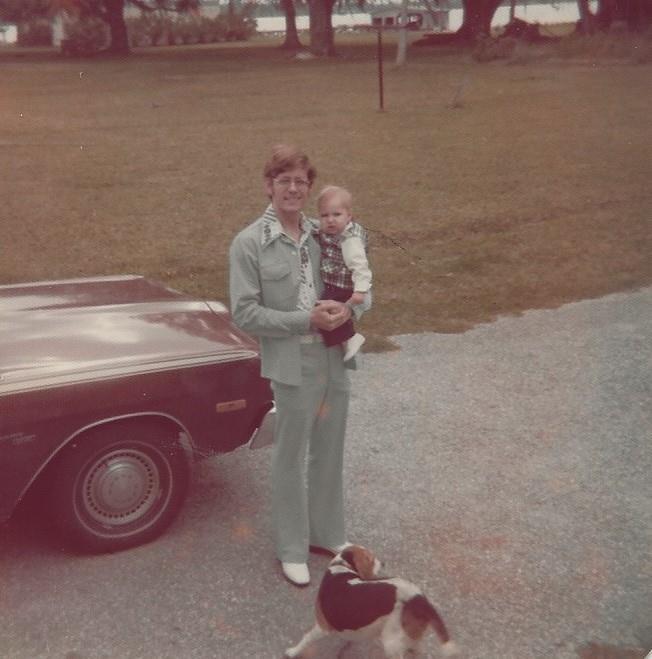
(I was preparing to leave for Sunday mass during my first year at LAHS. Pictured are my first son, Paul, the family dog, Toby, and my Dodge Dart.)
, Retain, and Refine.
Upon arriving in Lake Arthur, I was surprised by the change of command. Mr. Fitzgerald had been promoted to a Central Office position with the Jeff Davis School System, and Malon Dobson would be the Principal.
Despite the change, my teaching schedule would be the same as Mr. Fitz had described when he first interviewed me. I would have one high school band class and one general music course (vocal or appreciation), and I would do music instruction for middle school teachers in their classrooms, giving them one extra break each school week.
During the weeks before the opening of school, as I was cleaning and organizing the band room, a record player was turned up to max volume and played albums of my favorite "horn bands" like "Chicago," “Blood, Sweat, and Tears," and "Chase."
Students and faculty members walking across the campus for various pre-school reasons were drawn by the blaring music to the band room door to see what was happening. Some peeked in and walked on by. But others came in and introduced themselves. I got some smiles and return visits from students.
I did not ask any of these visitors to join the band. But I told them I would be recruiting beginning the first day of school and wouldn't stop until the band room was filled with new members. While some seemed interested, others likely thought I was delusional.
The class roster for the band course had seven students when I arrived, but it grew to thirteen students by the first day of school. Some were veterans who knew how to play their assigned instrument. A few were just “horn holders” looking for a place to be. A handful were reasonably adept at reading music.
One student in the eighth grade (Renee Johnson) had previously received instruction on flute and was anxious to be a part of the band program but could not enroll in the high school band class because of her grade level.
The high school general music roster had over thirty students. Once school began, I quickly discovered that most of them had little interest in learning about music and expected the time in the course to be a glorified study hall for which they received high school credit.
Their numbers dwindled gradually when they discovered I intended to teach them music and test them on what I taught. A few of them, who were genuinely interested in music, had their schedules changed to be in the band class.
I beganbuilding theprogramthrough relentless recruiting duringthefirst few school days. If my vision were to be fulfilled, I would need SPECTACULAR results.
Working with the administration and faculty, I visited every homeroom at every grade level during the first few weeks of school, making it clear that I was open to anyone at any grade level to join the band.
I recruited during the general music visits to teacher classrooms, at cafeteria tables during lunch, in club meetings, and with mimeographed flyers for parents. I had a close friend from college design an emblem to put on a shirt I wore. The heart of the message in the design was "Pride and Spirit."
And yes, I inquired of teachers who were the best and brightest students on campus. But I also asked about the shy students who lacked social connections. That initiated one-on-one conversations with many individual students.
I quickly discovered the girls' basketball program was a highly respected organization filled with student leaders and role models, which led to a long, productive recruiting discussion with Coach Leto Comeaux. I met with those parents who had been a part of the Band Boosters Club and preached my vision.
The mantra I constantly repeated in my mind was "recruit, retain, and refine." I had to recruit in bulk, retain the students throughout the year, and refine them into a musical organization that the students, parents, school, and community could embrace.
Big numbers, loyalty to the program, and a public demonstration of our musical progress had to be accomplished in one year. The vision would have disintegrated if I had failed in any of these areas.
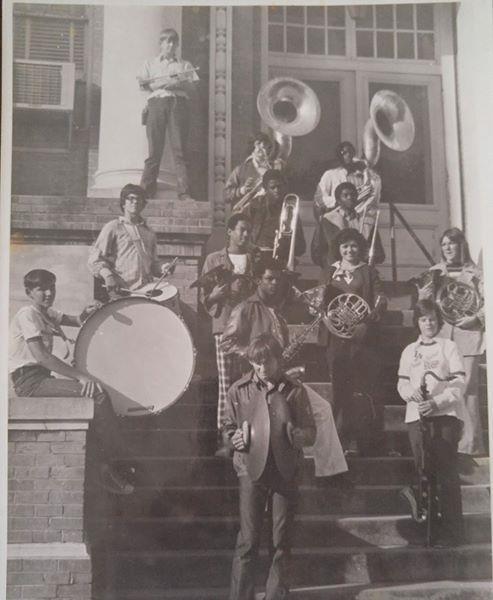
(Seven names were on the roster for my only band class when I arrived on August 1,1974.By thefirstweekofschool,therewerethirteenstudents enrolled. This photo includes Monica Bonin, Ken Lyons, Dennis McZeal, Gordon Daniels, Mike Dubone, Preston Gary, Michael Monceaux, Rip Green, Kevin Jeansonne, Rhetta Smith, and Edwina Wilks.)
Talk the Talk. Walk the Walk.
Well, we had people engaged verbally, for starters. Students were talking to other students and their parents. Parents were talking amongst themselves and to school officials.
There was even a buzz on the faculty. One of the critical factors in our early emergence was that adults on the campus were positive and supportive. Some were actively encouraging students. Most importantly, no one opposed the vision I preached.
I never took that for granted. In most schools, you can find "naysayers" who seem to see a problem with any change in the status quo. But LAHS proved to be the exception to the rule. A few may have found what I was attempting to be rather farfetched. Who could blame them?
But talking the talk would not get us where we needed to be. We had to quickly transition into walking the walk, or the generated energy would soon fizzle.
There were two significant steps to turn the corner from "what might be" into "what needed to be." First, I had to get musical instruments into the hands of many students, and then I had to find the minutes within the day to teach them.
With the limited supply of school-owned instruments, such as French horns, baritones, sousaphones, bass clarinets, and percussion, I focused on promising these instruments to studentswithexceptionalpotential orwhosefamilies werefinancially limited in ability to rent or purchase an instrument.
I set up a "horn display" in our band room with Mr. Orville Kelley and Swicegood Music Company for other students and their parents. The company would bring a sampling of the less expensive instruments, such as flutes, clarinets, saxophones, trumpets, and trombones.
I would test an instrument's suitability to the student's preferred choice in advance but would also do this with the parents present at the display. At this stage, the parents could sign a rental-purchase agreement, where, for a small fee, the student
would have the instrument for a month and then continue to make payments if the student maintained sufficient progress and interest.
Mr. Kelley had great success with this process at schools with established band programs. Bringing the director, potential band students, parents, and music store together on the school campus was a good formula for all
However, Mr. Kelley had doubts about making the trip to LAHS. As explained earlier in this narrative, he had virtually no success getting even a few horns sold to Lake Arthur residents in previous years.
Initially, he planned to bring only a dozen instruments to Lake Arthur. (Mostly to appease me.) But, at the last minute, he changed his mind and packed his large vehicle with almost five dozen horns. He reasoned that he was doing a big horn display at W. W. Lewis Middle School in Sulphur the following night, so he might as well get his loading done in advance.
The LAHS display began at 5 p.m. By 8 p.m., Mr. Kelley had a rental-purchase agreement signed by Lake Arthur's parents for all but one of the instruments he brought.
As he put the only horn remaining into his vehicle, Alton O'Blanc drove up and asked if any horns were left as he wanted one for his son Brian. By the dome light in the car, the contract was signed on the last of the horns. Mr. Kelley came to Lake Arthur with almost sixty instruments. He left with none. Mr. Kelley repeated the story of what happened that evening countless times to countless band directors for the remainder of his life. He called it the "Miracle on the Lake."
Now we had a really good problem to solve. Where would we find the daily minutes to teach all these students? Everyone already had full schedules to follow. We were not going to disrupt the entire school's master schedule overnight based on the hope that I would be able to retain the students and sustain the momentum we had created.
The answer could only be found by discovering when the students and I would be on campus but not in one of our regularly scheduled classes. Two of the obvious
times were before and after the regular school day. So, much of the teaching took place early and late in the day. The other time we found was in the middle of the day when the middle school students had a reasonably long lunch-recess break.
But would the students give up these precious free moments in the day to come to the band room for instruction? They did. They did so consistently.
Other students then decided they would rather be with their friends in the band room than be on the playground without their friends. So, we added more members.
And yes, we purchased some additional mouthpieces and shared school-owned instruments. Additional parents visited Swicegood Music in Lake Charles on weekends to sign rental-purchase agreements. We kept growing.
Eventually, the teachers began releasing the band students a few minutes before the other students for lunch, so the band students were first in line within the cafeteria and had more time to be in the band room. Some students brought lunch to school and ate it in the band room before rehearsals.
Were wegetting the same numberof minutes of instruction that students in "normal" band programs were getting? No. Not even close. But it was a start.
Later in the year, as we prepared to perform and compete as a band, the administration and faculty found ways to allow us a few full rehearsals during the last period of the day. But most of our combined rehearsals happened before or after school hours.
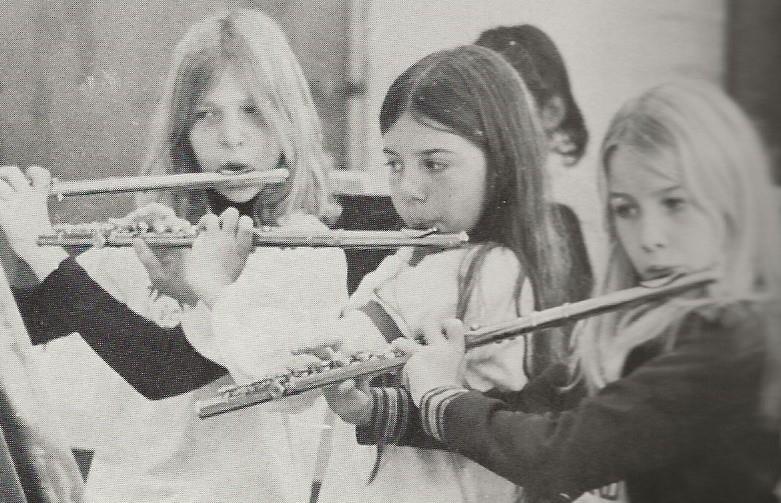
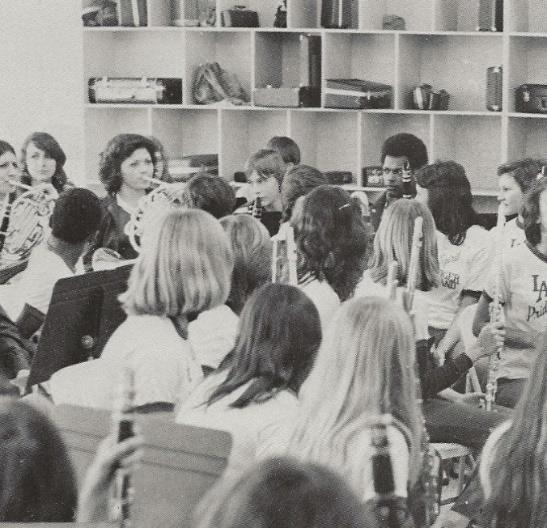
(Our first full rehearsal was during the 1974-75 school year. The flute picture included Linda Meyer, Marcia Miller, and Penny Cantrelle.)
To march or not to march? (Part One)
The recruitment at the start of the 1974-75 school year had been a spectacular success. We lost a few members in the following months but gained more than we lost. Some of those students gained became star performers as the band developed. Every month, we were bigger and better than before.
Building a marching band was embedded in my vision for the program. I knew it would be the key to gaining community support and creating an image of the Pride and Spirit band throughout the region because the marching group would get more exposure to the public in parades and ballgames.
From my own experience as a student, I also understood that marching band was essential to building discipline, competitiveness, and teamwork.
Yet I made it clear we would focus on the fundamentals of reading and performing music with the concert band approach during our first year. I preached this to students, parents, and the school administration.
I promised our Principal, Mr. Malon Dobson, that a small ensemble of performers wouldplaythenationalanthemandthefightsong at football games.But therewould not be any halftime shows or parades on our agenda.
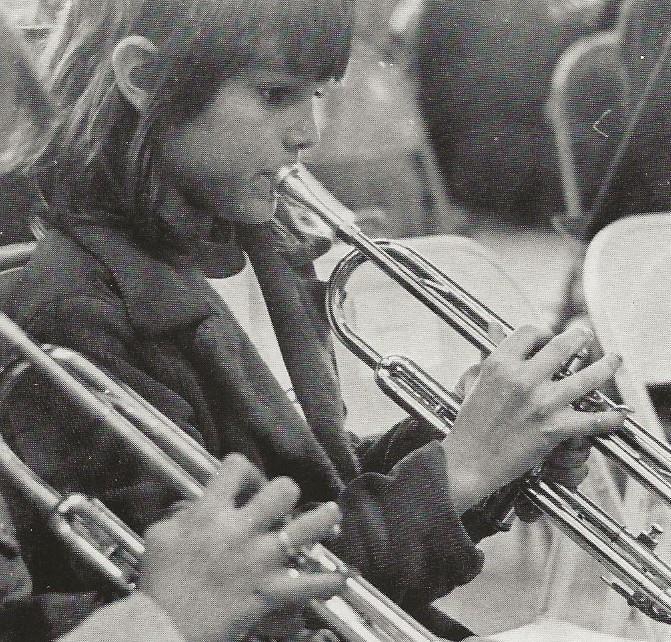
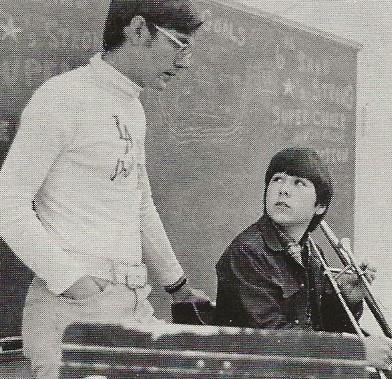
(Susan Broussard and Ken Guidry were with me from the beginning to the end of my tenure.)
Fortunately, we caught the attention of the local newspaper, the Lake Arthur Revue. At one of the first full rehearsals held during the school day, when the administration let me bring all the band students from all grade levels together, we also invited the editor of the Revue. Most students wore their new "Pride and Spirit" shirts.
Pictures were taken, and interviews were done. The resulting story was titled "The Cinderella Band." It was a significant public relations moment for us as it was the first time the media had communicated what was happening to the community.
Suddenly, we were headlining news to Lake Arthur citizens. Because we had no visibility as a marching band, much of the city's population was unaware a band program was blossoming in their hometown. A sense of quiet pride, hopefulness, and natural curiosity began to build.
The article got so many positive comments, and the issue got so many sales that we quickly became a regular subject for the local newspaper. Eventually, the Jennings Daily News realized a new storyline at LAHS might help sell some extra copies of their paper in Lake Arthur. Band parents and grandparents started scrapbooks.
At some point, though, we would have to give a public performance to prove that the pictures were more than a large group of students holding musical instruments. Until the public heard us, we were just an image of a band rather than a real band
Instead of using a “spring concert” as thestudents’ key motivation, I threw them into the fire of competition.
Playing a concert for the public in the LAHS gym did not have nearly the persuasive punch as telling them that our concert band would enter the District V Concert Festival for an adjudication and rating. We would be qualified to enter the State Concert Festival if we scored well.
I also told them that not every student would automatically be a part of the concert bandtakentothefestival.Theywouldallhavetocompeteforapositioninthegroup, thus doubling the competitive impact.
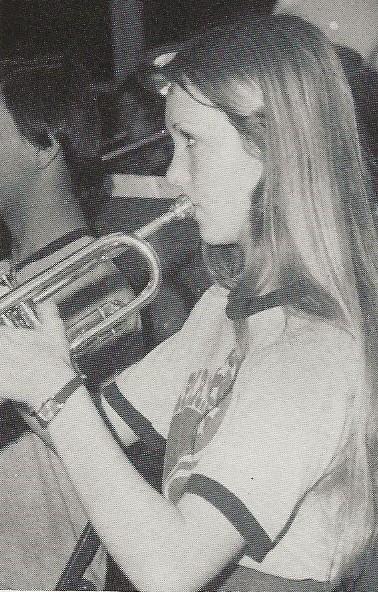

(Cheryl Brown and Dennis McZeal were key musical contributors.)
This was something the students understood and could embrace. They were already well-versed in the concept of competition through their experiences in athletics, academic fairs, literary rallies, beauty pageants, and club activities.
The Louisiana Music Educators Association was the governing body over these concert festivals at the district and state levels. LMEA’s classification rules allowed a band to enter a specialized “Class G,” provided that at least 90% of the students were in their first band year. It was just what the doctor ordered.
The directors at Jennings High School and Jennings Northside Jr. High School, Bardie Roberts and Bob Landry, promoted this idea and even volunteered to come to some of our evening rehearsals to listen and offer advice.
Mr. Roberts and Mr. Landry also insisted on picking me up in Lake Arthur once a month, taking me to the District V Band Director Association meetings in Lake Charles, and tutoring me on the rules and regulations of the organization. These two gentlemen generously put me under their wings and became essential mentors in my professional growth.
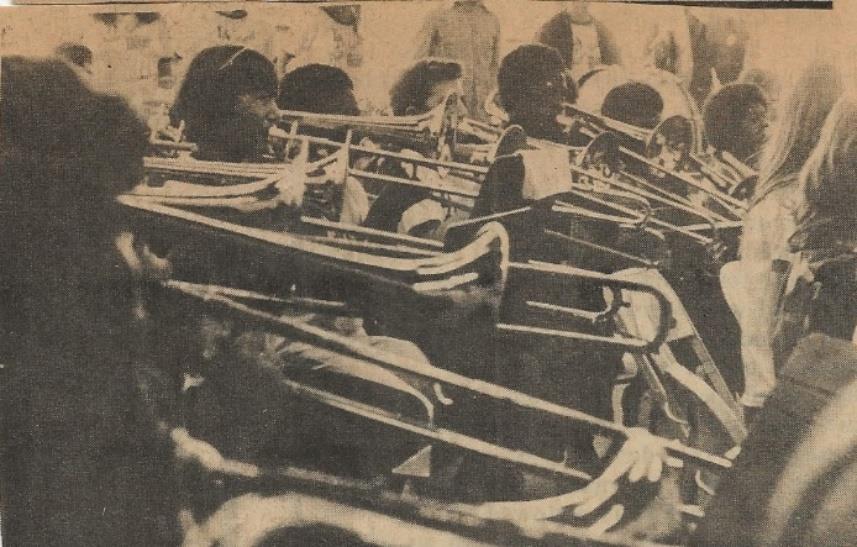
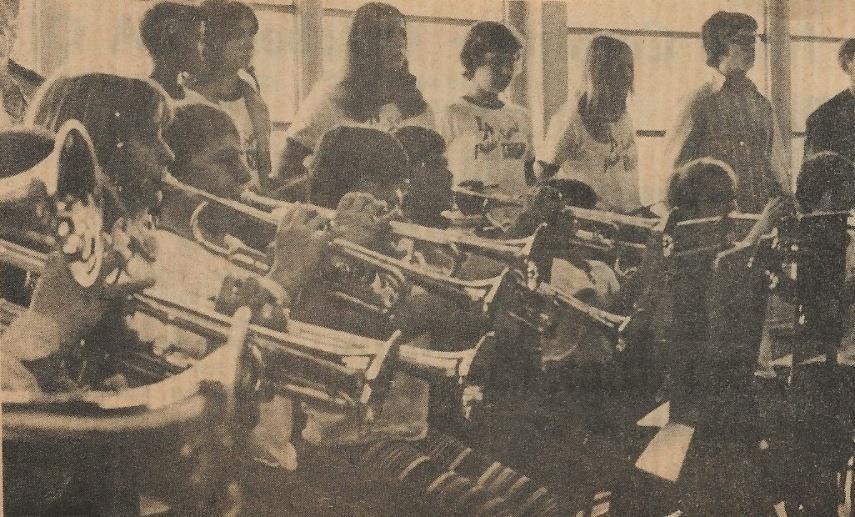
(Loading up on brass in the first full rehearsal in 1974.)
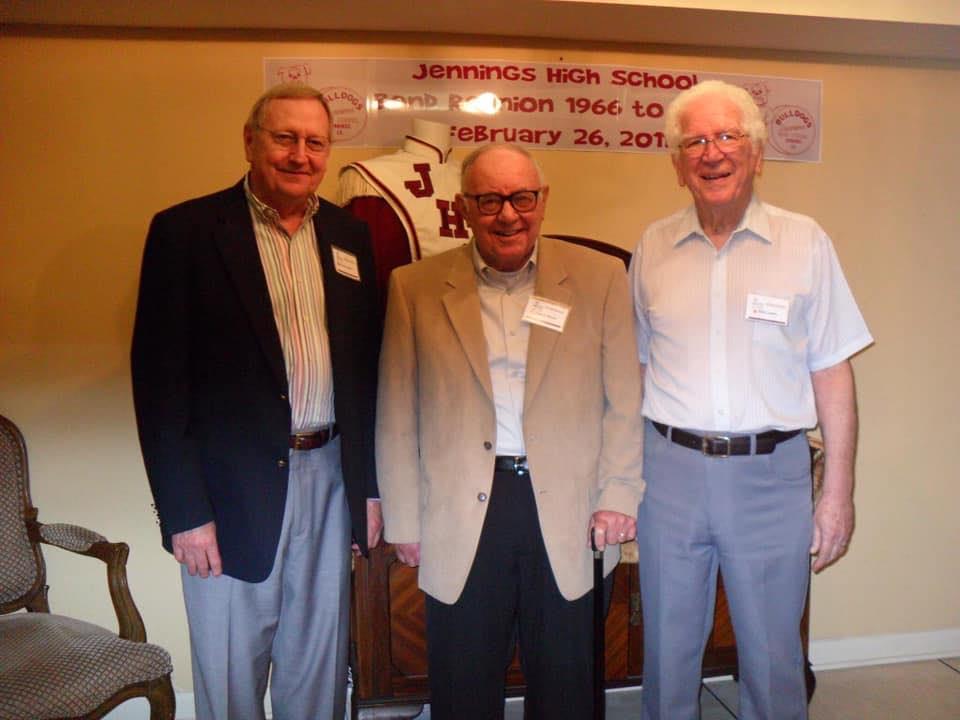
(Three Jennings band directors, Bardie Roberts, Paul Myers, and Bob Landry, tremendously influenced my development as a musician and professional. Through me, they impacted LAHS in many positive ways. Pride and Spirit members were mainly unaware of the contributions of these three men to our growth and success.)
Do the right things in the right way over a sustained period.
For decades preceding the 1974-75 school year, the LAHS Tiger Band had existed andperformedregularly.However,asmembershipdwindledinthelate60sandearly 70s, the performances became shorter and fewer.
Eventually, the group ceased their participation in organized music festivals. So, it had been a while since the band had been adjudicated or provided professional feedback on its performing and sightreading skills.
For thedebut ofthenewlyorganized Lake Arthur Tiger Band,with its fresh moniker of “Pride and Spirit,” I chose not to place the students in front of a friendly and cheering audience.
Instead,theinitialperformancewastobeundertheharshlightofprofessional judges in the Main Auditorium at McNeese State University as a part of the District V Band Festival.
As I explained to parents and students, “The spring concert planned for the close of the school year is designed to be the culmination of all we have learned this year.”
“The District Festival is about getting a thorough evaluation and suggestions for improvement from a panel of experts. We’ll take suggestions from the judges and make improvements that will be reflected in our public concert in May.”
This whole process was my “North Star” approach of doing the right things in the right way over a sustained period
Presenting a concert for parents before we went to the District Festival would have been nice. However, the enthusiastic applause from family and friends was not how I wanted the Pride and Spirit performance history to begin. I wanted that initial performance to be a challenging first step up the ladder of success.
Admittedly, this would be a daunting test for such an inexperienced group The Jeff Davis Parish band directors enthusiastically supported my decision. Still, I also
heard from regional directors who told me I might be setting the students up for disappointment.
Opponents to our entering the District Festival argued that our school had already successfully rebuilt the band’s membership. But pointing out the limited number of instructional minutes the students were receiving, why end the year with the possibility of a low rating from the judges? They advised I give the students at least one more year of training before venturing into the adjudication process.
They were wrong. This challenge was the right thing, the right way, and within a reasonable timeframe.
Thefestivalprocessinvolvedtwoparts.Thefirstwasaperformanceofthreemusical selections approved by LMEA for our classification. The next was the sightreading of a musical selection we had never seen before.
The sightreading event would be our biggest challenge as that music was written for students with at least three years of band experience.
Since LMEA did not have sightreading music for a band comprised of 90% beginners, we would be assigned to read a composition used with junior highs and small high schools. Those bands were primarily composed of students with three to seven years of training.
We wouldbe given one of five ratings for our concert performance and sightreading. The highest score was a “superior.” The next highest would be “excellent.” Below that were the ratings of “very good,” “fair,” and “poor.”
In our debut performance, we earned a “superior” for our concert performance and an“excellent”insightreading.Iwasveryproudoftheconcertscorebut morethrilled with the “excellent” rating in sightreading.
These scores at the District Festival qualified us to participate in the State Festival. It was not a requirement to proceed to state, only an opportunity.
Ournaysayerstoldmetoquitwhile wewereahead.Ofcourse,they werestillwrong. We learned from the suggestions made by the district judges and implemented as manyoftheirideasaspossiblebeforeproceedingto ourfirsttriptotheStateFestival, where we earned “excellent” ratings.
My fondest memory of the trip to state was when we returned to our band room in Lake Arthur and were treated to a ton of “homemade ice cream” prepared by the parents. To quote a familiar song, “It was a very good year.”
Thespringconcertwasheldinthegymnasiumbecausethesizeofourbandexceeded the size of the school’s small auditorium stage. It was a packed audience with standing room only. And yes, we gave our family, friends, and supporters an outstanding performance. The one they deserved for having helped us create this unique institution: “The Pride and Spirit Band.”
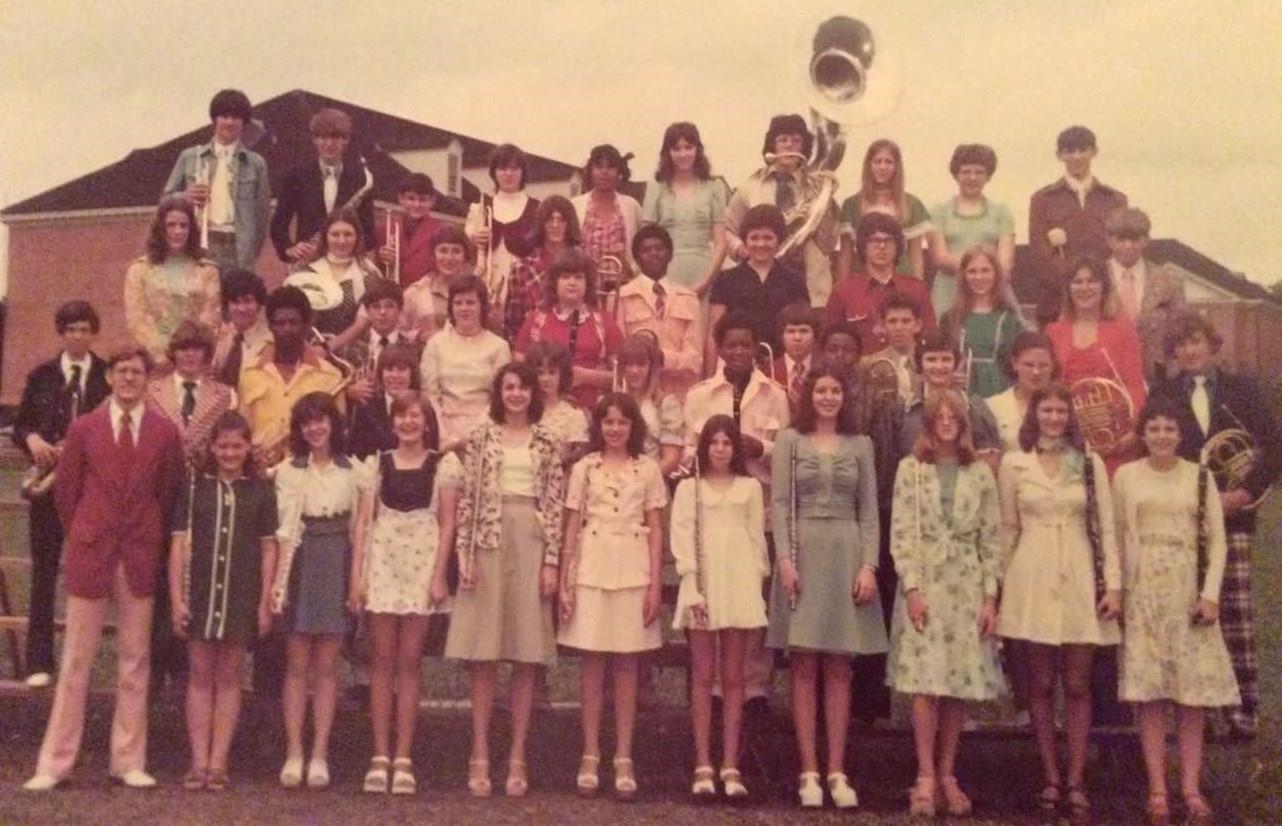
(The first concert band of the “Pride and Spirit” era. This photo was taken in Lafayette at the LMEA State Concert Band Festival in May 1975. Included in the band were students from grades sixth through twelfth. Many of these same students would be a part of the band that competed five years later in Ruston at the LMEA State Festival in May 1979.)
To march or not to march? (Part Two)
As discussed earlier, I consciously decided to focus on a concert band approach during the first year despite knowing we needed to build a marching group within our program. The ultimate success of the Pride and Spirit required that we institute a marching band.
The planning began during Year One in February of 1975. I started to design drills for a simplehalftimeshow and arranged some popular music suitable for a marching band. I also plotted how to teach marching fundamentals to students in the summer of 1975 in preparation for the 1975-76 school year.
Much more needed to be done by the band parents and me leading up to that first marching season.
First, we had to address the acquisition of uniforms. That was not an issue for the concert band as we wore our "Sunday best" for concerts, but the community would expect to see their marching band in uniform.
The small number of old, mildewed uniforms removed from the band room during the summer of 1974 would not be a part of our solution. We needed many more uniforms and a style that aligned with what progressive high schools used.
The most popular designs imitated the Drum Corps International (DCI) attire. Uniform companies sent me catalogs and the estimated pricing.
The quotes were entirely out of our budgeting capacity. Even though the parents in the Band Booster Organization had been raising money throughout Year One, we did not have that kind of cash.
Nor could we expect help from the Jeff Davis School System, as they had traditionally avoided purchasing uniforms for any school band.
What could we do?When I presented sample pictures of the uniforms in the catalogs to the ladies in the Booster Organization, they spoke up in unison. "We don't have tobuythese.Wecanmakethem.Allweneedtodoisbuythematerialsandpatterns." I silently asked myself, "Where else could this possibly happen but in Lake Arthur?"
Of course, we would still have to purchase shoes, boots, and hats. But we carefully shopped for the best bargains and made the budget work without asking individual parents to spend much money out of their pockets.
The assembly hall in the Methodist Church became a sewing factory. It remains one of the most endearing background stories in Pride and Spirit history.
The ladies used the school's red, white, and blue colors for shirts, trousers, shorts, ascots, and cummerbunds. The horn line, percussion line, rifles corps, and flag corps would each have a distinct and unique appearance. The shirts were made of material that would shine in the bright stadium lights.
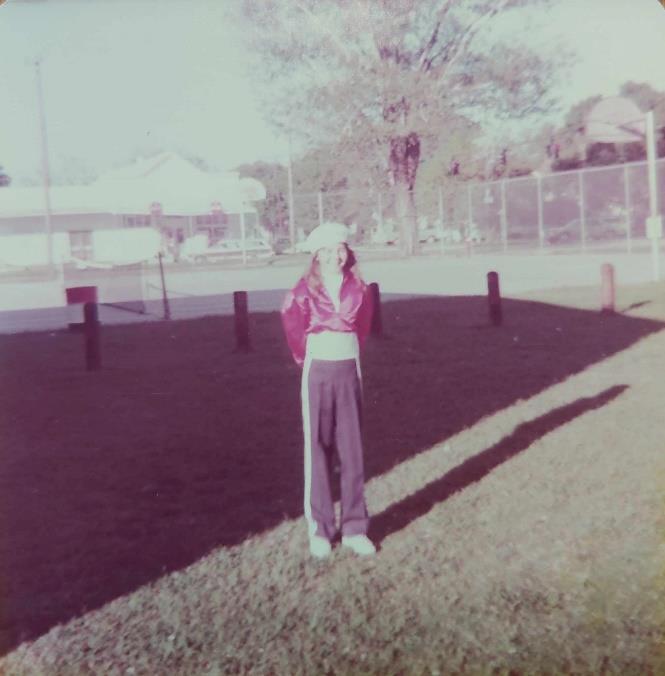 (Marcia Miller modeled our new uniform in 1975.)
(Marcia Miller modeled our new uniform in 1975.)
The overall impact was striking and set us apart from any regional band. Likewise, red, white, and blue transcended our school colors to create a patriotic image. It also fit perfectly into the bicentennial celebrations that took place in 1976.
The drum major's uniform would break from our traditional colors. My high school and collegiate drum major years gave me progressive ideas about training and presenting the Pride and Spirit drum major. The uniform colors would be silver and black. (More on that later.)
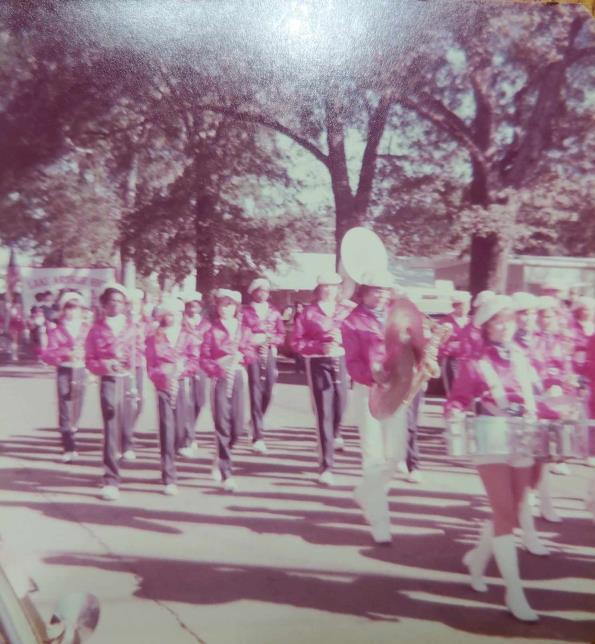
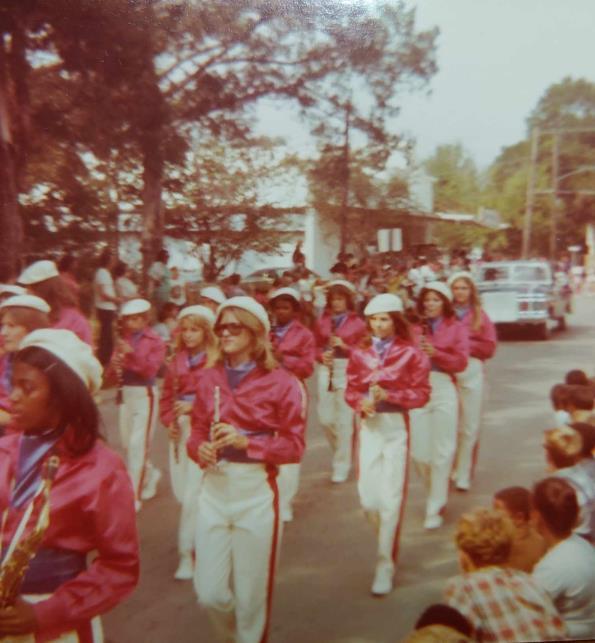
(We began with dark trousers but soon switched to white trousers with a red tuxedo-type stripe.)
The second issue we had to address in the spring of 1975 was creating a drum line for the marching band. We had a sufficient supply of instruments for concert performances. However, the drum line equipment differed significantly from anything we had in our current inventory.
We needed everything: modern marching snares, tri-toms, bass drums, mallets, straps, and cymbals. The problem once again was money. In this case, we did get some support from the local school board.
The “powers that be” genuinely wanted a marching band to appear in Lake Arthur for many civic and public relations reasons. Unlike uniforms, the school system periodically bought musical instruments for its bands.
I never discussed our band's needs with any school board member during my five years in Lake Arthur. But our Band Boosters certainly did. Politics won out in this case. We couldn't get as much as I wanted for our drum line. But we got what we needed to get started.
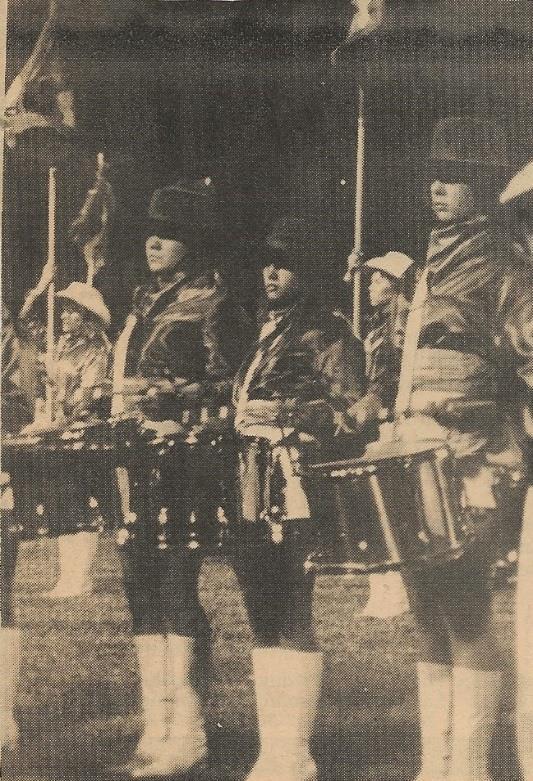
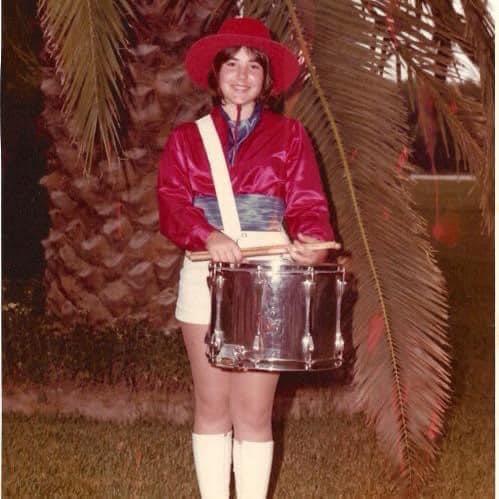
(We used straps for the snare line because it was the most economical choice. For several years, the drumline was primarily composed of females. Pictured are Cheryl St. Germain, Gale McGee, Cindi Fruge, and Darla LaComb.)
The third primary task in preparation for the institution of marching in Year Two (1975-76) was the creation of auxiliary units and the selection of leaders, including our drum major.
In the spring of 1975, I kept our focus on the concert band but began quietly recruiting some of the older girls in the band to do double duty. They would remain a vital part of the instrumental aspect of our development but would also train to be members of a flag and rifle corps.
I was looking for young ladies with the grit, drive, and athletic traits necessary to succeed in the auxiliary role. The flag, rifle, and drum major concepts were not foreign to the ladies. They had seen this in other high school and collegiate groups.
I targeted Sally Wade, a well-established student leader and basketball star, for the drum major role and identified a few others who would begin training in conducting and general leadership duties.
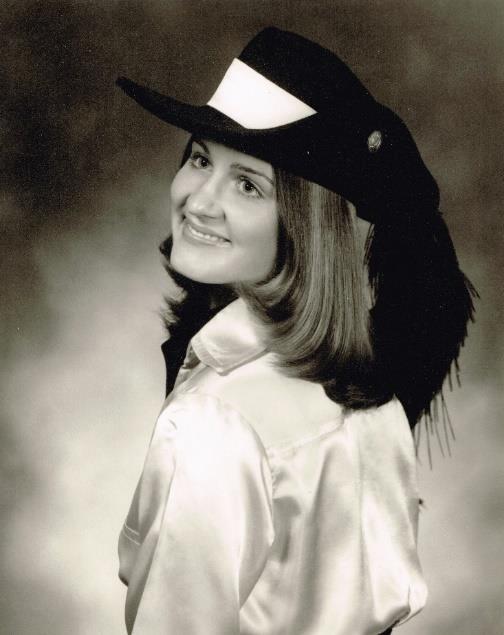
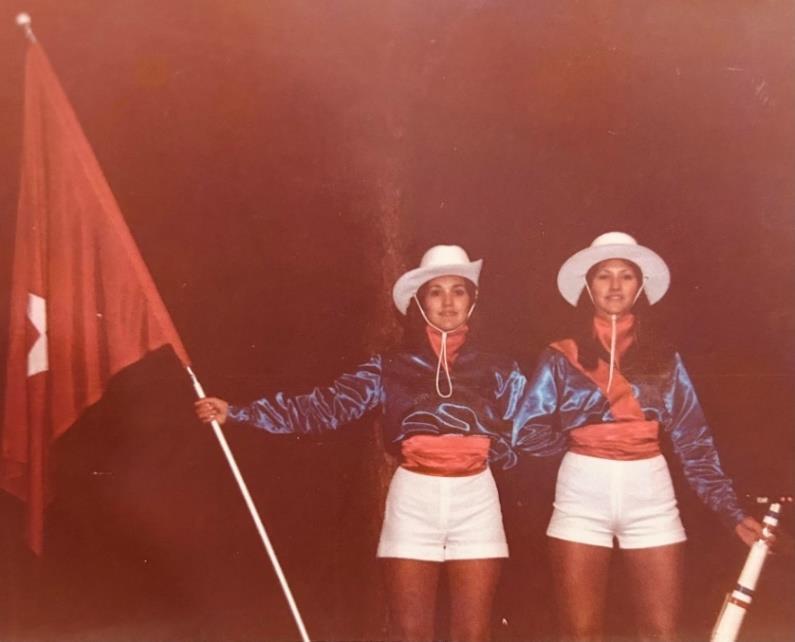
(Sally Wade in the “silver and black.” Lanor and Lola Broussard in red, white, and blue.)
What these students might not have realized at that moment was the high expectations I had for them. Our band would take a while to mature as instrumental performers, but I knew we could become competitive quickly with our flags, rifles, and field conductors. I was confident they had the "right stuff." They just needed good direction and lots of practice.
While recruiting members for the auxiliary roles, we still had to deal with how we would financially make this viable. The rifles would have to be purchased.
But with the flags, I returned to our Boosters with the idea of creating our own distinctive flag design, purchasing material, and making the flags with our excellent crew of seamstresses.
The story behind the original flag design for the Pride and Spirit Band began in Texas in 1819 a lady named Jane Long designed a flag for the early Texans attempting to separate themselves from Spanish rule. It was a solid red flag with a white star at the center (the Lone Star). I had seen this flag in a museum in the Galveston area when I was in high school, and it remained logged in my memory.
Using Jane Long's flag as the basic look, I asked our seamstresses if they could place a blue L and A within the star. (The L and A would be merged as in the Los Angeles Dodger logo.) That would give us red, white, and blue.
Theboldanddistinctive bright red flagsin frontofourparadeformationwouldleave no doubt that the Pride and Spirit Band had its own identity.
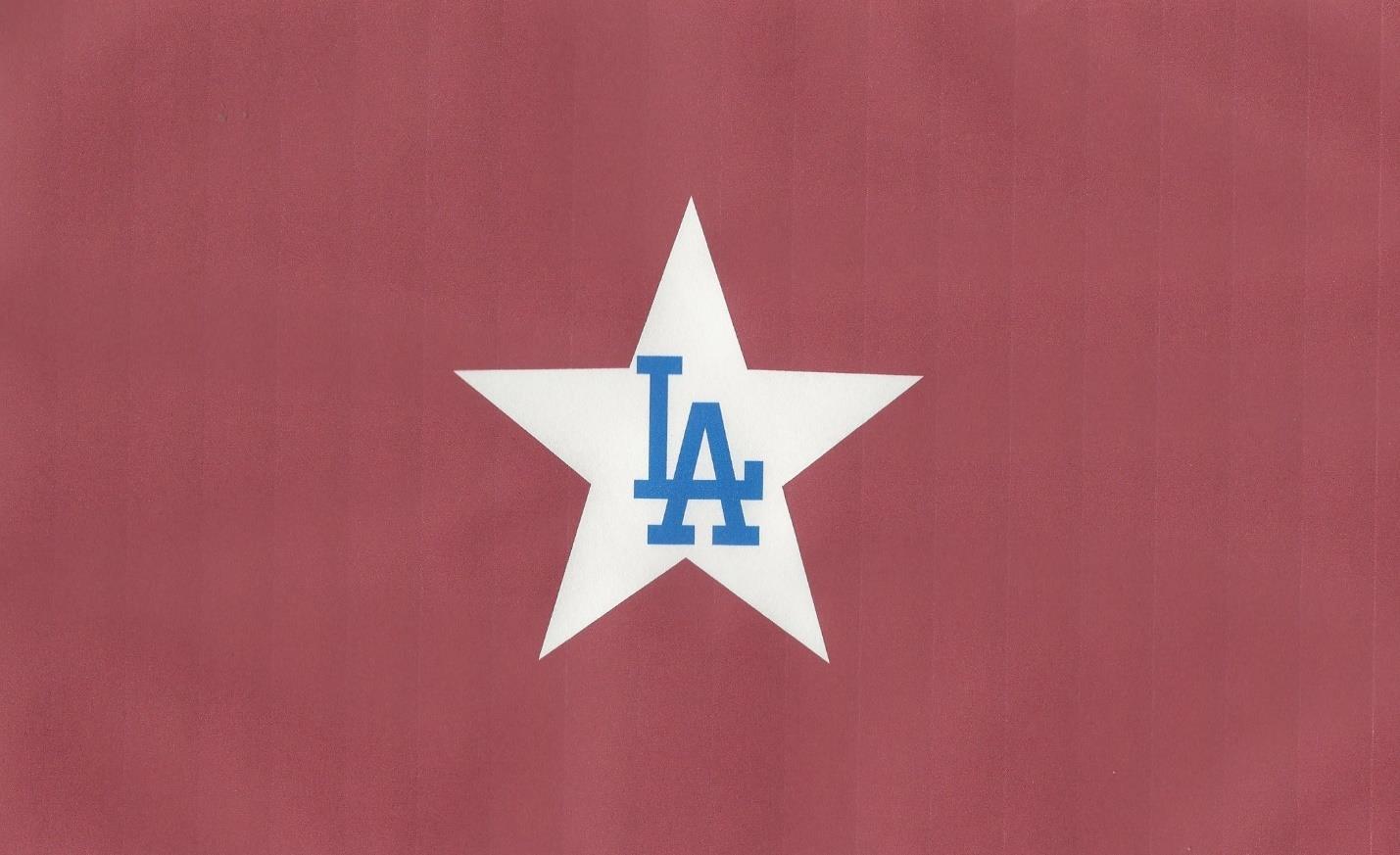
(The original flag of the “Pride and Spirit” was based on the work of Jane Long.)
ThefinalbitofpreparationIdidbeforeinitiatingthePrideandSpirit marching band was to work on a few distinctive musical arrangements. As with the unique flag and uniform designs, I wanted to create a musical identity for the band.
I was looking for songs that no other marching band would have. Also, knowing that all but a handful of our instrumentalists would be starting only their second year of musical training, I had to select music that was within their capabilities yet fun and entertaining.
The first two songs I decided on were a country-western classic and the anthem of Louisiana swamp pop music: "Your Cheating Heart" by Hank Willams and "Mathilda" by Thierry Huey, a.k.a. "Cookie" of "Cookie and his Cupcakes." (And for the purist, "Mathilda" and "Matilda" were different spellings of the same song that was produced by the same band on two different record labels.)
I produced a traditional rendition in the first half of each song. Then, I gave it "The Pride and Spirit" treatment with an up-tempo and driving beat for the second half of both arrangements.
For the first four years of the Pride and Spirit marching band's existence, these two songs were joyful crowd pleasers and gave us the same special flair that "Jolie Blon" gave to McNeese State and "Rocky Top" gave to the University of Tennessee.
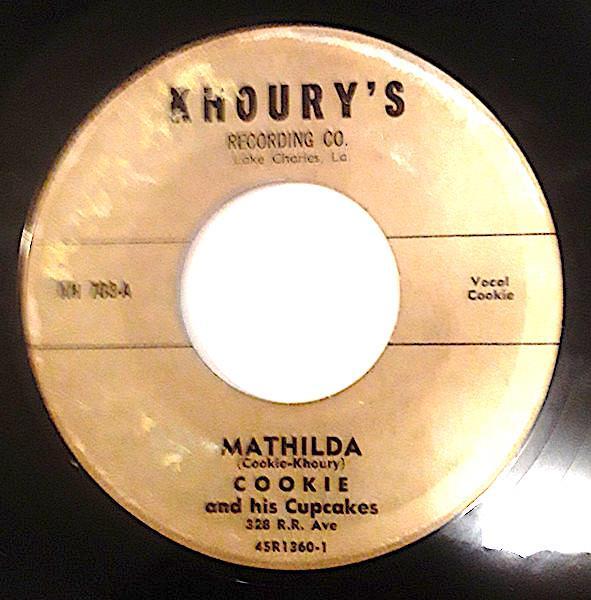
(“Mathilda,” along with “Your Cheating Heart, ” gave us a musical identity and won over the Lake Arthur audience early in the “Pride and Spirit” era.)
The faculty and student body of LAHS packed up over a half-century of memories and traditions and took them to a new modern facility located on the city's outskirts during the 1975-76 school year. The move was completed on January 5, 1976, following the Christmas break.
Since 1921, LAHS's campus had been centered around a three-story structure near downtown Lake Arthur. There had been a few additions, remodels, and updates to the site after World War II. While none of the structures from this campus remain today, the term "the old Lake Arthur High School" is still a part of the city's lore and legend.
Another landmark event in the history of Lake Arthur High School occurred during the year of the move. The Lady Tiger basketball team, led by Coach Leto Comeaux, won a State Championship.
I could proudly point to many members of the championship squad who had joined the band program. Beyond their musical and marching contributions, these ladies gave us exceptional leadership, a core of maturity, and an essential layer of confidence. Coach Comeaux also became an important mentor and sounding board for me.
This was Year Two of the Pride and Spirit culture change, and it produced the first edition of a modernized marching band concept, complete with colorful uniforms, a drum line, a flag corps, a rifle corps, a saber twirling corps captain, and an elite freestyle drum major.
The group's appearance in football halftime performances and parades through downtown Lake Arthur drew roars of approval and elevated civic pride.
To this day, I recall the initial crowd reaction as the rifles spun and the bright red flags snapped and popped along on the parade routes. The roll-off of the percussion created an electric buzz up and down the street as townspeople marveled at this unexpected sight.
There had been marching bands in LAHS's history that made the city proud. But this. This was a completely new experience.
Despite the relative youth of our instrumentalist and the simplicity of our drills on the gridiron, the auxiliary units and drum major displayed skills and precision far beyond my initial expectations. They dazzled from the very beginning.
The Year Two band was still too early in their training to produce the bold volumes of the more experienced marching bands in the region. We were to achieve that in Years Four and Five.
In Year Two, I made a trade-off decision to put many of our older and stronger brass players in the auxiliary units. But the Pride and Spirit sound was clean, clear, and churned out popular tunes backed by a driving percussion beat, while the flags and rifles captured the eyes and imaginations of audiences wherever we performed.
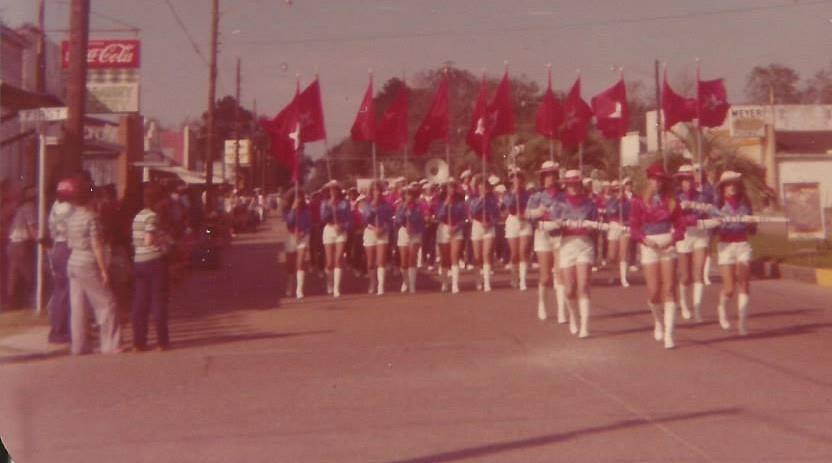
(One of the early appearances of the new “Pride and Spirit” marching band in downtown Lake Arthur.)
Thescheduling ofbandclasses duringtheschool day was much improved atthestart of Year Two. There was a high school band course and two periods for teaching band students in grades six through eight. I continued to provide general music lessons in the junior high classrooms
But with our middle school band students essential to complete the instrumentation of a performing high school band, we still had to use before and after school rehearsals to put the marching and concert bands together for full rehearsals. So, we remained at a disadvantage compared to the rehearsal schedules of most high school band programs in our region.
With excitement growingover themoveto thenew high school campus, Iwas called into a meeting with Mr. Dobson and several JDP school system representatives. The first purpose of the meeting was to confirm a rumor that had been floating around for quite some time.
The new high school campus did not have a band room. The reasoning behind the absence of a band facility varies depending on who is telling the story. Here is my version.
Ofcourse,thedecisions,budgeting,planning,andinitiating ofconstruction occurred before I took the job in Lake Arthur. More than likely, the school system officials were acting as good stewards of the money generated by the bond issue when they questioned the need for and expense of building a band room.
While it remains a matter of conjecture, I realize that when these decisions were made, it was plausible that the band program might have been eliminated before the new school construction was finished Even after my arrival, it was reasonable for officials to doubt that I could build up membership sufficiently to justify continuing the band program.
Fortunately, the second purpose of the meeting was to assure me that a new band room would be built based on what we had accomplished in Year One. But it would not be ready before the scheduled move from the old to the new campus.
I am not sure what reaction they expected from me. But I only asked one question. "What is the plan for providing a place to teach and rehearse the band before the new band room is built?”
By the conclusion of the meeting, we had agreed to continue using the current band room at the downtown campus until the new band room was built. We
would have to bus our students back and forth between the two campuses multiple times during the day
The bright side of the dilemma was that the entire student population would remain on the downtown campus through the fall semester, which simplified our task of pushing forward with the marching band as planned.
The dark side of the dilemma was that during the spring semester, we would be back in the situation of losing hours of instructional time each week riding buses. It also made gathering the full band for rehearsals after school or in the evening a new transportation challenge throughout the spring semester. It hampered our ability to prep for the District Concert Festival in various ways. But it never dampened our Pride or Spirit. We would overcome and excel. That was who we were becoming. That is what we were learning to do
After moving to the new campus, I was brought into another meeting and asked for input on the design of the new band room. My only concern was that the floor space in the facility would be adequate for the growth of the band program. I did not want to be handicapped in that respect.
The new band facility would be a prefabricated building on a concrete slab behindthegymnasiumbecausetherewerelimitedfundsanda needto complete construction in a reasonable time. I was more concerned with size and acoustics than with aesthetic appearance. I also wanted to be sure that we would have the facility ready for the start of Year Three.
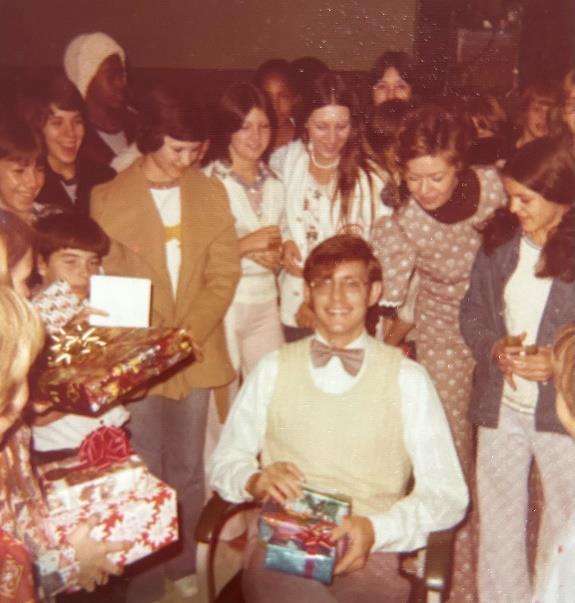
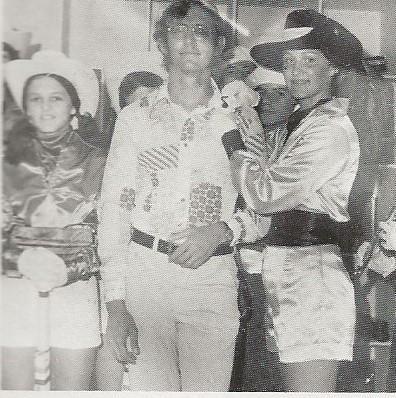
(The band always made me feel special.)
We needed to challenge ourselves.
We had a very gratifying fall semester with our first Pride and Spirit-era marching band. The move to the new school created a positive vibe, and the prospects for the Lady Tiger basketball team continued to generate an even greater sense of anticipation as the wins kept coming.
The band settled into an adjusted pattern of daily bus rides and abbreviated instructional time. Despite the circumstances, we still rode the adrenaline wave of our initial marching season.
During the fall semester, I sought songs to perform at the upcoming spring District Concert Festival. As we were no longer qualified for Class G, I had to pick at least one of the selections from the Class B high school list required by the Louisiana Music Educators Association.
Class B included high schools with overall student enrollment similar to ours. These bands came from places like Kinder, Welsh, Iota, Oberlin, Vinton, and DeQuincy. The Class B literature list had a variety of selections from which to choose. Some were easy, others moderately difficult, and a few were very challenging.
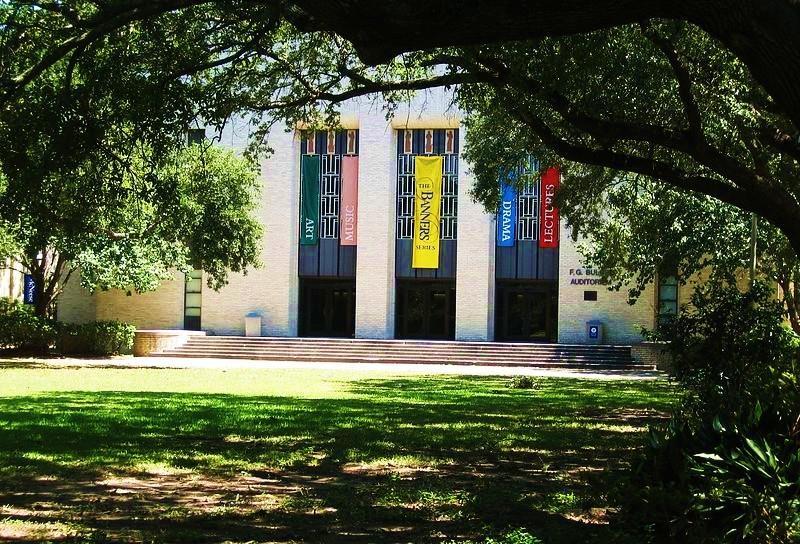
The unspoken obstacle for us at the District Festival was that the other bands would be comprised almost entirely of students with three to seven years of training and experience. While a few talented eighth graders might be mixed into the other bands, they essentially represented grades nine through twelve.
We were almost exclusively a group with two years of training. Fortunately, we had a handful of students within the band with additional band experience, which helped with musical leadership However, our young ensemble sound was still in its development stage. We depended on many seventh and eighth graders to complete our high school band’s instrumentation.
(Interestingly, in the twenty-first century, LMEA has a process to address these anomalies for developing bands. The organization provides them with more classifications and literature options. But in the 1970s, there was no such process )
I went to my most trusted advisors and mentors, such as Orville Kelley, Bardie Roberts, and Bob Landry. They made suggestions but also told me that I had to decide what I wanted as an outcome. It boiled down to a choice between immediate gratification or long-range goals.
If we were looking for a good rating while participating in a higher classification, performing the easier songs from the required list would be advantageous. I should accept that the band was primarily comprised of second-year players who were preparing under unusual rehearsal circumstances. To score well, I shouldn’t stretch them beyond a reasonable point.
On the other hand, if skill growth mattered more than the ratings, I should put challenging musical selections in front of the students and focus on developing our performance capacity over several years.
The second option appealed to me personally as it reflected my experiences as a student in the Jenning High Band during the mid-1960s. Paul Myers elevated the JHS Band from a relatively average ensemble into one of the finest in the state.
He did it by selecting literature that stretched us to the max yearly. We took a few lumps along the way because of that. But by my senior year, we had an elite band.
For Mr. Myers, it was never about the scores. He knew the high ratings would come once he had developed the group with constant challenges.
I went with the second option and told myself I would do this the right way, even if it would likely take us longer to start bringing home trophies and awards regularly. Both Coach Moore and Coach Comeaux praised me in that regard. They also believed in playing the most demanding schedule possible while building toward championship-caliber teams.
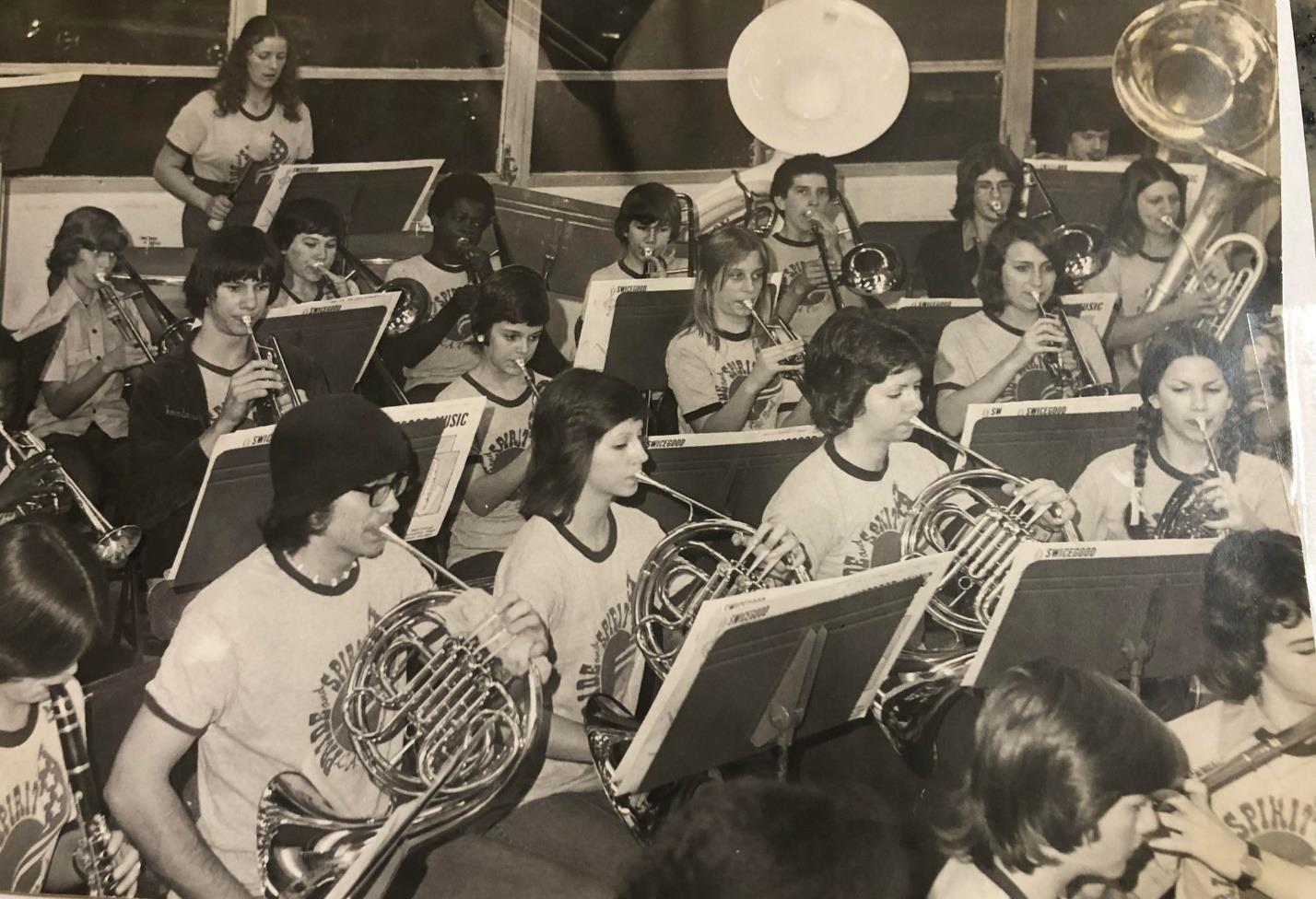
(We traveled to the old campus daily for group instruction, with the new band room still under construction. This picture was taken during a night rehearsal while preparing for theLMEADistrictFestival. RipGreen, LizDupuis,Colette Trahan, and Gina Cain are visible in the French horn section. Trumpet players centered in the picture are Richard Broussard, Susan Broussard, Tanya Marionneaux, and Darlene Trahan. All-State and LHSAA Basketball MVP Jackie Stevens is on the baritone. Trombones are (left to right) Brian Bertrand, Kenneth Guidry, Mike Dubone, Donald Kratzer, Glenn Richard, and Ronald Conner. Elmarie Boudreaux is on timpani.)
The turning point for the Pride and Spirit Era.
The first two years of the Pride and Spirit era (1974-75 and 1975-76) had been spectacular beyond all expectations. We had saved the program. We also reestablished a high standard of performance.
Ourachievements includedan unprecedentedgrowthin enrollment,asuperiorrating at the District Concert Festival, and the institution of the first Pride and Spirit marching band, complete with new uniforms, flag corps, rifle corps, drumline, saber twirling corps captain, and freestyle drum major.
All of this was done under very odd circumstances that a traditional band program would not encounter. It mainly was the application of out-of-the-box solutions to out-of-the-ordinary issues.
In Year One, we did have a band room (without air conditioning). But it was tiny compared to the size of our suddenly large performing concert band. Teaching the students to musically blend and balance while crowded elbow-to-elbow and ankleto-ankle in a hot room was somewhat challenging.
Likewise, despite band enrolment growingfrom seven to over one hundred students, less than two dozen members received instruction in a scheduled band class during the school day during Year One.
All other teaching and learning occurred at lunchtime, before and after school, and on weekends. With a hundred beginners, I was forced to juggle the time spent on drilling fundamentals with mastering literature for the District Concert Festival and the spring concert.
I simply could not prove to band parents, who were spending money on band instruments for the first time, that we were indeed a "band" with just scales and simple etudes to present to them at an end-of-the-year performance.
The parents deserved to hear complete songs and enjoyable music, along with an understanding that a panel of qualified judges determined the band's performance to be of high quality.
In YearTwo, anewschedulingdesign did have all ourband studentsinbandclasses Still, the length of each band period was dramatically diminished when the student body moved to a new campus, with the band classes being transported daily by bus to the band room at the old campus. This significantly reduced our instructional hours every week throughout the spring semester.
Likewise, for the first two years, I was teaching an additional load of general music classes,reinventingthecurriculum,writinglesson plans, and acquiring theresources to make these classes beneficial to all junior high students.
Year Three (1976-77) was the turning point in the birth of the Pride and Spirit era. We were in a new band room on the new campus for the first time. The band room had adequate floor space and acoustics for full rehearsals of our performing groups.
Every band student was in a band class for an entire period each day. I taught fewer general music classes and had an hour designated in the school day to work with auxiliary units.
Almost all our students in grades eight through twelve were now in their third year of band training. This was a much-improved situation for us,
But we were still far behind the experience curve in that around the state, other high school band students (9-12) were in their fourth, fifth, sixth, or seventh year of training. So, we were still competing "uphill" in every respect.
An important decision I made for Year Three was to continue increasing the difficulty in the music literature when participating in the District Concert Band Festival.
Instead of playing one of the more straightforward selections on the LMEA-required high school list, I chose to perform two of the more complex pieces from the list. It was over and above what my mentors advised, but I knew it was just a matter of time before it paid off.
The most difficult decision I made in Year Three was to pass on participation in any local marching festivals despite the urging of the festival sponsors With parades and half-time performances, the Pride and Spirit marching band slowly gained a solid reputation, which was spread conversationally by regional directors. However, I remained focused on building the young band's quality through the concert ensemble approach.
I did throw more complex drills on the field for our fans, but I had limited time to develop marching fundamentals fully. We also needed more marching percussion equipment to compete with other drum lines.
On the other hand, I knew the flags, rifles, corps captain, and drum major were already at a highly competitive level. They would have scored well at any marching festival in Year Three had we entered. They had proven their mettle in numerous competitions against top units at the University of Southern Mississippi camps.
But in the end, we were a team. I postponed the marching festival entry until Year Four, when I felt all components would be equally prepared to take on the challenge.
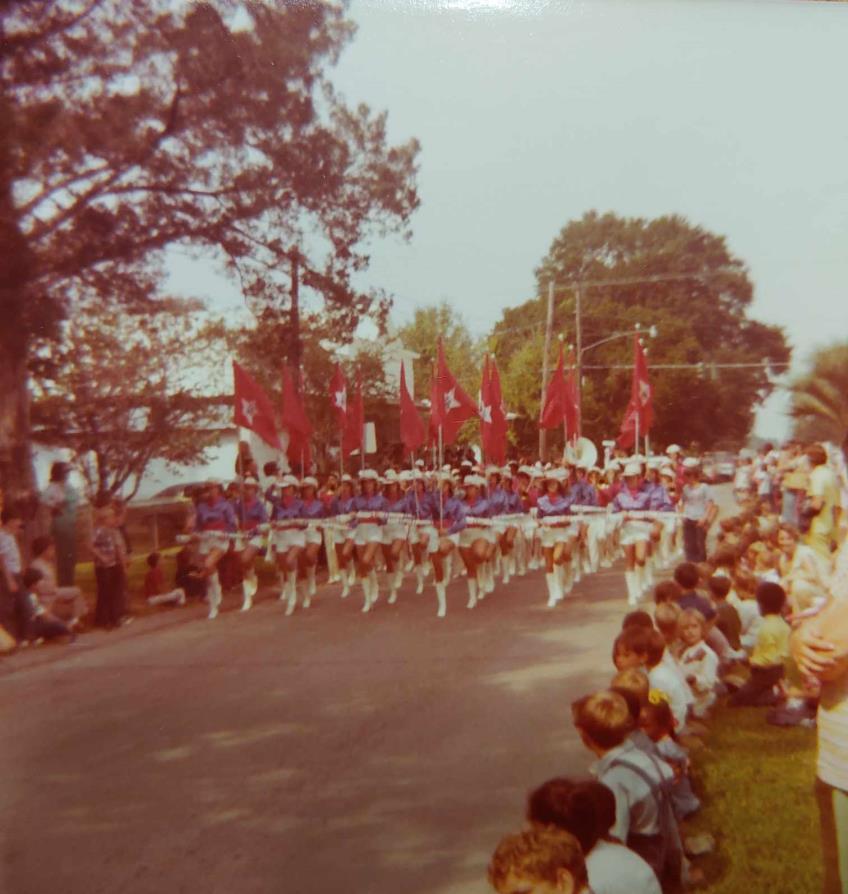 (The “Pride and Spirit” always drew a crowd on the parade route.)
(The “Pride and Spirit” always drew a crowd on the parade route.)
Another highlight in Year Three was that our fundraising capacity had greatly improved. In Year One, the Agriculture Department ran the football concessions, and they rightfully made all the profit.
In Year Two (since we needed additional money to travel with our new marching band), the Band Boosters split the concession work and profit with the FFA. In Year Three, the concession stands and profits were finally fully controlled by the Band Booster Club.
By Year Three, the Band Boosters had also made great strides in fundraising activities. Some of the more lucrative and enjoyable events were beauty pageants. Pageants were held for Miss Lake Arthur, Miss Valentine, Miss Merry Christmas, and so on.
The sets for the pageants were expertly built under the creative design of Alvin Richard. While the pageant featured young ladies of various ages throughout the city, I proudly pointed out that the Pride and Spirit females took home many coveted crowns, titles, and banners.
The Booster Club also had auctions at local nightlife establishments and set me up as a DJ during the summers to hold dances in the gym on the old downtown campus. We always seemed to have great fun making the money to keep the band program thriving.
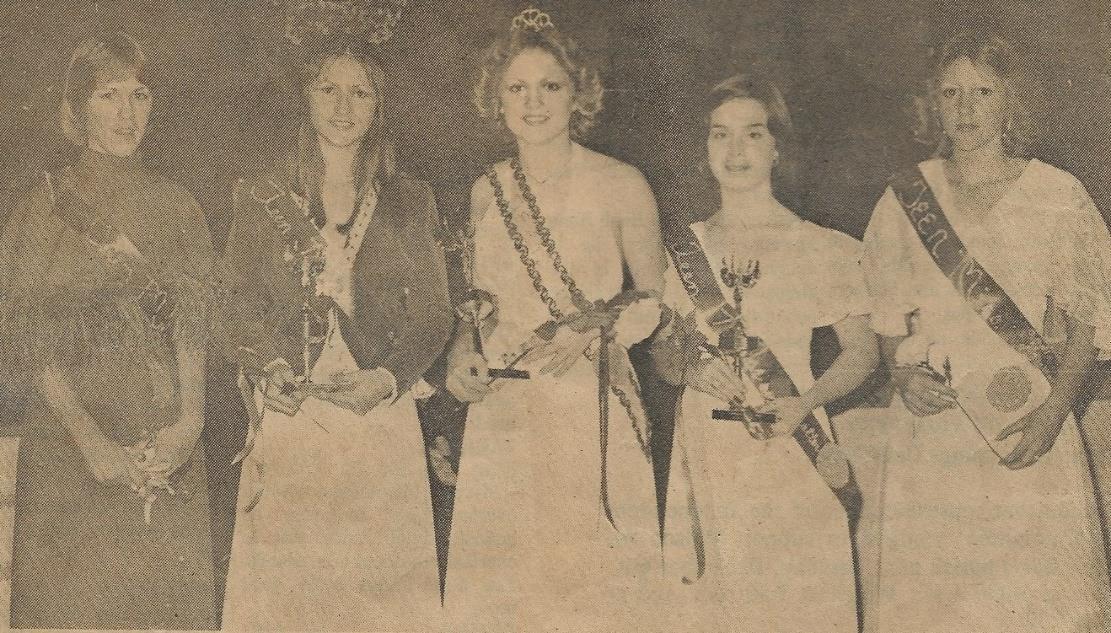
(Pride and Spirit Band members Cathy O’Blanc, Lola Broussard, and Melanie Boninwerewinners inaMerry ChristmasPageant. TheBooster-sponsoredpageants were great fundraisers for the band.)
Sticking to the long-range plan got us to the payoff.
Year Four (1977-78) began a two-year payoff stretch The hard work and deep sacrifices of the first three years, combined with grit, resilience, and determination, had led us past many milestones. Now, we were poised to attain multiple landmark achievements.
None of the Year Four accolades would have been possible without the remarkable history of student leadership from within the band program. The successes of Year Four were rooted in the foundation established by the senior classes of 1975,1976, and 1977.
During the first several years of the Pride and Spirit era, there were highlights of excellence in performance, continued growth in membership, a steady climb in the difficulty of music literature, new uniforms, out-of-state training/travel, expanded fundraising by the booster, and a new admiration for the band by both the Lake Arthur citizens and communities throughout the region.
In Year One (1974-75), an extraordinary membership expansion and commitment to excellence saved the program from elimination.
Year Two (1975-76) was the launch of the Pride and Spirit marching band, which multiplied the school's and community's support.
Year Three (1976-77) gave us a new rehearsal facility, full periods of band instruction within the school day for every member, and finally, a chance to emphasize fundamentals while continuing to increase the level of performance literature.
Year Four was different. The Pride and Spirit Band broke new ground and reimaged itself in many ways.
I decided we were ready to enter a formal competition with the marching band. While I knew our flags, rifles, corps captain, and drum major were ready for this challenge during Year Three, I felt we needed an additional marching season to
ensure that the horn line and drum line were equally prepared. In Year Four, we were.
The first indication that our time had come happened during the annual Jeff Davis Parish Fair Parade. We represented our city by marching in the events in 1975 and 1976. But in 1977, we were named the Outstanding Band in the parade. The Jennings High Band had previously won the award for many consecutive years.
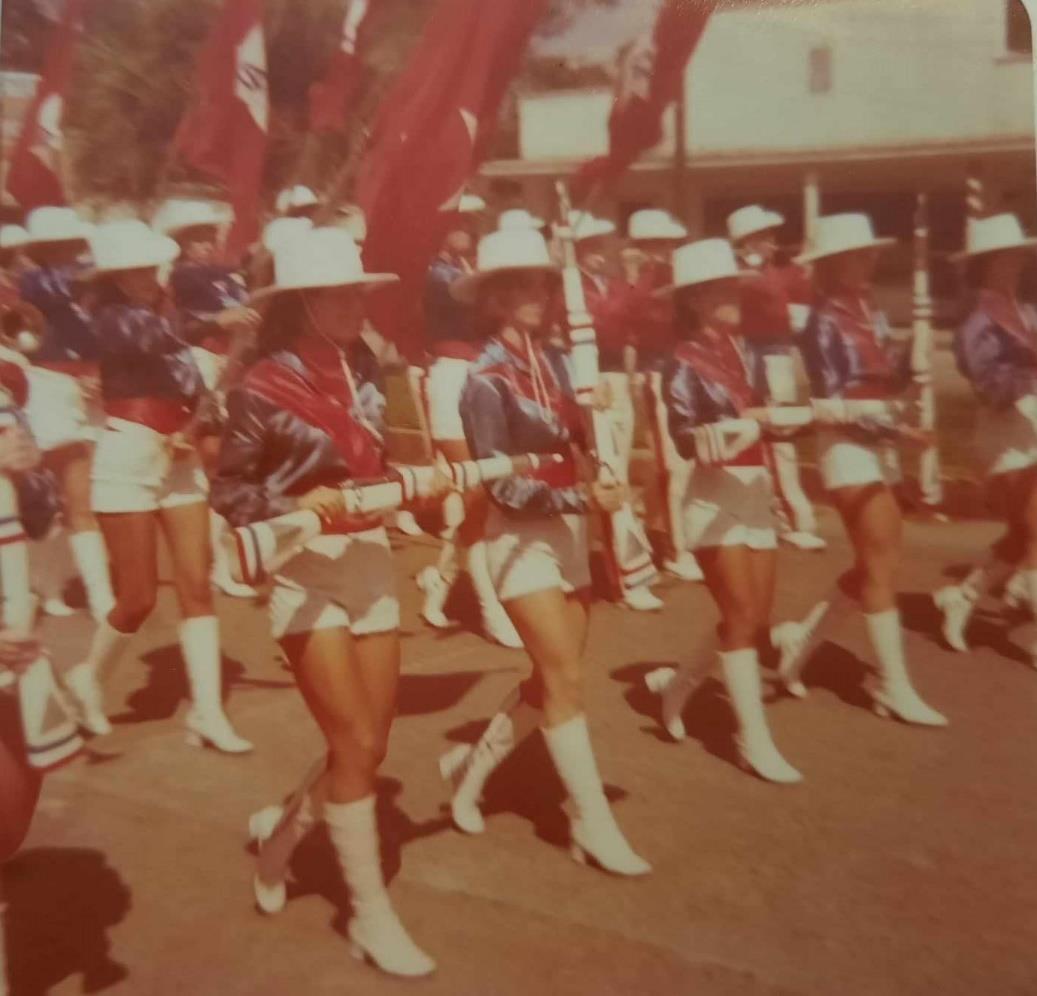
(The “Pride and Spirit” was named as the Outstanding Band in the Jeff Davis Parish Fair Parade for the first time in 1977.)
Then came the most significant step forward for our young program. We entered the LaGrange Marching Festival, the premier festival in our region. Despite competing for the very first time, we captured superior ratings.
Over the next week, I received a multitude of congratulatory calls and messages frombanddirectorsthroughoutLouisiana.Wehad arrived…andhad donesoin front of many spectators from various towns and schools.
Despite all the many program achievements leading up to this point, the initial success at LaGrange was the definitive "phoenix rising from the ashes" moment in the eyes of other band directors.
Likewise, the success of the Pride and Spirit marching band in their "first ever" formal marching evaluation gave me a sense of validation.
Then came the invitation to participate in the new (now annual) DeRidder Marching Festival. This competition was initially envisioned to bring together the best of the bands in Louisiana from moderate-sized communities and smaller schools.
I was hesitant. We had already done what we needed to do to prove ourselves. The long football season was concluding, and we had already performed so many times from August through October. Was another marching competition worth additional rehearsals and travel expenses?
In my discussion with Mr. Dobson, he encouraged me to push on. The DeRidder Festival would feature bands from the northern and eastern portions of the state. Subtly, Mr. Dobson implied it would be good to see how we measured up against those groups. Our coaches gave me a similar pep talk.
We entered. We again earned superior ratings. In so doing, we bolstered our reputation as one of the best small-school marching units in the state.
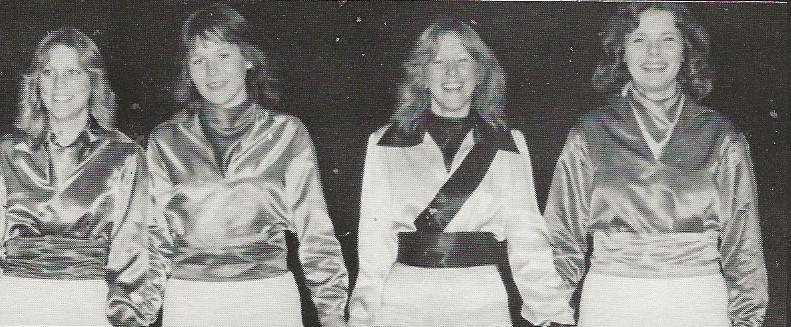
(Jennifer Bertrand, Geralyn Guidry, Cathy O’Blanc, and Cindi Fruge prepare to receive trophies at the DeRidder Marching Festival.)
Another critical evaluation box was checked in Year Four. We had yet to attain a superior rating in the sightreading portion of the LMEA concert festivals.
That box was finally checked in Year Four (and Five) because we stuck to the plan of consistently increasing the difficulty of the literature performed in the concert portion of the festivals during the first three years of participation.
As I have stated in previous chapters, we remained a young program on the rise. As such, the climb was steep in our early years regarding the highest ratings.
Compared to other high school bands, simple arithmetic revealed how we faced a deficit in our overall training and experience.
For example, by Year Four, our high school students were almost exclusively entering their fourth year of training. The students in the other high school bands were entering their fourth, fifth, sixth, and seventh years of training.
Aggravating that annual training deficit were the scheduling and facility handicaps from Years One and Two that severely reduced our daily minutes of organized rehearsals.
Still, another landmark event happened in Year Four. The Pride and Spirit band recorded a live album entitled "An Anthology. " With one hour of recording time and minimalist recording equipment within our band room, we taped songs that sampled our music literature from 1974-1978.
Included on one side of the album were some of our favorite selections from the concert festivals, such as "Gentle Journey" by Giovannini, "Statement for Band" by Eisenhaver, "Free World March" by King, "Early English Suite" by Duncombe, and the band favorite "Festivo" by Nehybel.
On the album's flip side were stock arrangements of "Stairway to Heaven" and "Beth." Also included were some of my arrangements of "Close Encounters of the Third Kind," "Theme from Starwars," "You Light Up My Life," "My Way," and "Your Cheating Heart."
We recorded more selections during that one hour of allotted time. Some were put on the album, while others were not. It came down to how many minutes of music would fit on the two sides.
There were no "second takes." We did each tune one time on the master tape. There was some disappointment when "Sweet Caroline" did not "make the cut" for the album even though it had become a popular theme song for our marching band.
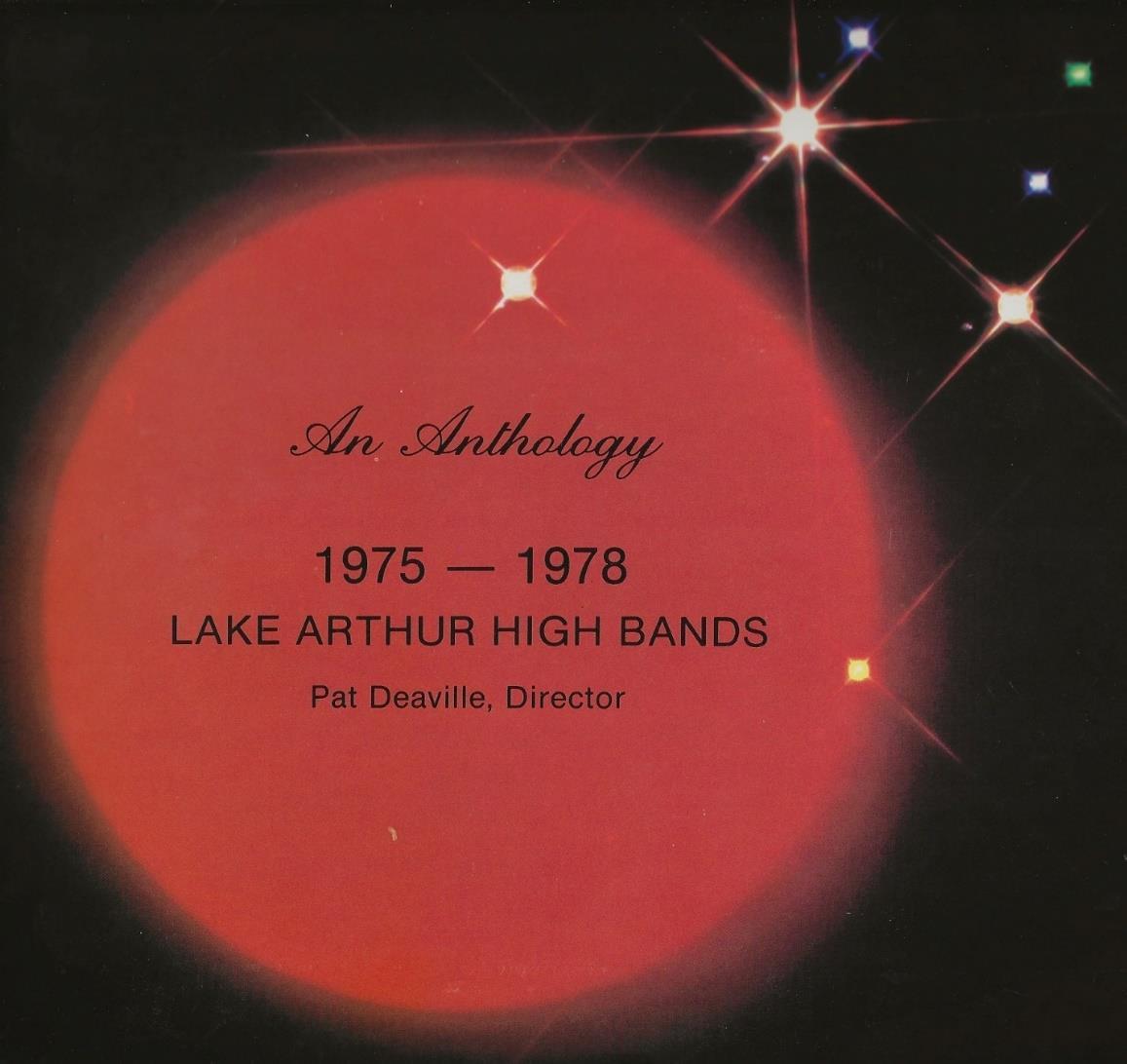
(Our album featured both concert literature and marching band selections.)
To top off an incredible Year Four, our drum major, Cathy O'Blanc, was selected as the Louisiana All-Star Marching Band Drum Major. The All-Star Band performed at the Louisiana High School All-Star football game on July 29, 1978, in LSU's Tiger Stadium. Over my five-year tenure at LAHS, twenty-seven different "PrideandSpirit"bandmemberswerechosentoparticipateinthisprestigiousgroup.
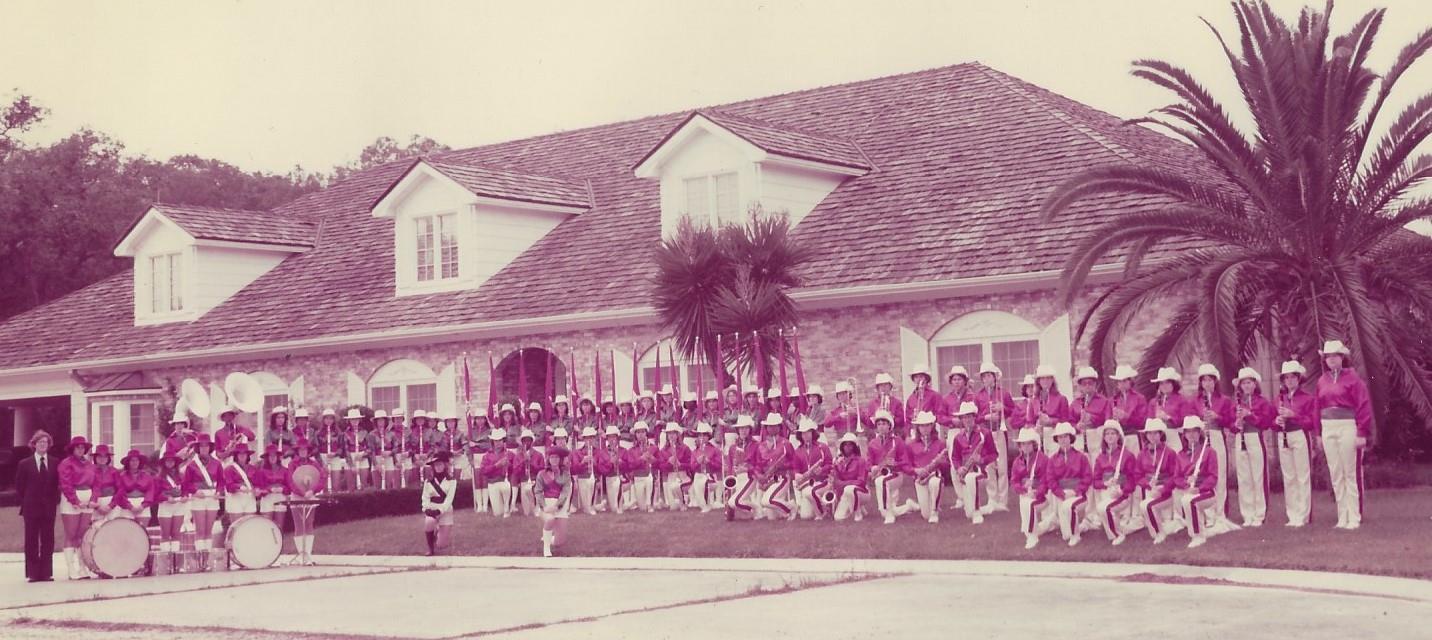
(The Year Four photo in front of Mr. E. J. Ayo’s stately home.)
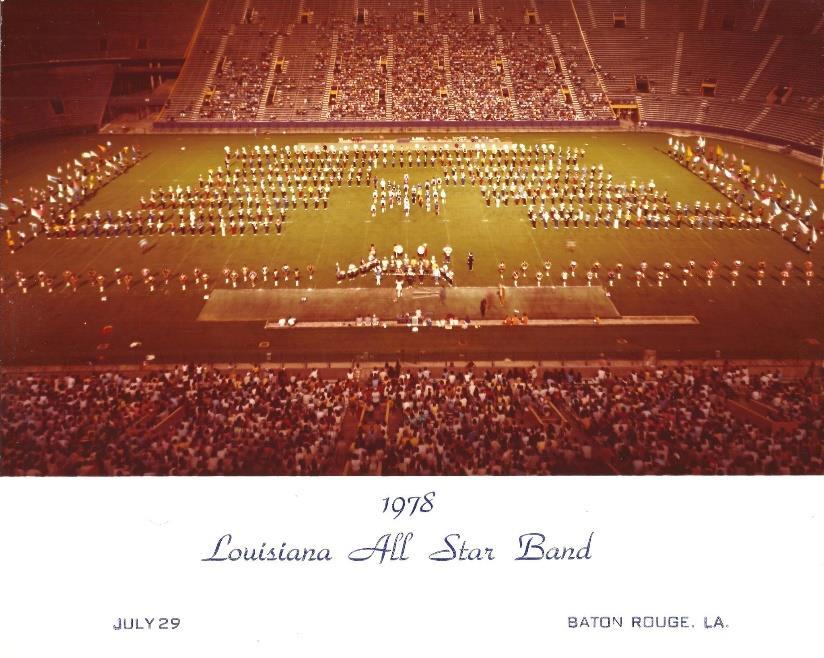
(This edition of the Louisiana All-Star Band included Cathy O’Blanc (Drum Major), Paula LaPoint (Sr. Flag Captain), plus Edward Dupuis, Lisa Green, Johnathan McZeal, Donna Comeaux, and Aretha Richard.)
We were taking our performances to new audiences and across borders.
Year Five (1978-79) continued a two-year period filled with notable performance achievements that began in Year Four (1977-78). We remained mindful that everything we did was rooted in the foundation and traditions established during the first four years of the Pride and Spirit era.
So many early members of the initial Pride and Spirit bands made critical contributions through strong leadership, commitment to excellence, and intense loyalty. They paved the road to the expanded accolades in the final two years of my tenure as band director.
While Year Four contained multiple landmark achievements, Year Five was more than a replication of those successes. In Year Five, the Pride and Spirit Band spread its image and brand far beyond the SWLA region.
At this stage in the Pride and Spirit band history, our organization was not well known outside the parishes of SWLA. The one exception was our outstanding reputation in Mississippi with the flag, rifle, and drum major performances at the annual University of Southern Mississippi camps.
The Pride and Spirit’s statewide reputation mainly was "word of mouth," as local band directors spread stories of the surprising resurgence to their colleagues around Louisiana.
So, in Year Five, I made a special effort to put "the show on the road. " We traveled extensively. This also meant more fundraising than ever and more time spent by parents chaperoning our adventures.
WebegantheYearFivemarchingseasonwithatriptoBeaumont,Texas,tocompete in the East Texas Marching Festival hosted by Lamar University. A few weeks later, we were named the Outstanding Band in the Jeff Davis Parish Fair Parade for the second consecutive year.
After again competing in the LaGrange Marching Festival, we ventured to the Baton Rouge area for the Denham Springs Marching Festival While we did not attain superior ratings in every category at every marching festival, we always came home with our share of superior trophies.
The marching season did not end until May 1979. The final Pride and Spirit marching band performance of the school year was in Orlando, Florida, as we were featured in the Main Street USA Parade at Disney World
Before our spring excursion to Florida, we brought two LAHS bands to the District Concert Festival and swept superior ratings in all categories from all judges.AfterDisneyWorld,wetraveledtothe StateConcertFestival at Louisiana Tech University in Ruston, Louisiana, where we performed the entire concert program by memory. We didn’t even let the festival crew put music stands on the stage.
I have never attempted to calculate the miles traveled in Year Five. But we spent extensive time on the road "spreading our brand" in marching and concert performances.
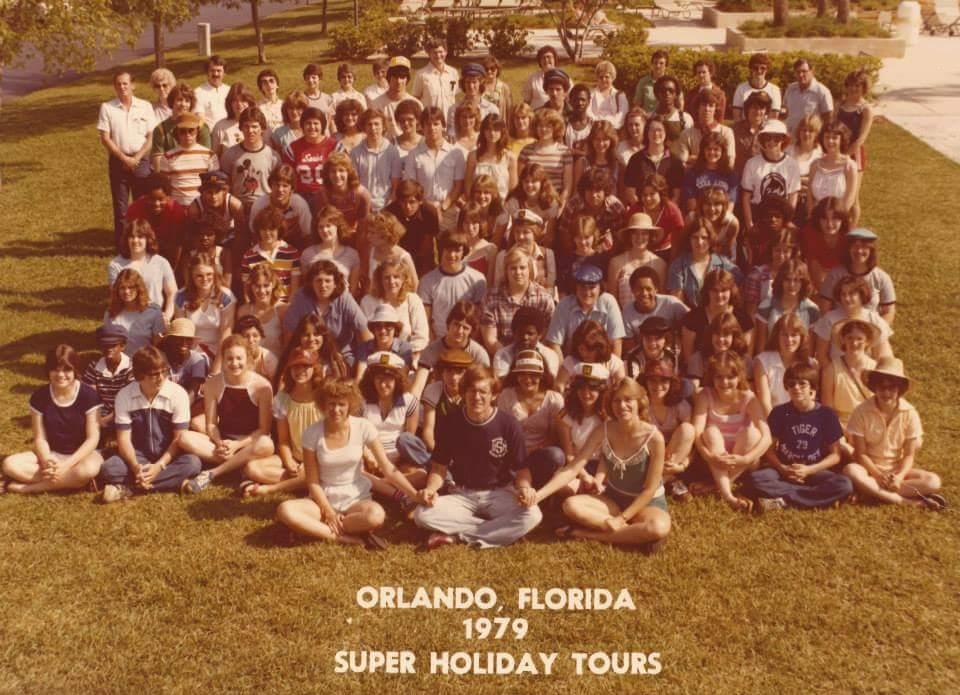
(The Pride and Spirit was ready to enjoy the day at Sea World in Florida.)
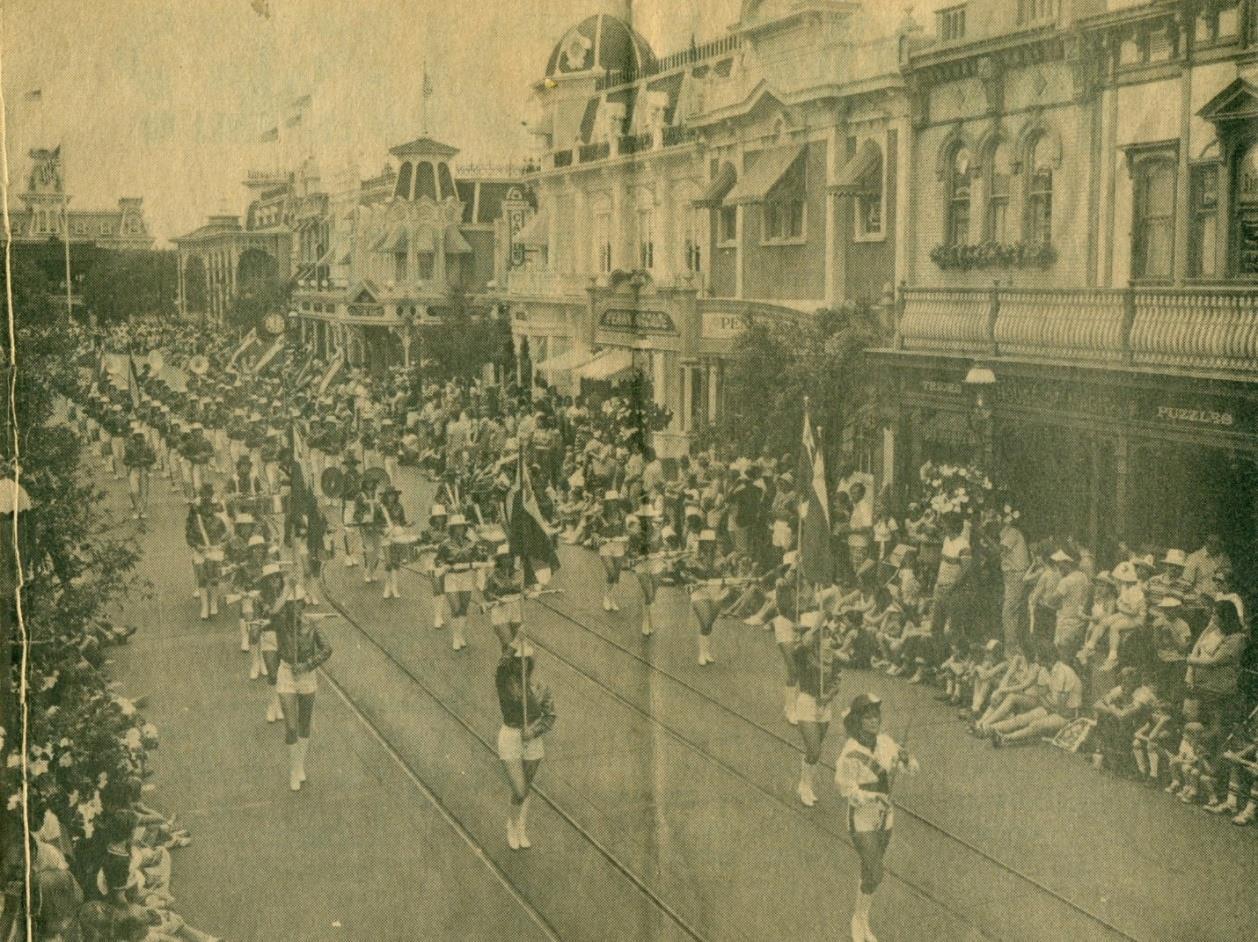
(Marching down Main Street USA at Disney World.)
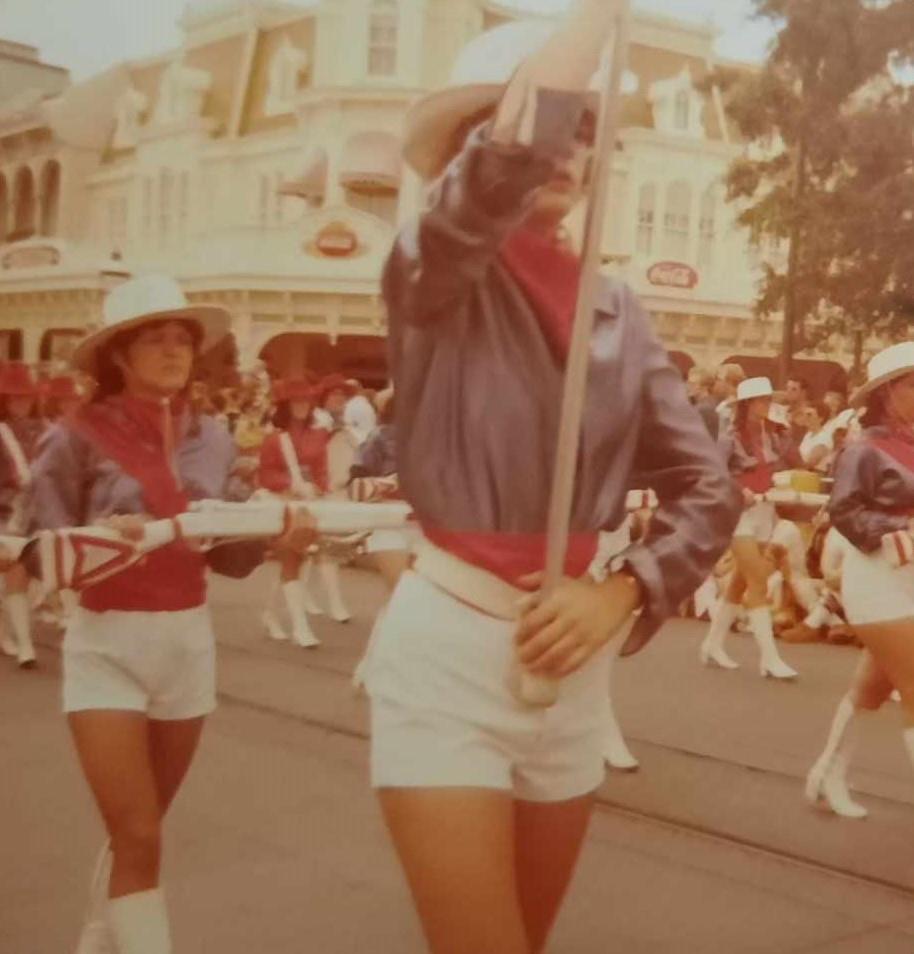
(The
Florida.)
red and blue made a great impression in Orlando,Jumping into the deep end of the pool. (Part 1)
The Year Five gamble that elevated our marching band reputation.
"Don't do it." My trusted mentor, friend, and colleague, Orville Kelley, was clear in his advice. "This marching festival at Lamar is first-rate but also cutthroat. They will put your group with the Texas AA bands for ratings and require you to compete against all the AAA and AAAA bands in the open division for placement."
Orville had given me excellent advice hundreds of times during my tenure in Lake Arthur. Only rarely did I choose a different path. This was one of those times.
I was admittedly surprised by the invitation to bring the LAHS band to Lamar University for their East Texas Festival/Contest. One of the Lamar directors had judged extensively in Louisiana and decided to invite a few Louisiana bands he had witnessed in 1977.
ThelineupinBeaumontwaspredominatelycomprisedof bandsfromSoutheast Texas ranging as far west as Houston. Most were traditional and robust programs with school populations numbering a thousand or more. But there were also some bands from smaller towns with great reputations.
Why? Why would I start our year in such a new and challenging environment? Our previous festival experiences were for ratings determined by meeting specific LMEA performance standards. Points may have been calculated, but those were not announced over the loudspeakers at the end of the day.
Except for our auxiliary competitions at Southern Miss, we had never been a part of achampionship,best-in-class,oroutstanding-unittypecompetition.Itrulybelieved ourflags,rifles,anddrummajorcouldcompetewithanyhighschool regardless of classification. Likewise, I felt it was time for our horn line and drum line to jump into the pool's deep end.
We spent much time getting ready in the summer of 1978. Our extra practices concluded just before the opening of school with an all-night marching rehearsal, in which we put the entire show together
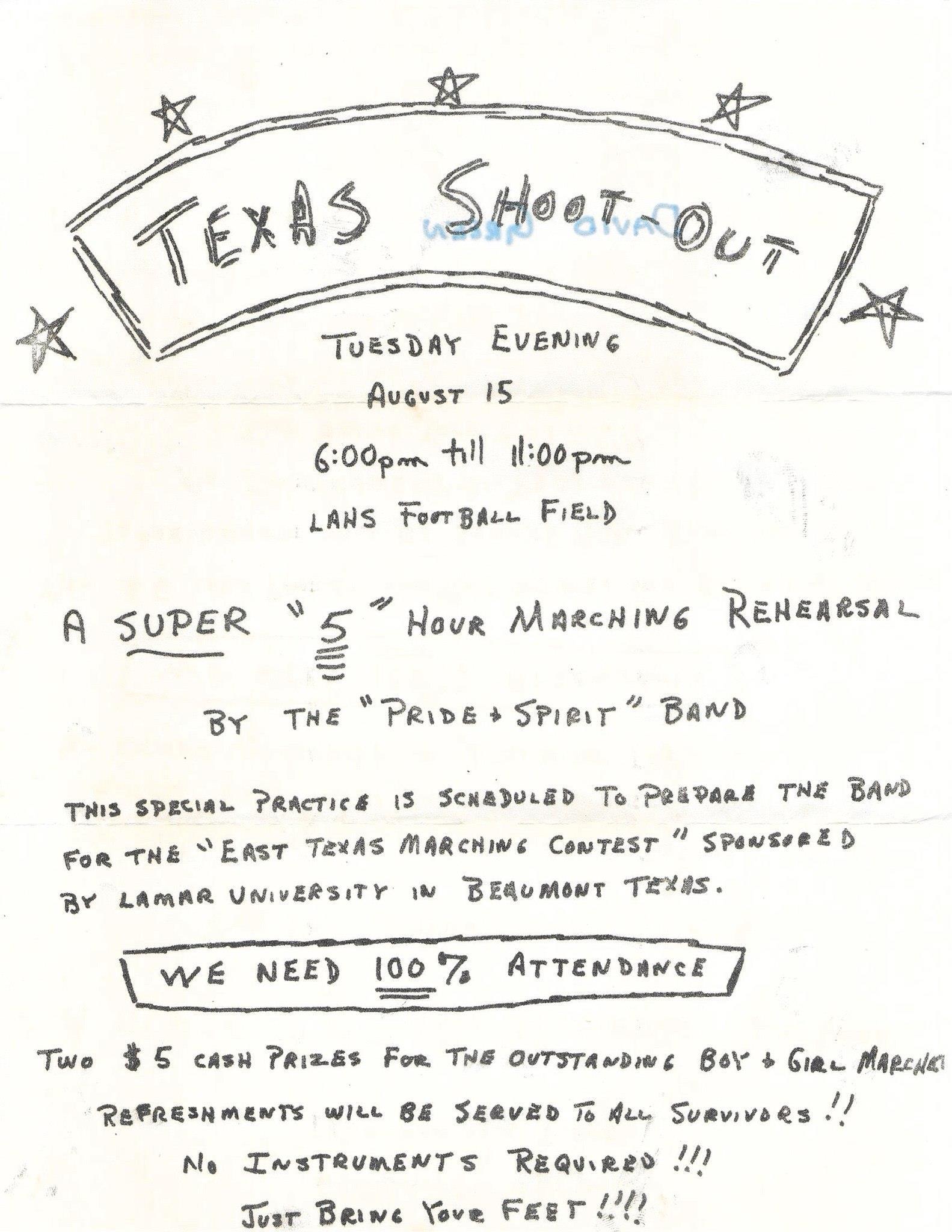
(Handmade flyer announcing our night rehearsal in early prep for the East Texas Marching Festival at Lamar.)
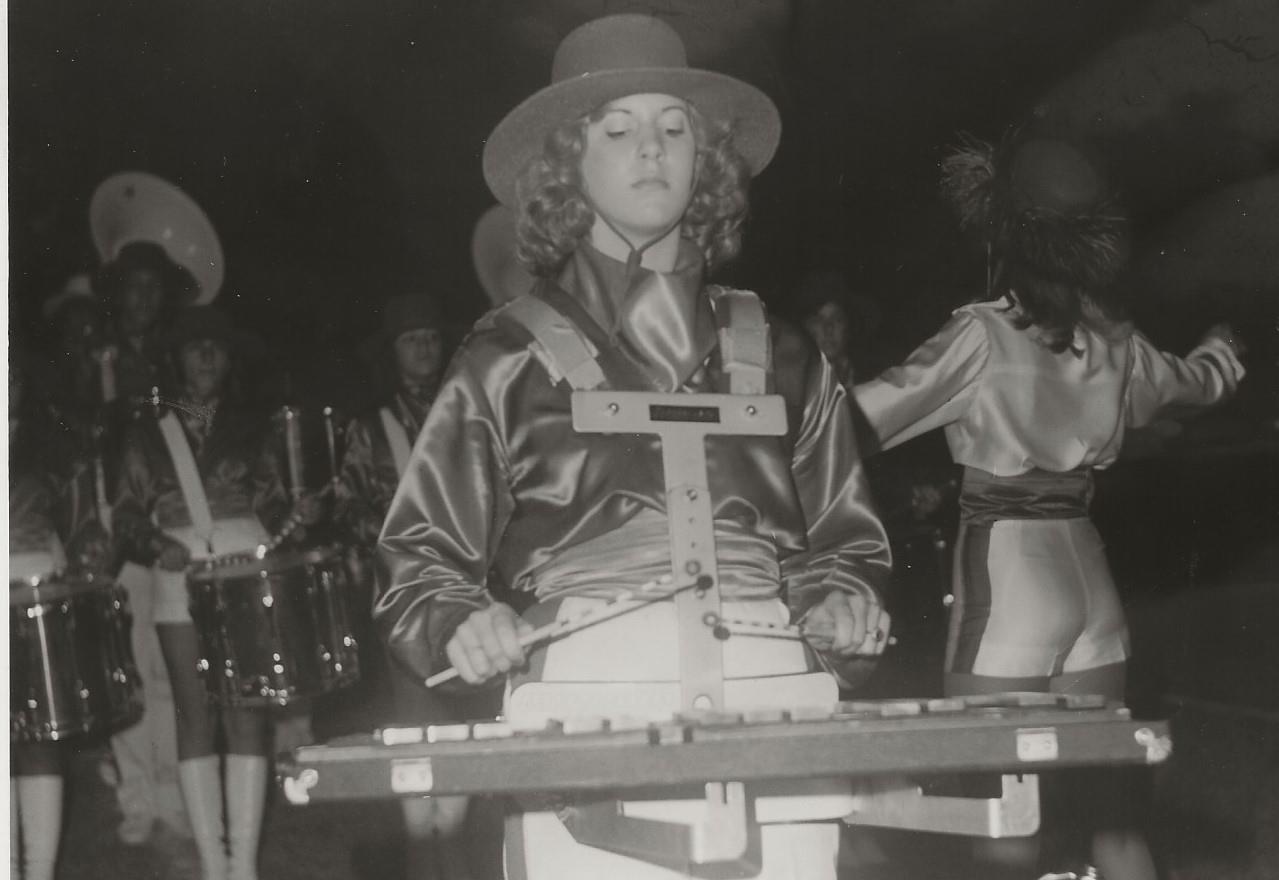
(Helen Roy was a serious melodic player.)
And here was the outcome as reported in the Lake Arthur Revue:
The Lake Arthur High School Band joined two other Louisiana bands in a virtual sweep of top awards at the annual Lamar University Marching Festival in Beaumont, Texas.
Barbe High School, Morgan City High School, and Lake Arthur High provided Louisiana with “bragging rights” in this year’s classic Texas-Louisiana battle of the bands.
The three Louisiana bands captured five of the six top awards presented at this year ’ s event.
Lake Arthur’ s “Pride and Spirit” proved to be the giant killers of the contest as it jumped from Class B to Class AA while joining the two AAAA Bands from Louisiana as major award winners.
The Lake Arthur Band earned the “Outstanding Drum Major” and “Outstanding Flag Corps” awards.
The Tiger Band showed little fear in stepping out of its Louisiana Class B status to take on numerous Class AA Texas bands. The Tiger Band placed second in Class AA and finished fifth in the open division, taking on the AAA and AAAA bands in the contest.
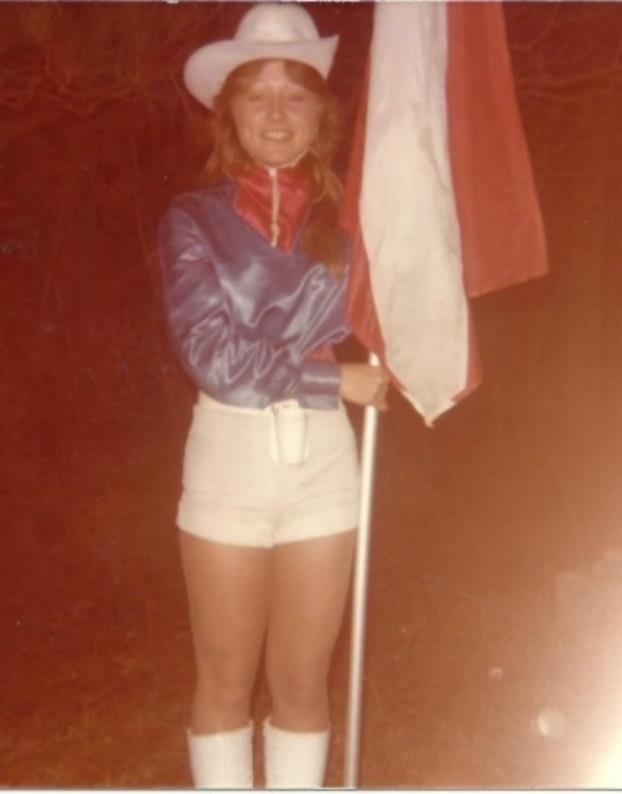
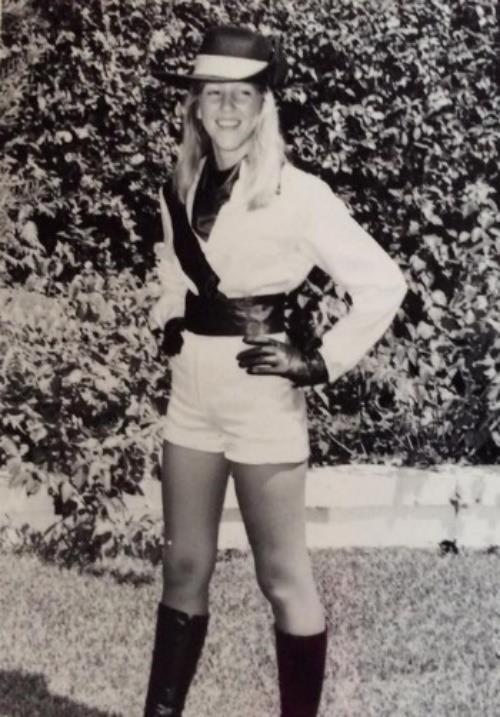
(Sr. Flag Captain Paula LaPoint and Drum Major Cathy O’Blanc brought home the Overall Outstanding awards in Flag Corps and Drum Major competition at the Lamar Invitational in Beaumont, Texas.)
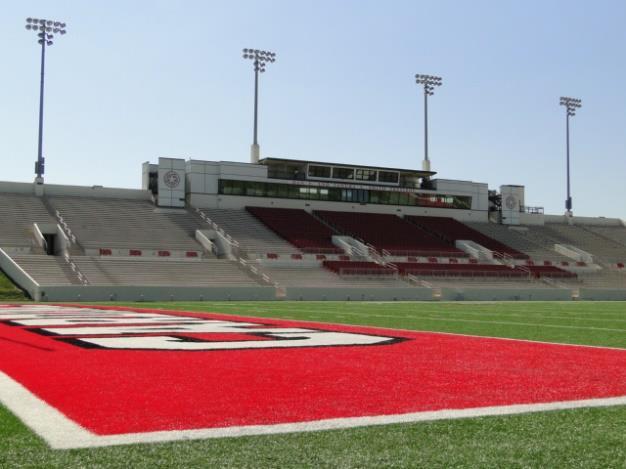 (Provost Umphrey Stadium at Lamar University.)
(Provost Umphrey Stadium at Lamar University.)
Jumping into the deep end of the pool. (Part 2)
Several Year Five gambles elevated our concert band's reputation.
I received a call from Ed Schutz, our LMEA District V Director, in March 1979. He said, "Pat, the check from LAHS is double what it should be for your entry fee to the District Concert Festival."
I toldEd I would bring both a junior highband and a high schoolbandtothe festival. I asked him to "Check again in the envelope. There should be two entry forms." After a brief pause, he responded. "Yes, I see both now. Are you sure about this?" It was a reasonable question on his part.
For several years before my tenure, LAHS did not have sufficient membership or appropriate instrumentation to participate in the District Concert Festival with a single band, much less two.
My decision to double up in Year Five was very reasonable. We no longer needed support from any eighth graders to fill out the high school concert band. We also had so many eighth-graders and seventh-graders ready for evaluation that it was desirable to form a separate concert band with them.
I entered the high school group in both the concert and sightreading portion of the District Festival, as we needed to do that to qualify for the State Festival. However, I limited the middle school band evaluation to only the concert event.
Both bands earned superior ratings from all judges in all portions of their evaluations.
And yes, the story is true. When I got on the podium for thehigh school performance at District, I had the band turn the music stands around so the judges would visibly see we intended to play the opening selection by memory. I once saw this done by the Lake Highlands High School Band at the Six Flags Over Texas Festival.
And yes, the second story is true. At the State Festival in Ruston, the Pride and Spirit Band had no music stands on stage, performing all three selections by memory. We had practiced doing so during night rehearsals at Disney World the week before the State Festival.
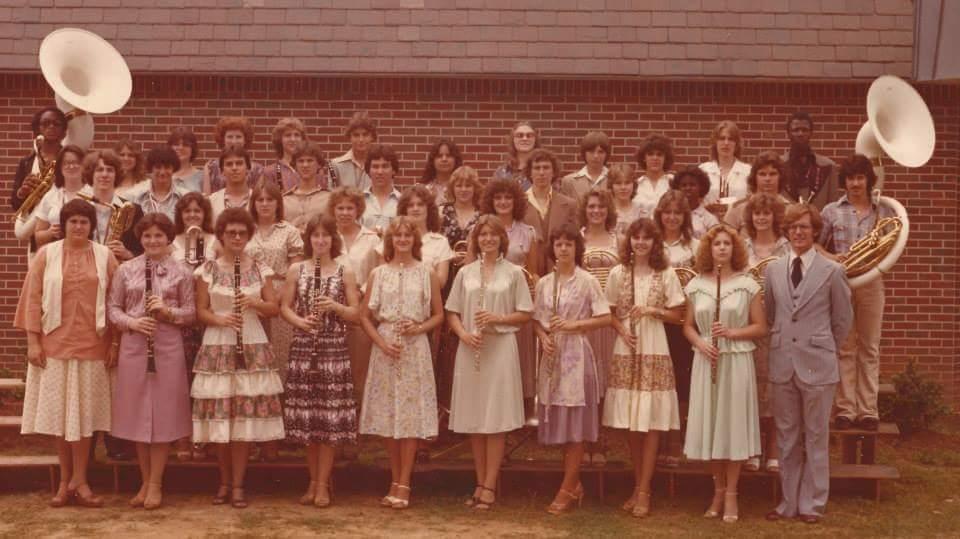
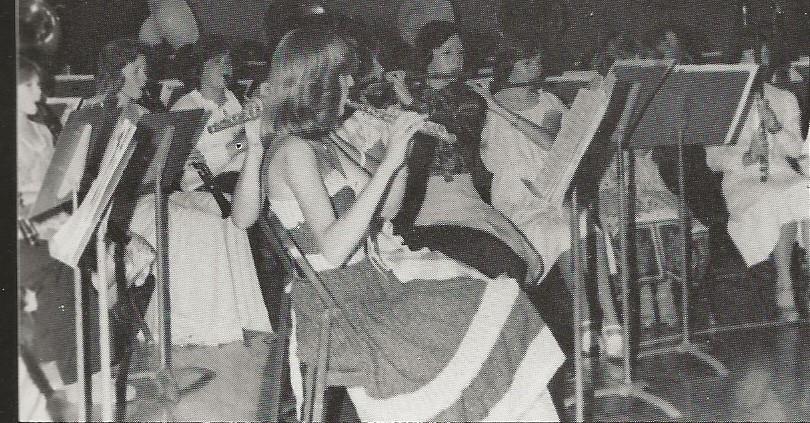 (The Pride and Spirit concert band at the State Band Festival in Ruston, LA.)
(Renee Johnson, Marcia Miller, LaDonna Richard, Donna Comeaux, and Penny Cantrelle anchored the section throughout my entire tenure.)
(The Pride and Spirit concert band at the State Band Festival in Ruston, LA.)
(Renee Johnson, Marcia Miller, LaDonna Richard, Donna Comeaux, and Penny Cantrelle anchored the section throughout my entire tenure.)
We were building a portal into the future beyond Year Five.
Initially, our LAHS concert and marching bands were a mix of high school and junior high students. It was the only way to produce the size and instrumentation necessary for successful performances.
After a few years, the number of students in grades nine through twelve was sufficient to complete the concert and marching band instrumentation.
Once there was no longer a need for junior high students in the marching band or high school concert band, I had to devise ways to keep the younger members of the program engaged in our travels, training, and formal evaluations.
The most obvious thing to do was establish an independent junior high concert band that could compete in the LMEA District Band Festival. It was imperative to get them involved in formal evaluations.
In Year Five, the junior high students accepted the challenge eagerly and earned a superior rating at the festival.
I also began training potential drum majors from the junior high ranks with Eva Giles, Allison Duhon, Traci Cain, and Stacey LaCombe. They made terrific progress, and I made sure to have them co-conduct a selection wearing their drum major uniforms at the spring concert.
Another method I used for marching band engagement was to select a small core of eighth-grade students to serve as our Marching Band Managers. They handled many logistical needs and had the opportunity to observe and absorb our marching band methods and traditions.
I selected these students based on who I perceived would likely be the future high school program’s student leaders.
Also, in the Spring semesterof 1979, Iinstituted the first “LAHSTiger March Off” as amethodofteachingmarchingfundamentals to juniorhighstudents.Itwasateam competition with selected high school band members as the team leaders.
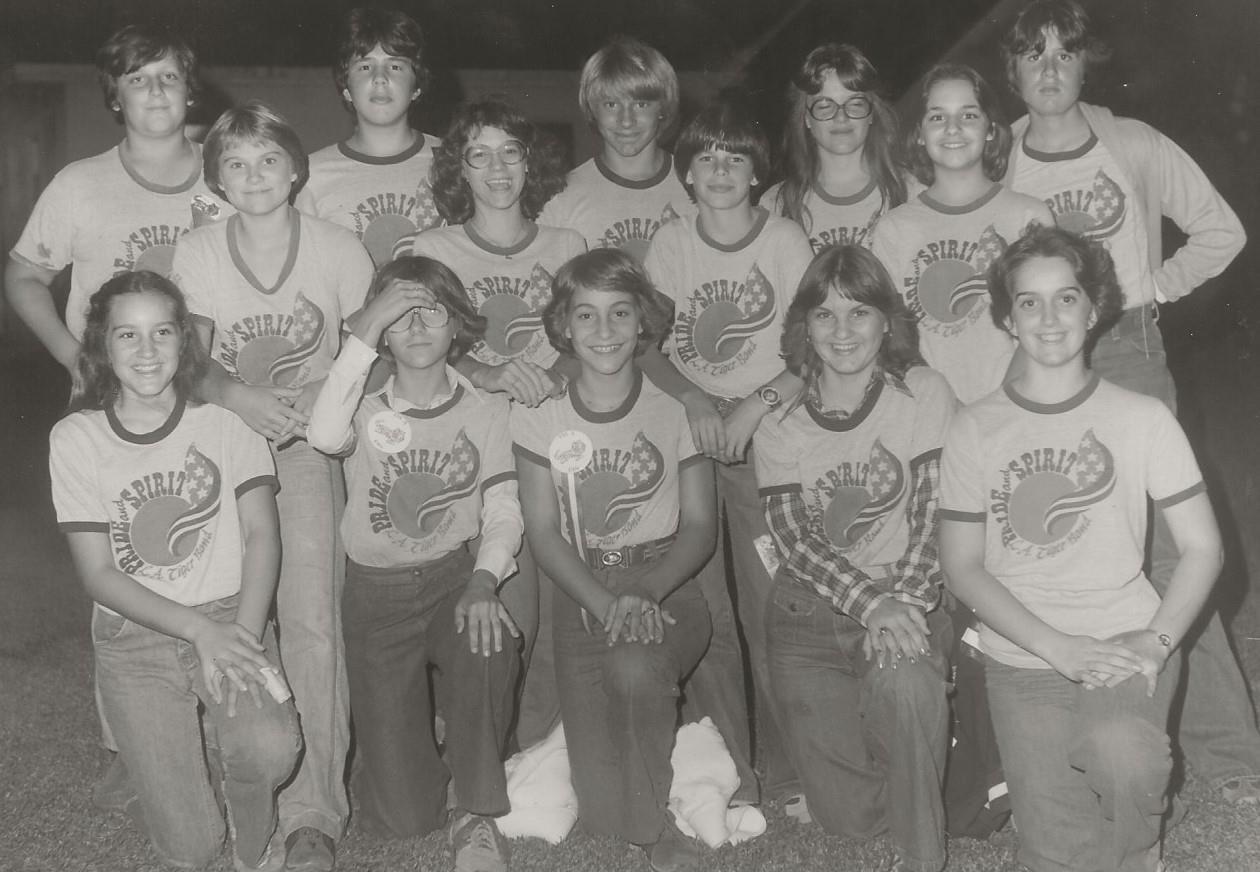
(Managers for the marching band included Bryan Boudreaux,Rhonda Broussard, Ed Conner, Allison Duhon, Eva Giles, Charlie Guidry, Laurie Hanks, Jerold Jeansonne, Denice LaFosse, Becky LeLeux, Sheryl Manuel, Michelle McGee, Chad Richard, Pam Teal, and Tim Trahan.)
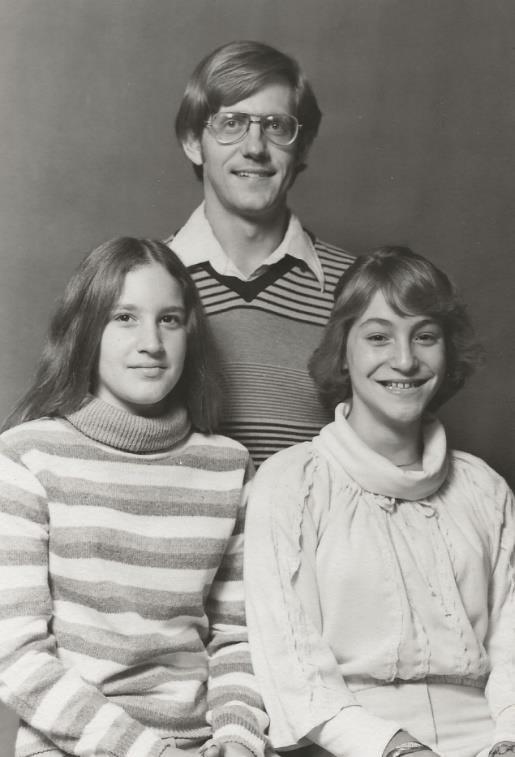
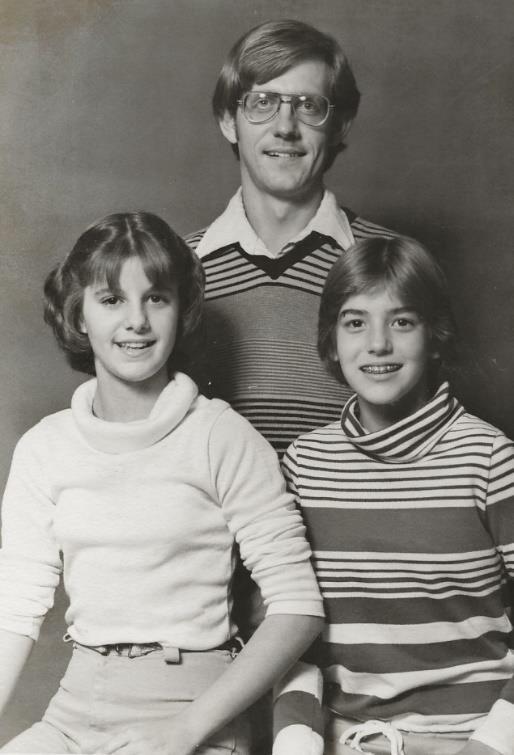
(Junior High drum majors included Allison Duhon, Eva Giles, Traci Cain, and Stacey LaCombe.)
1979 Junior High Tiger March Off
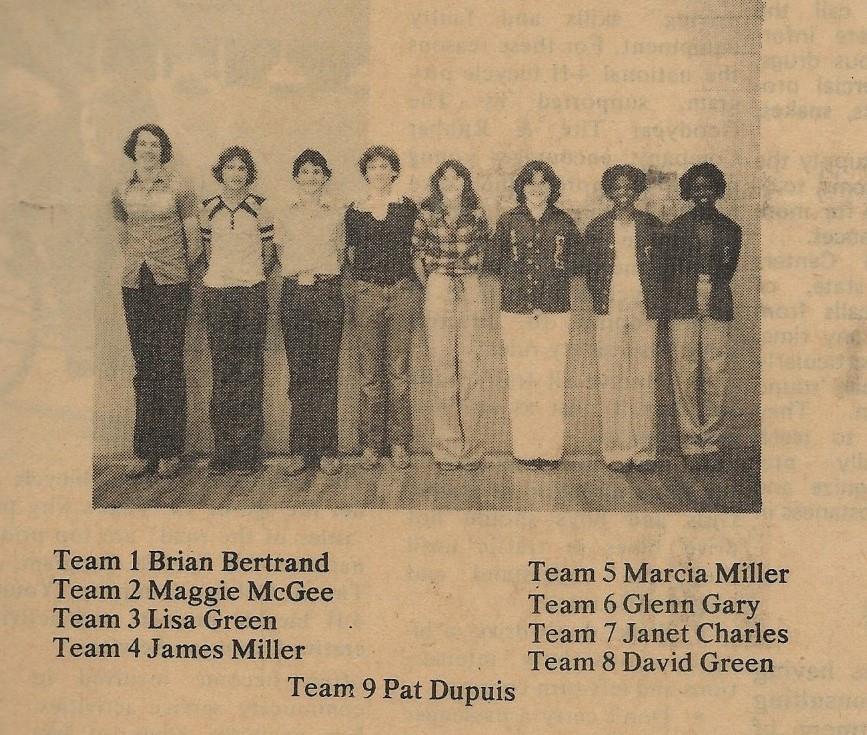
(Team Leaders)
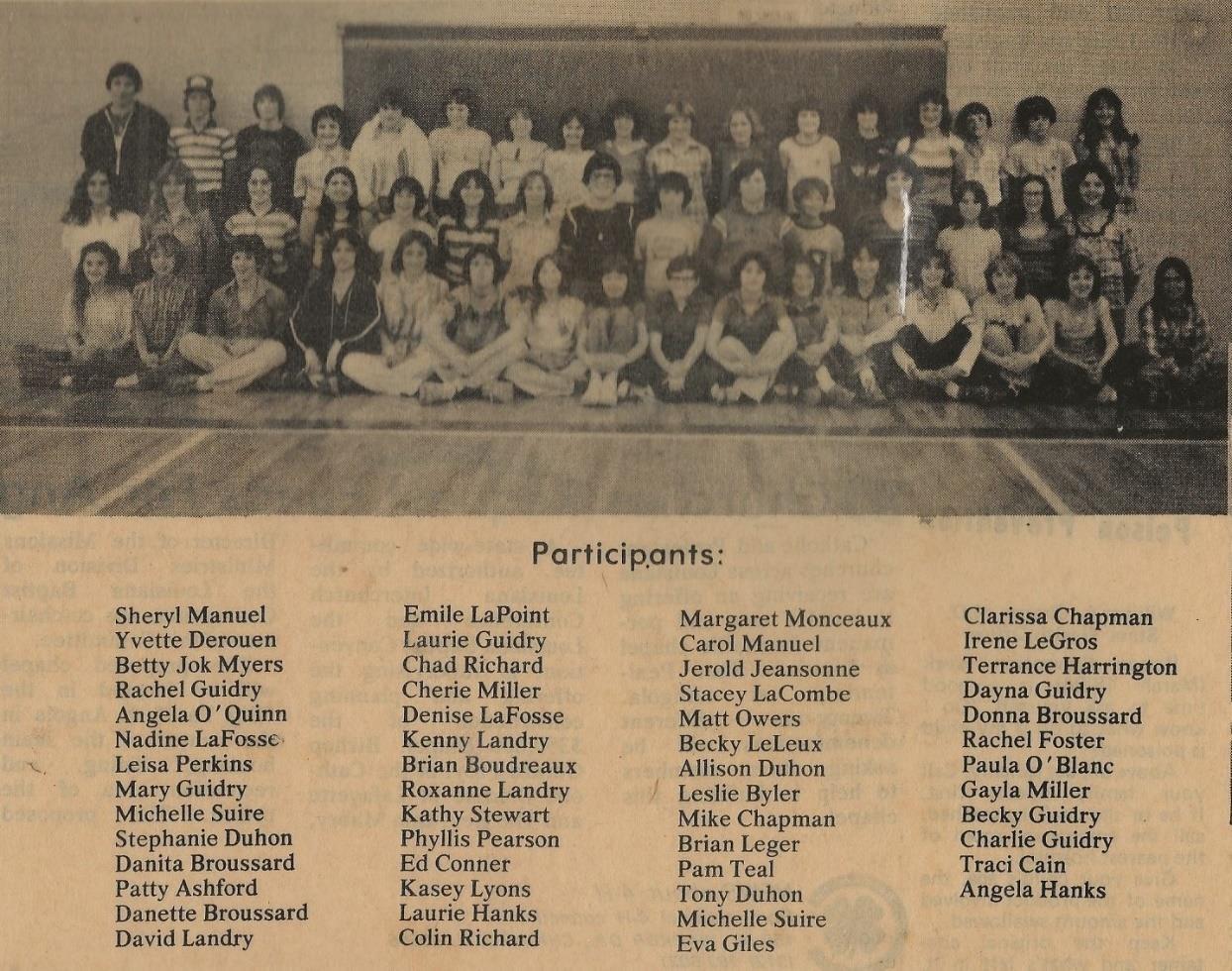
(Participants)
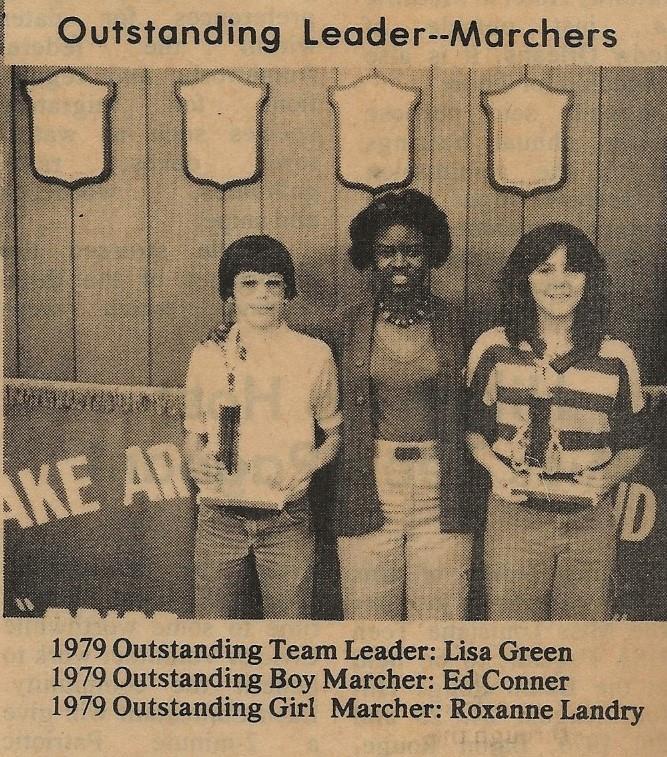
(Outstanding Leader – Marchers)
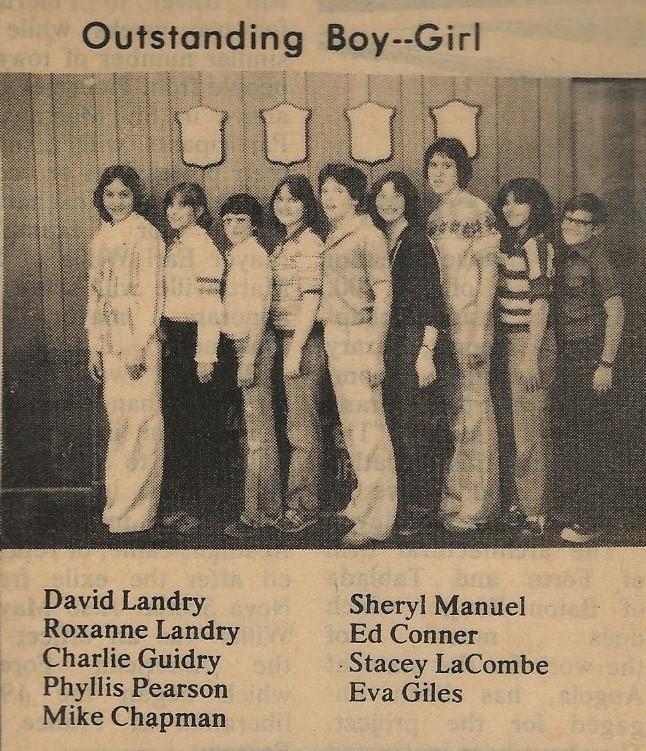
(Outstanding Boy and Girl Marchers)
1974-75 Malon Dobson was appointed as Principal at LAHS.
1974-75 Patrick Deaville was hired as LAHS Band Director.
1974-75 Alvin Richard was selected as LAHS Band Booster President.
1974-75 Band enrollments increased from 7 to 104 students and adopted the moniker: “Pride and Spirit.”
1974-75 New band uniforms were designed and hand-sewn by the booster club.
1975-76 The Marching Band is reinstituted and begins performing with Sally Wade as Drum Major.
1975-76 Flags Unit, Rifle Unit, and Drum Majors attend and compete at the University of Southern Mississippi Summer Camp for the first time.
1975-76 Band is a special guest of the LSU Symphonic Band in Baton Rouge.
1976-77 Alton O’Blanc was selected as LAHS Band Booster President.
1976-77 Band enrollment grows to 188 students.
1976-77 Construction of a new band room is completed.
1976-77 Concert Band Contest at Six Flags over Texas in Dallas.
1977-78 LAHS Drum Major Cathy O’Blanc was named the Louisiana All-Star Marching Band Drum Major.
1977-78 Band records its first album.
1977-78 Mayor proclaims Lake Arthur Band Day.
1978-79 Band enrollment increases to 228 students.
1978-79 Band performs at Disney World in Orlando, Florida.
1978-79 The Louisiana House of Representatives congratulates and commends Pat Deaville for his outstanding achievement with the Lake Arthur High School Band.
Pride and Spirit individual honors (1975-1979).
31 Students were selected to district-level honor/clinic bands.
27 Students were selected to the Louisiana All-Star Marching Band.
24 Students were named in Who’s Who in America.
8 Students are mentioned in the All-American Hall of Fame list.
3 Students were invited to participate in the United States Wind Band.
Band Competition ratings (1975-1979).
1975 LMEA District Concert Band Festival Superior
1975 LMEA State Concert Band Festival Excellent
1976 LMEA District Concert Band Festival Excellent
1977 LMEA District Concert Band Festival Excellent
1977 LaGrange Marching Band Invitational Superior
1977 DeRidder Marching Invitational Superior
1977 Jefferson Davis Parish Parade Outstanding Band
1978 LMEA District Concert Band Festival Excellent
1978 LMEA District Sightreading Performance Superior
1978 LaGrange Marching Band Invitational Excellent
1978 Lamar University Marching Band Invitational Excellent
1978 Denham Springs Marching Band Invitational Excellent
1978 Jefferson Davis Parish Parade Outstanding Band
1979 LMEA District Concert Band Festival (Jr. High) Superior
1979 LMEA District Concert Band Festival (Sr. High) Superior
1979 LMEA District Sightreading Performance Superior
1979 LMEA State Concert Band Festival Very Good
1979 LMEA State Sightreading Performance Very Good
Flag/Rifle Unit Achievements (1977 - 1978).
1977 University of Southern Mississippi Camp Competition
3rd place out of 84 competing groups.
1978 University of Southern Mississippi Camp Competition
4th place out of 87 competing groups.
1977 LaGrange Marching Band Invitational Superior
1977 DeRidder Marching Band Invitational Excellent
1978 LaGrange Marching Band Imitational Superior
1978 Lamar University Marching Band Invitational Superior Overall Outstanding Unit
1978 Denham Springs Marching Band Invitational Superior
Drum Major Achievements (1976 through 1978).
1976
University of Southern Mississippi Camp Competition
1st place in the Junior Division (Cathy O’Blanc)
1976 University of Southern Mississippi Camp Competition
Selected as the Exhibition Drum Major (Cathy O’Blanc)
1977 University of Southern Mississippi Camp Competition
1st place in the Senior División (Cathy O’Blanc)
1977 University of Southern Mississippi Camp Competition
Selected as the Exhibition Drum Major (Cathy O’Blanc)
1978 University of Southern Mississippi Camp Competition
2nd place in the Intermediate Division (Donna Comeaux)
1978 University of Southern Mississippi Camp Competition
Selected as the Exhibition Drum Major (Cathy O’Blanc)
1978 Louisiana All-Star Marching Band Drum Major (Cathy O’Blanc)
1977 LaGrange Marching Band Invitational Excellent
1977 DeRidder Marching Band Invitational Superior
1978 LaGrange Marching Band Invitational Superior
1978 Denham Springs Marching Band Invitational Superior
1978 Lamar University Marching Band Invitational Superior
Overall Outstanding Drum Major
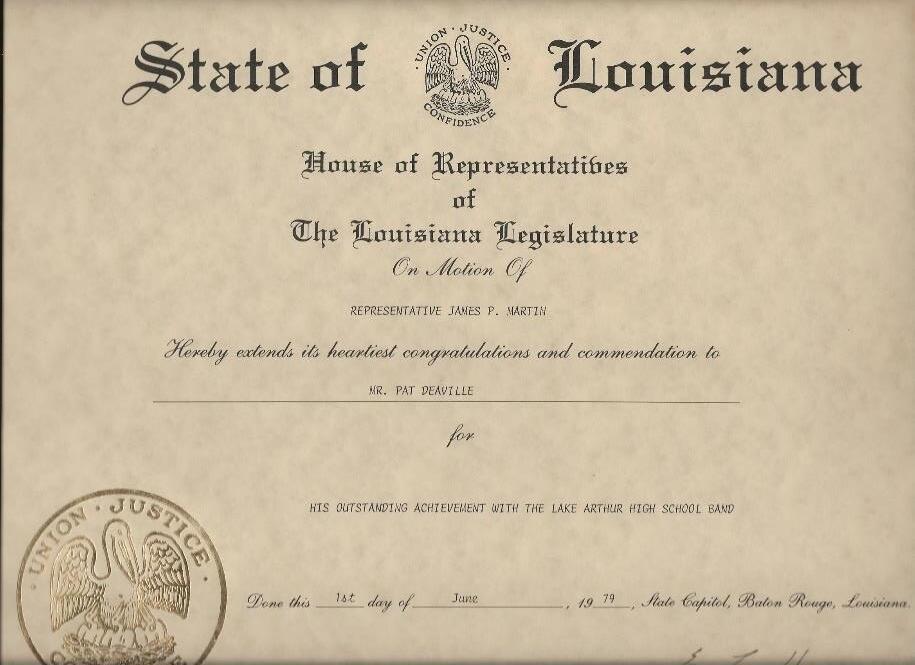
(Louisiana Legislative Commendation to Patrick Deaville and the LAHS Pride and Spirit Band.)
These students were enrolled at LAHS during my first year as band director, and almost all of them joined the band during the initial recruiting campaign of 19741975. A few joined in the second year when we added the marching band.
Seniors
Monica Bonin, Dennis McZeal, and Ken Lyons.
Juniors
Cheryl Brown, Ronald Conner, GordanDaniels, Mike Dubone, Barbara Ervin, Preston Gary, Rip Green, Kevin Jeansonne, Maryanne Kratzer, Jackie Stevens, and Sally Wade.
Sophomores
Beth Broussard, Donna Brown, Gina Cain, Lori Carter, Liz Dupuis, Lynne Hollister, Susan Roy, Rhetta Smith, Colette Trahan, and Darlene Trahan.
Freshman
Melanie Bonin, Mary Boudreaux, Lanor Broussard, Lizanne Carter, Marla Green, Geralyn Guidry, Tracey Guidry, Becky Hanks, Pam O’Blanc, Tina Perry, Melanie Sexton, Angie Stevens, and Edwina Wilks.
Eight Grade
Jennifer Bertrand, Bridget Bonin, Tana Bourgeois, Melissa Broussard, Richard Broussard, Lucette Chaisson, Teresa Conner, Margo Dugas, Cindi Fruge, MaDonna Hargrave, Jude Henry, Renee Johnson, Donald Kratzer, Paula LaPoint, Tracy Manuel, Johnathan McZeal, Brian O’Blanc, Glenn Richard, Augie Robinson, and Megan Rogers.
Seventh Grade
Angie Aucoin, Elmarie Boudreaux, Lola Broussard, Chris Brown, Donna Comeaux, Connie DeWitt, Twynia Dickerson, Jonathan Duhon, Edward Dupuis, Tina Gagneaux, Glenn Gary, David Green, Joan Guidry, Ken Guidry, Malinda Guidry, Rachael Guidry, Tim Guidry, Lorine Hanks, Creighton Jones, JoAnn Kebodeaux, Jovita LaPoint, Sheila LeJeune, Tina Martin, Ramona Ann Meyers, Cathy O’Blanc, Melody Owers, Karen Peloquin, LaDonna Richard, Cheryl St. Germain, Grace St. Junius, Pauline Stroder, Danny Thibodeaux, and Leonard Vincent.
Sixth Grade
Brian Bertrand, Pam Breaux, Susan Broussard, Penny Cantrelle, Rosie Chapman, Janet Charles, James Cormier, Pat Dupuis, Lisa Green, Becky Guidry, Mona Guidry, Deanna Harrington, Brian Higginbotham, Joey
Kibodeaux, Kevin Klein, Darla LaComb, Donna LeJeune, Tanya
Marionneaux, Gale McGee, Maggie McGee, Linda Meyer, Marcia Miller, AudreyPrice,ArethaRichard,JulieSmith,MaryBethSmith,SonyaTalen,and Monica Wilridge.
A listing of students who were enrolled at Lake Arthur Elementary School during my first year (1974-1975) follows. They were later recruited into the band when they entered the sixth grade. A few were not at LAES in 1974-1975 but moved into Lake Arthur schools during my tenure
Fifth Grade
Claudia Achane, Lawrence Bellard, Lynne Bertrand, Angela Boudreaux, Ty Bourgeois, Jeni Broussard, Melissa Conner, Johnette Constantine, Monica Deshotel, Mark Dubone, April Duhon, JoAnn Duhon, Leslie Gary, Greg Giles, Connie Guidry, Paula Guidry, William Guidry, Lisa Guillory, Monica
Guillory, Loretta Hanks,Angie Hebert, Robin Kibodeaux, Theresa Kibodeaux, Rachael LeBlanc, Nancy Lyons, Linda Mack, James Miller, Melissa O’Quinn, Molly Owers, Georgia Procell, Helen Roy, Kim Smith, Greg Stevens, and Angie Vail.
Fourth Grade
Jeff Beverly, Jeffrey Bihm, Bryan Boudreaux, Danette Broussard, Danita Broussard, Rhonda Broussard, Ed Conner, Allison Duhon, Laurie Hanks, Eva Giles, Charlie Guidry, Denise Guidry, Barry Higginbotham, Ben Higginbotham, Jerold Jeansonne, Denise LaFosse, Becky LeLeux, Sheryl Manuel, Michelle McGee, Betty Jo Meyers, Margaret Monceaux, Paula O’Blanc, Lisa Perkins, Chad Richard, Pam Teal, Lisa Toups, Tim Trahan, Chuckie Tyler, and Michael Tyler.
Third Grade
Patty Ashford, Ann Boykin, Leslie Byler, Donna Broussard, Traci Cain, Clarissa Chapman, Mike Chapman, Rae Rae Ann Davis, Yvette Derouen, Roxanne Duhon, Stephanie Duhon, Laurie Guidry, Mary Guidry, Racheal Guidry, Terrence Harrington, Dana Higginbotham, Stacey LaCombe, Emile Lapointe, David Landry, Cherie Miller, Bernadette McZeal, Tammy Onellion,
Matt Owers, Phyllis Pearson, Lisa Rutledge, Michelle Suire, Susan Trahan, Kim Turner, and Donna Woods
Second Grade (Partial List)
Evette Broussard, Tony Duhon, Rachel Foster, Dayna Guidry, Becky Guidry, Angela Hanks, Gayla Miller Istre, Nadine LaFosse, Kenny Landry, Roxanne Landry, Brian Leger, Irene LeGros, Kasey Lyons, Carol Manuel, Angela O’Quinn, Colin Richard, and Kathy Stewart
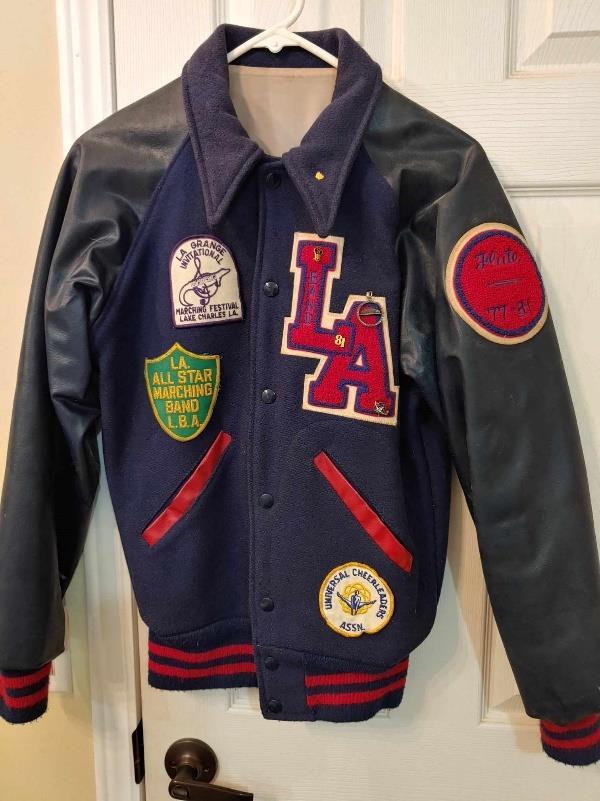
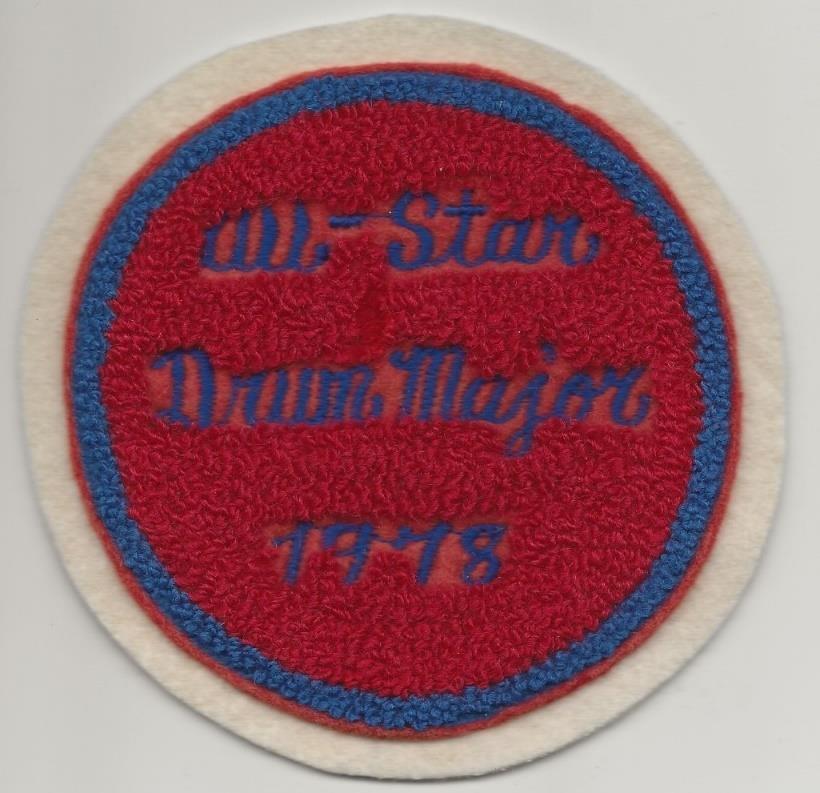 (Marcia Miller’s band jacket and Cathy O’Blanc’s All-Star patch.)
(Marcia Miller’s band jacket and Cathy O’Blanc’s All-Star patch.)
Yearbook Photos of the Foundation Years

(August 1974 - LAHS Band - Grades 9-12)
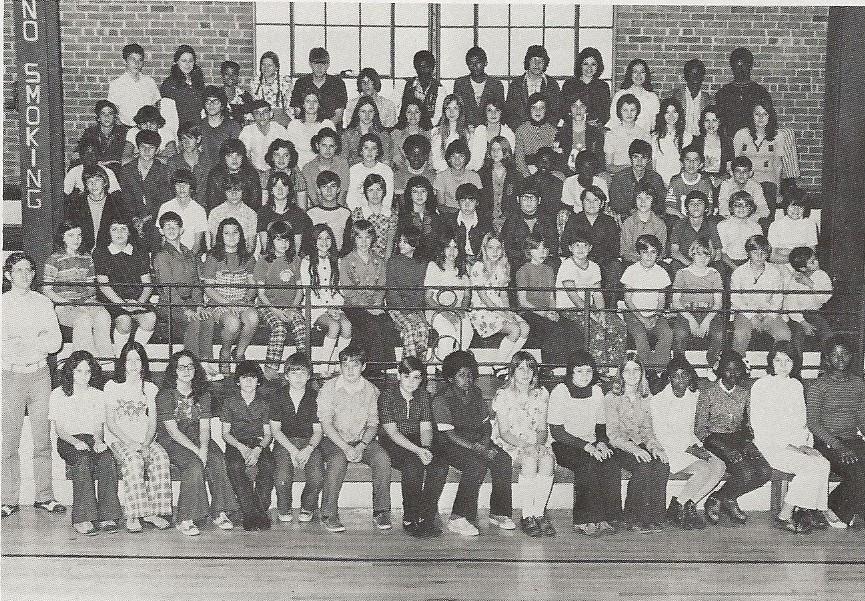
(May 1975 - LAHS Band - Grades 6-12)
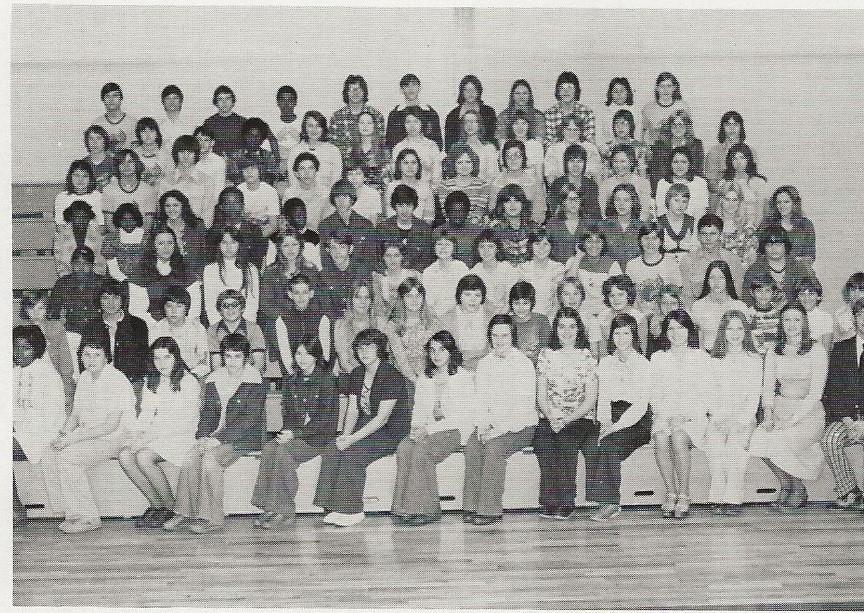
(May 1976 - LAHS Band - Grades 9-12)
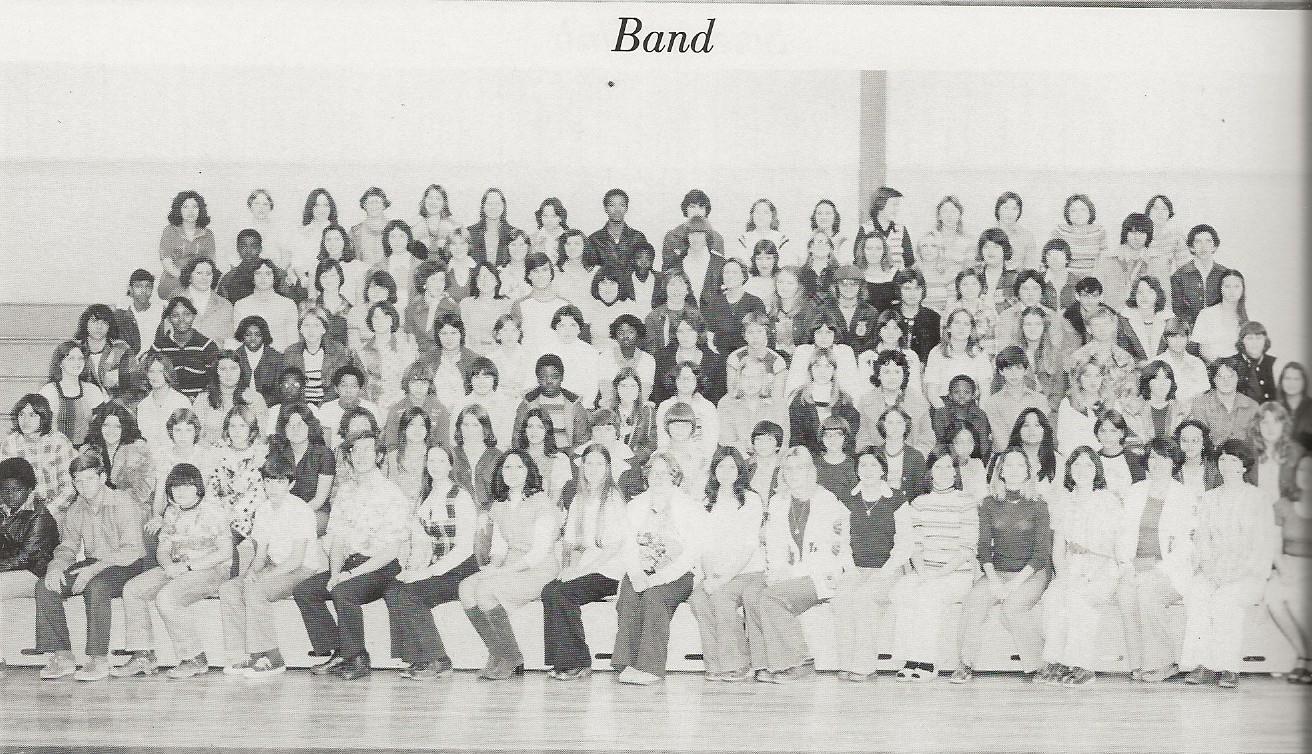
(May 1977 - LAHS Band - Grades 9-12)
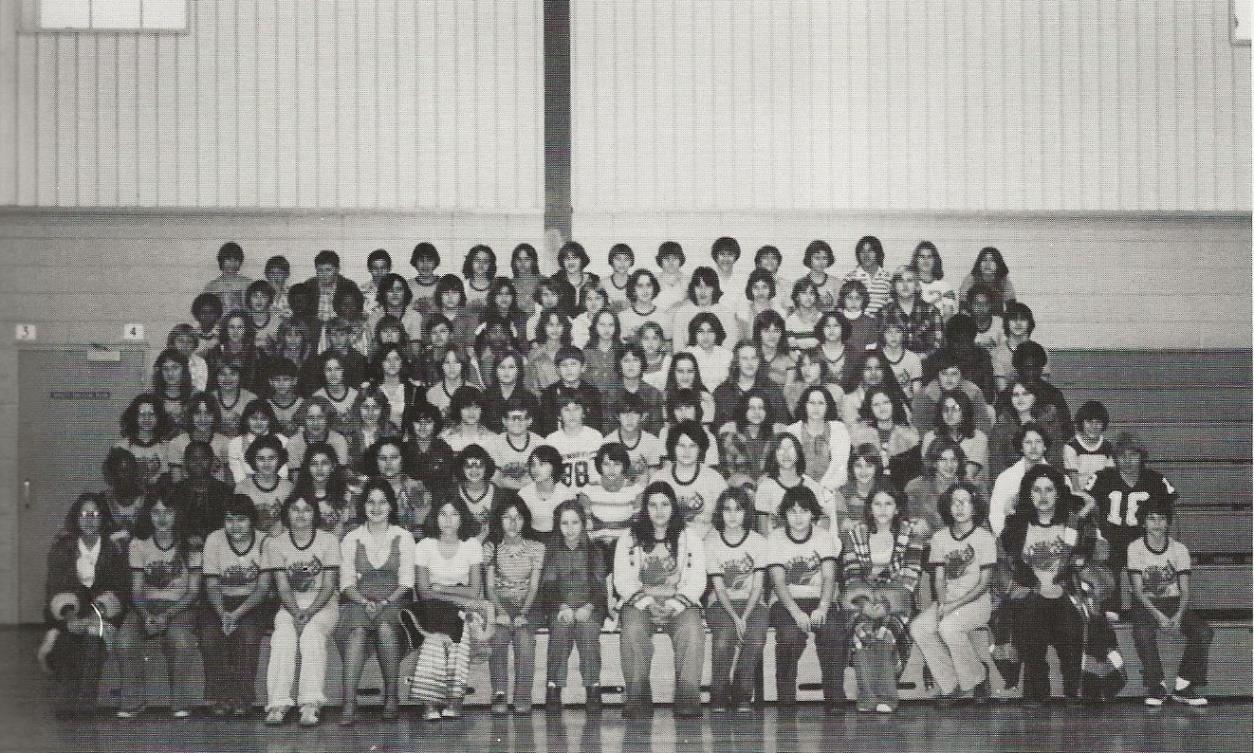
(May 1978 - LAHS Band - Grades 6-8)
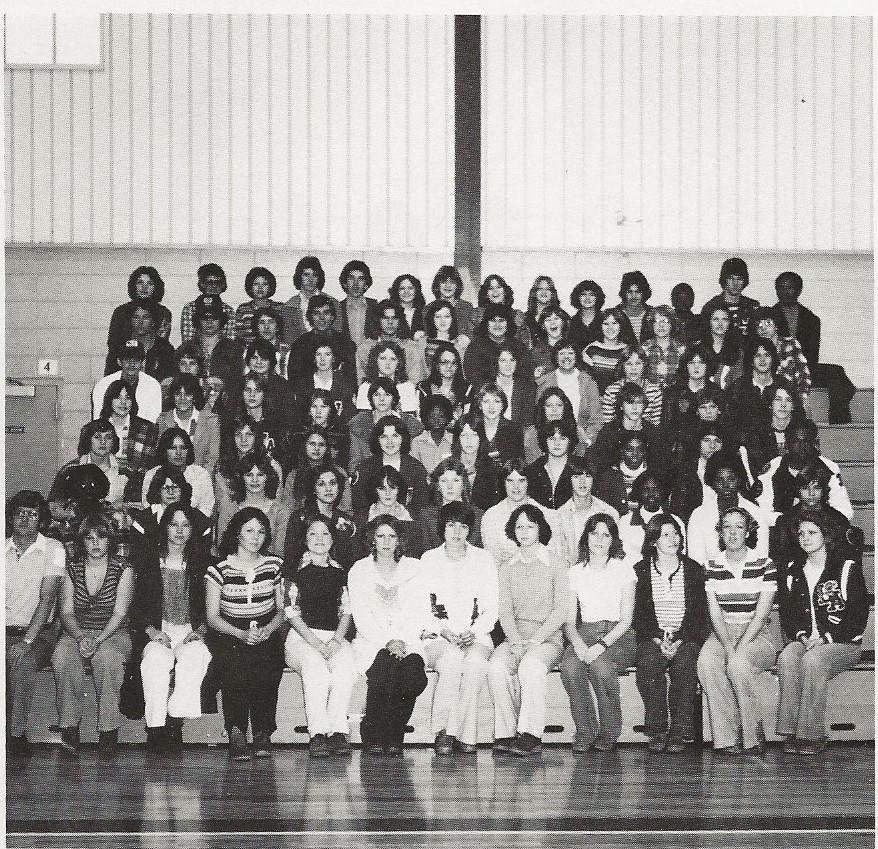
(May 1978 - LAHS Band - Grades 9-12)
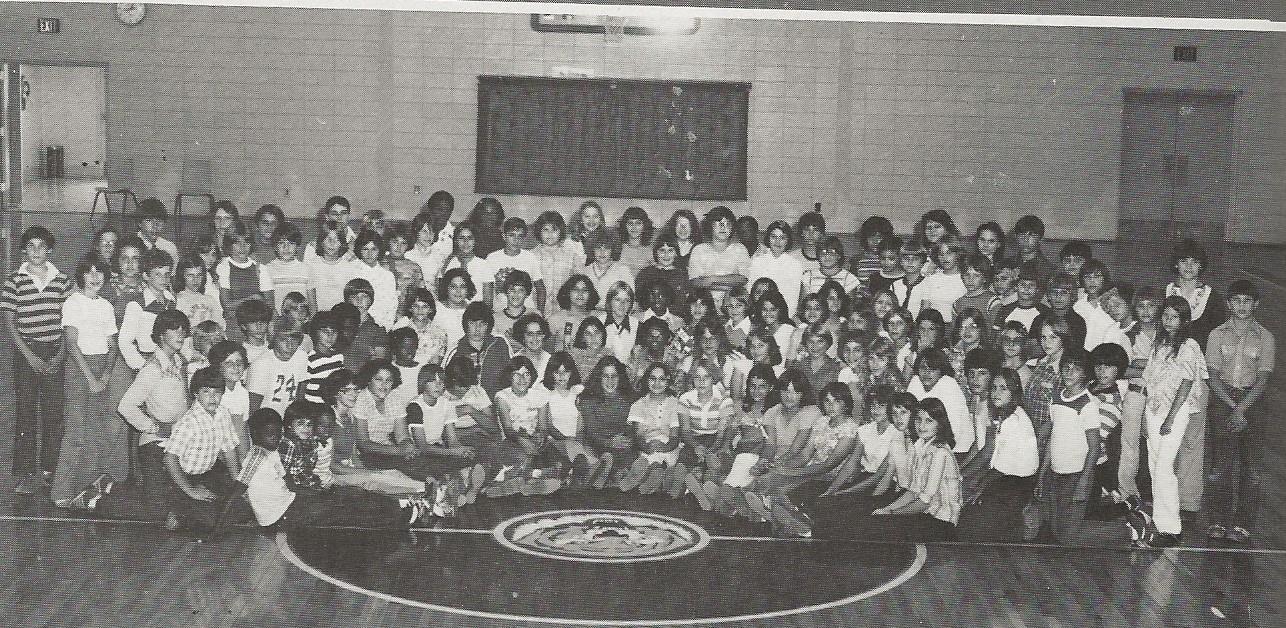
(May 1979 - LAHS Band - Grades 6-8)
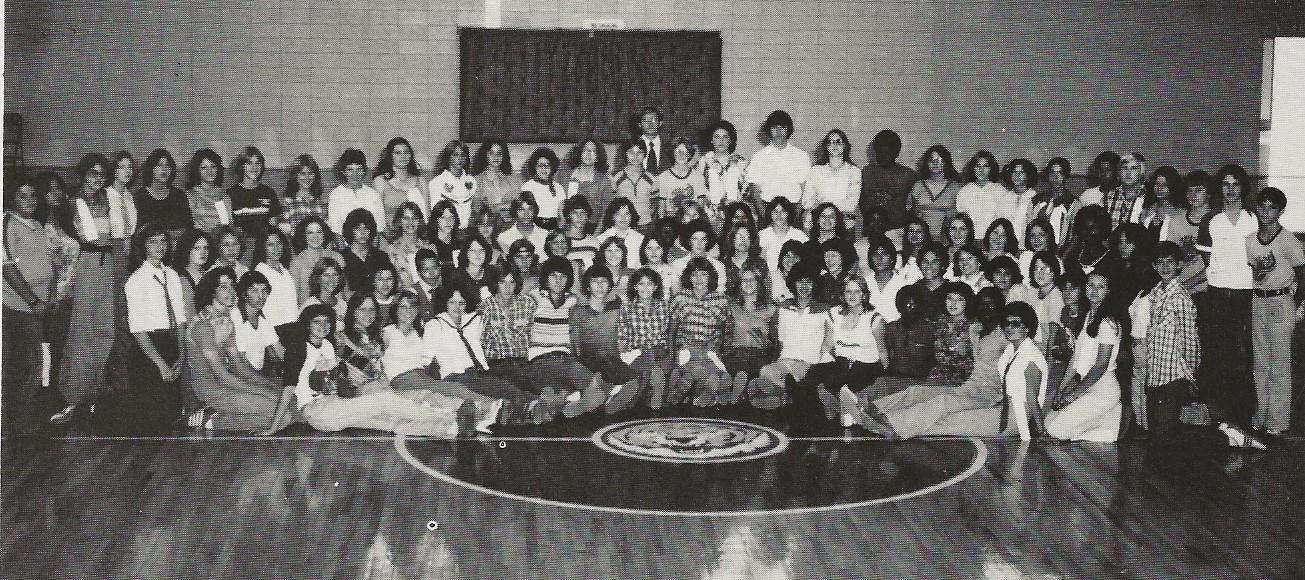
(May 1979 - LAHS Band - Grades 9-12)
Under Eddie Thompson's new leadership, the Pride and Spirit Tiger Band continued to flourish and achieve. With Mr. Thompson at the helm, LAHS earned many accolades well into the 80s.
Likewise, the succession of Drum Majors from Cathy O'Blanc to Eva Giles helped cementLAHS'sextraordinarystudentleadershipoveranentiredecadeofexcellence. The band has continued to represent Lake Arthur well and has experienced several periods of resurgence since the mid-1980s.
Many Pride and Spirit Band members also continued to attain outstanding achievements outside the band room. For example, in the 1979-1980 school year, Edward Dupuis and David Green were LAHS Co-Valedictorians, and Joan Guidry was Salutatorian. Lola Broussard was named Miss Lake Arthur and LAHS Most Beautiful.
Most notably, the return of one of LAHS's native sons and Pride and Spirit's original members as band director, David Landry, resulted in significant growth and performance excellence in district and state competitions. Lake Arthur remains a "Band Town." It always has been and always will be.
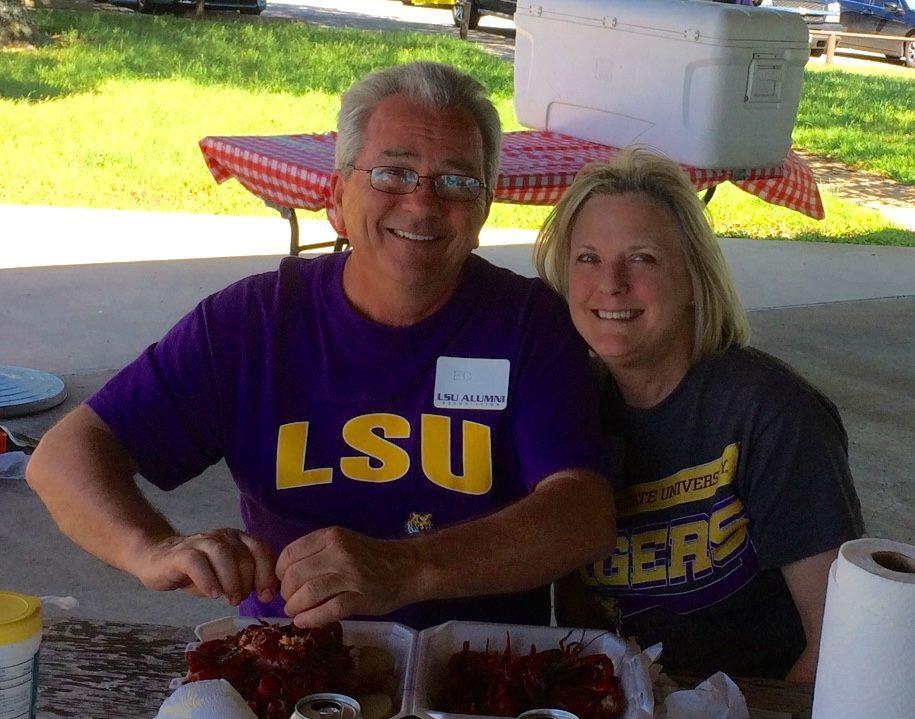 (Eddie and Sherry Thompson.)
(Eddie and Sherry Thompson.)
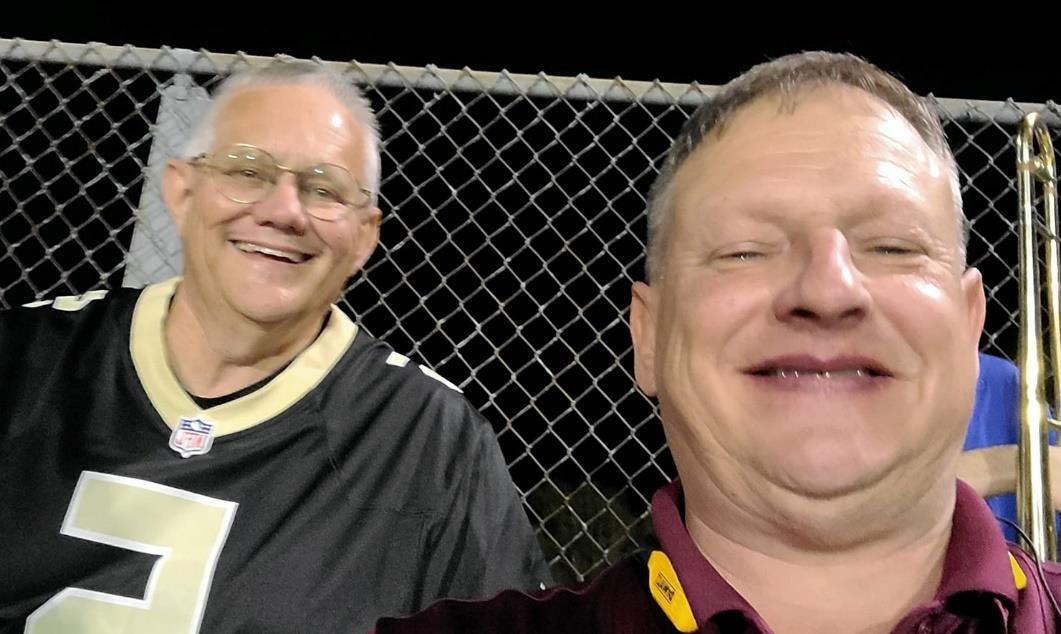
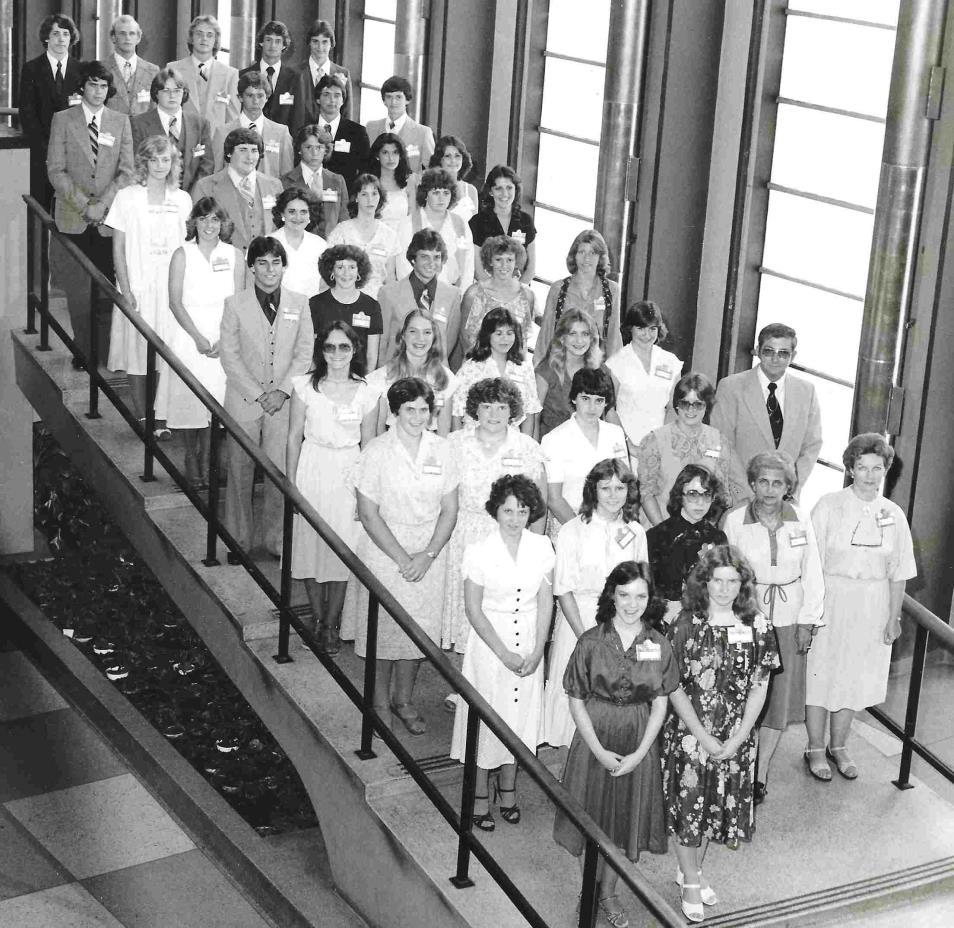
(1979-1980 UN Tour Representatives also included Pride and Spirit members
.)
(David Landry and Terrence Harrington.) Donna Comeaux, Joan Guidry, Jovita LaPoint, Cathy O’Blanc, David Green, and Edward Dupuis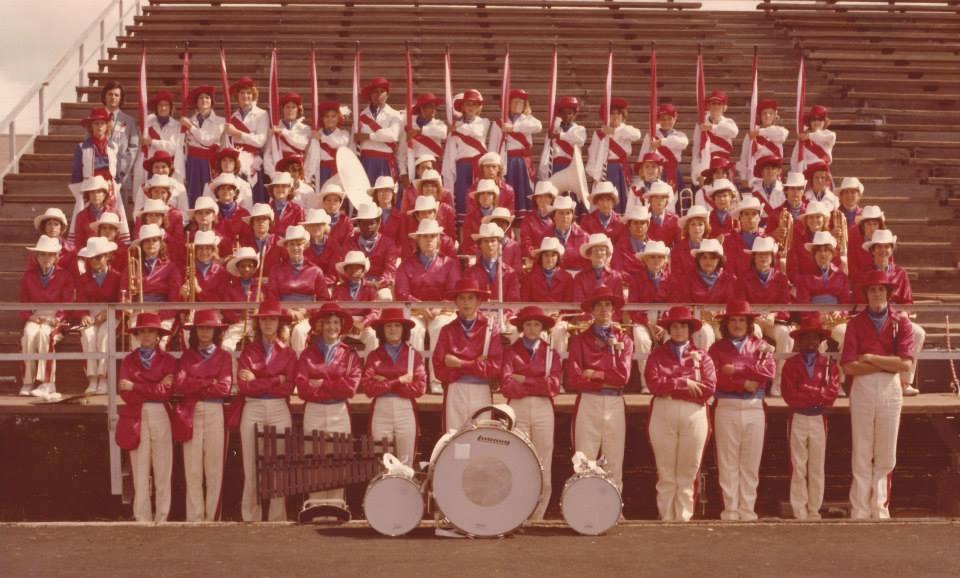
(1980 LaGrange Marching Festival)
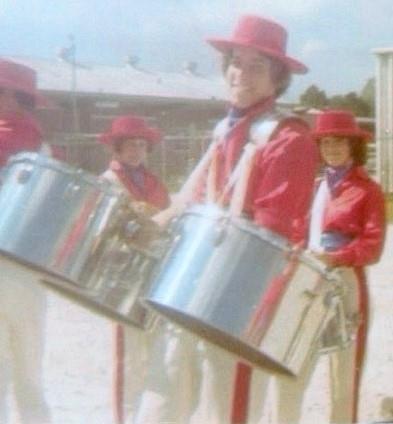
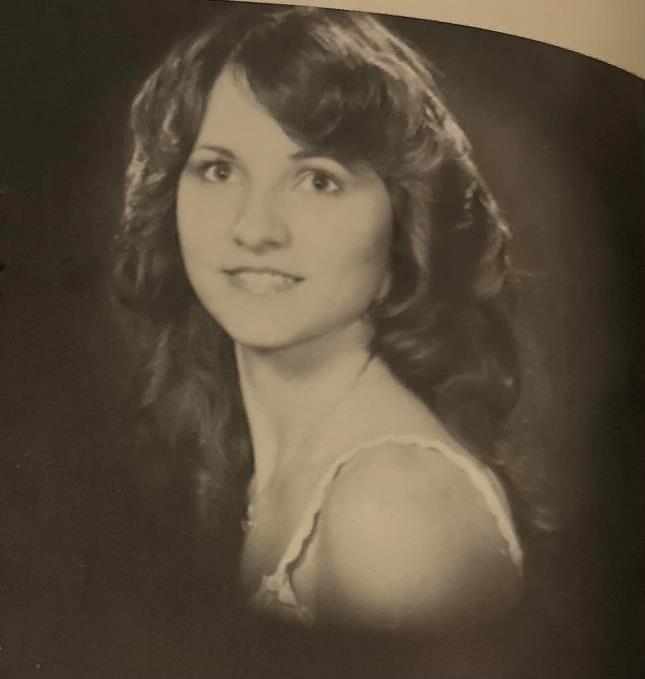 (David Green – Drum Captain and Co-Valedictorian and Lola Broussard - Rifle Captain and Miss Lake Arthur.)
(David Green – Drum Captain and Co-Valedictorian and Lola Broussard - Rifle Captain and Miss Lake Arthur.)
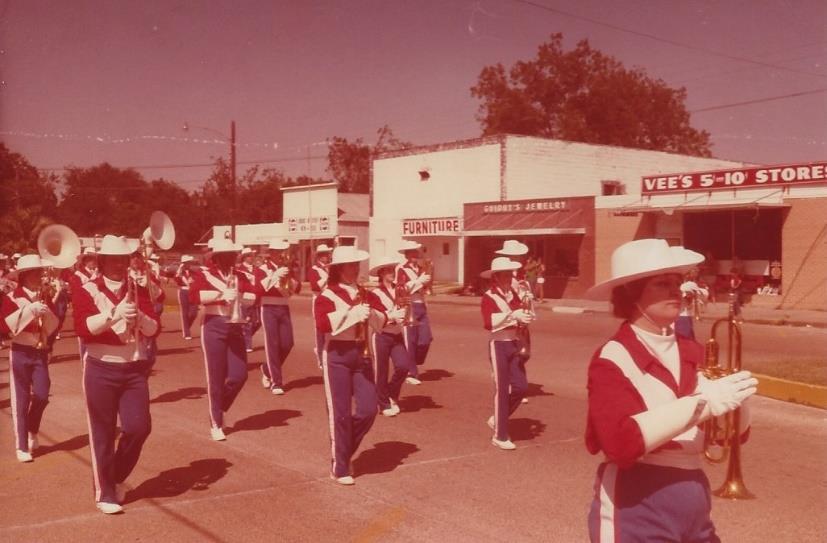
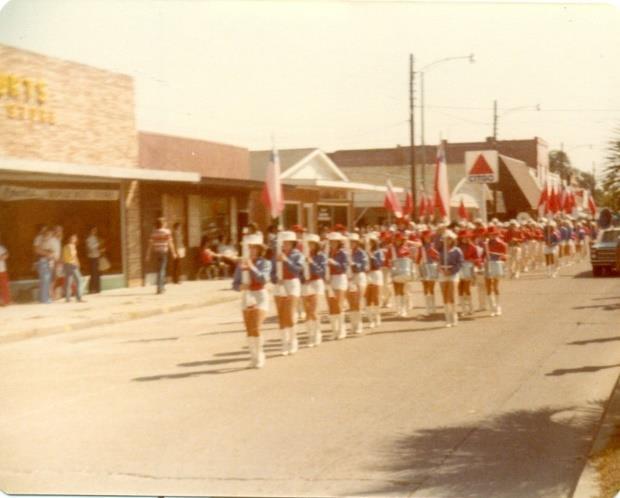
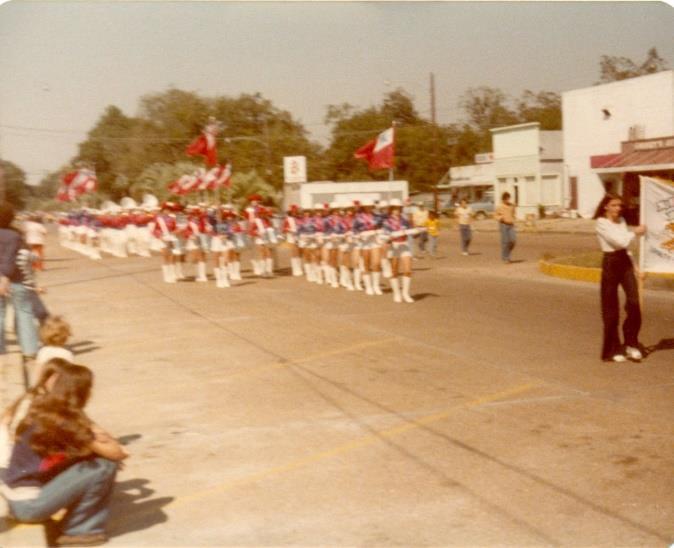
.)
(On Parade in downtown Lake Arthur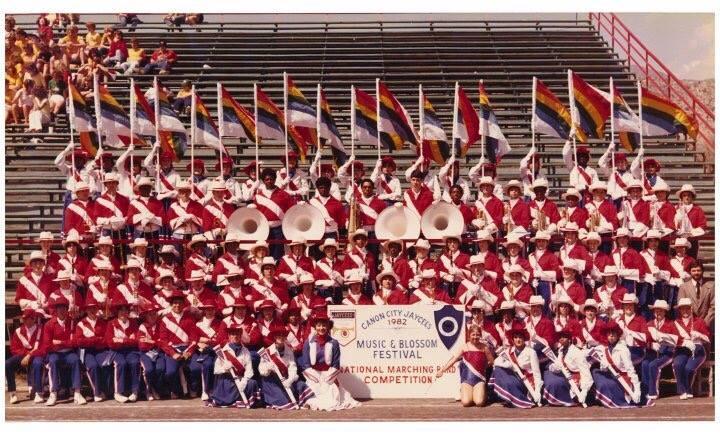
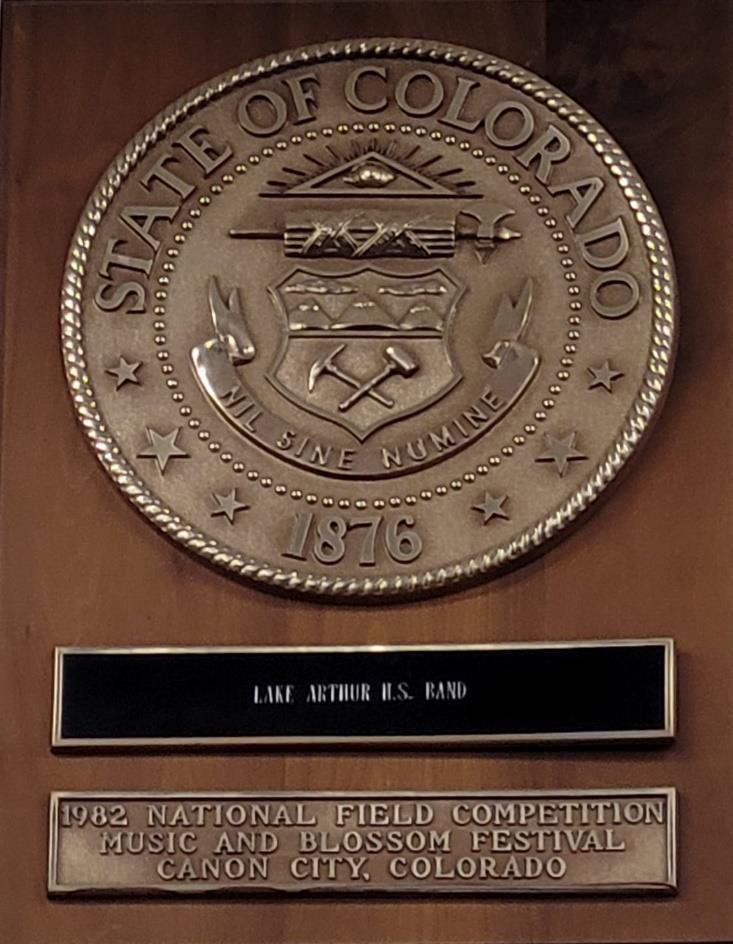 (1982 Colorado Music and Blossom Festival)
(1982 Colorado Music and Blossom Festival)
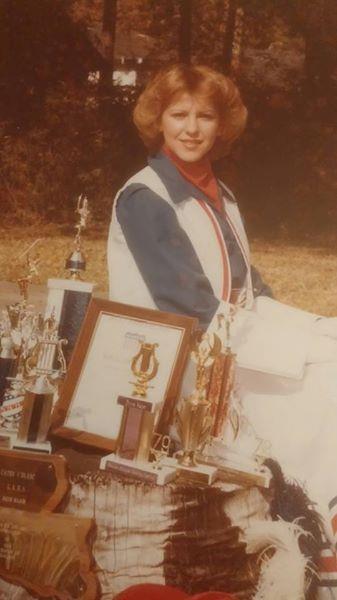
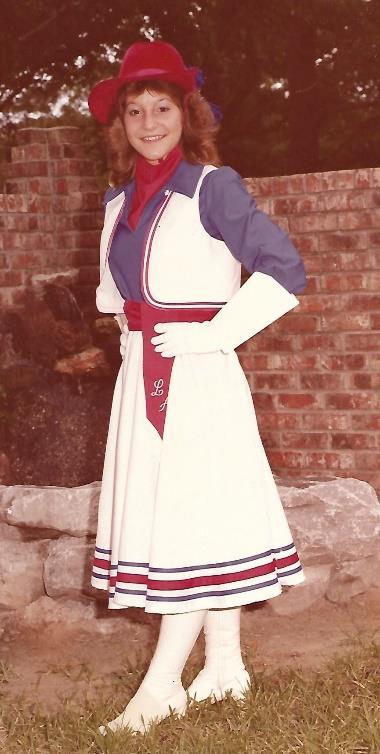
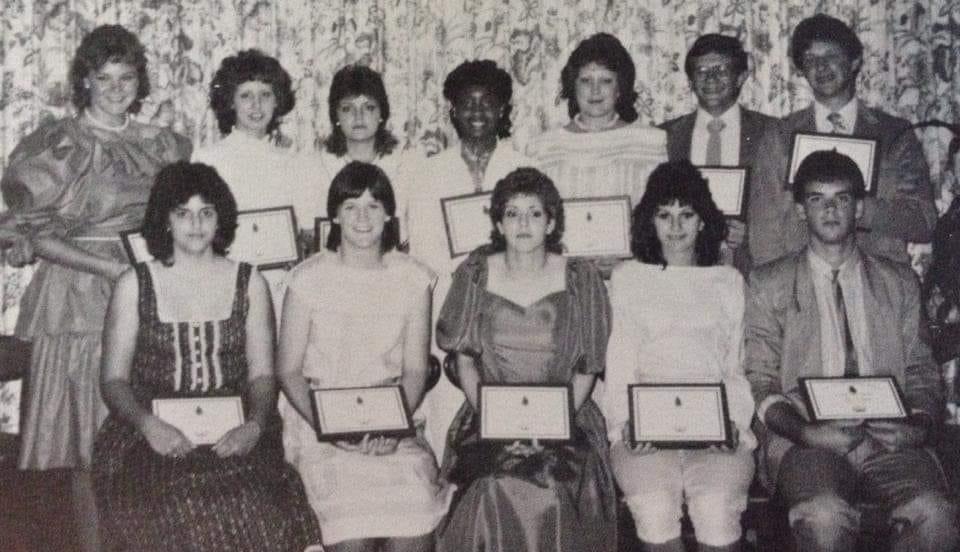
(Photo Contribution by Terrence Harrington of the 1984 Band Banquet. Back row L to R, Susan Trahan, Tammy Onellion, Ann Boykin, Bernadette McZeal, Donna Broussard, David Landry, and Terrence Harrington. Front row L to R, Cherie Miller, Racheal Guidry, Stacey LaCombe, Traci Cain, and Mike Chapman.)
(Drum Majors - Cathy O’Blanc and Eva Giles.)The Story behind the moniker “Pride and Spirit ”
Our band’s “Pride and Spirit” moniker was born in movies and books I experienced as a child. Those two words became the perfect “twin north stars” that guided me and my quest to resurrect the LAHS band program.
By the time I was out of diapers, military history thoroughly entranced me. I played with little green and tan plastic soldiers and created army camps and battles underneath my parent’s elevated bed. My mother said the little soldiers werethe best babysitters I ever had.
I was also a preadolescent baseball junkie. My Dad cheered for the Dodgers, but I was secretly a devoted Yankees fan.
Throughout my childhood, I read books and watched movies about heroes in baseball and World War II. These had a profound influence on my concept of pride.
Likewise, my adaptation of “espritde corps” (Spiritof the Corps) resulted from my childhood reading and viewing films about The French Foreign Legion.
Spirit of the Corps is the capacity of a group’s members to maintain belief in an institution or goal, particularly in the face of opposition or hardship. The spirit of a group of people pulls them together persistently and consistently in pursuit of a common purpose.
My teenage participation in baseball and adult training as an army officer further impacted my thinking and sense of commitment to the words “pride” and “spirit. ” Here are some of the movies and books that greatly inspired me.
Pride of the Marines was a 1945 American war film based on the true story of a U.S. Marine who fought in the Battle of Guadalcanal. The first part of the movie is focused on this marine’s heroic actions during a Japanese attack in which he was blinded by a grenade and his subsequent rehabilitation.
The Pride of the Yankees is a 1942 American sports film. It is a tribute to the legendary New York Yankee Lou Gehrig, who died a year before its release, at age 37, from ALS, which later became known to the lay public as “Lou Gehrig’s
disease.” Though subtitled The Life of Lou Gehrig, the film is less a sports biography than an homage to a heroic and widely loved sports figure whose tragic and premature death touched the entire nation.
Beau Geste is a novel that details the adventures of three English brothers who embraced “esprit de corps” serving in the French Foreign Legion. The story is set in the period before World War I and has been adapted for the screen several times.
 (Greg English designed the original logo for the “Pride and Spirit Band. ”)
(Greg English designed the original logo for the “Pride and Spirit Band. ”)
The Pride and Spirit represented the full spectrum of the school body.
We discovered strength and unity through diversity.
In most schools, students tend to gravitate towards a single group, organization, or clique based on their interests or talents. However, I can bear witness to the fact that during my time at Lake Arthur, the administration did a tremendous job in creating an atmosphere and sustaining a culture whereby students had a broad range of opportunities and activities.
While some students did gravitate to a specific activity, club, or organization, the coaches, club sponsors, and faculty leaders were not only willing to share the wealth of student talents, but they also encouraged students to diversify their experiences.
As I thumb through the yearbooks representing my time as band director, I take extraordinary pride in seeing the band members play an expansive role in the big picture of LAHS.
Pride and Spirit members were represented in every club, organization, and athletic team In most cases, they held leadership roles or were star performers
Likewise, when one looks at yearbook entries of honor graduates, class favorites, homecoming courts, yearbook staffs, literary rallies, social study fairs, science fairs, livestock shows, Who's Who, Pelican State, scholastic award banquets, athletic award banquets, and class officers, a multitude of Pride and Spirit members' faces will be seen repeatedly
Embracing the traditions of diversity, I also took on various roles outside the band. When I no longer taught general music classes, I began sponsoring the senior class, student council, and cheerleaders. I enjoyed being one of the designated drivers/chaperones for the girls' basketball team.
As cheerleader sponsor,I proposed to Mr. Dobsonandthe parents that we have two sets of cheerleaders, one group for the football season and one for the basketball season.
We thus doubled the number of girls who had the chance to be a high school cheerleader Most basketball cheerleaders were essential Pride and Spirit marching band members, while numerous football cheerleaders participated in our concert band.
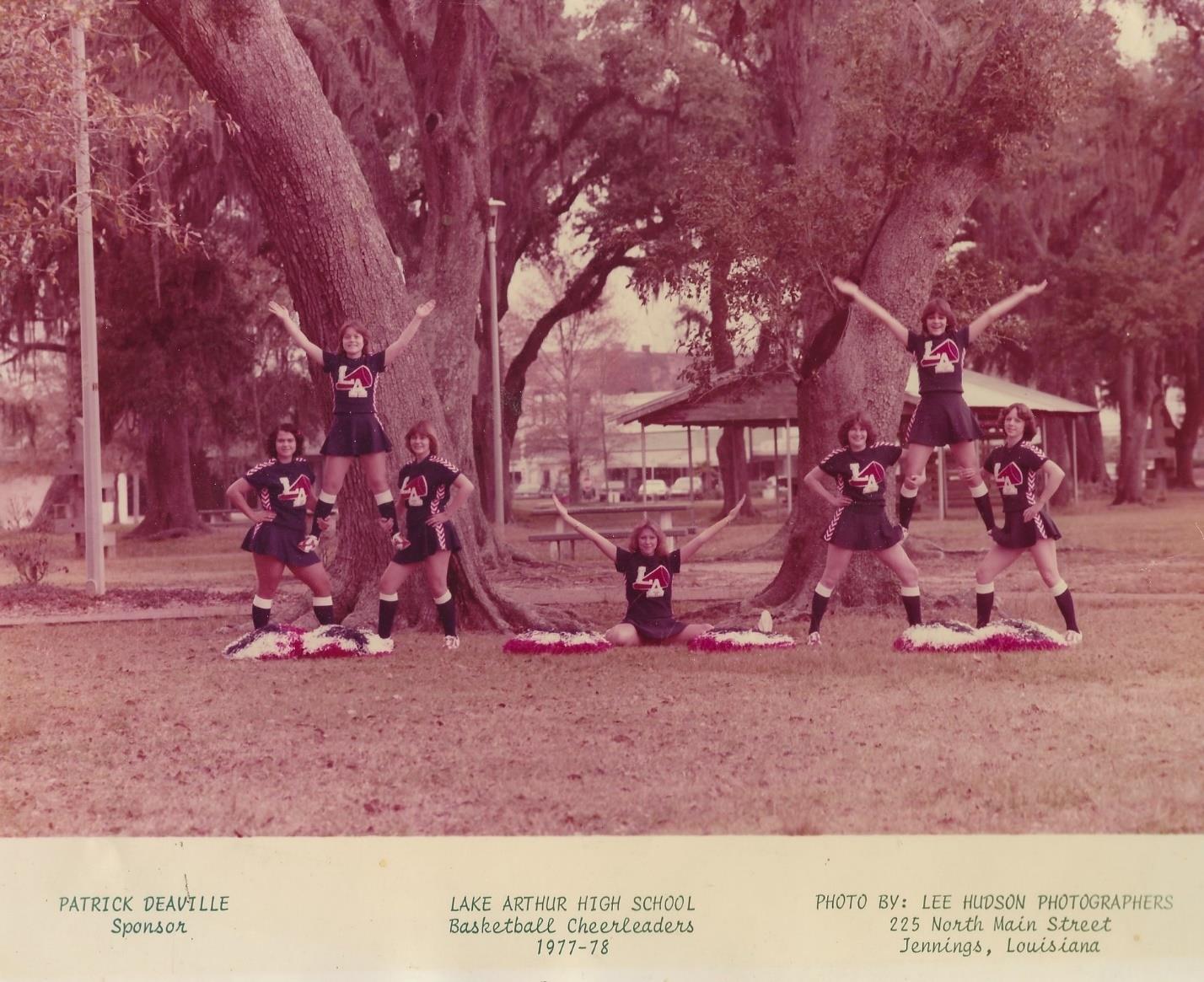
(1977-1978 Basketball Cheerleaders)
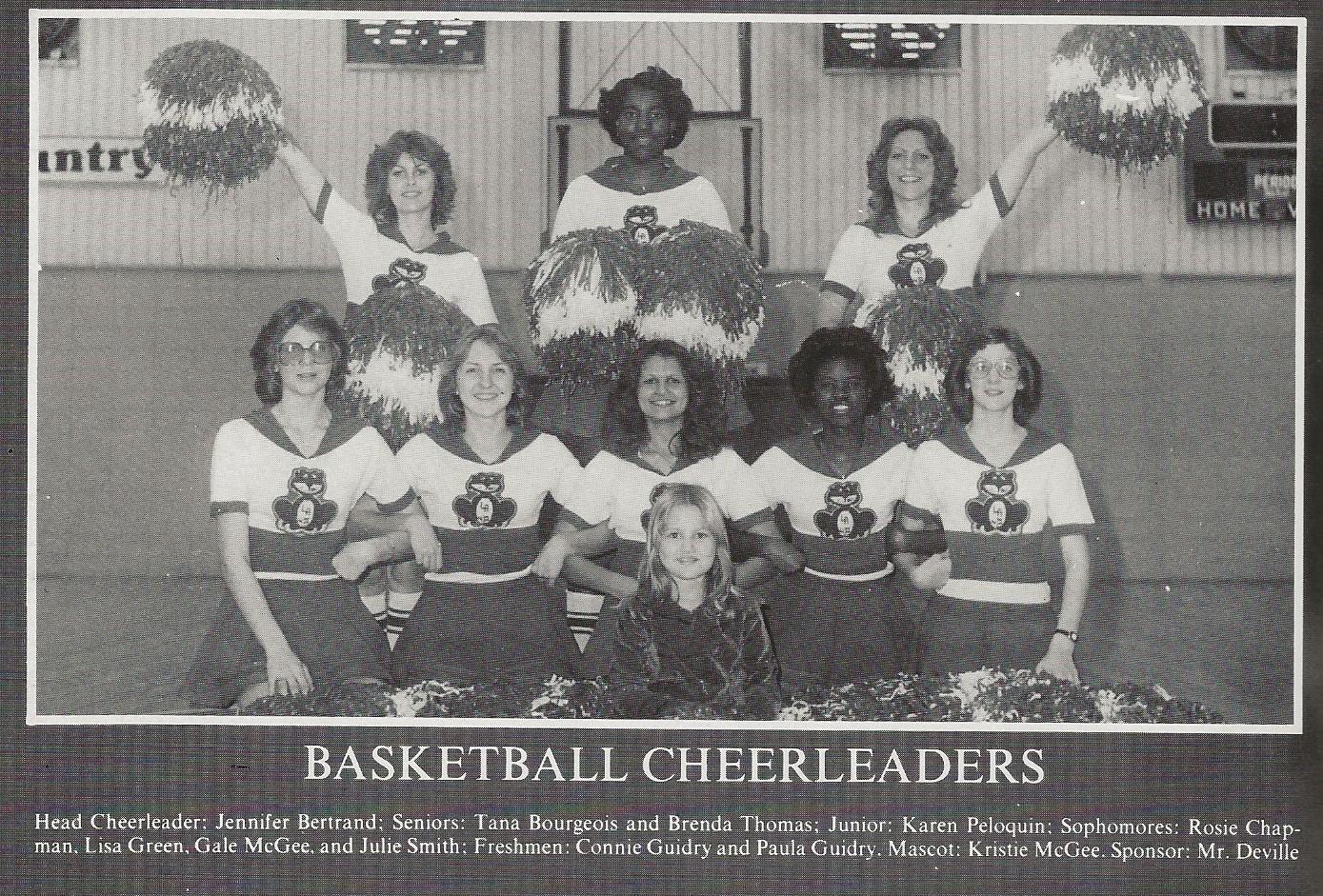
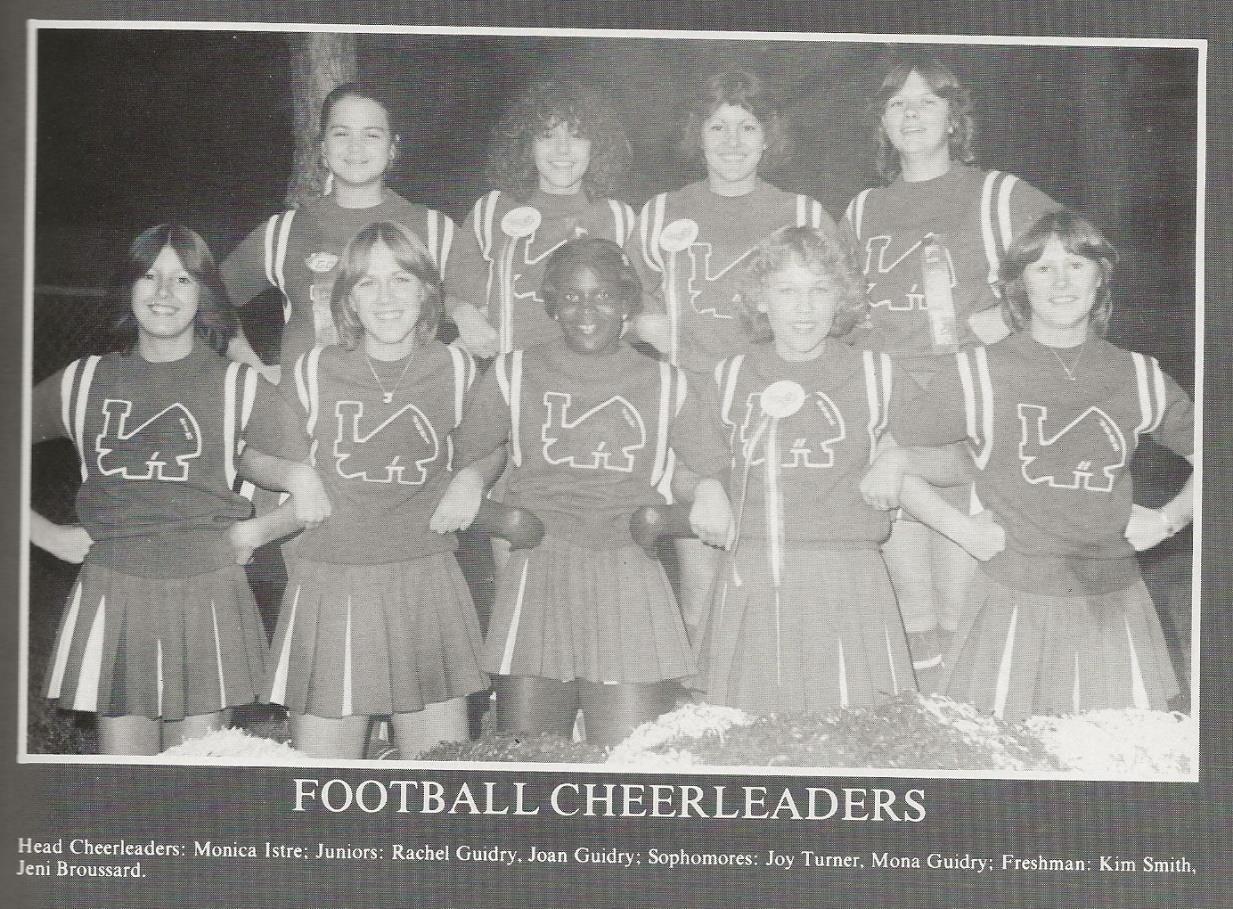 (1978-1979 Basketball Cheerleaders)
(1978-1979 Football Cheerleaders)
(1978-1979 Basketball Cheerleaders)
(1978-1979 Football Cheerleaders)
Sampling excellence and bonding through travel.
Every time our band got on buses, we became more of a tight-knit family. It didn't matter if the buses were yellow hounds or charters. The length of the trip was irrelevant. Bonding was the essential factor.
Whether traveling to ballgames or music events, the human experience of being together was an enduring part of the Pride and Spirit story. Some members were well-traveled because of their family or participation in other organizations. However, many students within the Lake Arthur community had limited opportunities to be "on the road."
Early in the Pride and Spirit years, we took two memorable trips that helped unify us and provided an opportunity to clarify my vision for the band program.
I wanted our students to hear some of the finest bands in the nation. I needed them to be exposed to the mature qualities and artistic precision of outstanding ensembles in live performances.
Our trips to the district concert festivals did not provide for this sort of listening experience. These festivals were basically "day trips" on school buses. We only had time to get to the festival site, perform, grab a bite to eat, and return to school so the buses could run their afternoon routes.
Our first significant road trip was to Louisiana State University in the spring of 1976. The LSU Symphonic Band concert could provide the live performance we needed to hear. LSU's band director, William Swor, generously gave LAHS all the tickets we needed for our band and chaperones to attend their spring concert in the LSU Union Theatre.
The concert was phenomenal, but the traveling experience for many of our younger members was also exceptionally memorable. I was on the lead bus with mostly junior high band members as we approached the Mississippi River Bridge. These normally talkative students were suddenly silent.
Silence on a bus filled with this age group is an eerie experience. For a moment, I thought something terrible had happened. But as we began to rise on the bridge, I turned around and saw the students staring out the windows.
One sixth-grade student asked me in a whispering voice, "Is that really the Mississippi River?" I responded that it was and then pointed out the State Capital on the left and Tiger Stadium on the right.
In moments like that, the inner voice that had convinced me to sign that contract to be in Lake Arthur would speak up and ask, "Do you now understand why this was the right thing to do?"
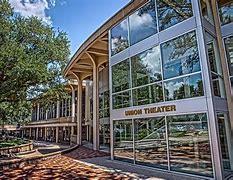
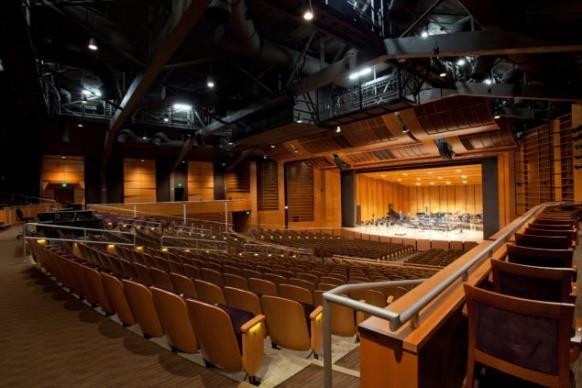
The Baton Rouge trip was only a "long" day trip into the late night. The Pride and Spirit's next trip, in the spring of 1977, was a multiday event that involved overnight accommodations, as the destination was the Six Flags over Texas Amusement Park in Arlington, Texas.
Six Flags sponsored an annual invitational band festival that drew numerous topperforminghighschoolbandsfromTexas,Oklahoma,andArkansas.Weweregoing to listen to many of them each morning. Then, students would go into the park for food and entertainment during the afternoon and evening.
I took the adjudication sheets used by the official festival judges, simplified them somewhat, and made over a thousand mimeographed copies. (Thank you, Mrs. Broussard.)
The students had to complete a sheet on every band they listened to. And yes, I read every single one of them. I also talked to individual students about what they liked and were willing to do to stretch themselves while reaching this level of achievement.
The quality of the performances mesmerized the parents and chaperones. My vision for our band program became even more evident.
Of course, we managed to have a great time beyond the educational aspects of the adventure. But that is also an essential part of the band experience. Throughout my long career in music education, I have discovered that students and parents remember much more about the bonding on such trips than trophies and plaques.
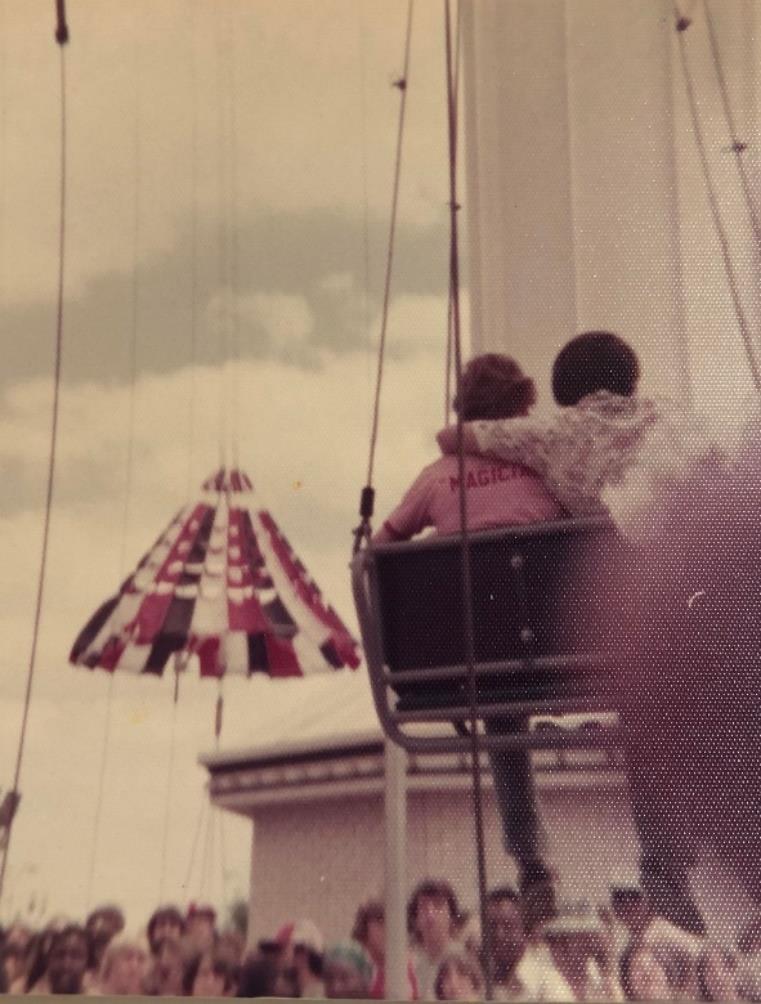
(Alvin Richard and I do the “parachute drop” to amuse band members.)
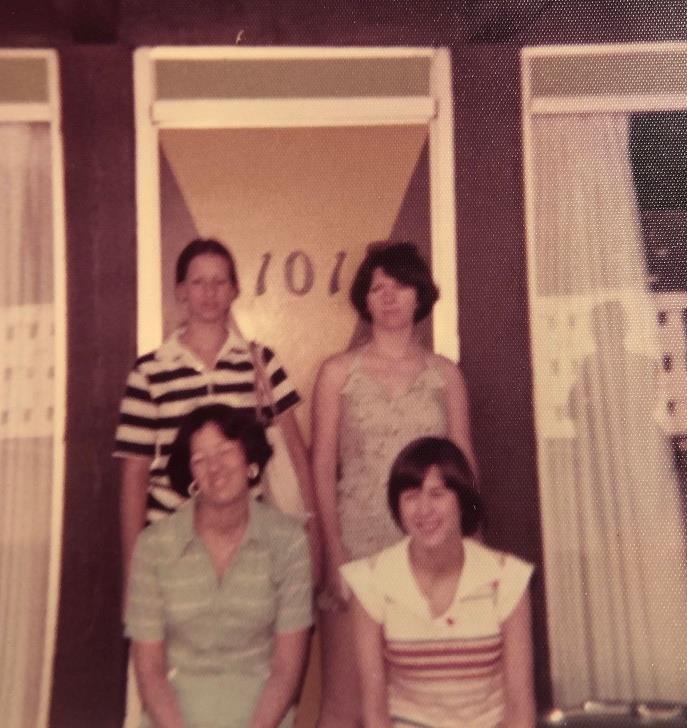
(Roommates on the Six Flags trip included key senior leaders Beth Broussard, Colette Trahan, Tracey Guidry, and Lori Carter.)
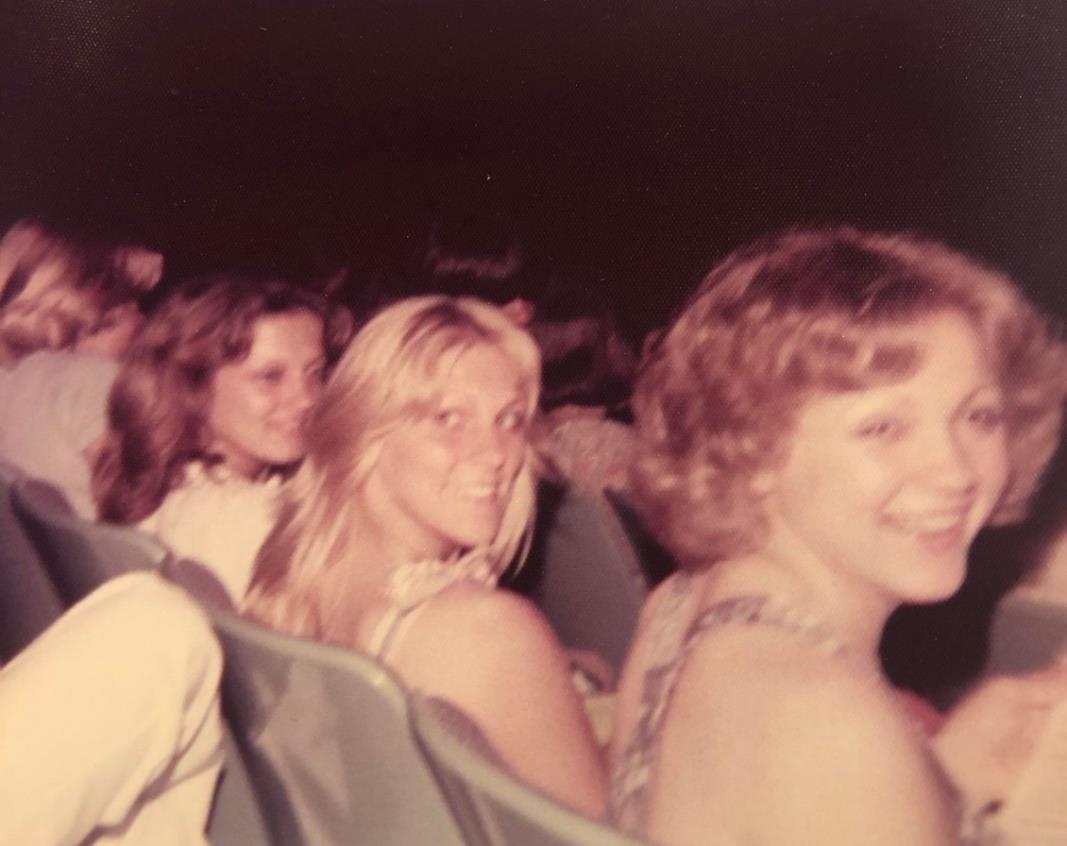
(This photo was taken at Six Flags. These three Pride and Spirit members were selected as Miss Lake Arthur in successive years: Melanie Bonin, Jennifer Bertrand, and Bridget Bonin. Lola Broussard would be chosen as Miss Lake Arthur in 1979-1980, giving the Pride and Spirit four consecutive Miss Lake Arthur titles.)
The University of Southern Mississippi (USM).
My collegiate band director, Kelly Love, and his wife, Georgane Love, greatly influencedmydevelopmentandapproachtoteachingmarchingband. However,they moved from McNeese State University to the University of Southern Mississippi during my time in the U.S. Army
Mr. and Mrs. Love were graduates of Ole Miss and had taught together in Starkville, Mississippi, before their tenures at McNeese.
During Year One of the LAHS Pride and Spirit era (1974-1975), Mr. Love asked if I couldteachdrum majorsatUSM's1975 summer camp for auxiliary units and drum majors.
I was thrilled and honored, and I quickly asked if I could bring along some of my students as we planned to kick off the Pride and Spirit marching band in the fall of 1975. At Mr. Love's urging, USM worked out a discounted fee for our members that first summer.
The USM Camp was among the most elite camps in the country. It drew flag corps, rifle corps, twirlers, and drum majors from many of the best bands across the southeastern United States.
I served as an instructor for four consecutive summers, beginning in 1975. The Pride and Spirit auxiliary units were always well represented. We did not send every corps member every year, as many of our students had other summer commitments or family vacations planned during that second week in July. But we always had a strong contingent led by our captains and key members.
The camp not only increased the skill of our LAHS attendees but also exposed them to the latest techniques and trends that would be utilized by the top units throughout the South in the fall marching band festivals. Equally crucial at USM camps was competition. Intense competition. We needed that challenge. The instructional staff was packed with top-flight experts in their field. Mississippi legends such as Tom Fraschillo of Meridian, Mickey Groves of Kosciuszko, and Fred Adkins of West Point were outstanding teachers and leaders.

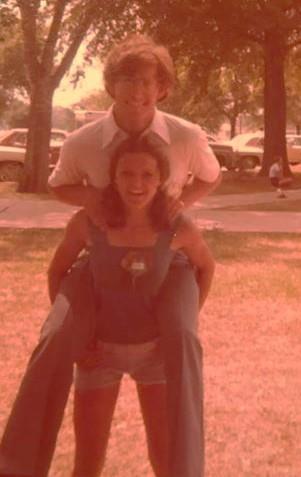
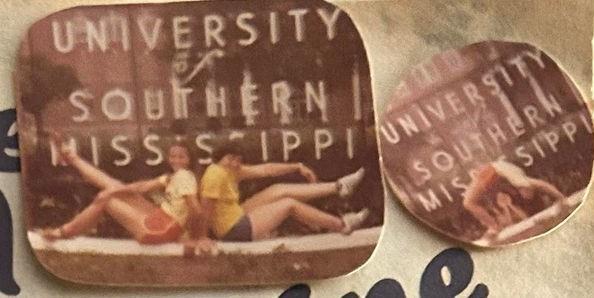 (Pictured at USM with Jennifer Bertrand and MaDonna Hargrave.)
(Lola Broussard took fun photos between all the work.)
(Pictured at USM with Jennifer Bertrand and MaDonna Hargrave.)
(Lola Broussard took fun photos between all the work.)
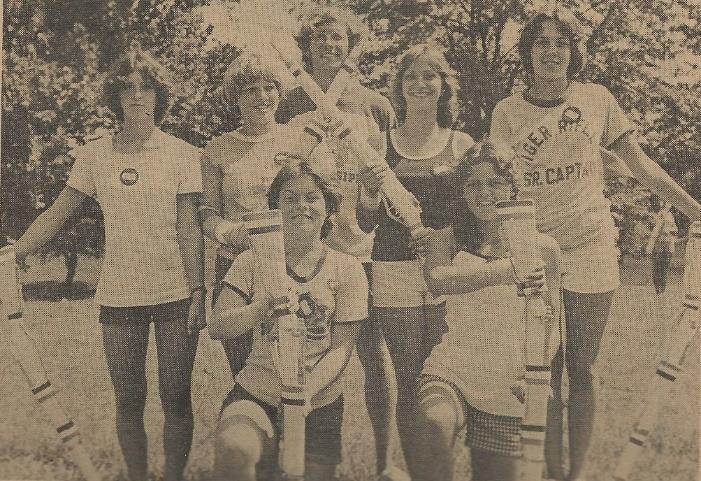
(Pictured in the Rifle photo (kneeling l to r) are Tina Perry and MaDonna Hargrave. (Standing l to r) Aretha Richard, Melissa Broussard, Pat Deaville (Band Director), Sandra St. Germain, and Lizanne Carter.)
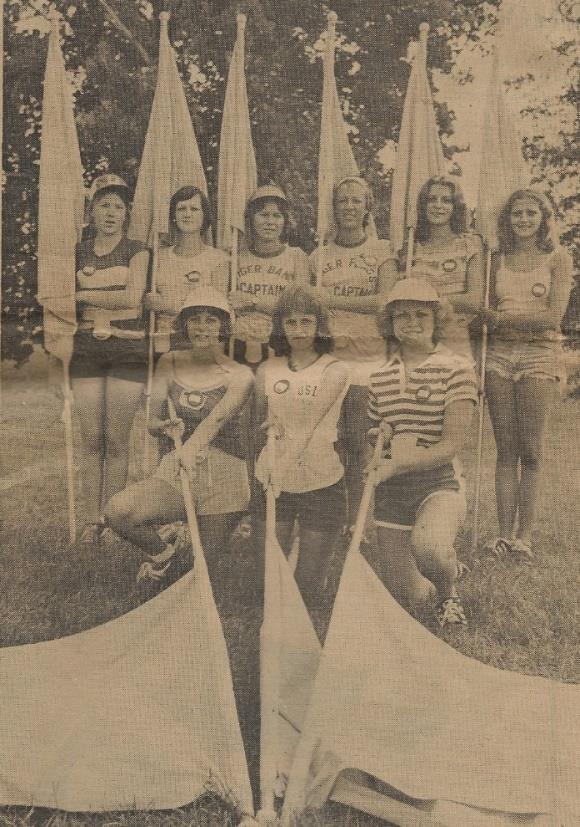
(Pictured in the Flag photo (kneeling l to r) are Tana Bourgeois, Pam O’Blanc, and Melanie Bonin. (Standing l to r) are Becky Hanks, Shelia LeJeune, Geralyn Guidry, Tracey Guidry, Margo Dugas, and Bridget Bonin.)
I was an instructor by day and a student by night at the USM camps. These Mississippi legends never gave me a moment's rest as they drew me into late-night discussions about the best of new music literature, drill design, and auxiliary usage. I was very much a rookie surrounded by seasoned pros. They made me better.
These gentlemen also knew how to give every instructor and auxiliary unit nicknames. Some of the nicknames were inappropriate and unsuitable for inclusion in this book. That's how it was in the 1970s.
Mickey Groves called out in good cheer as the Pride and Spirit group arrived for camp registration one summer, "Well, what have we here? 'St. Patrick and his Angels' have arrived."
I was called “St. Patrick” because I refused to use the "colorful" language popular with the other instructors in our dorm's privacy.
Our Pride and Spirit ladies earned the nickname “Angels” because, according to Fred Adkins, our girls were the hardest working and least complaining unit when drilling long hours under the Mississippi sun. There were few shady locations on the USM campus.
Our Pride and Spirit drum major and assistant drum major participated in the drum majoring portion of the camp. During my first year as an instructor, there were 80+ drum majors enrolled in my class. Some were veterans, and others were just starting out.
By the second and third years, I began using the LAHS drum majors to help me as assistant instructors as the total number of drum majors signed up for my class kept growing yearly to well over one hundred twenty. Cathy O'Blanc earned great notoriety at USM in competitions and served with me on the instructional staff at the Arkansas Tech Camp.
I developed an extended pamphlet on the art of drum majoring and provided a mimeographed copy to all the attendees. The pamphlet morphed into a book I have used for over 40 years as a drum major judge and clinician.
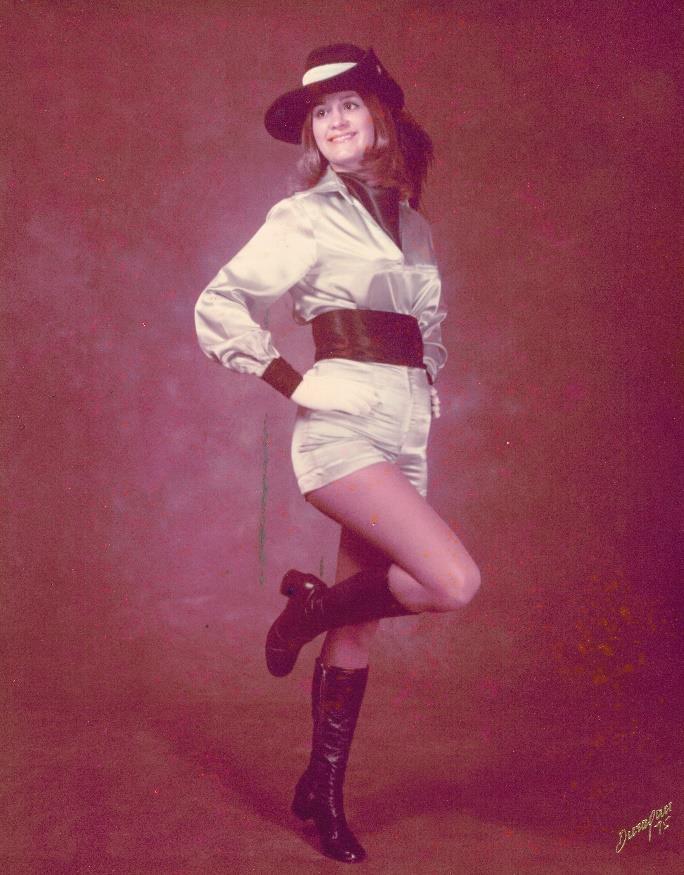
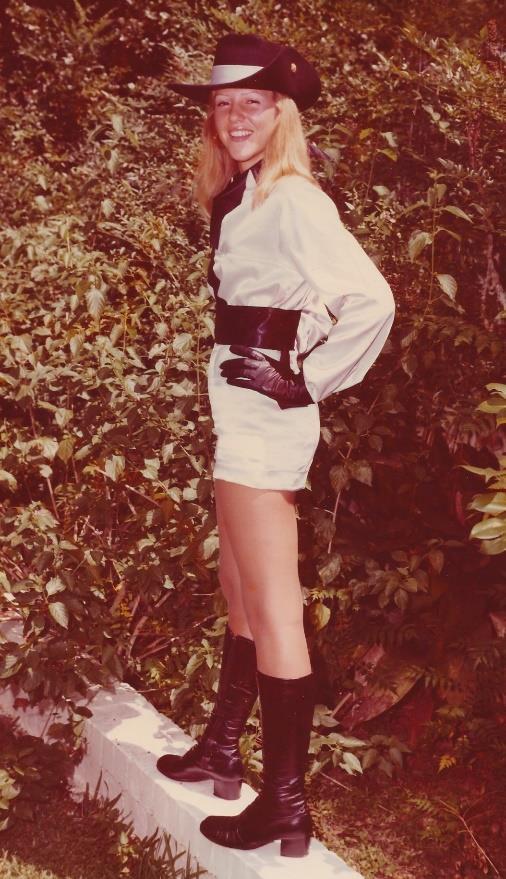
(The “Silver and Black” Drum Major uniform was a “Pride and Spirit” trademark in the early years.)
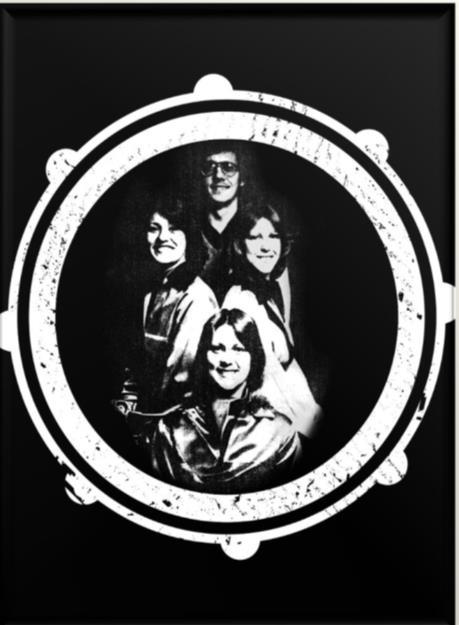
(Collectively known at USM as “St. Patrick and his Angels” Cathy O’Blanc, Donna Comeaux, and Jennifer Bertrand.)
A role with historic traditions.
The role of Corps Captain was unique to the Pride and Spirit marching band in the 1970s. I created the position with multiple purposes in mind.
The initial reason was to add a student leadership role within the ever-growing organization. But the job quickly expanded to include a performance element with the twirling, tossing, and spinning of a saber.
The title evolved from Drum Corps Captain to Guard Captain to Corps Captain during the early Pride and Spirit era. In addition, the position included training in field conducting so that person could contribute as a second or third drum major as needed.
A student of military history, I was familiar with the leadership role portrayed by the traditional “Captain of the Guard.” In military usage, this person was in the commanding position of a security force. The Captain and Guard were typically paraded with sabers displayed over their shoulders.
I had witnessed rifle corps in Mississippi bands that alternated fiberglass rifles with wooden sabers during their performances. But the Pride and Spirit saber was not an imitation made of wood or plastic.
The original saber used by Cathy O’Blanc, which was then passed on to Jennifer Bertrand, was the “Voris King” saber I received upon my graduation from army officer training. It was a solid steel weapon and more dangerous than the fans along the parade routes ever realized.
In the 1979 iconic picture of the Pride and Spirit band marching down Main Street USA at Disney World, our Corps Captain, Jennifer Bertrand, was featured in front of our rifles and flags. It was a stirring image.
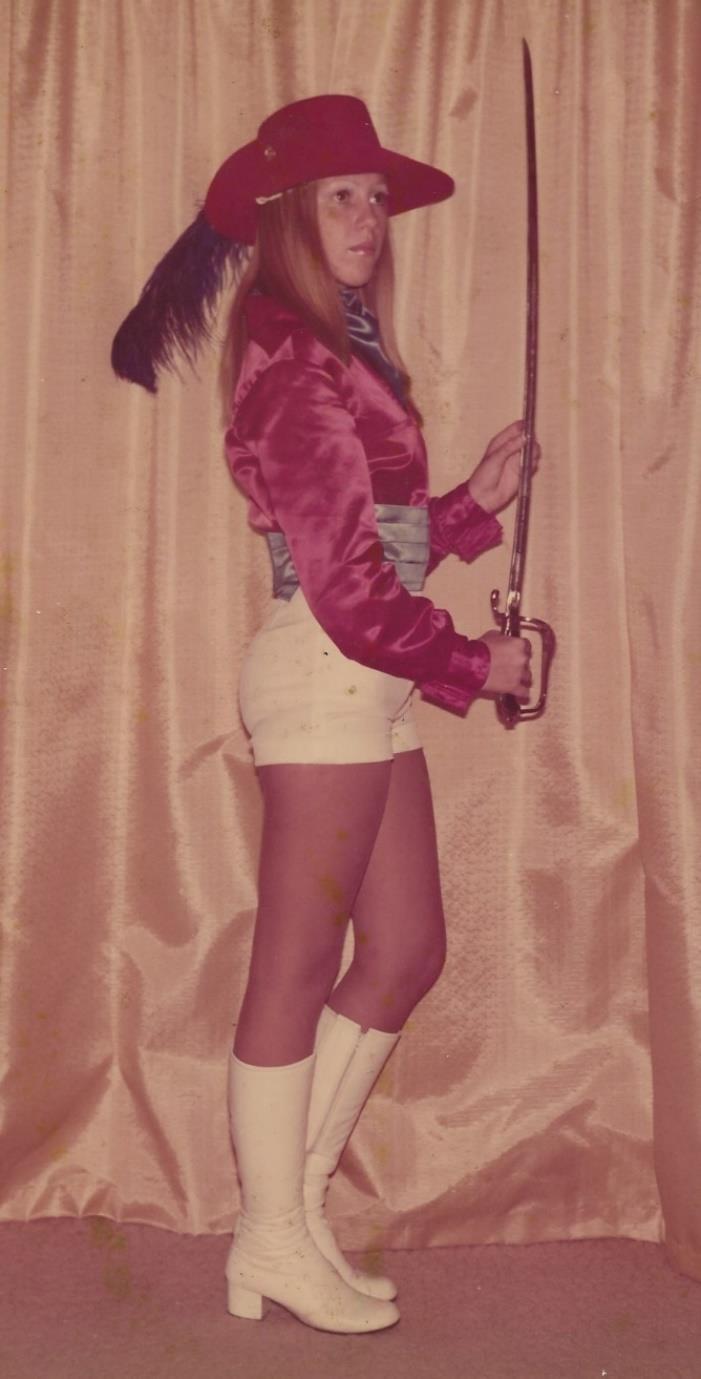
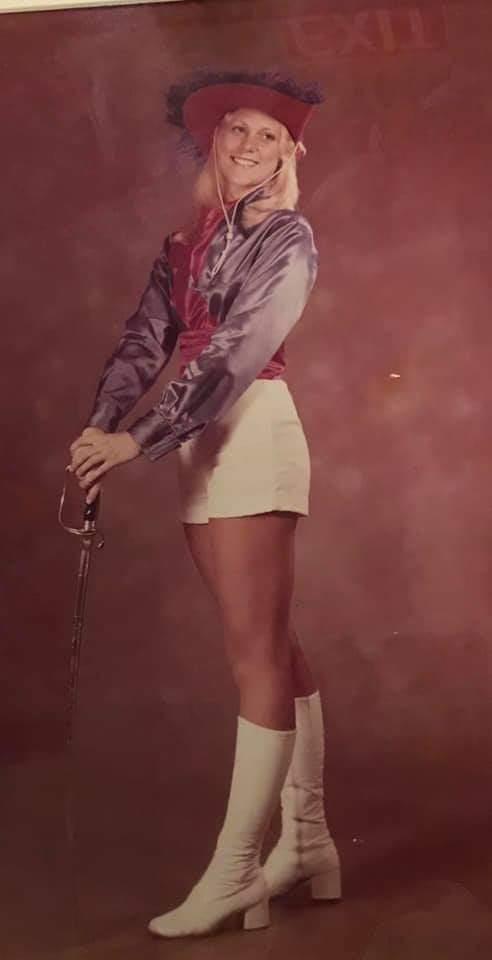
(Cathy O’Blanc was our first Corps Captain. When she became Drum Major, Jennifer Bertrand took on the Corps Captain duties. Jennifer was later named Miss Lake Arthur and LAHS Most Beautiful. Cathy and Jennifer were co-instructors with me at the University of Southern Mississippi camps.)
Bands just wanna have fun!
Footballseason(or,aswecalledit,“marchingseason”)wasalwayslongandintense. I admittedly was a taskmaster who pushed for constant improvement at every rehearsal and performance.
Before and after school practices were particularly long, beginning in Year Two. It became even more serious once we started competing in the marching festivals and participating in multiple out-of-town parades.
The Fourth Quarter Jam let us have fun and blow off much of the steam built up during the week. At the typical home game, we did the National Anthem pregame and the fight song when the team ran out or scored.
But I didn’t let the band play too much before our halftime performances. We used the third quarter for refreshments and restrooms. But once the fourth quarter began, we played non-stop music band tunes and the percussion cadences.
Most flags and rifles put down their equipment and picked up their musical instruments to join along. We had a long list of pop tunes and often repeated the songs that were fan and band favorites.
The bottom line is that we just let go a bit. We needed to. I strived for discipline in how we worked, appeared, and performed. But the Fourth Quarter Jam was about celebrating the end of a long week of practice. There was a lot of smiling and some dancing too. In many ways, it was our private party.
I also discovered the jamming kept the fans in the stands much longer, mainly when the scoreboard was not in our favor late in the game. The Band Boosters working in the concession stands also got to hear and enjoy our joy. They always told me it was the highlight of their night.
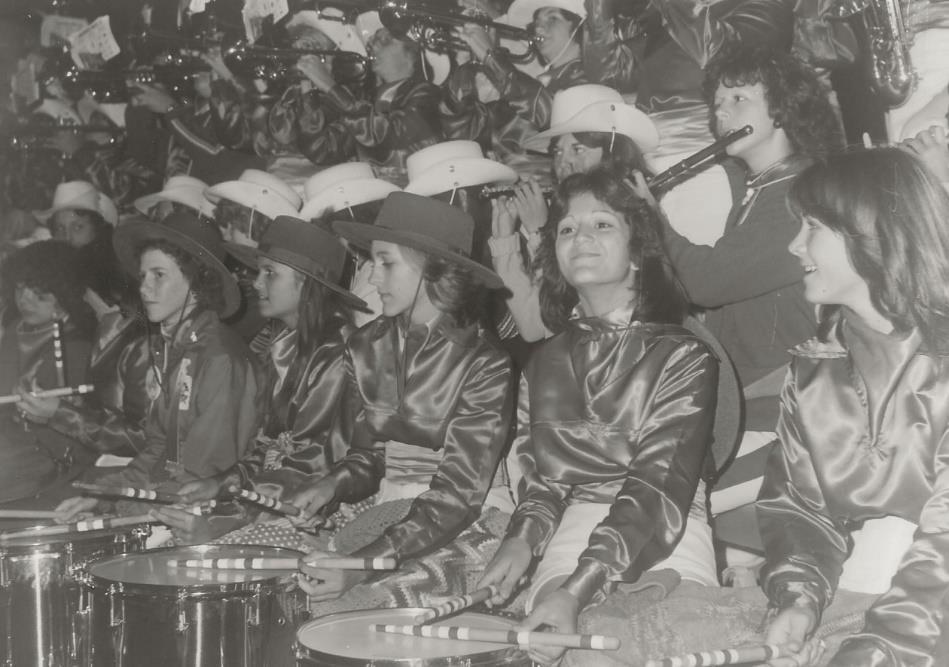
(The Fourth Quarter Jam was pure joy as we blew off all the steam generated by another tough week of rehearsals.)
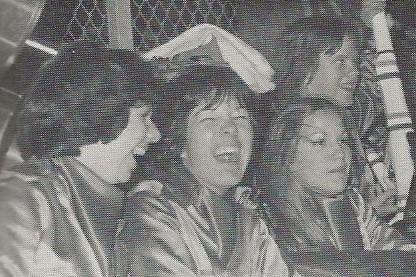
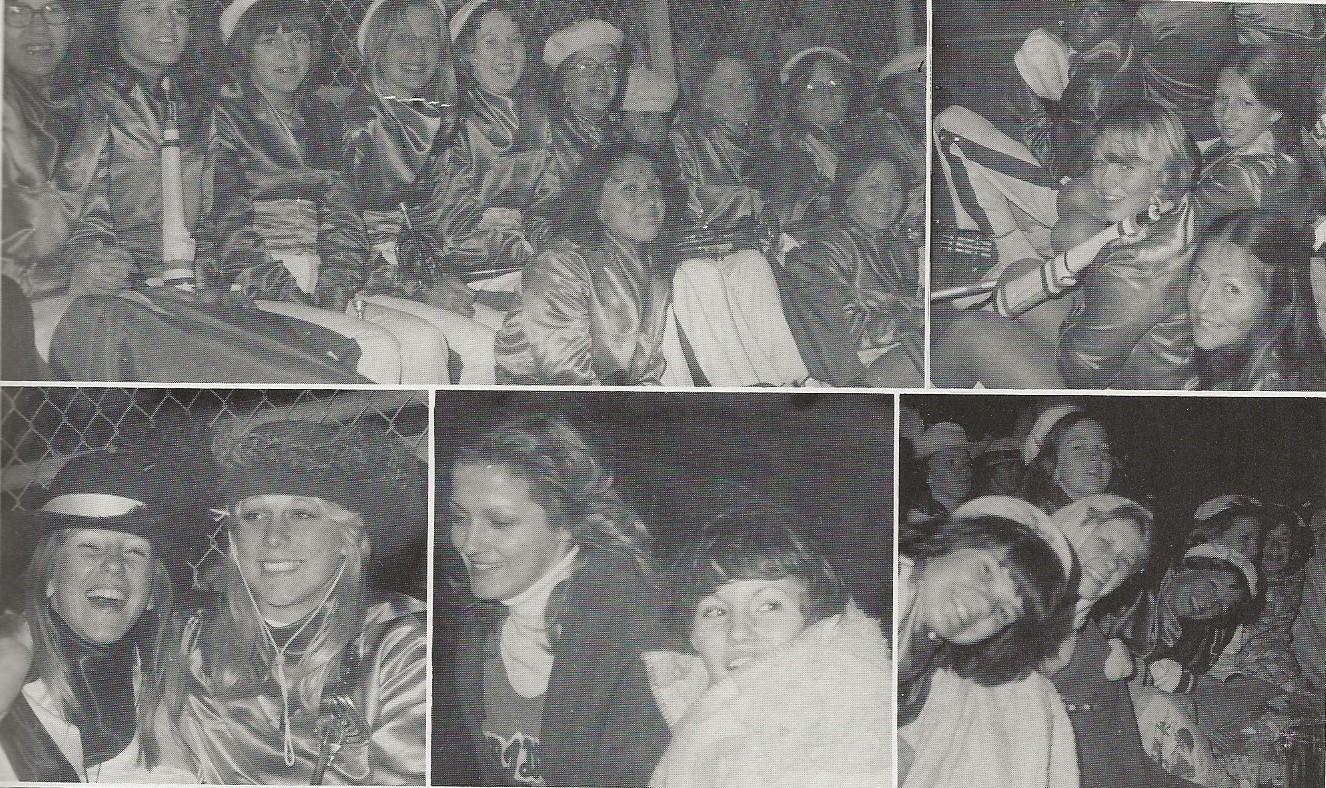
Sometimes you just “gotta have fun. ”
Beating
Every game was important. But during my five-year tenure as band director, the most intense rivalry was against our friends down the road in Welsh. It didn’t matter if it was football or basketball; the campus was more electric when Lake Arthur and Welsh were about to face off
So, how did I get ejected from a 1978 Tiger vs. Greyhound basketball game? It wasn’t hard. I had started bringing pep bands to the key home games. Of course, we had transformed my arrangement of “Your Cheating Heart” into our de facto fight song.
This seemed to be problematic for the referees. We tended to perform it during timeouts when it appeared the calling of fouls was out of balance. Before calling the timeout, Coach Moore would fuss, fume, and chew on his towel.
Well, that night, I had the pep band crank up “Your Cheating Heart” when Coach Moore explained to the referees that there appeared to be a discrepancy in the distribution of foul calls. So, instead of ejecting Coach Moore, they pointed at me and had me ejected for playing that (expletive) song they didn’t want to hear again. Bottomline. We won the game.
And then therewas the 1977 footballgame.Theband members made aspecial effort that year to make “Beat Welsh” posters and put them on display all over school and in business windows downtown. We also had part of the band play at the beginning of some of the afternoon football practices. We were really cranked up at the pep rally as well.
I abandoned our usual practice of not playing too much during the first half of the game. We played nonstop all night. We played especially loud when Welsh had the ball on our end of the field. During the third quarter, when we usually took a break, we kept playing and didn’t quit until the final second ticked off the game clock.
We won, and everyone went wild. The team, the coaches, the fans, and the band. As band members hugged each other, Coach Tommy Smith (later Jeff Davis Parish Superintendent) walked slowly with the entire football team over to the band and gave us the game ball. Sweet.
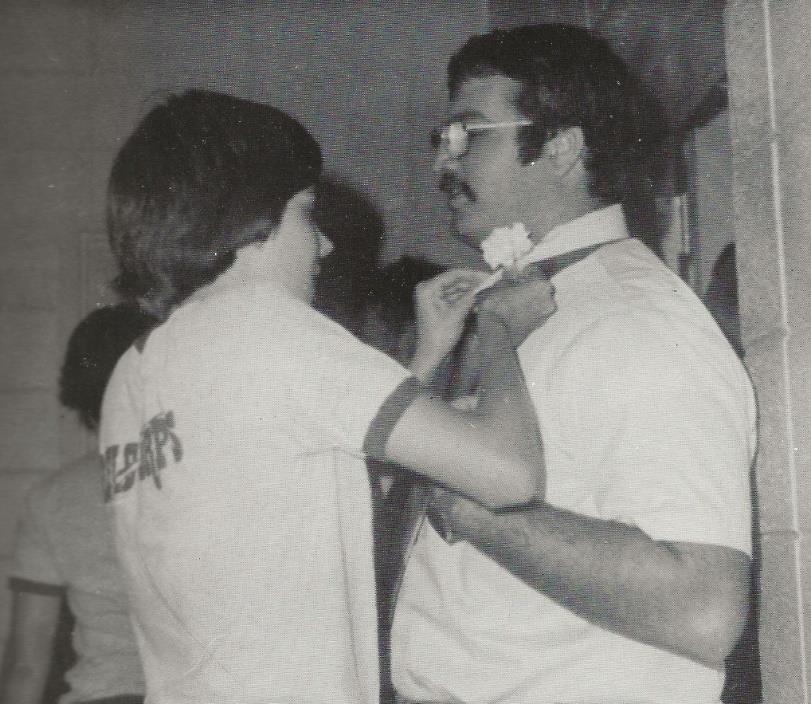
(Coaches
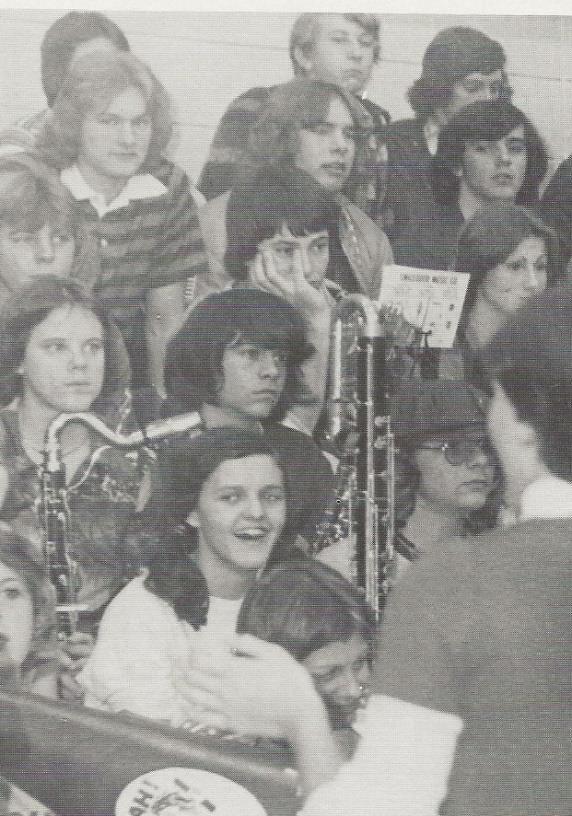
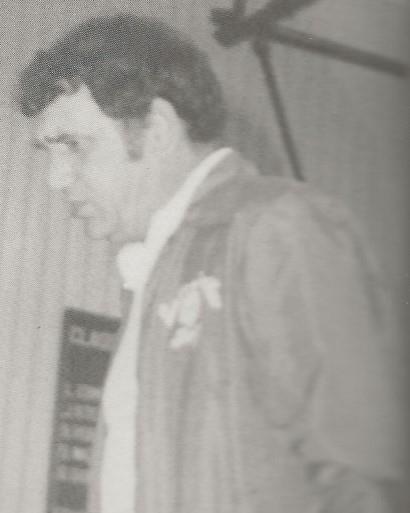
.)
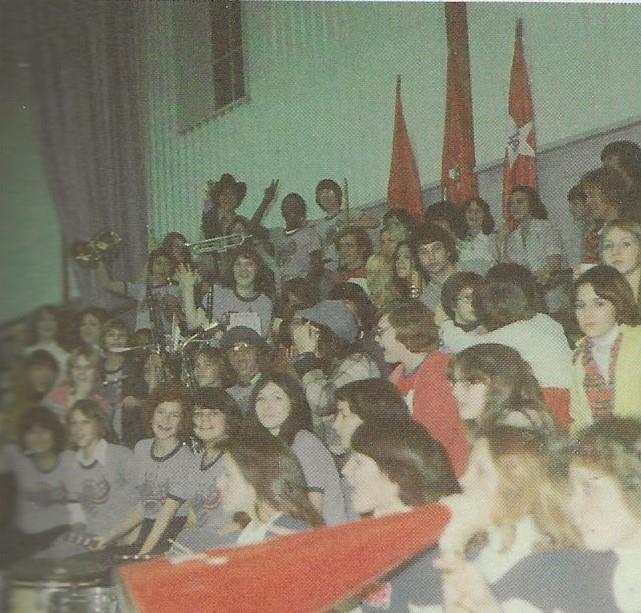
(Basketball Pep Bands made those wins even more fun )
Tommy Smith and Wilbur MooreStory
It was a process that began in Year Four (1978).
"
Over time, the process of securing an invitation to march in the parade down Main Street USA at Disney has evolved, but in the late 1970s, there was a standard form band directors would submit one year in advance of their desired performance.
After sending in the form, a representative of Disney contacted me by phone and conducted an interview. At the end of our conversation, the representative outlined a list of items we needed to provide before a formal invitation could be made.
I had to send a recent photo of the band in marching uniforms. Lee Hudson took the picture, with the background being the stately home of Mr. E. J. Ayo (Lakeshore Club). A recent recording of the band was also required. Ms. Edna Holland, who had recorded our album, agreed to send a copy of her master tape to me.
Two letters of recommendation from “authoritative” marching band experts were needed. I secured those from Mr. Nick Rouse, the band director at LSU, and Mr. Kelly Love, the band director at the University of Southern Mississippi.
Thirty days after submitting all the required items, we received a formal invitation with the options of several potential dates for the spring of 1979.
I consulted with our administration, faculty, Band Boosters, and coaches to determine the best possible date. The objective was to select a timeframe within Disney’s offerings that would be the least disruptive to any other planned LAHS event or activity.
Once all parties agreed to the date, Disney World put us in contact with one of their sanctioned travel agencies. The agency handled all the details of our schedules, hotels, transportation, tickets, meals, and payments
The fundraising began in the spring of 1978, and a deposit was sent to the travel agency that summer. We continued fundraising until the date arrived for us to make our final payment. It was a huge financial challenge for the band, school, and community. We met the challenge. Disney World. Here comes the Pride and Spirit Band.

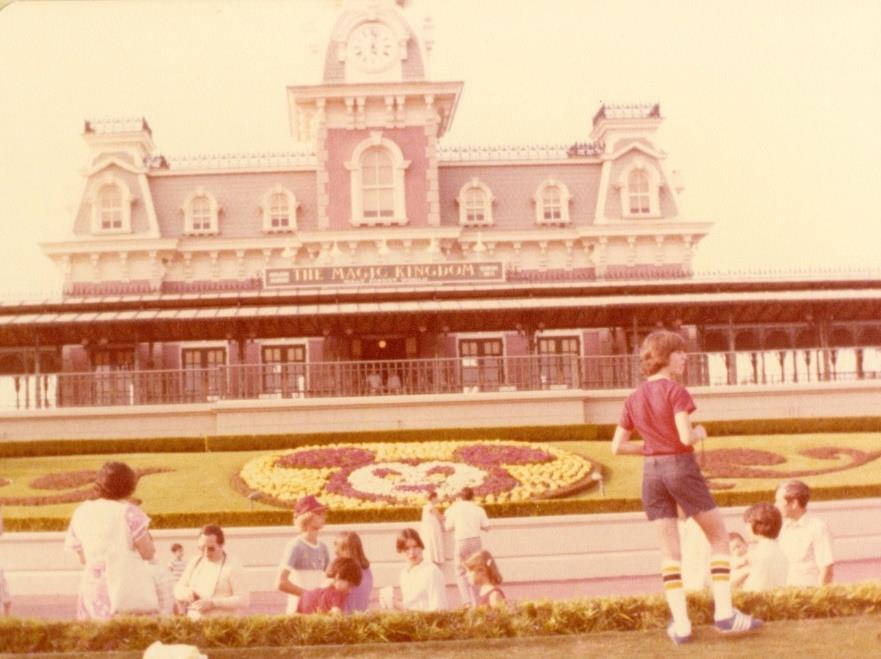
(The Magic Kingdom in 1979.)

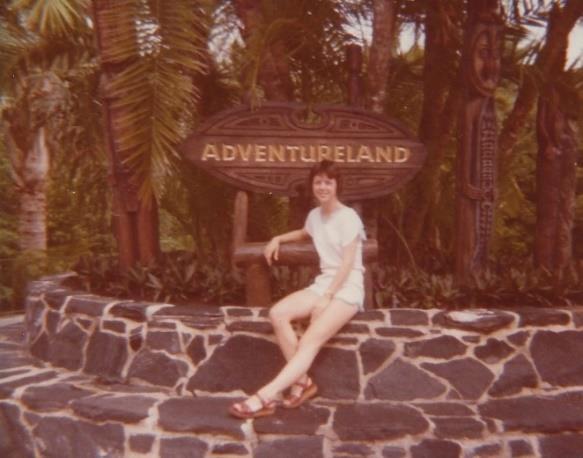
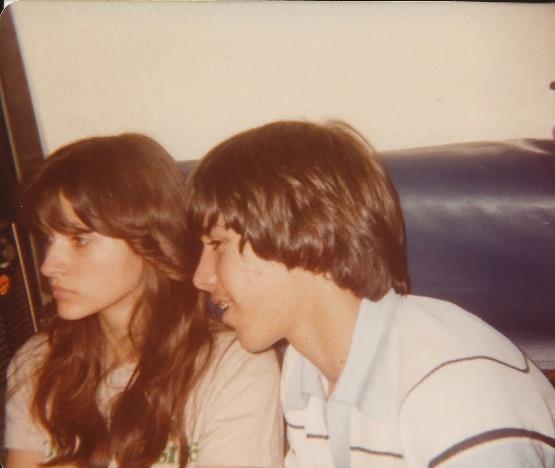
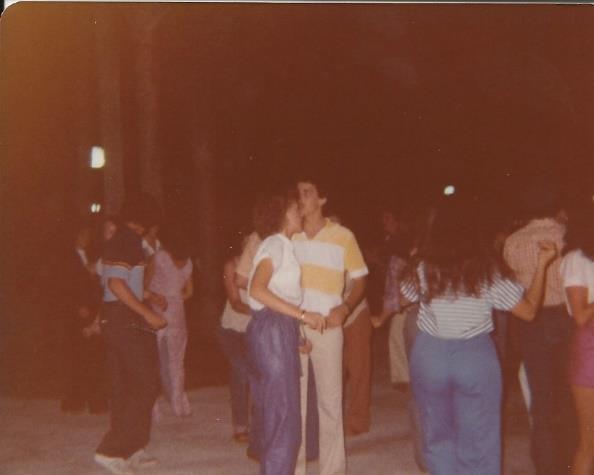 (MaDonna Hargrave and Tracy Manuel getting a “Goofy” hug, while LaDonna Richard poses in Adventureland.)
(Lola Broussard and Donald Kratzer on the bus. Glenn Richard and Mary Beth Smith at the Orlando Dance.)
(MaDonna Hargrave and Tracy Manuel getting a “Goofy” hug, while LaDonna Richard poses in Adventureland.)
(Lola Broussard and Donald Kratzer on the bus. Glenn Richard and Mary Beth Smith at the Orlando Dance.)
Was it a Greyhound jinx?
The four Greyhound buses pulled into the LAHS parking lot. We were ready for our biggest adventure, representing Lake Arthur in Orlando at Disney World. In some ways, it felt like the fulfillment of a fantasy. Who would have thought this was possible only a few years before?
But I was not a happy camper. I could tell from the mud splatters on the side of the buses that something was amiss. Before I could even get on one of the buses to take a look, the lead driver apologized to me.
When his team arrived at the terminal in Lafayette to take control of these charter buses, it was apparent the vehicles had not been cleaned or serviced as they should have been forsuch a longtrip. (Ourmain athletic rivals were theWelshGreyhounds, and I began to ponder if this might be a Greyhound jinx.)
But it was what it was. We were on a tight schedule; the students were excited to get going, and we would just have to make do. Several of our Band Booster dads were already huddling and coming up with a plan of action to lodge a complaint with the Greyhound Corporation.
Before we reached Baton Rouge, one of the buses was overheating. Using a radio dispatch, the driver called for one of the buses held in reserve at major terminals in case of such an emergency. In Baton Rouge, we offloaded students, baggage, and equipment and climbed aboard a spare bus that was in no better condition than the one we had just abandoned.
We had to switch out another bus when we reached Mobile, Alabama. And when we arrived inOrlando, one of the buses could not even make it up thehill to the elevated terminal. So, we literally had to push it up into the terminal.
We eventually made it to our hotels, and our angry Cajun Band Boosters lit up the phone lines to the Greyhound Corporate Headquarters, telling them of our experience and the picture we had pushing the final bus into the terminal.
The following day, four brand new, sparkling clean Greyhound buses were waiting for us in the hotel parking lot zero problems after that.
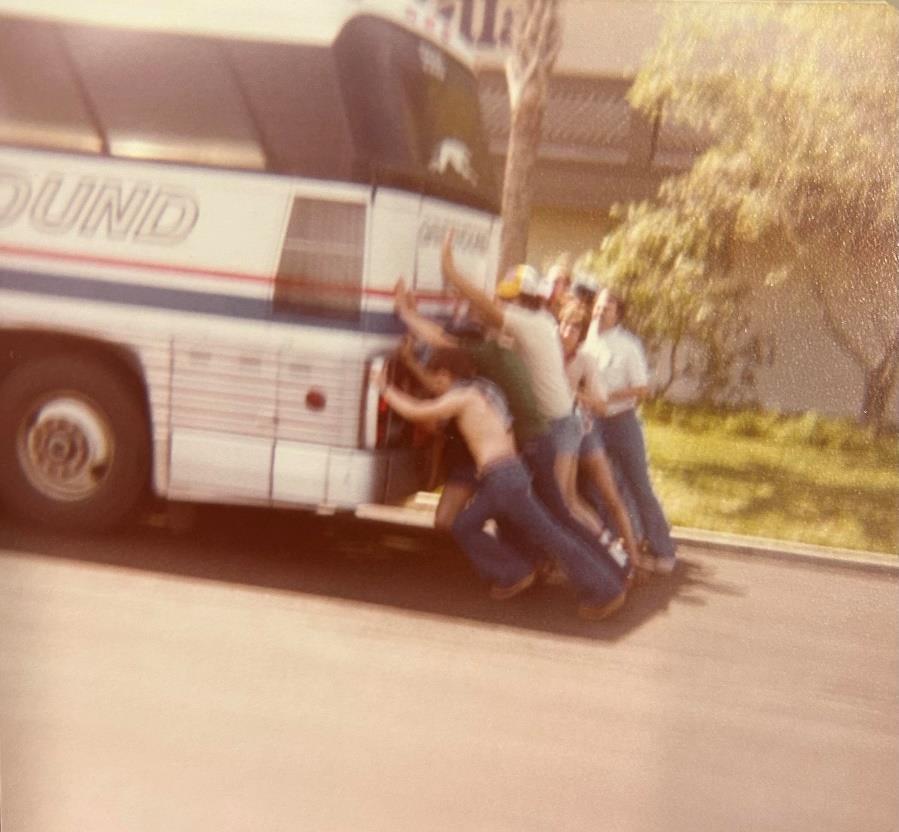
(We pushed that last Greyhound into the Orlando Bus Terminal )
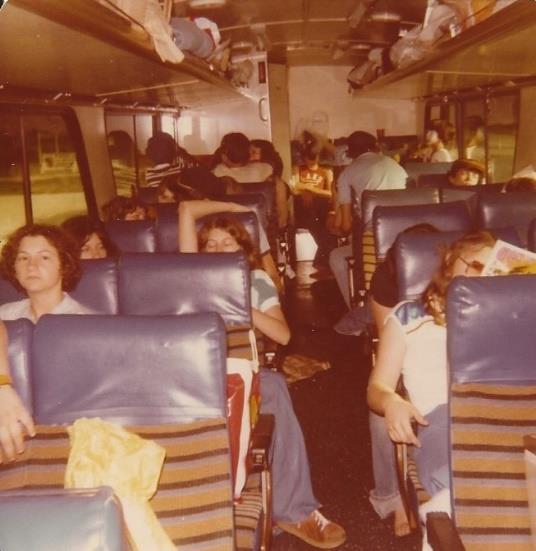
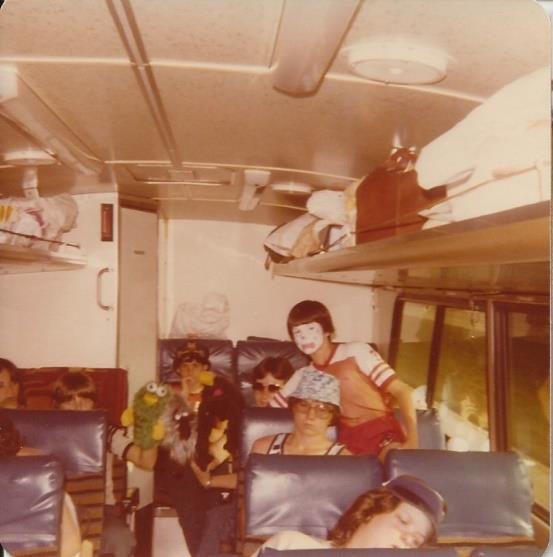
(Just enjoying the ride and bonding.)
First, the serious: One of our drill maneuvers designed into almost every competitive marching performance was the “company front turn.” It involves the audience seeing a rotating line of students from a vertical to a horizontal view in a swinging gate manner.
The challenge was to keep the entire line perfectly straight while the top half of the line swung forward and the bottom half marched backward.
Initially, we did this to a drum cadence, making it easier for the band to focus on the maneuver. But eventually, we becameso adept at it that we executed it with theband playing music.
The flags and rifles also executed these turns. Sometimes, it was done with the band, but they would do it independently during the show as well.
Usually, we would use the fifty-yard line as the vertical starting point and a hash mark as the horizontal ending point. From there, we would march towards the sideline in the horizontal company front to end the show. It was a major crowdpleaser.
Then, the silly: I have no idea how the “pyramid tradition” was born, but I had nothing to do with it. It mostly involved the flag corps. Eventually, the rifles, horn line, and percussion began to join in. Perhaps it grew out of some activity in P. E. class or cheerleader practice. But I first noted it at the University of Southern Mississippi summer camps.
The building of the pyramid was a spontaneous act. I never knew when or where it would appear. A group of students would get on their hands and knees. Then, a second group climbed on top of the bottom group. Layer after layer was added until it formed a human pyramid that would eventually collapse.
I never encouraged it but never banned it, either. The participants seemed to enjoy the collapse more than the building process. Go figure.
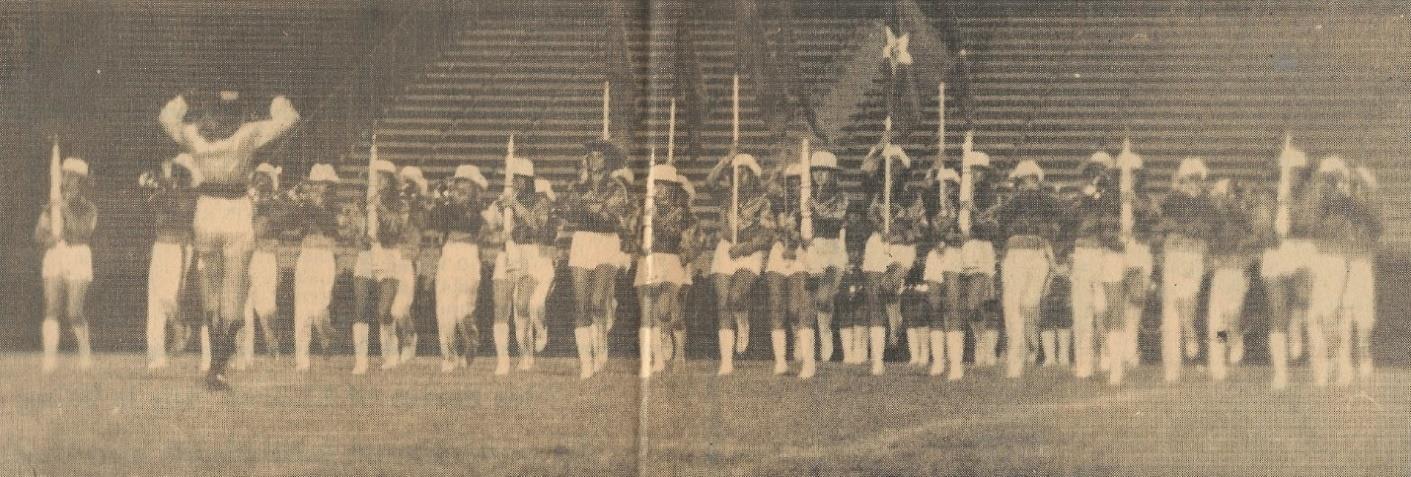
(After the “company front” turn, we pushed the sound into the crowd at the DeRidder Marching Festival.)
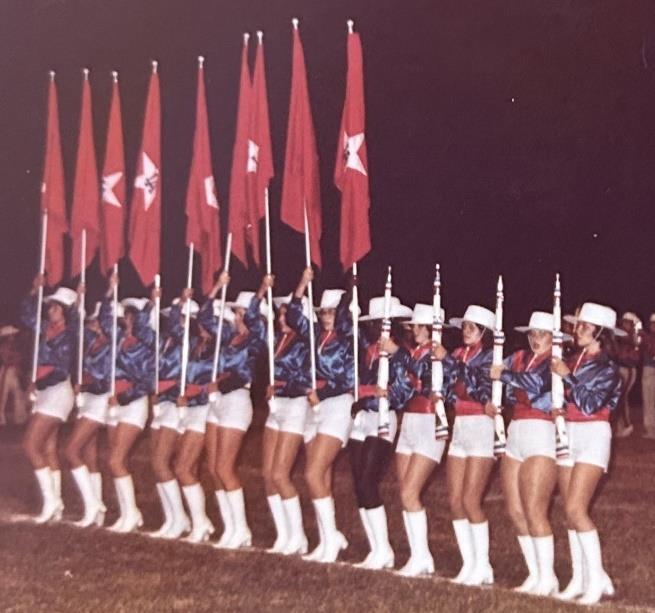
(Getting ready for another “company front” turn with part of the guard.)
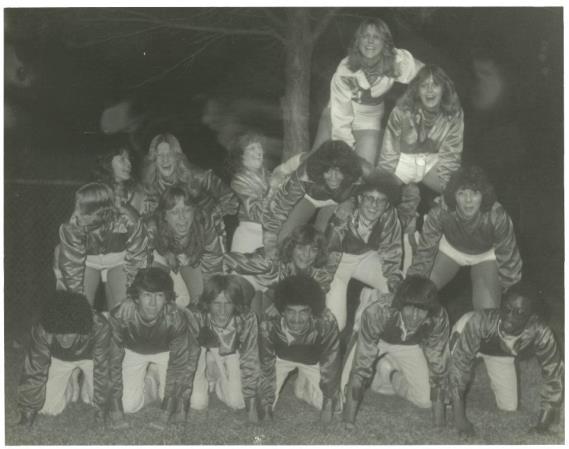
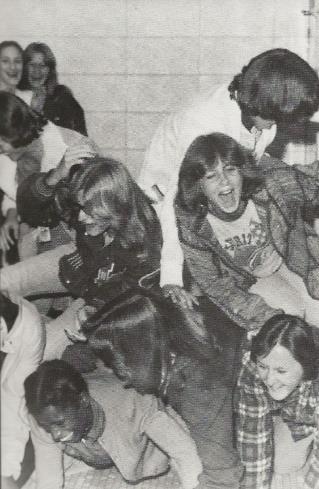
(The building of the “pyramid” was a spontaneous act. I never knew when or where it would appear.)
It's my favorite story from the “Sweat Box"
The French horn section was filled with Lake Arthur beauties.
In the summer of 1976, as we prepared for the 1976-77 school year, we were still practicing in the old band room at the downtown campus. The construction firm was continuing their work on the interior of the band room at the new campus.
The flag and rifle units came to practice early in the day while the heat was not too oppressive. These young ladies were also learning to play musical instruments. So, on alternate days, I would take one or two groups into the band room to work on scales, etudes, or songs after their guard practice.
On one sweltering morning in late June, it was “French horn” day for the ladies in the flag corps. After a two-hour flag practice, a half-dozen girls took their horns out of the cases and sat down for an hour of rehearsal in the “sweat box.”
The old band room was not airconditioned, and the wall of windows on the north side of the building seemed to amplify the sunshine into a furnace-like environment. I did not know the temperature that day, but we were drenched in sweat within the first fifteen minutes.
The etude we drilled was in an awkward key and range. We were struggling. After about a half hour of effort, they had improved but could not play it well.
The young ladies seated before me were beautiful. They were staples on the homecoming court, winners of pageants, and sweethearts of various school clubs. It dawned on me that they could have been anywhere doing a multitude of other things than battling these horns on a blistering summer day.
So,atthehalf-hourmark,Isaid,“All right,ladies,let’scallit aday.”They all looked at me with frowns and sweat dripping down theirpretty faces. Then Gina Cain, who became the Jeff Davis Parish Fair Queen later that year, said, “We can’t stop now! We’ve almost got it.” The other girls nodded in approval.
So, we continued. At the end of the hour, they left smiling and laughing. “Only in Lake Arthur,” was the thought bouncing around in my mind.
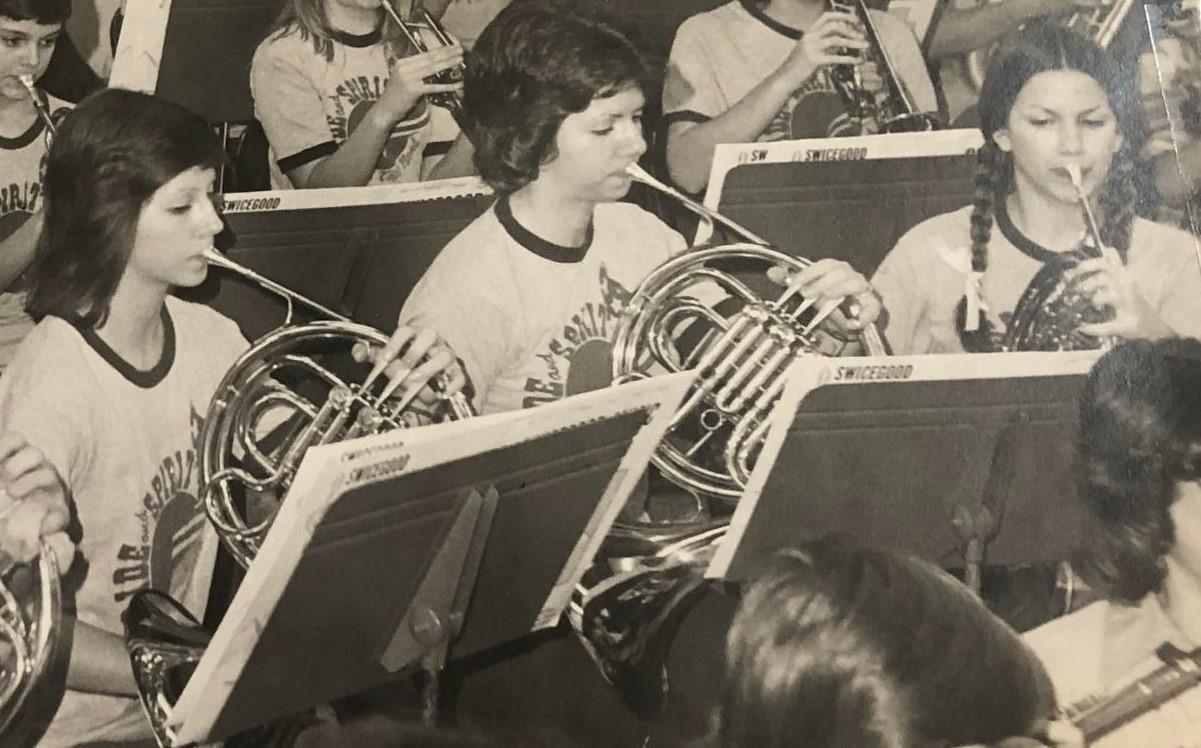
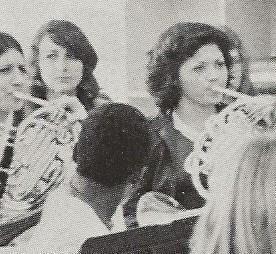
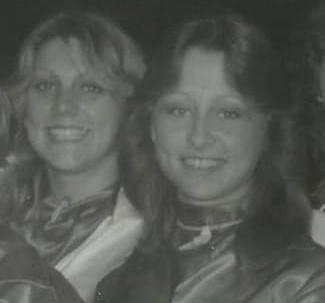
 (French hornist: Liz Dupuis, Colette Trahan, and Gina Cain.)
(French hornists: Rhetta Smith, Monica Bonin, Jennifer Bertrand, Paula LaPoint, and Bridget Bonin.)
(French hornist: Liz Dupuis, Colette Trahan, and Gina Cain.)
(French hornists: Rhetta Smith, Monica Bonin, Jennifer Bertrand, Paula LaPoint, and Bridget Bonin.)
The iconic photo aboard the “Captain Price"
Only in Lake Arthur. (Part 2)
I thought, “We’ll never be able to get the entire band aboard the ship.” I was correct in that assessment. It would have been impossible to load the 200+ Pride and Spirit band students onto the “Captain Price” for a picture. However, we could board the students from grades nine through twelve.
It was my final year in Lake Arthur, and we all wanted something iconic. Over my tenure, we produced a collection of yearbook photos demonstrating our annual growth. We also had memorable pictures of the marching band in front of Mr. Ayo’s home and at Disney World.
But we still needed a group picture that would scream out “Lake Arthur” for our Pride and Spirit band at the end of Year Five.
So, what screams louder than a shrimp boat in the Lake Arthur channel? The school system’s risk management department would have likely vetoed this novel idea in today's educational environment.
But it was 1979, and this was Lake Arthur. Permission was quickly obtained from the LAHS administration and ship owner. The staging took a little effort. And yes, I did have some anxiety seeing my precious students climbing high and posing in some precarious positions.
But there was no stopping us at this point. The photo has always taken me back to the“MiracleontheLake”storythat Mr.OrvilleKelleyrepeatedly told concerning selling every instrument he brought to Lake Arthur in 1974 at our first horn display in the LAHS band room.
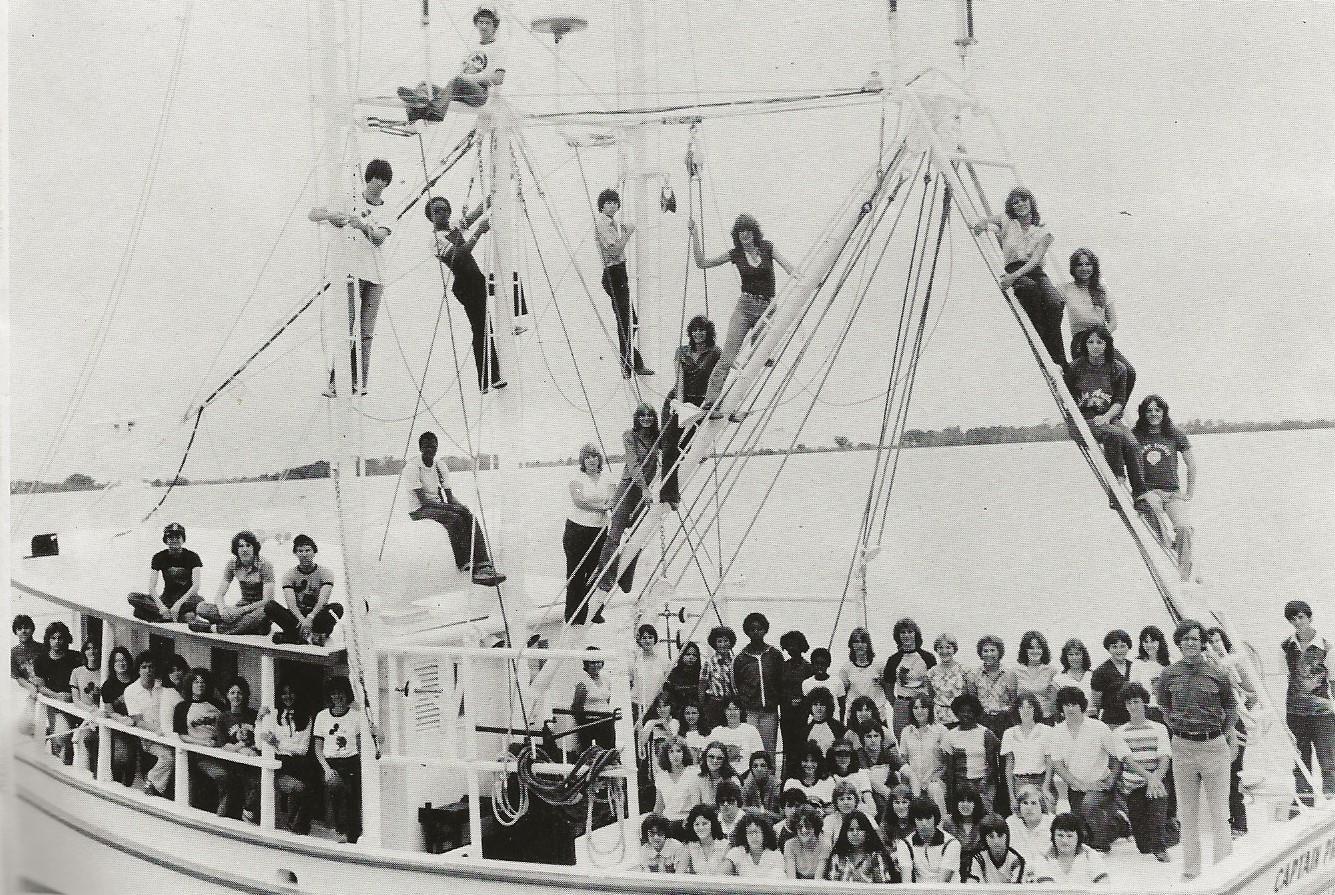
(Aboard the “Captain Price” in 1979.)
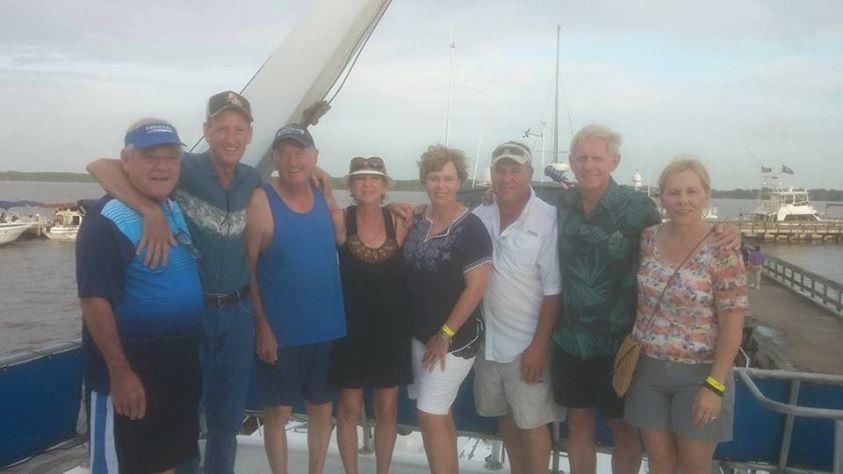
(The O’Blanc and Guidry families unite aboard the “Bristol Queen. ”)
Give the guys the credit they deserve.
Much has been said and written about all the extraordinary young ladies in the Pride and Spirit organization. With theheavy recruiting Idid forour flag corps, rifle corps, and from the Lady Tiger athletes, we exceeded the usual fifty-fifty ratio of girls to boys found in many bands.
Having said that, the guys from the Pride and Spirit need to get a healthy dose of credit for our overall success. They anchored and often starred in the horn line, particularly in the brass section, over my five years.
Young men like Ken Lyons, Kevin Jeansonne, Dennis McZeal, Mike Dubone, Preston Gary, Gordon Daniels, and Rip Green formed the early nucleus within the band, both as loyal members and solid musicians.
Later, as we grew and matured, a different group of young men assumed leadership roles with the full band and carried responsibilities within their sections. These included Richard Broussard, Jude Henry, Donald Kratzer, Johnathan McZeal, Brian O'Blanc, Glenn Richard, and Augie Robinson.
Toward the end of my tenure, an even larger and talented cadre of young men emerged who took center stage in both leadership and musicianship. They were vital to our success while I was on the podium. Some also contributed to the accomplishments of my successor, Mr. Thompson. These included Chris Brown, JonathanDuhon, EdwardDupuis, Glenn Gary, DavidGreen, Ken Guidry, Tim Guidry, Creighton Jones, Leonard Vincent, Brian Bertrand, James Cormier, Pat Dupuis, Brian Higginbotham, Joey Kibodeaux, Kevin Klein, Lawrence Bellard, Ty Bourgeois, Mark Dubone, Greg Giles, James Miller, and Greg Stevens.
I would be remiss not to mention some other essential guys who were junior high members of the band during my final years and became great contributors to the programaftermydeparturesuchasJeffBeverly,JefferyBihm,BryanBoudreaux, Ed Conner, Tony Duhon, Charlie Guidry, Barry Higginbotham, Ben Higginbotham, Jerold Jeansonne, Chad Richard, Tim Trahan, Chuckie Tyler, Michael Tyler, Mike Chapman, Terrance Harrington, David Landry, Kenny Landry, Emile Lapointe, Brian Leger, Kasey Lyons, Mike Monlezun, Matt Owers, Colin Richard, and Danny Thibodeaux.
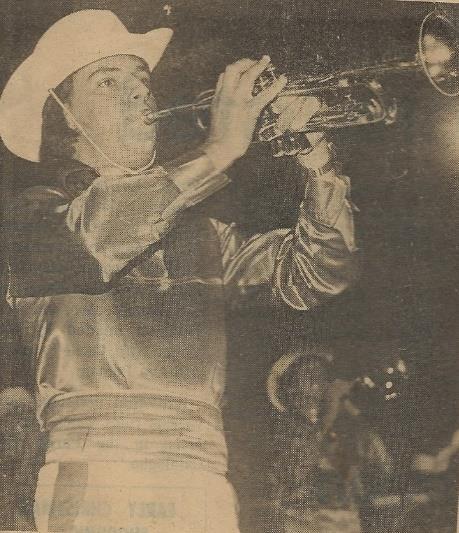
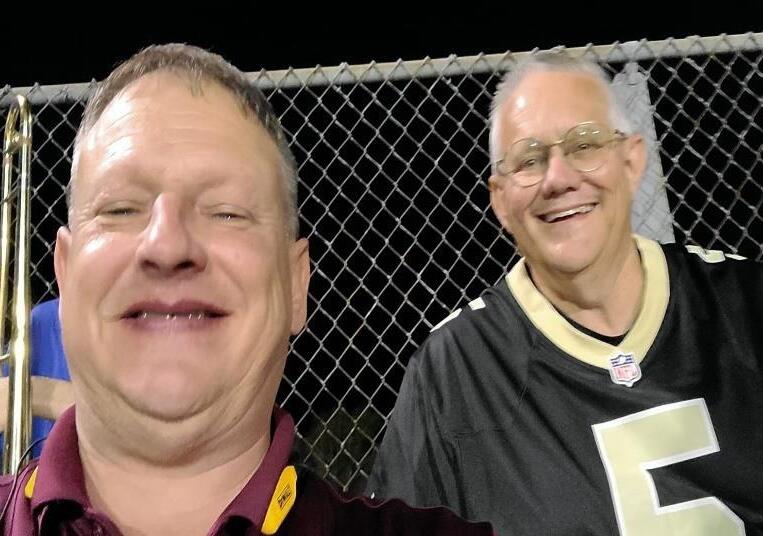
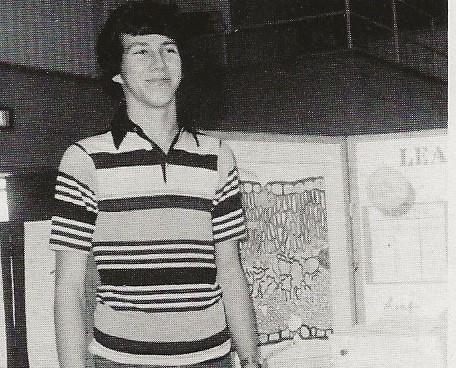

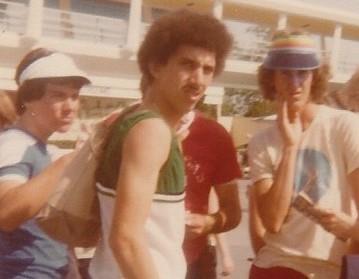
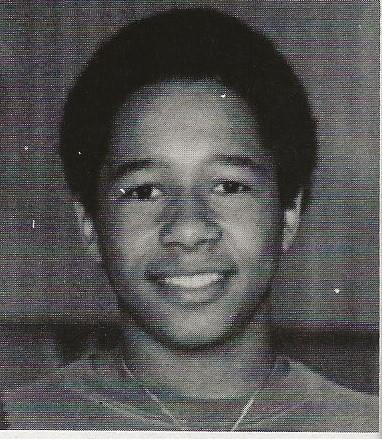
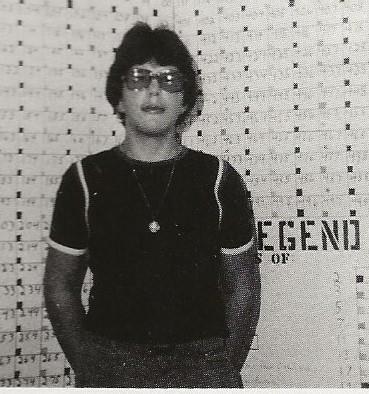
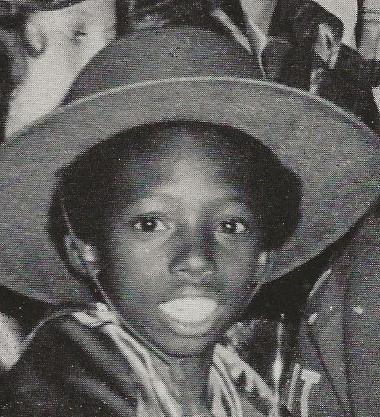 (Ed Dupuis, Terrence Harrington, and David Landry.)
(Donald Kratzer, Brian Bertrand, Ken Guidry, Glenn Richard, and Brian O’Blanc.)
(Mark Dubone, Jerold Jeansonne, and Ben Higginbotham )
(Ed Dupuis, Terrence Harrington, and David Landry.)
(Donald Kratzer, Brian Bertrand, Ken Guidry, Glenn Richard, and Brian O’Blanc.)
(Mark Dubone, Jerold Jeansonne, and Ben Higginbotham )
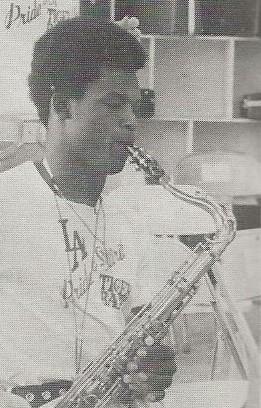
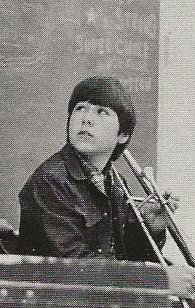
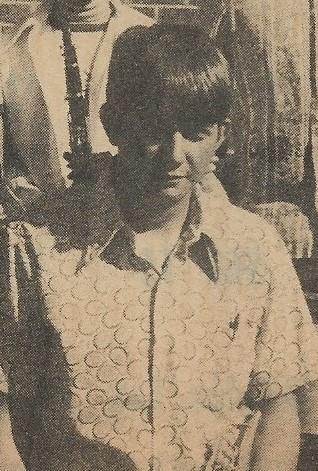
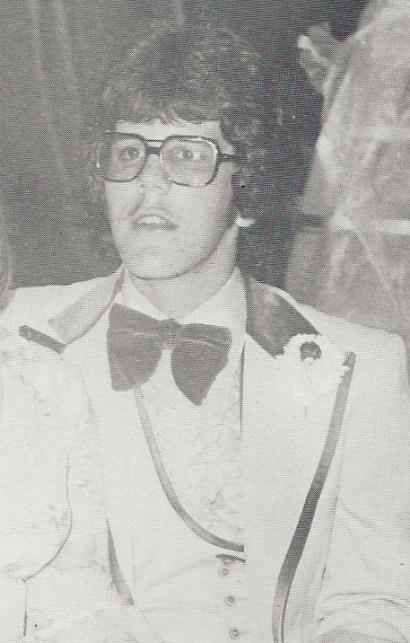
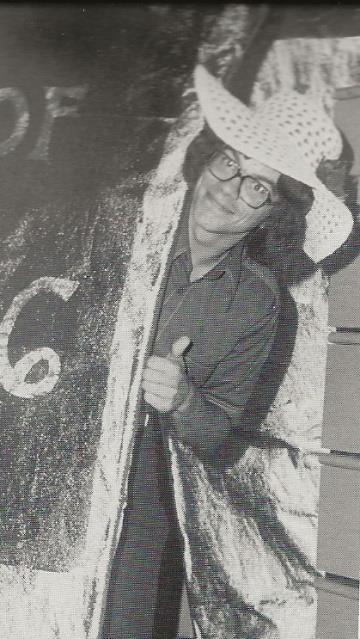
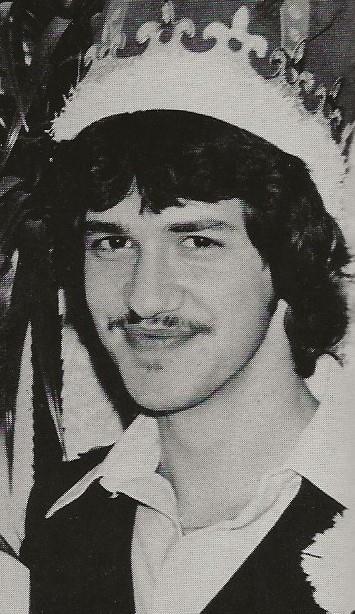

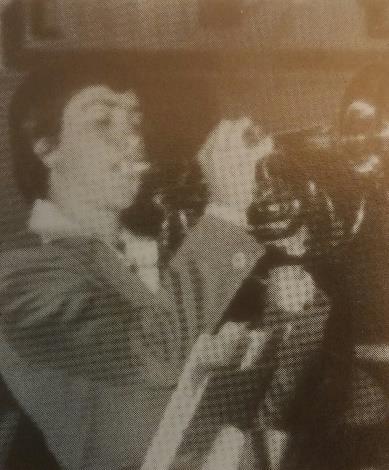 (Dennis McZeal, Ken Guidry, and Ken Lyons.)
(Kevin Jeansonne, Rip Green, and Jude Henry.)
(David Green and Chris Brown.)
(Dennis McZeal, Ken Guidry, and Ken Lyons.)
(Kevin Jeansonne, Rip Green, and Jude Henry.)
(David Green and Chris Brown.)
One of the remarkable features of the Pride and Spirit band was the extraordinary academic achievements attained by our members.
When asked how the band accomplished so much in such a short span of time, I always start with the fact that I recruited the best and brightest. Not every honor student at LAHS was in the band. But a significantly high percentage of them were.
The following Pride and Spirit students were named as Valedictorian, CoValedictorian, or Salutatorian during my five years at LAHS: Sally Wade, Cheryl Brown, Maryanne Kratzer, Mary Boudreaux, Lenor Broussard, Lori Carter, and Donald Kratzer. The year after my departure, the Pride and Spirit tradition of top graduates continued, with Edward Dupuis and David Green as Co-valedictors and Joan Guidry named salutatorian.
Senior high and junior high honors banquets were always filled with Pride and Spirit students, with many of our members appearing multiple years in a row. These students are visible in the yearbook pictures for honors awards banquets during my tenure: Sally Wade, Jackie Stevens, Cheryl Brown, Maryanne Kratzer, Mary Boudreaux, Lanor Broussard, Donna Brown, Liz Dupuis, Lynne Hollister, Colette Trahan, Lori Carter, Lizanne Carter, Geralyn Guidry, Becky Hanks, Pam O’Blanc, Melanie Bonin, Tana Bourgeois, Marla Green, Tina Perry, Tracy Manuel, Margo Dugas, Donald Kratzer, Joan Guidry, Donna Comeaux, Rachael Guidry, Sheila Lejeune, Karen Peloquin, Edward Dupuis, David Green, Tina Gagneaux, Sonya Talen, Rosie Chapman, Becky Guidry, Mark Dubone, Theresa Kibodeaux, Robin Kibodeaux, Linda Mack, James Miller, Phyllis Pearson, David Landry, Molly Owers, Linda Meyer, Tanya Marionneaux, Marcia Miller, Lisa Green, Janet Charles, Brian Bertrand, Brian Higginbotham, Eva Giles, Rebecca Leleaux, and Laurie Hanks
LAHS actively participated in the regional and state social studies and science fairs. Each year multiple Pride and Spirit Band members earned high placement and medals.
Science Fair: Cheryl Brown, Sally Wade, Liz Dupuis, Lanor Broussard, Joan Guidry, Lynne Hollister, Lizanne Carter, Jovita LaPoint, Preston Gary, Rosie
Chapman, Jerold Jeansonne, Donald Kratzer, Mark Dubone, Lisa Green, JoAnn Kibodeaux, and Angie Hebert
Social Studies Fair: Joan Guidry, Edward Dupuis, Sally Wade, Tanya
Marionneaux, Pam O’Blanc, Mary Boudreaux, Melanie Bonin, James Miller, Lisa Green, Molly Owers, Glenn Gary, Danny Thibodeaux, Karen Peloquin, Jovita LaPoint, Mary Beth Smith, Linda Mack, Paula Guidry, April Duhon, Robin Kibodeaux, Marcia Miller, Lori Carter, Edwina Wilks, Stacey
LaCombe, Eva Giles, Laurie Hanks, Lisa Toups, Roxanne Landry, and Betty Jo Myers.
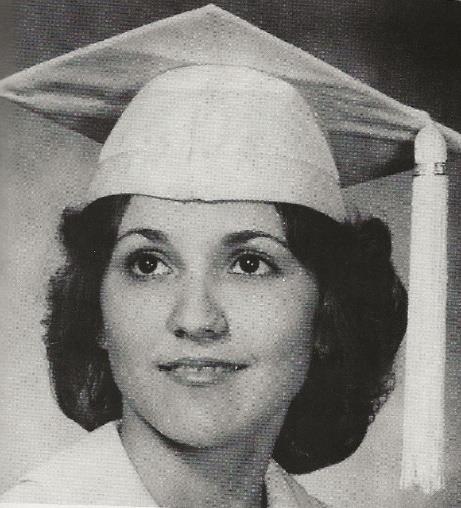
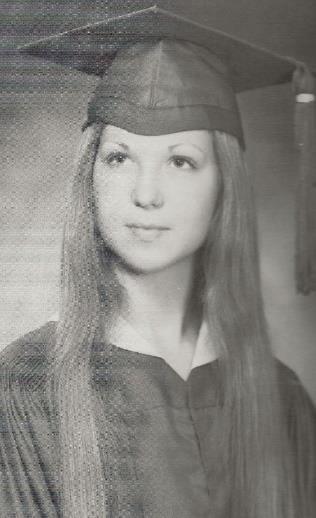
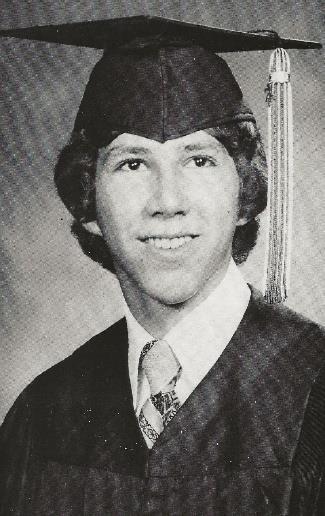
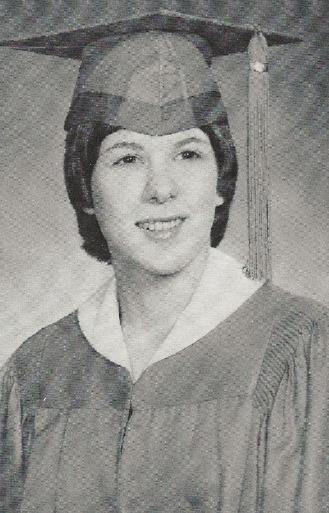
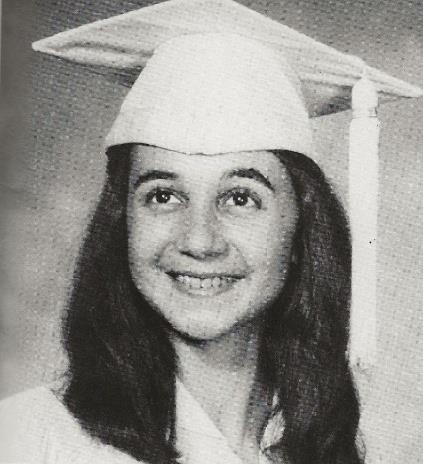
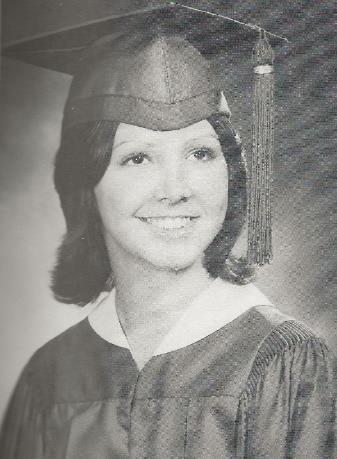
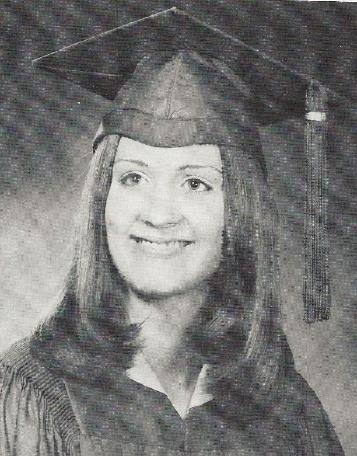 (Lanor Broussard, Cheryl Brown, Donald Kratzer, and Lori Carter.)
(Mary Boudreaux, Maryanne Kratzer, and Sally Wade.)
(Lanor Broussard, Cheryl Brown, Donald Kratzer, and Lori Carter.)
(Mary Boudreaux, Maryanne Kratzer, and Sally Wade.)
It was an undeniable part of the Pride and Spirit mystique.
In the “politically correct” environment of the 21st century, I’m unsure how to begin communicating this aspect of our story. But the truth is that in the 1970s and 1980s, there was a bevy of attractive young ladies in the Pride and Spirit band. Their beauty was an unmistakable part of our public image
Inevitably, I saw malebystanders (young and old) along the parade route who would stare with wide eyes as the band came into view. It wasn’t totally about precision marching, bright-colored uniforms, or musical performance.
In my eyes, as band director, every single boy was handsome, and all the girls were beautiful.Thiswasmyband,andthat’showIsawit.Nevertheless,Iwouldberemiss not to include a section in this book that did not address the “obvious” that others frequently bring up.
So here is my attempt at a socially acceptable list of “some” of the many female Pride and Spirit Band members who attained titles during my tenure (with my apologies to all the handsome guys in the band).
I begin writing this section, knowing I can’t document it all because there is too much to report concerning our Pride and Spirit ladies, from homecoming courts to homecoming queens to beauty pageant winners to club sweethearts to Miss Valentine to Miss Merry Christmas to Miss Lake Arthur to Miss Jeff Davis Parish to LAHS Most Beautiful to LAHS Prom Queen and on and on and on.
The only thing I am sure of is that I will leave someone or something out. I apologize in advance.
Jefferson Davis Parish Fair Queen: Susan Roy, Gina Cain, and Melanie Bonin
Miss Lake Arthur: Melanie Bonin, Jennifer Bertrand, Bridget Bonin, and Lola Broussard. Little Miss Lake Arthur and Runner-up Molly Owers and Tanya Marionneaux. Runner-up Miss Lake Arthur: Renee Johnson. Senior Queen Runner-up: Liz Dupuis. Junior Queen Runner-up: Angie Stevens. Sophomore Queen Runner-up: Bridget Bonin. Freshman Queen and Runner-up: Cathy O’Blanc and Joan Guidry. 8th Grade Queen and Runner-up: Rosie Chapman and Sonya Talen. 7th Grade Queen and Runner-up: Monica Guillory and Paula
Guidry. 6th Grade Queen and Runner-up: Michelle McGee and Eva Giles. Miss Congeniality(Tie)GinaCainandColetteTrahan MissMerryChristmas: Melanie Bonin. Miss Valentine and 10th Grade Miss Lake Arthur: Cathy O’Blanc. Miss Cinderella and 8th Grade Miss Lake Arthur: Rosie Chapman.
LAHS Most Beautiful and/or Miss LAHS: Susan Roy, Melanie Bonin, Geralyn Guidry, and Jennifer Bertrand. LAHS Homecoming Queen: Beth Broussard and Jennifer Bertrand. LAHS Prom Queen: Susan Roy, Tina Perry, and Tana Bourgeois.
LAHS Homecoming Courts: Monica Bonin, Gina Cain, Liz Dupuis, Melanie Bonin, Lenor Broussard, Maryanne Kratzer, Sally Wade, Jennifer Bertrand, Tina Perry, Joan Guidry, Melody Owers, Geralyn Guidry, Bridget Bonin, Cathy O’Blanc, Mona Guidry, Sonya Talen, Jeni Broussard, Rosie Chapman, Susan Broussard, Janet Charles, Paula LaPoint, Kim Smith, Lola Broussard, and Tana Bourgeois.
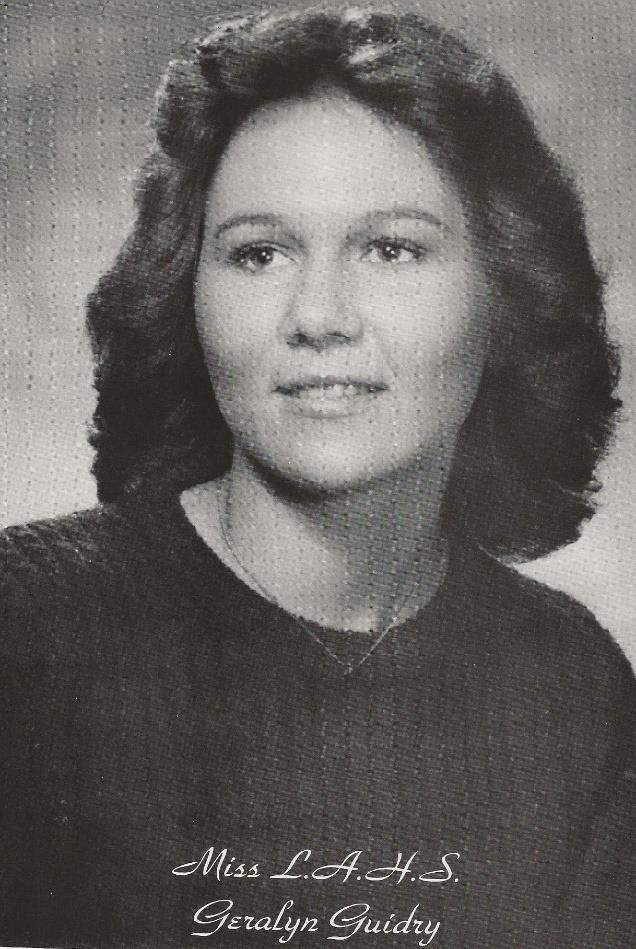
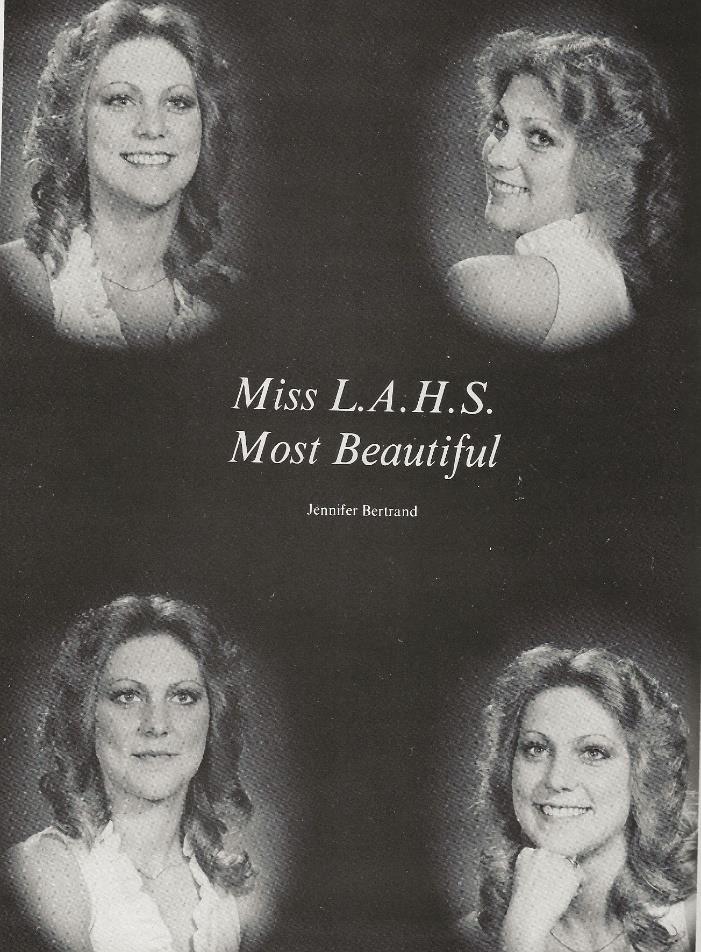 (Geralyn Guidry and Jennifer Bertrand )
(Geralyn Guidry and Jennifer Bertrand )
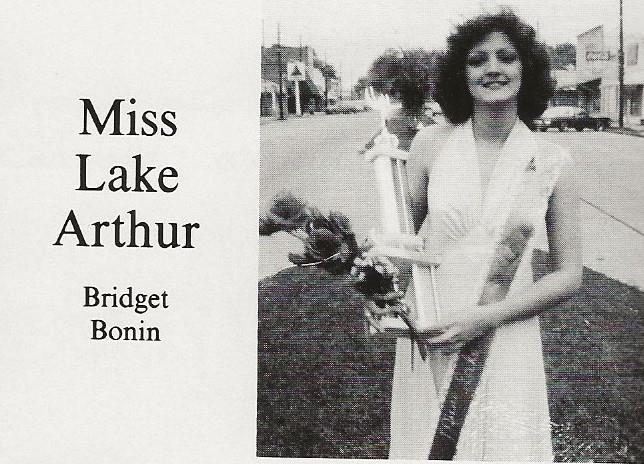
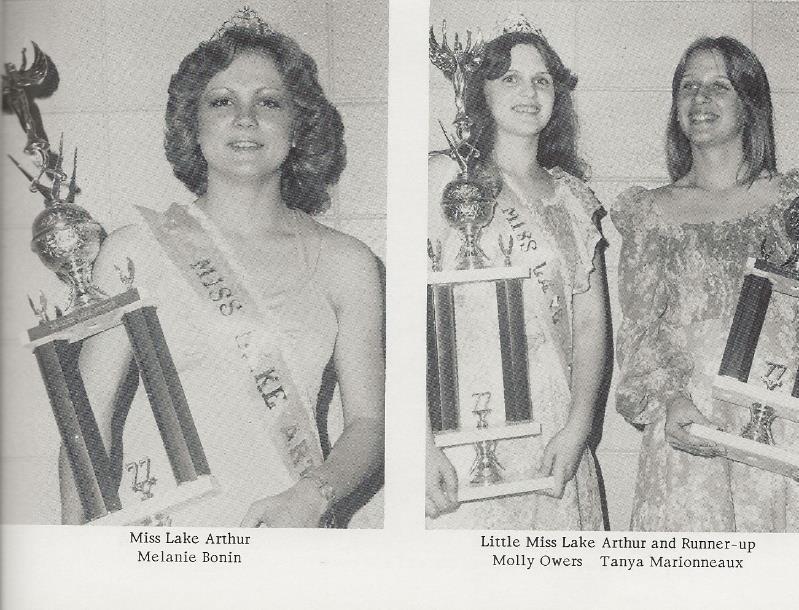
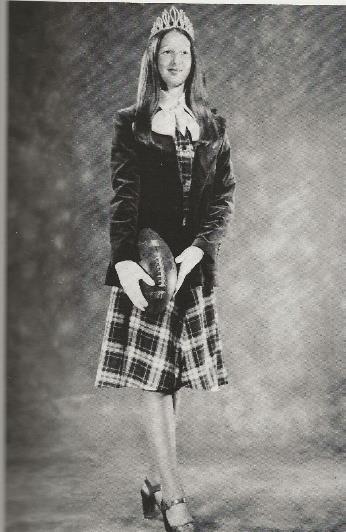
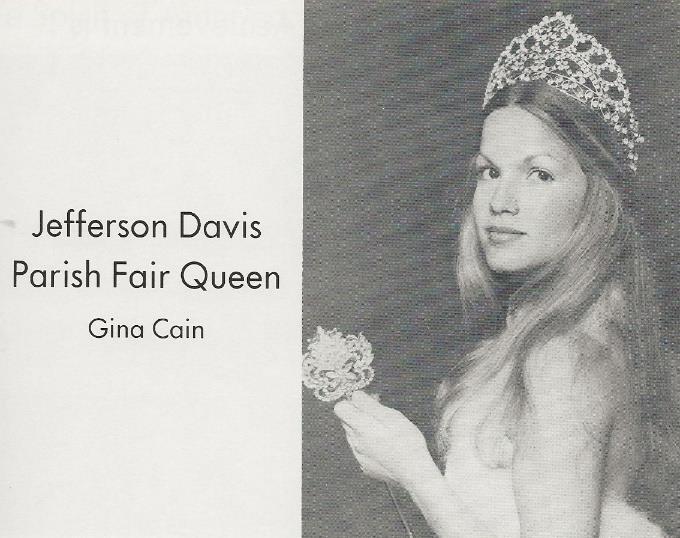 (Bridget Bonin)
(Melanie Bonin, Molly Owers, and Tanya Marionneaux.)
(Beth Broussard and Gina Cain.)
(Bridget Bonin)
(Melanie Bonin, Molly Owers, and Tanya Marionneaux.)
(Beth Broussard and Gina Cain.)
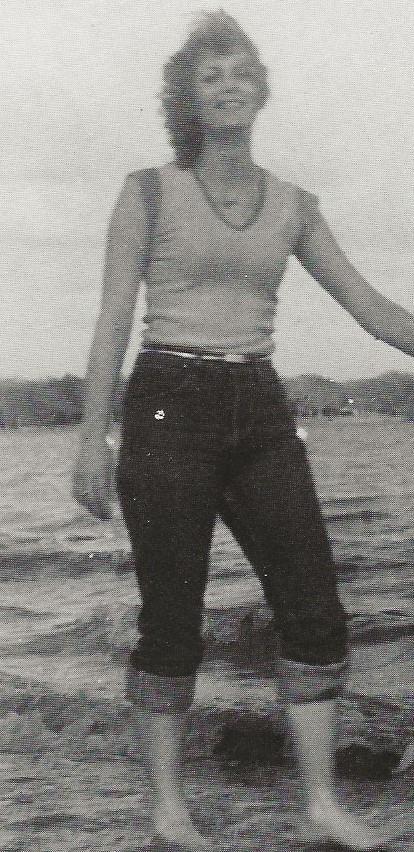
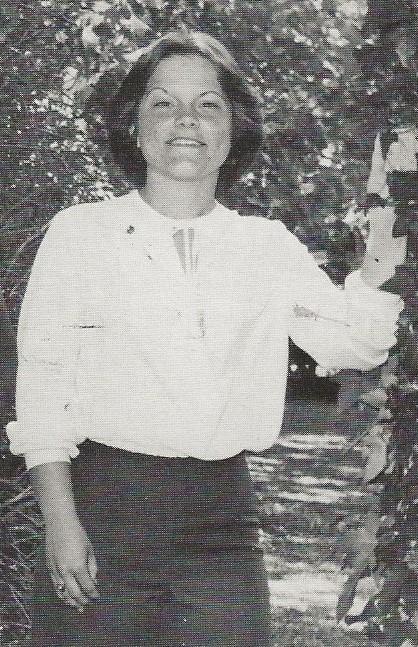
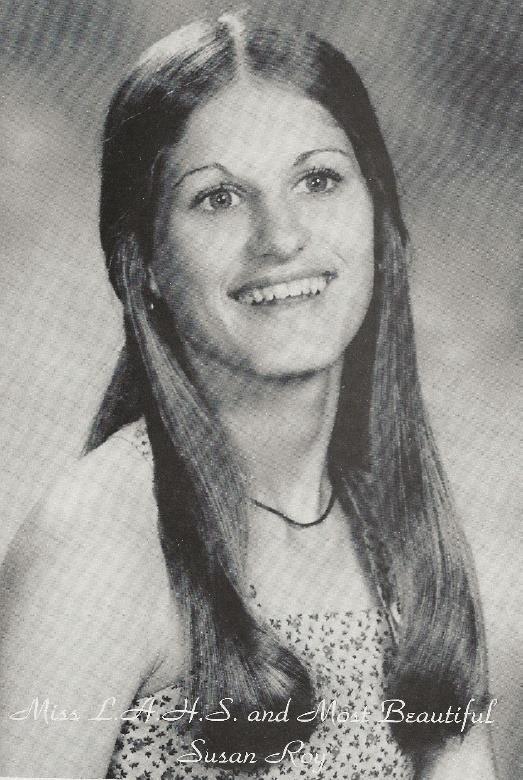
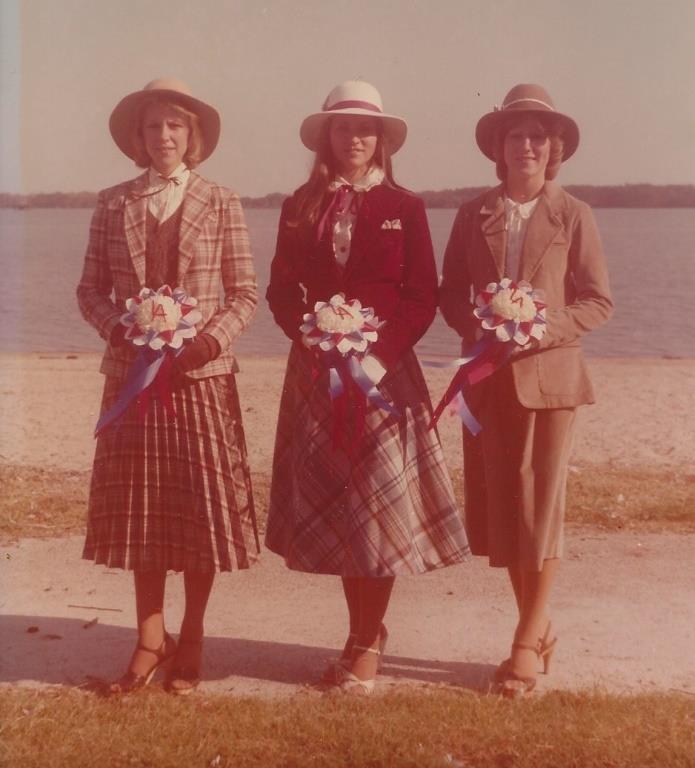 (Tana Bourgeois and Tina Perry.)
(Susan Roy, Cathy O’Blanc, Lola Broussard, and Joan Guidry.)
(Tana Bourgeois and Tina Perry.)
(Susan Roy, Cathy O’Blanc, Lola Broussard, and Joan Guidry.)
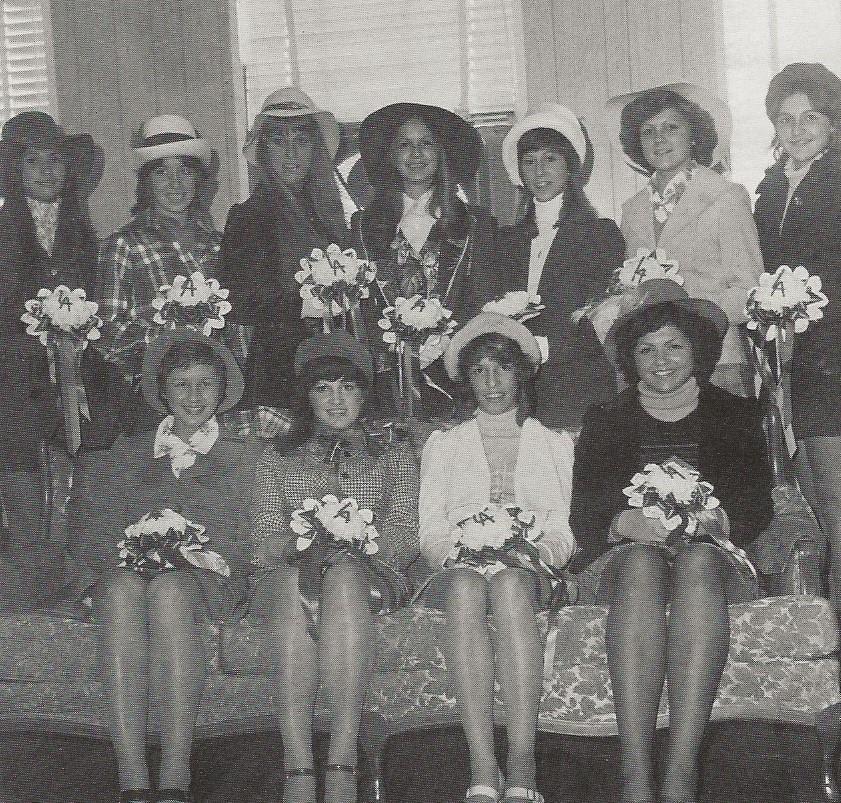
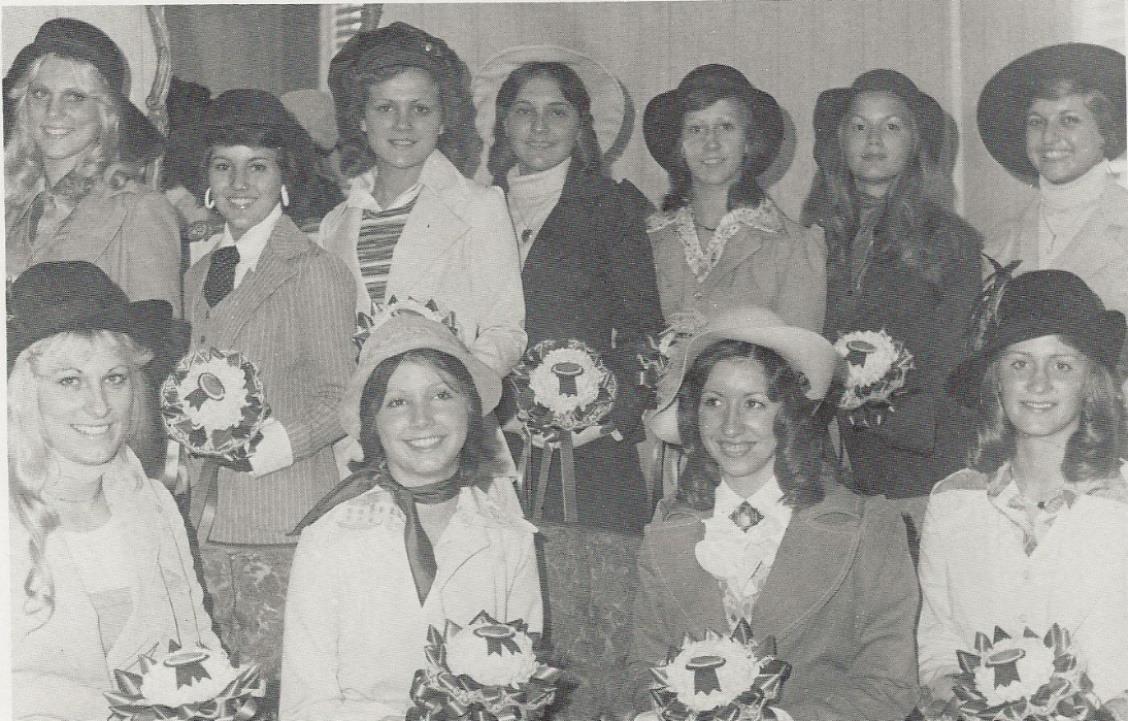 (1974 Homecoming Court)
(1975 Homecoming Court)
(1974 Homecoming Court)
(1975 Homecoming Court)
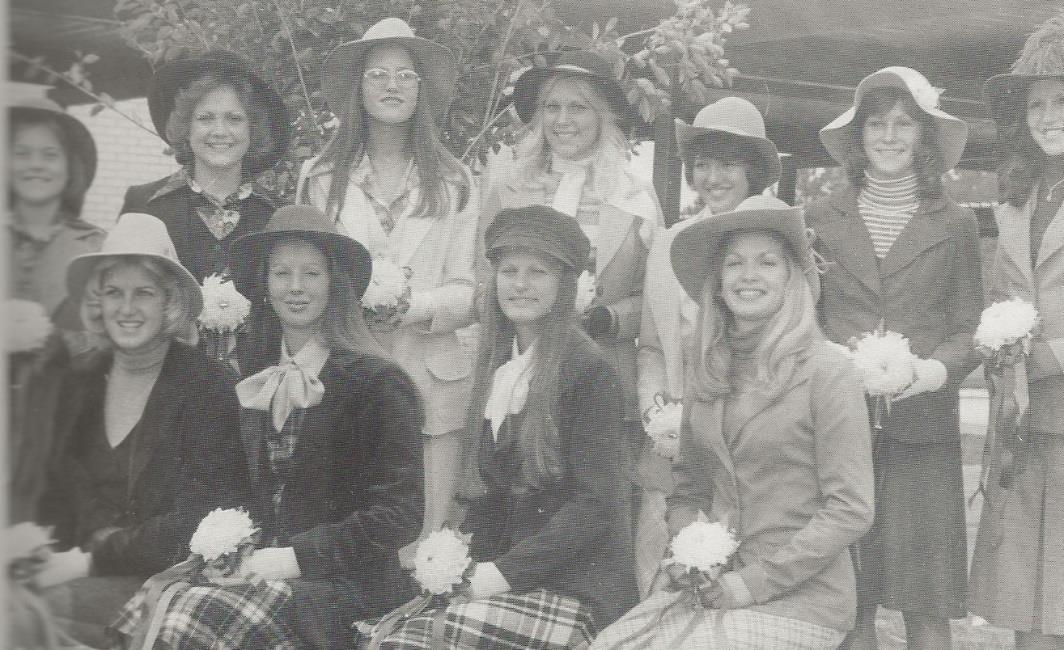
(1976 Homecoming Court)

(1977 Homecoming Court)
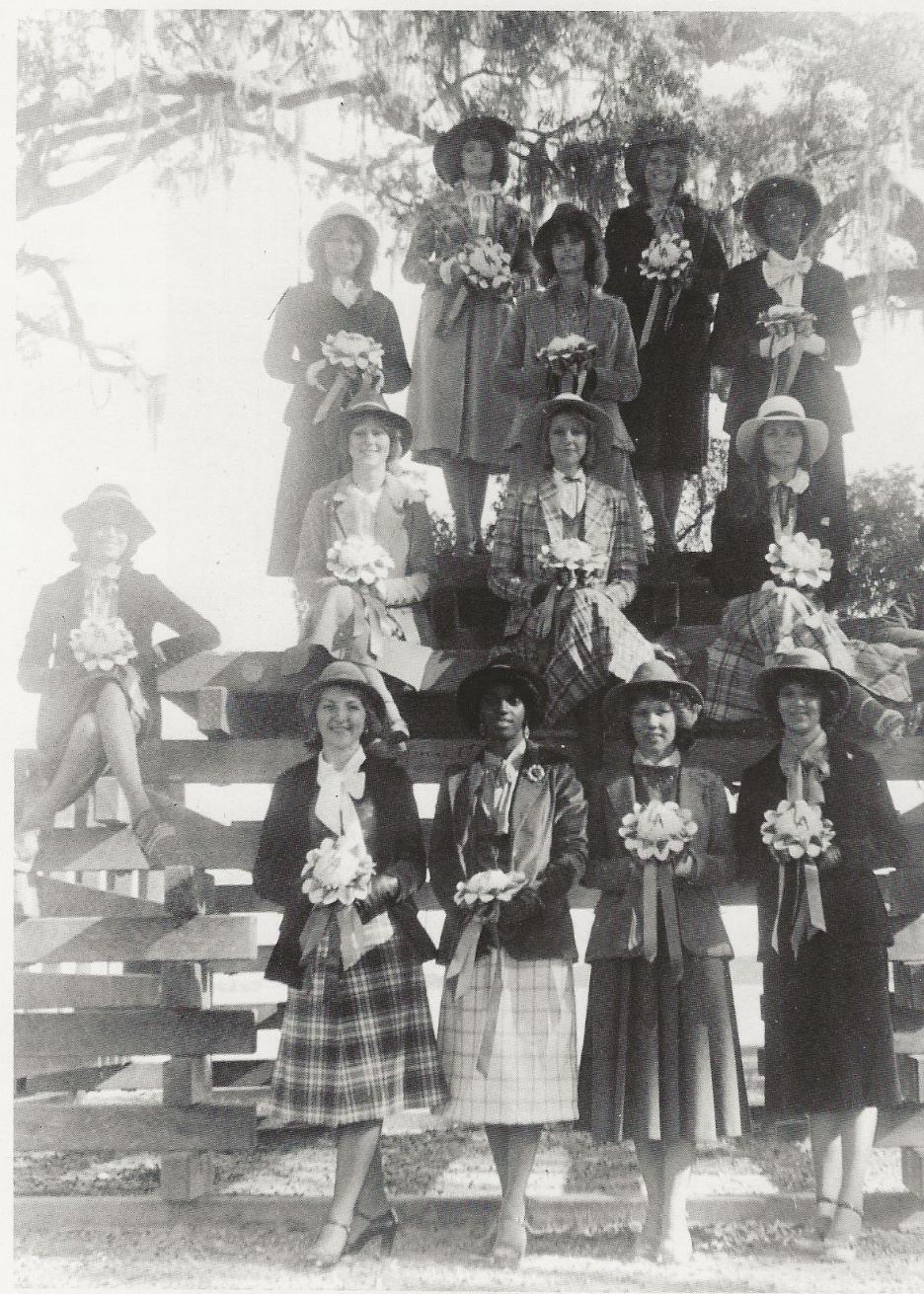
(1978 Homecoming Court)
You are the heroes and heroines of our story.
I have purposefully made the students and achievements of the Pride and Spirit band the focal point of this book.
However, I have dedicated the publication to the hundreds of parents, boosters, faculty members, and citizens of Lake Arthur who provided the extraordinary financial and moral support necessary for the success of the Pride and Spirit band.
They are our heroes and heroines. Without them, the story would not have even had a beginning. I can’t list the names of every adult who played a role in our rebirth and emergence as a band program. But I am compelled to provide a short essential list.
Of course, Mr. Allen Fitzgerald and Mr. Malon Dobson were the key administrators who enabled much of what we accomplished. Mrs. Maurine Perkins, as Guidance Counselor, helped work miracles in scheduling.
The school's coaching staff and faculty members set examples in their pursuit of excellence and stood by us every step of the way. The adults on the campus cooperated to create an atmosphere that allowed our dream to become a reality.
From my first day on campus, people like Betty Wade, Virgie Dronet, Tommy Smith, Elaine Segura, Wilbert Moore, Michael Darbonne, Kathy Duplechin, and Evelyn Broussard were always there when I needed help. Leto Comeaux not only opened access to recruiting players from his talented teams but also served as a personal mentor to me immediately.
The Pride and Spirit band needed financial support, and lots of it. Every parent, grandparent, aunt, uncle, and cousin seemed to find a way to contribute time, resources, skills, and hard-earned cash. The official Band Booster Club raised funds around the clock throughout my five years.
I must acknowledge some parental leaders who emerged and stayed engaged at the firstBoosterClubmeeting.Ourpresidents,AlvinRichard(withWandabyhisside) and Alton O’Blanc (with Marie by his side), led the way. Jimmy and Lula Mae Stevens, Bobby and Ellen Wilks, along with Blanche Hollister, took on much of the heavy lifting from the very beginning.
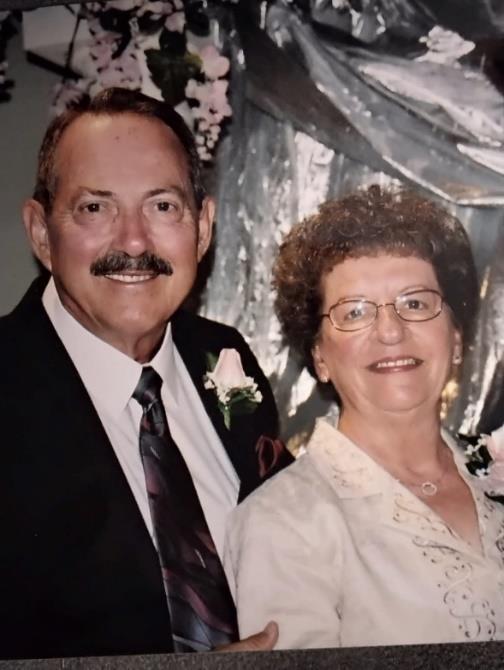
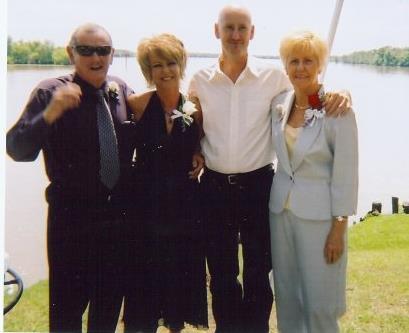
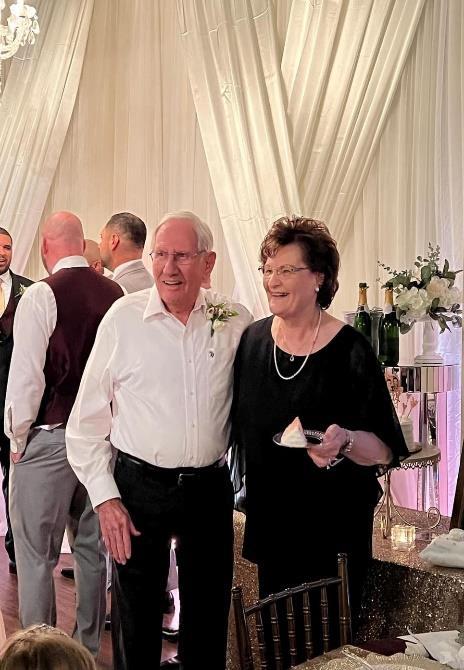
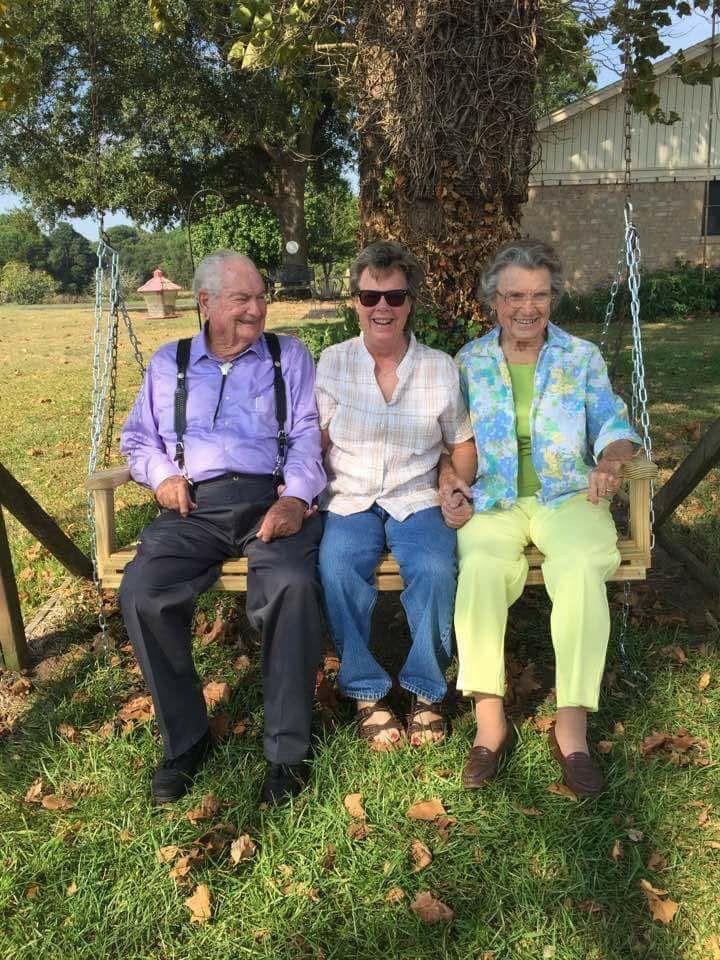 (Alvin and Wanda Richard.)
(Alton and Marie O’Blanc.)
(Jimmy and Lula Mae Stevens.) (Bobby and Ellen Wilks.)
(Alvin and Wanda Richard.)
(Alton and Marie O’Blanc.)
(Jimmy and Lula Mae Stevens.) (Bobby and Ellen Wilks.)
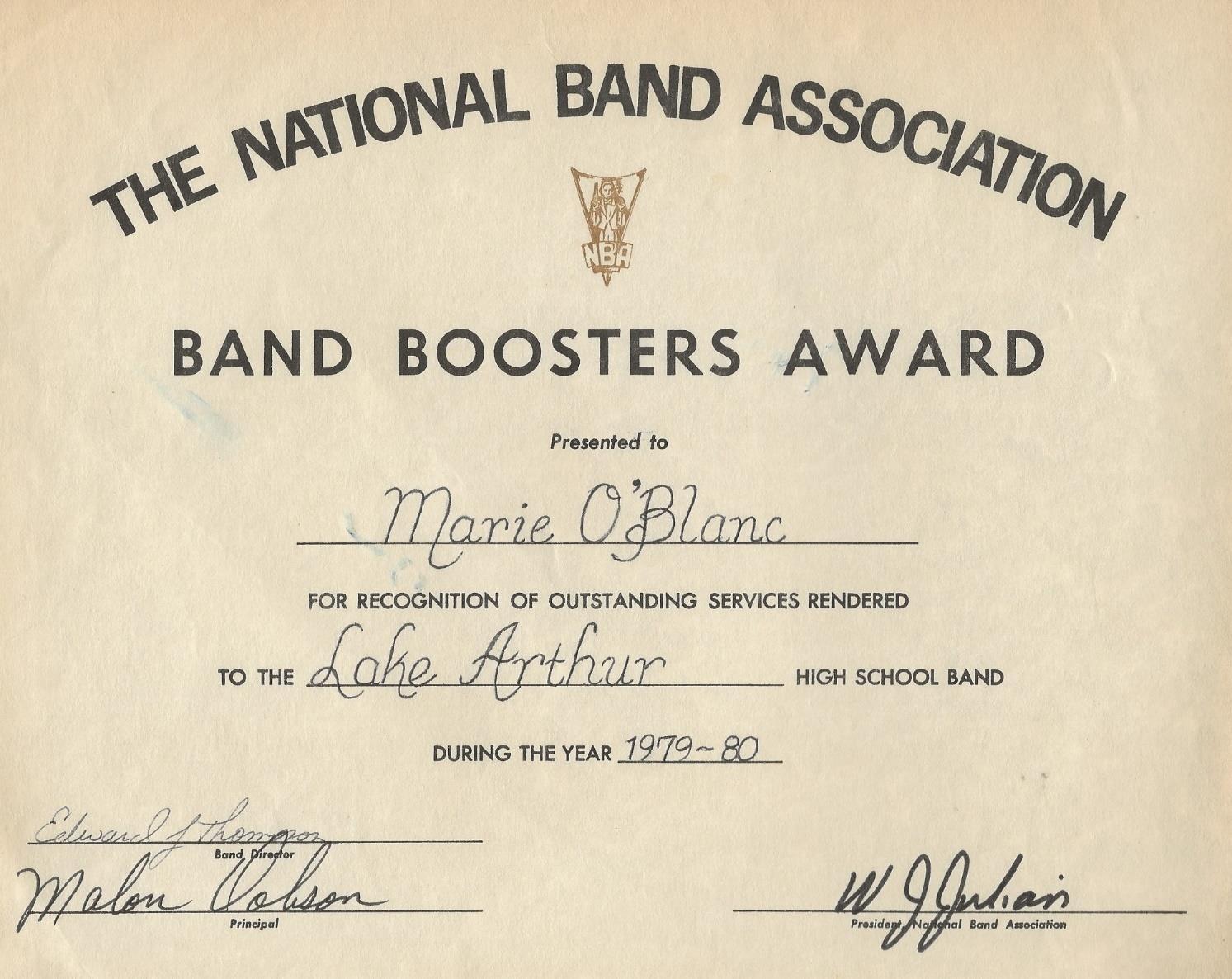
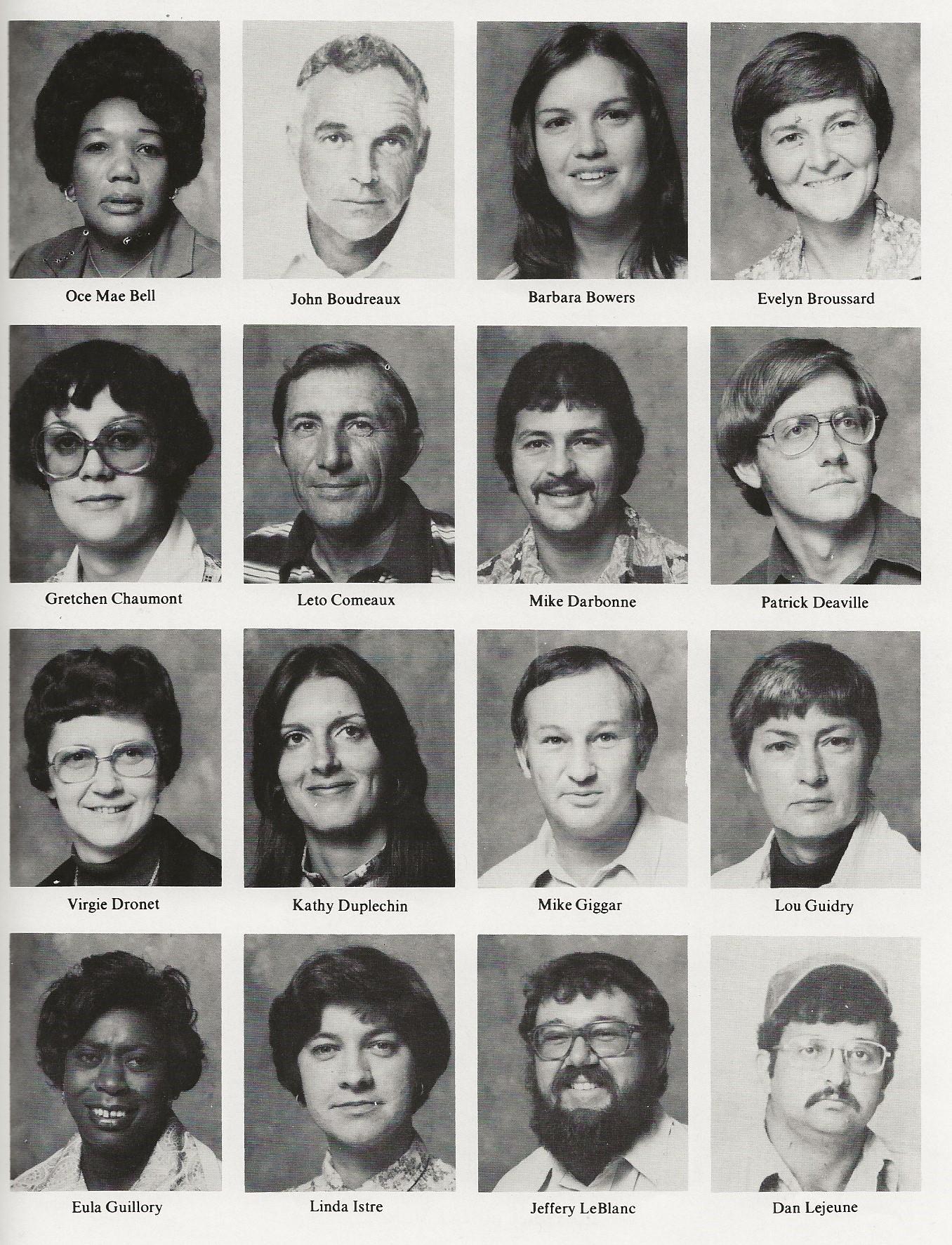
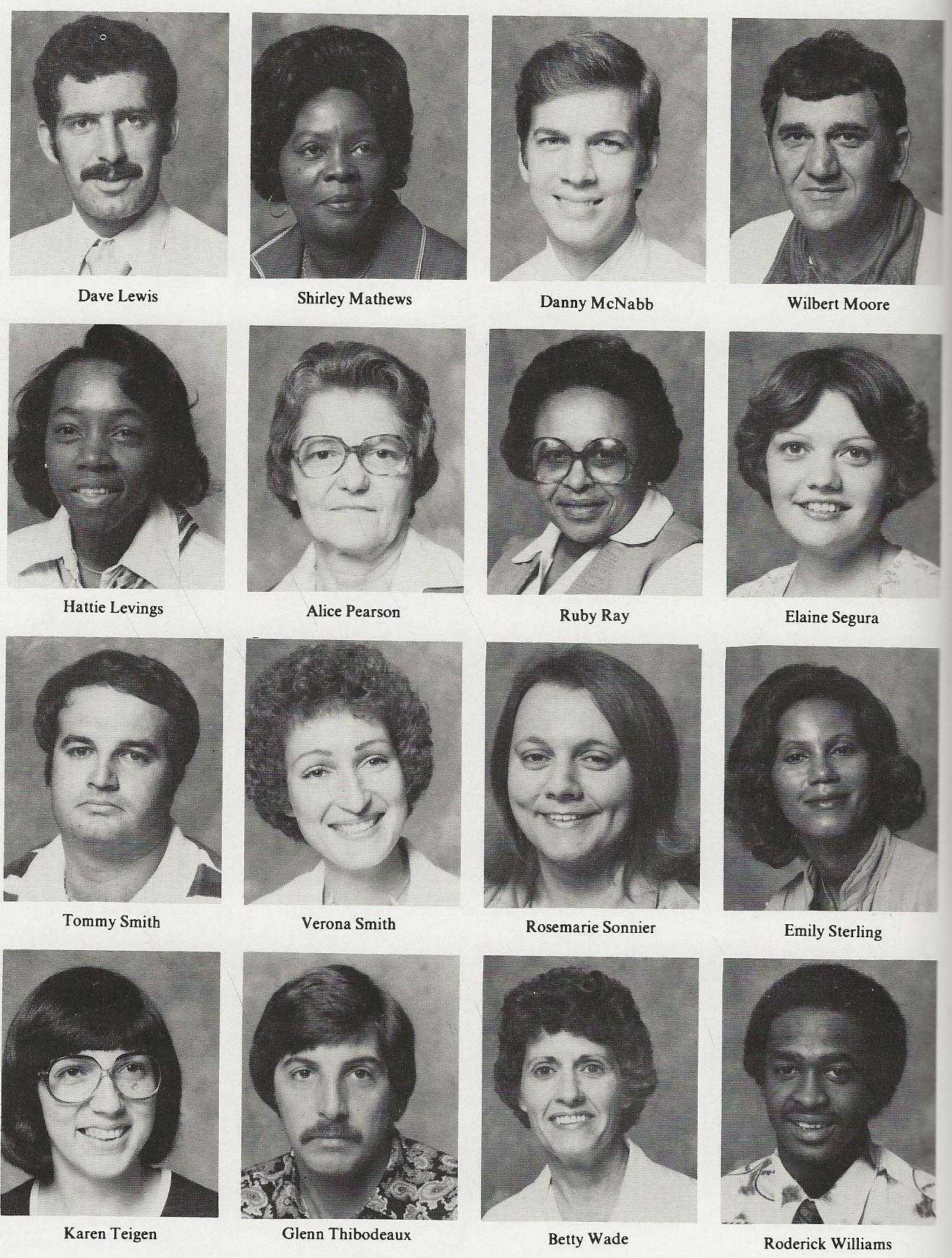
Most of our leaders were nurtured by the LAHS culture of leadership.
The student leaders in The Pride and Spirit band had many leadership opportunities outside the band room. Virtually every school club, team, and activity was filled with Pride and Spirit members who assumed leadership roles or received leadership training.
There are more instances than I can provide in this short portion of the book, but here are some Pride and Spirit member highlights during those first five years.
LAHS Pelican State Representatives: Maryanne Kratzer, Lynne Hollister, Lori Carter, and Geralyn Guidry
LAHS LSU Leadership Conference Representatives: Sally Wade, Kevin Jeansonne, LizDupuis, Beth Broussard,Lenor Broussard, TanaBourgeois,and Jovita LaPoint.
LAHS U.N. Tour Representatives: Tracey Guidry, Lizanne Carter, Ed Dupuis, and Tina Perry.
LAHS Student Council Officers: MelanieBonin, Bridget Bonin, Geralyn Guidry, and Tina Perry.
LAHS Yearbook Staff: Sally Wade, Maryanne Kratzer, Colette Trahan, Cheryl Brown, Donna Brown, Tina Perry, Lizanne Carter, Pam O’Blanc, Jovita LaPoint, Margo Dugas, Lanor Broussard, Tana Bourgeois, Renee Johnson, Edward Dupuis, and Cathy O’Blanc.
LAHS Beta and Jr. Beta Officers and leaders: Cheryl Brown, Colette Trahan, Donna Brown, Geralyn Guidry, Joan Guidry, Angie Stevens, Tracy Manuel, Donald Kratzer, Rosie Chapman, Eva Giles, Lisa Green, Jovita LaPoint, Jennifer Bertrand, Bridget Bonin, Melissa Broussard, Margo Dugas, Renee Johnson, Chris Brown, Donna Comeaux, Edward Dupuis, Tina Gagneaux, David Green, and JoAnne Kibodeaux.
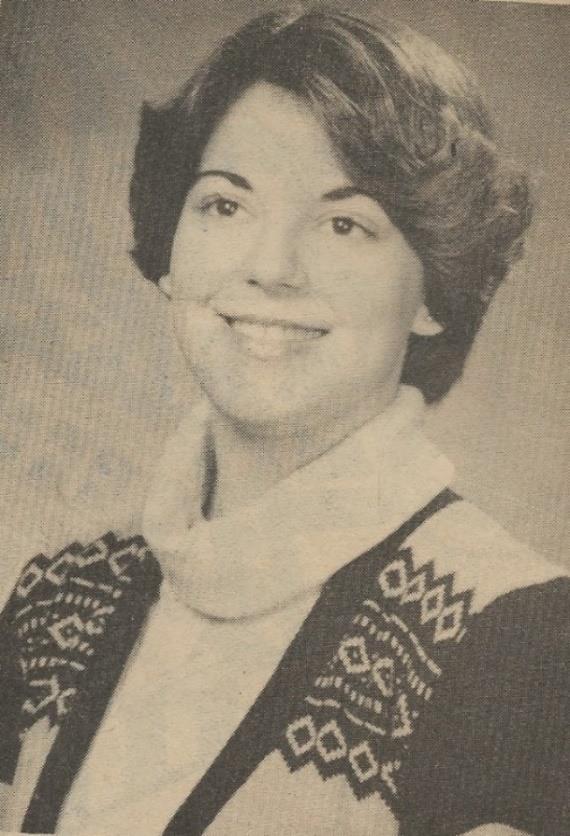
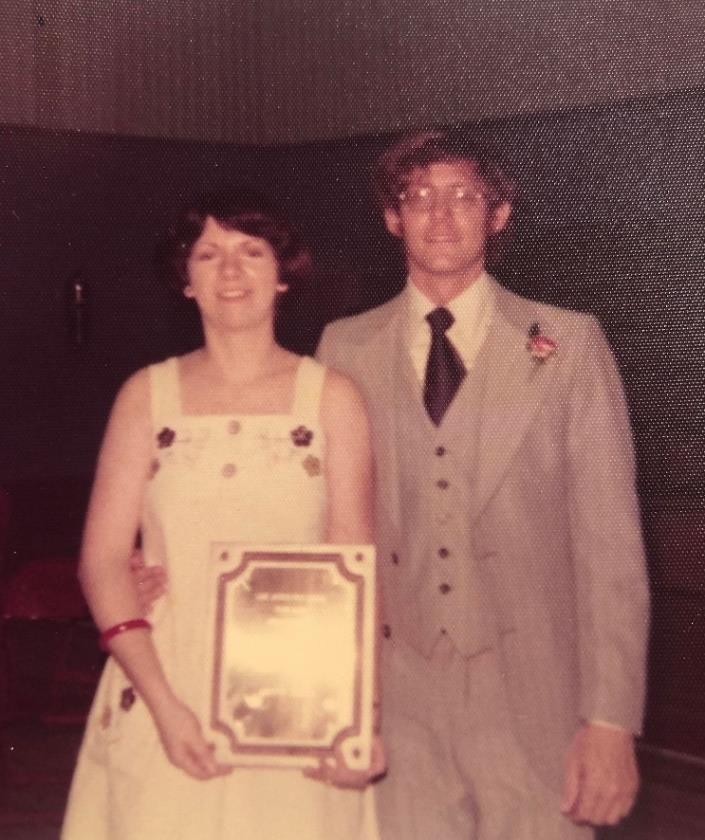
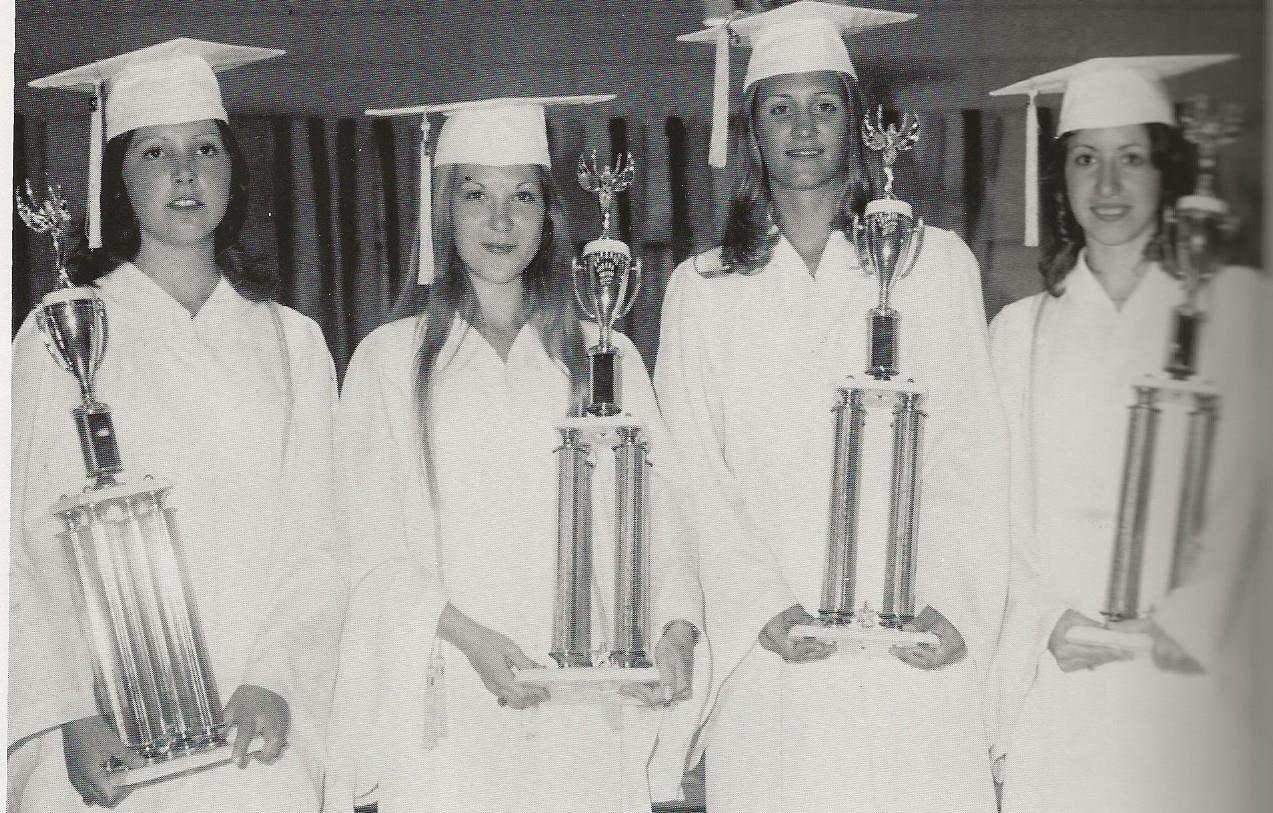 (Lynne Hollister and Colette Trahan.)
(Maryanne Kratzer, Cheryl Brown, and Sally Wade.)
(Lynne Hollister and Colette Trahan.)
(Maryanne Kratzer, Cheryl Brown, and Sally Wade.)
Pride and Spirit leaders were both in front and within the ranks.
Over my five-year tenure, I utilized multiple frameworks of student leadership. In Year One, a Band Council assisted various leaders within the sections of the initial concert band.
The command structure expanded considerably when the marching band was added in Year Two. By Year Three, the leadership model remained relatively stable even though the titles awarded to the leaders had changed.
For example, the “President of the Band Council” evolved into the “Band Captain.” The “Drum Corps Captain” became the “Guard Captain” and then shifted to the “Corps Captain.”
The duties of each student leadership position evolved as well, depending on the changing needs of the band and the unique talents of each leader.
In Year One, the Band Council was comprised of Ken Lyons, Brian O’Blanc, Monica Bonin, Lisa Green, Rip Green, and Angie Aucoin. Other vital leaders within various sections included Sally Wade, Cheryl Brown, Lynne Hollister, Cindi Fruge, Kevin Jeansonne, Glenn Richard, Edwins Wilks, and Jackie Stevens.
In Year Two, with the emergence of the marching band, the Drum Major position became critical andwas complimented by the Band and Drum Corps Captains. Sally Wade, Cheryl Brown, and Cathy O’Blanc assumed these roles.
In addition, Maryanne Kratzer and Liz Dupuis emerged as Flag Corps Captains, while Lynne Hollister and Edwina Wilks were named Captains of the Rifle Corps.
Year Three saw changes at the top of the student leadership ladder as key leaders graduated or moved to different roles. Cathy O’Blanc became Drum Major, with Donna Comeaux assuming the Assistant Drum Major role. Colette Trahan served as the PresidentoftheBand Council. Jennifer BertrandbecametheGuard Captain. The Flag Captains were Liz Dupuis and Tracey Guidry. The Rifle Captains were Lizanne Carter and Melissa Broussard
Year Four leaders included Drum Major Cathy O’Blanc, Assistant Drum Major
Donna Comeaux, Corps Captain Jennifer Bertrand, Band Captain Geralyn Guidry, First Lieutenant Tina Perry, Adjutant LaDonna Richard, Flag Captains
Tracey Guidry and Paula LaPoint, and Rifle Captains Lizanne Carter and Melissa Broussard.
Year Five leaders included Drum Major Cathy O’Blanc, Assistant Drum Major
Donna Comeaux, Corps Captain Jennifer Bertrand, Band Captain Donald Kratzer, First Lieutenant Brian O’Blanc, Librarian LaDonna Richard, Flag Captains Paula LaPoint and Sheila LeJeune, and Rifle Captains Melissa Broussard and Lola Broussard. Junior High Drum Majors included Eva Giles, Allison Duhon, Traci Cain, and Stacey LaCombe.
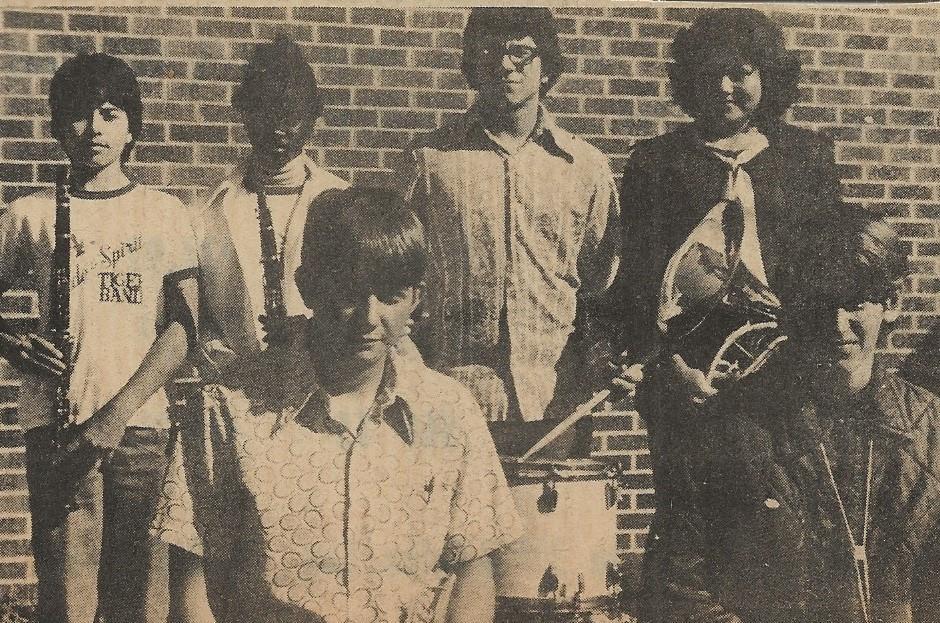
(In Year One (1974-1975), the Band Council was comprised of Ken Lyons, Brian O’Blanc, Monica Bonin, Lisa Green, Rip Green, and Angie Aucoin.)
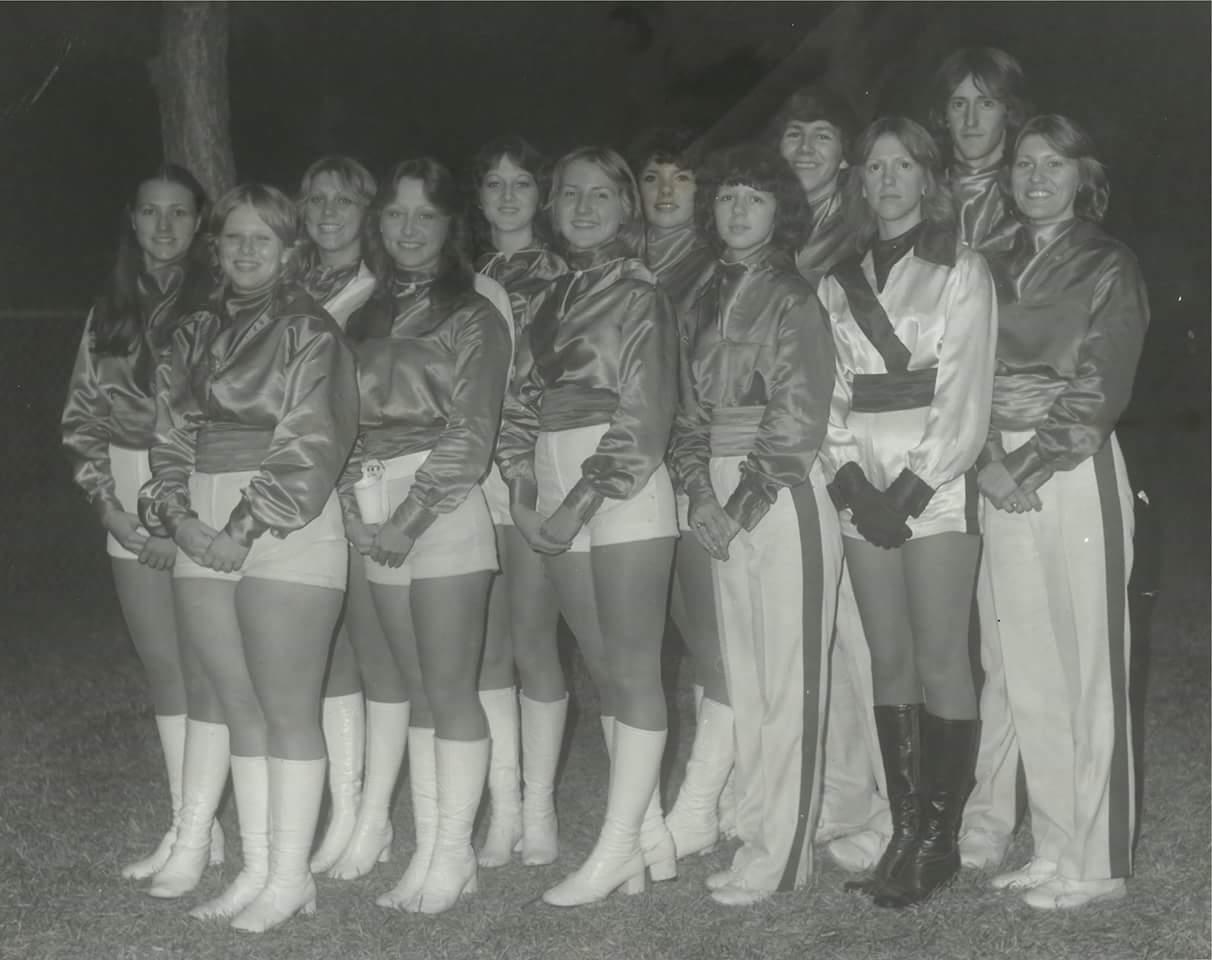
(Year Five (1978-79) Pride and Spirit Band Officers included:
Lola Broussard, Melissa Broussard, Jennifer Bertrand, Paula Lapoint, Sheila Lejeune, Rosie Chapman, Cindi Fruge, LaDonna Richard, Donald Kratzer, Cathy O’Blanc, Brian O’Blanc, and Donna Comeaux.)
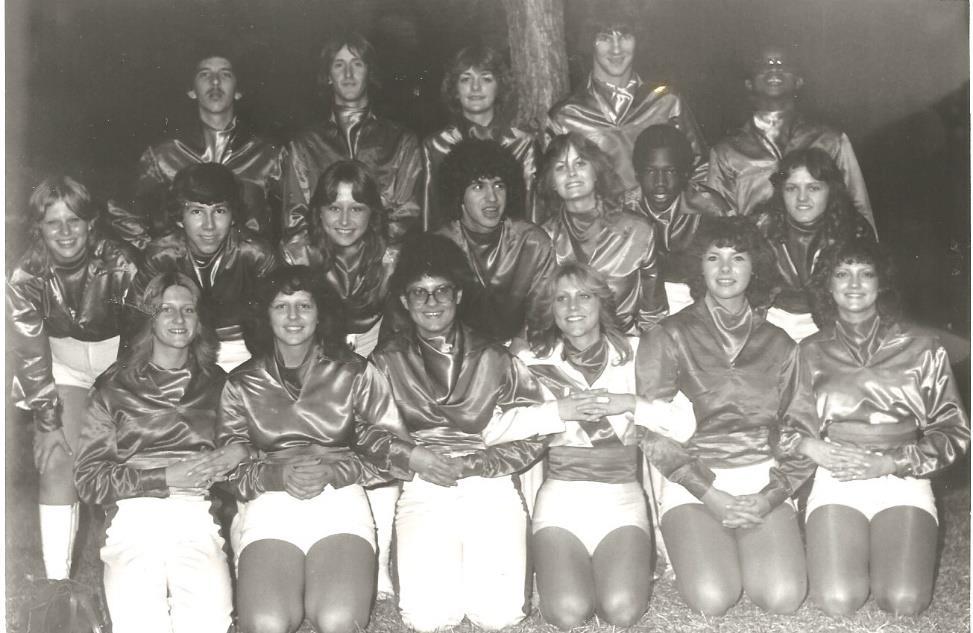
(We had five years of strong leadership from the Class of 1979: Jennifer Bertrand, Bridget Bonin, Tana Bourgeois, Melissa Broussard, Richard Broussard, Lucette Chaisson, Teresa Conner, Margo Dugas, Cindi Fruge, MaDonna Hargrave, Jude Henry, Renee Johnson, Donald Kratzer, Paula LaPoint, Tracy Manuel, Johnathan McZeal, Brian O'Blanc, Glenn Richard, and Augie Robinson.)
Sally Wade, Cathy O’Blanc, and Eva Giles established the legacy.
Outstanding drum majors have fronted the Pride and Spirit band for fifty years.
During my short tenure, I had the opportunity to train multiple young ladies who defined the position and established the “drum major legacy” that has continued to this day. So, this chapter will take a while.
As a young band director at LAHS, I never claimed to be an expert on everything in the band world. However, I was confident because of my strong background of band experiences from Jennings High School and McNeese State University.
I must credit Paul Myers, my high school director, and Mrs. Georganne Love, my collegiate mentor, for my drum majoring experience and early expertise.
From 1968 to 1972, my drum majoring was slowly transformed from a “militarystyle” at JHS, with the traditional “mace” for conducting, into the McNeese “drum and bugle corps style.” After viewing many progressive DCI drum majors, that evolved into a “freestyle” by my senior collegiate year.
Upon graduating from McNeese, but before going on active duty with the U.S. Army, JHS band director Bardie Roberts asked me to help train his rising drum major, Celia Joe Black. She was a “natural.” When I became an instructor at the McNeese Summer Band Camp, she was my “demonstration” drum major for the band director clinic.
At this clinic, I realized my style, ideas, and instructional methods might just be catching the eye of directors in Louisiana and Mississippi. Surprisingly, the clinic room was packed with high school and collegiate band directors.
During my Army years, I continued to develop my thoughts on drum majoring. When I got to LAHS, I knew what I wanted to do. But I would need two things. The first was a marching band, which didn’t happen right away. The other thing was the right person to train.
After a thirty-second conversation with Sally Wade in August of 1974, I knew I had found the right person. She had it all. She was musical, intelligent, athletic, competitive, fearless, and, as a bonus, easy on the eyes.
I did not initially mention the drum major position to Sally; I was simply trying to recruit her into the band. But as plans for a marching band began to evolve, I drew Sally towards leading the band. She was already an experienced and aggressive leader. All she needed to become a topflight drum major was training, technique, and opportunity.
And so, it began. From the first performance, there was no doubt we had a special person upfront.
The uniform varied from the traditional LAHS red and blue. I decided on a distinctive silver and black uniform for her. It immediately drew the audience's attention, which was part of the plan.
But the real eye-catching element was the “freestyle” approach to conducting and showmanship. The marching band was an immediate hit. Sally was a star. The uniform and style became trademarks for me, my drum majors, and my bands
Knowing that Sally was a senior, I had already started selecting a successor. I did a lot of thinking and calculating before making this critical decision. However, instincts also play a role when choosing leaders. There were several excellent candidates. But in the end, my gut told me the right person was Cathy O’Blanc.
The only drawback was that she would be a freshman replacing a senior. That was not an issue for me, as I knew she would be surrounded by a strong core of leaders intheorganization,withseniorslike ColetteTrahan,LizDupuis,LynneHollister, and Lori Carter in the mix.
I also truly believed Cathy had a “high ceiling” and would continue to elevate the drum major role for years to come. It was one of the best professional decisions of my young career.
For the remaining three years of my tenure at LAHS, Cathy worked, led, performed, and excelled beyond all expectations. The countless hours of year-round training
were not something the band members always witnessed. They only saw the spectacular results
Cathy was a consistently superior-rated performer at the band festivals. But there was so much more to the story. Her demonstrations, performances, and efforts as a co-instructor with meat drum major camps in Mississippi and Arkansas changed the lives of hundreds of young drum majors throughout the South.
Her selection as Drum Major of the Louisiana All-Star Marching Band was a fantastic honor, but being named the Outstanding Drum Major at the East Texas Contest hosted by Lamar was the peak award. Leading the band down Main Street USA at Disney World was icing on the cake.
At this point in the story, I must give some attention to Donna Comeaux. While serving as our assistant drum major, she trained hard and developed terrific techniques. She also traveled with me to drum major camps, won camp competitions, and developed into a co-instructor.
Donna could fill in for Cathy every time there was a need. With Cathy’s frequent selection to Homecoming Court, Donna served as our drum major for the Homecoming Parade and football game. After a quick change from her basketball uniform, she often conducted the basketball pep band for the boy’s game while Cathy served as a basketball cheerleader.
Throughout those three years, Donna worked extremely hard, developed excellent skills, answered every call, was a leader in the flute section, and stayed loyal to her father and his team. I was teary-eyed when she conducted “Beth” at my final concert with the Pride and Spirit.
I also planned to ensure the drum majoring legacy would endure at LAHS. So, Eva Giles, Allison Duhon, Traci Cain, and Stacey LaCombe entered training in the eighth and seventh grades. I knew that all four had unique qualities and that any of them could have been the successor to Cathy. Eva Giles took up the mantle after my departure and Cathy’s graduation to extend the legacy. Beyond my five-year tenure at LAHS, the legacy of the Pride and Spirit drum major continued and grew through the lives of some fantastic LAHS student leaders.
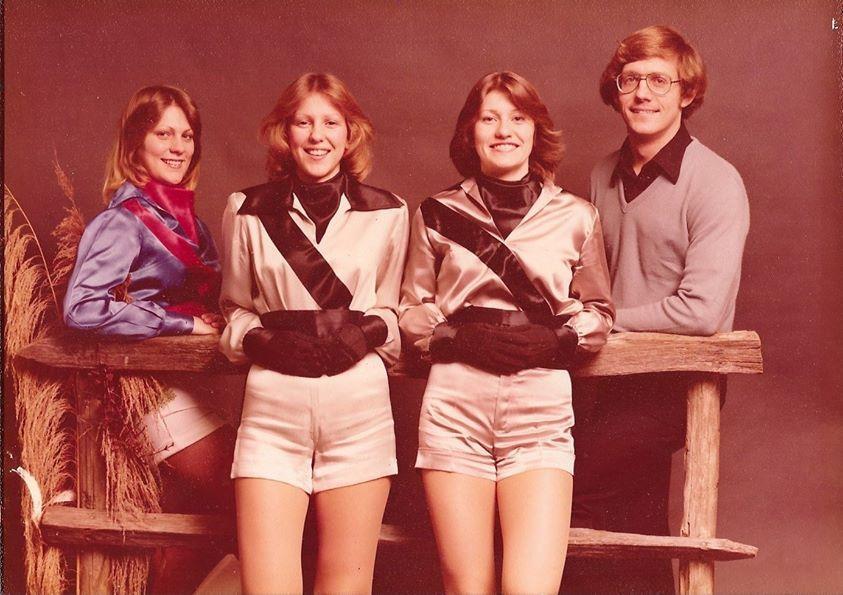
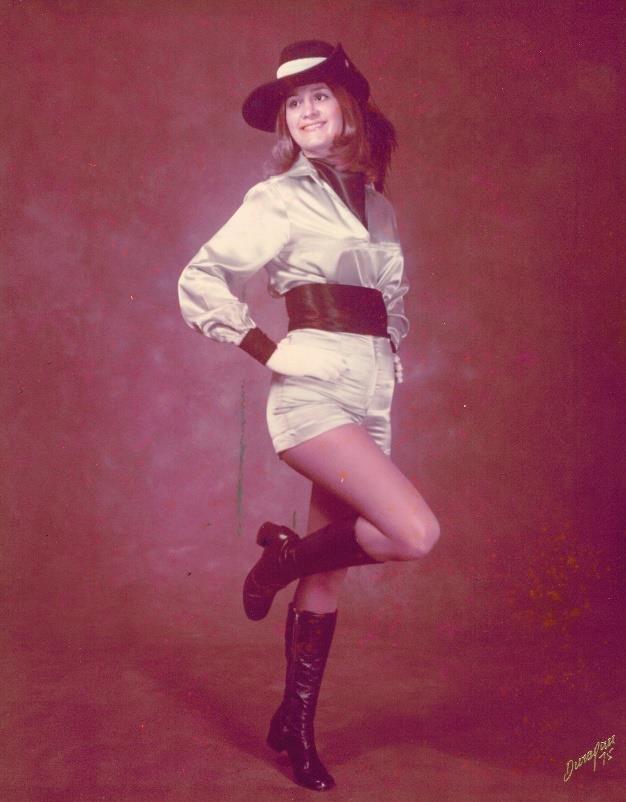
 (Jennifer Bertrand, Cathy O’Blanc, and Donna Comeaux.)
(Sally Wade and Eva Giles.)
(Jennifer Bertrand, Cathy O’Blanc, and Donna Comeaux.)
(Sally Wade and Eva Giles.)
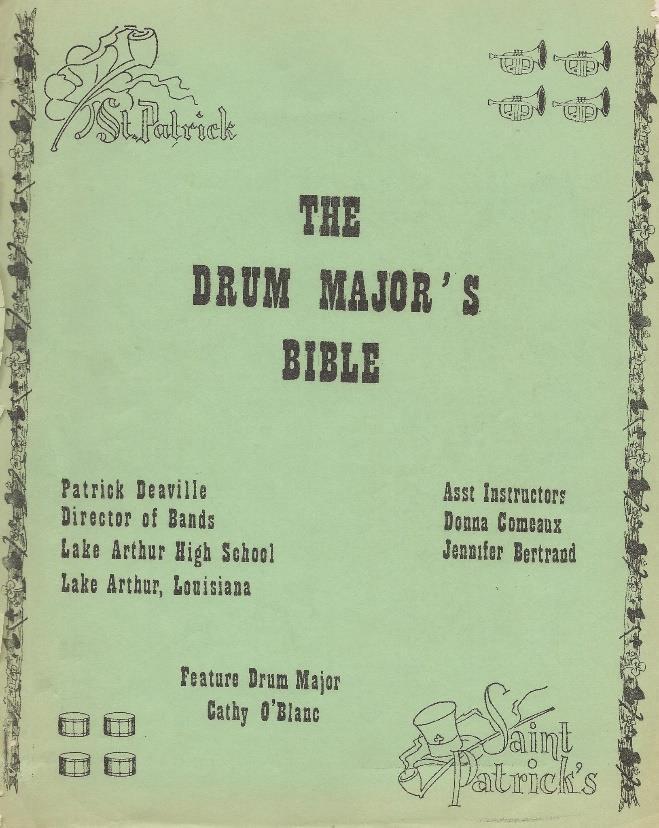
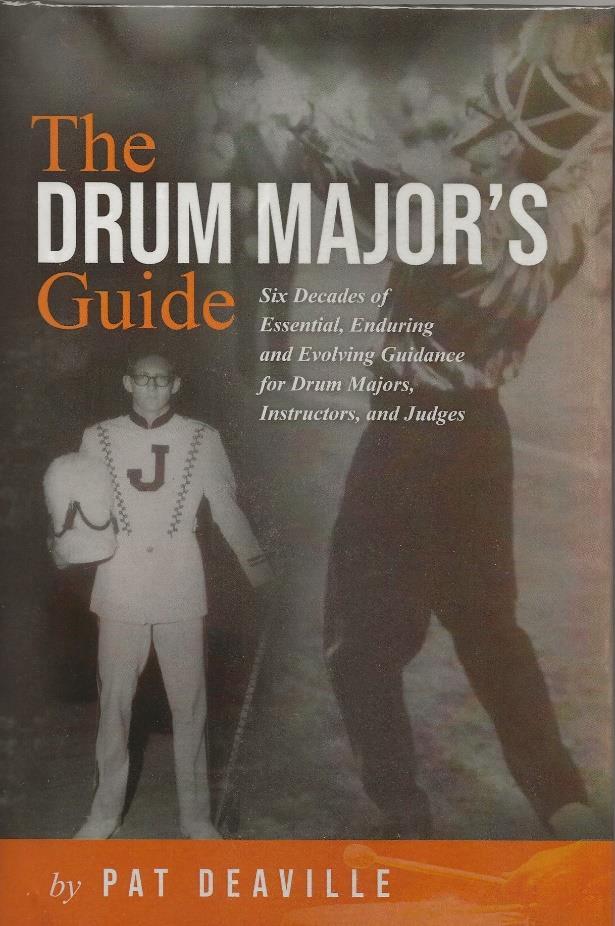
(My “Drum Major’s Bible” from the Southern Miss Camps and my “Drum Major’s Guide,” which I used for decades while teaching and judging drum majors across the Southern U.S.)
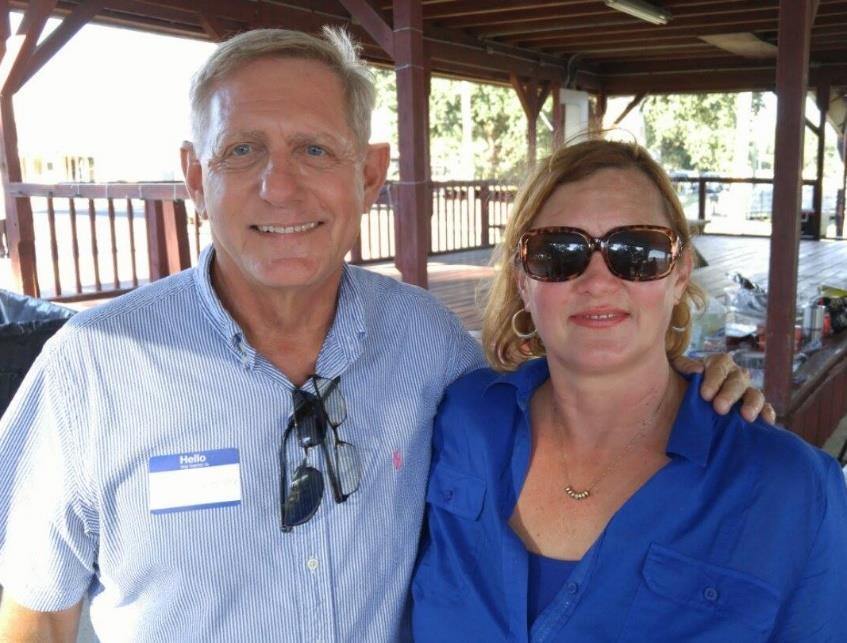
(With Sally Wade at the Class of 1976 Reunion.)
Every picture tells a story.
Throughout this book, I mention the names of mentors who are not necessarily familiar to most Pride and Spirit band members. But to tell our complete story, it is crucial to understand who provided me with guidance and essential advice.
My high school and collegiate directors, E. J. (Red) Laparouse, Paul Myers, Norman Smith, Kelly Love, and Georganne Love, taught me by example and exposed me to the broader spectrum of school bands.
During my tenure at LAHS, my colleagues included Jennings band directors Bardie Roberts and Bob Landry. These two pointed me in the right direction and educated meonthelocalandstatemusicorganizationsgoverningband festivalsand activities.
Orville Kelley, a legendary Texas band director and owner of Swicegood Music Company, was my musical “godfather” and trusted professional advisor.
Each of these mentors had a somewhat different approach to building a band program,thoughnonehadfacedthescenarioIencounteredinLakeArthur.So,while I drew deeply from the experiences and words they provided, I found myself in “uncharted waters.” I had no choice but to create my unique pathway to success.
RedLaparouse,KellyLove,and BobLandryhelpedmetounderstandthestrength of numbers. All three were outstanding recruiters. They had a good eye for students with potential, but they wanted their organizations to contain as many hard-working students as possible. While all three directors produced high-quality bands during their careers, quantity was an essential factor.
Paul Myers, Bardie Roberts, and Orville Kelley produced elite performing bands. Numbers mattered. However, quality was at the core of their approach to program building. Find talented students, nurture them, drive them, and challenge them with complex literature and intense discipline. They strove to create elite bands and succeeded.
I say all this to address the issue of quantity vs. quality. When building a band program, should you emphasize large membership totals or smaller numbers with the strongest concentration of talent available?
To some extent, I chose both pathways. But, a significant membership growth had to happen immediately. Without building up the band size quickly and spectacularly, the LAHS band program would have become extinct within a year.
But while obsessively recruiting beginners at all grade levels (6-12), I knew I needed to capture as many of the best and brightest students on campus for the band's core If I could recruit many students, with a high percentage of those students already possessing leadership skills and strong work ethics, we could turn vision into a reality.
In the beginning, all I had to offer was vision, determination, and a positive attitude. Everything else (equipment, uniforms, budget, training, and refinement) would eventually come with the long-term efforts of many people
The popular phrase “every picture tells a story” applies to the foundational legend of the “Birth of the Pride and Spirit.” The series of our yearbook pictures from 19751979 have an old-school feel.
They are all taken in a gymnasium, and students are gathered as closely as possible. Westartedwithasinglepicturethatincludedallbandstudentsfromgrades6through 12.
By Year Four, we began to take a 6-8 group picture separately from the 9-12 group, as the photographer could not get us all in one shot and still have the faces recognizable. Then, by Year Five, getting a decent photo of either group crammed in the bleachers was impossible, so we took to the gym floor for a picture with each group.
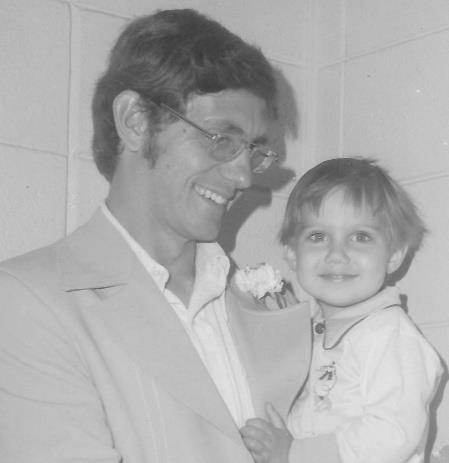
(With my son Paul in the gym lobby.)
The Foundational Years between 1974 and 1979.
Every Pride and Spirit band member views the experience through their unique prism.Forsome,apicturewill igniteaseriesofmemories.Forothers,it is apersonal relationship they have sustained for a lifetime. Listening to our album can flood a member with emotions and trigger a strong sense of bonding.
For a few of us with a touch of “obsessive-compulsive disorder,” it is the data that captures our imagination. And yes, we all know I battle OCD from sunrise to sunset.
So, for all my OCD members, here are some numbers to spark connections to the Pride and Spirit story.
The membership growth was the most eye-catching data. The roster I was given in August 1974 for my one and only “band class” had seven names on it.
By the first day of school, a couple of those names had disappeared, but others had been added to bring the total to thirteen. I took a picture of them in front of the old school on the downtown campus.
By May 1975, we had over one hundred members. At the end of my five-year tenure in May 1979, there were over two hundred members in grades six through twelve.
But membership is just one piece of data. Between the spring of 1975 and the spring of 1979, we were performing constantly. Here are some of the numbers:
45 Football Game Appearances. 38 Football Halftime Performances.
47 Pep Rally Performances.
Parade Performances. 21 Concert Performances.
16 Major Competition Performances. 9 Exhibition Performances.
184 Total Performances over five years.
The data on individual band student recognition between the spring of 1975 and the spring of 1979 included:
31 Students were selected to district-level honor/clinic bands.
27 Students were selected to the Louisiana All-Star Marching Band.
24 Students were named in Who’s Who in America.
8 Students are listed in the All-American Hall of Fame.
3 Students were selected to participate in the United States Wind Band.
The Superior and Outstanding trophies and plaques between the spring of 1975 and the spring of 1979 represented data that revealed high quality in formal evaluations:
1975 LMEA District Concert Festival Superior Band
1977 Jefferson Davis Parish Parade Outstanding Band
1977 LaGrange Marching Festival Superior Band
1977 LaGrange Marching Festival Superior Flag/Rifle
1977 DeRidder Marching Festival Superior Band
1977 DeRidder Marching Festival Superior Drum Major
1978 LaGrange Marching Festival Superior Flag/Rifle
1978 LaGrange Marching Festival Superior Drum Major
1978 LMEA District Sightreading Superior Band
1978 Jefferson Davis Parish Parade Outstanding Band
1978 Lamar University Marching Invitational Superior Flag/Rifle
1978 Lamar University Marching Invitational Outstanding Flags
1978 Lamar University Marching Invitational Superior Drum Major
1978
Lamar University Marching Invitational Outstanding Drum Major
1978 Denham Springs Marching Festival Superior Flag/Rifle
1978 Denham Springs Marching Festival Superior Drum Major
1979 LMEA District Concert Festival (Jr. High) Superior Band
1979 LMEA District Concert Festival (Sr. High) Superior Band
1979 LMEA District Sightreading Superior Band
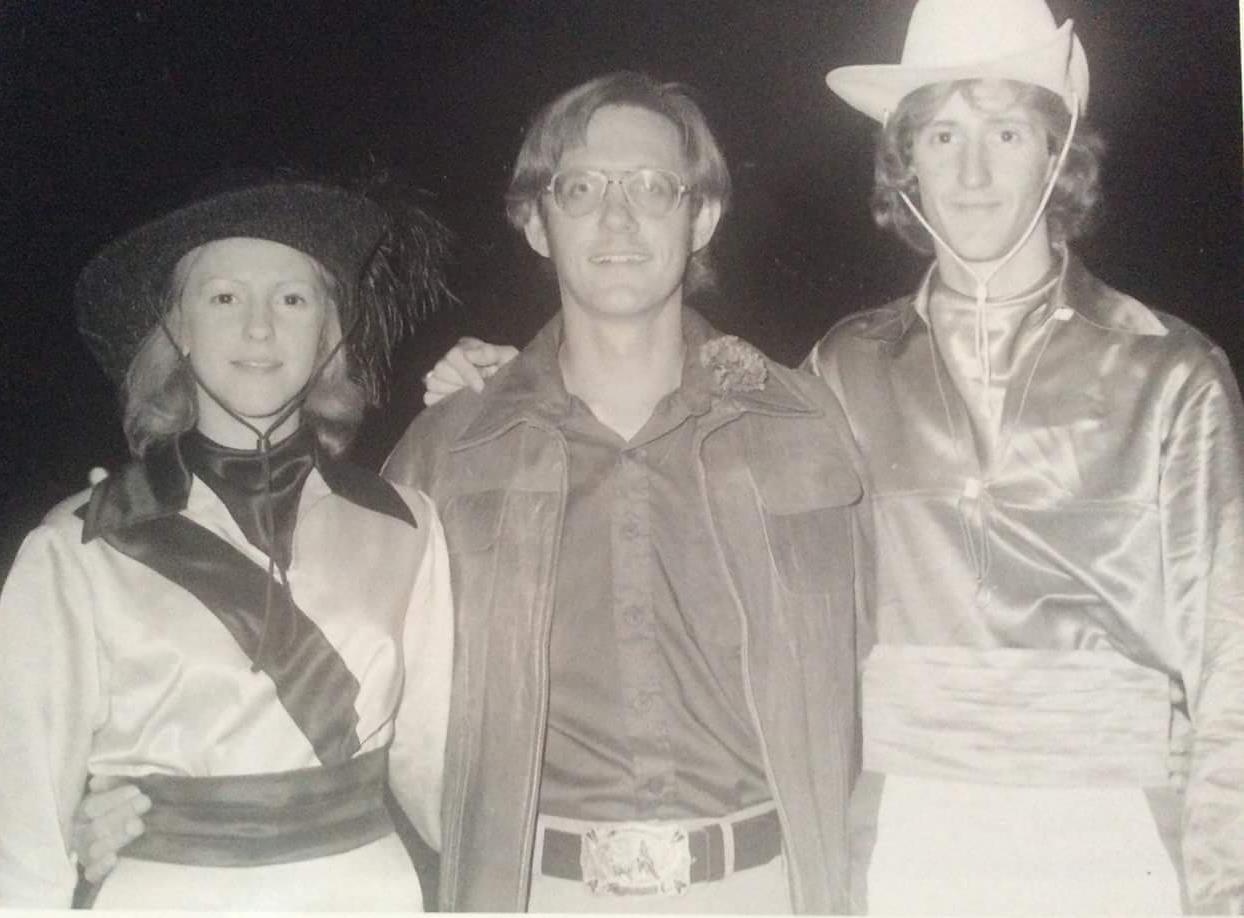
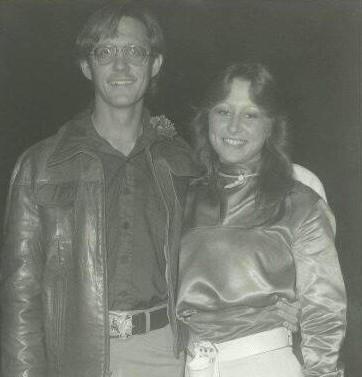
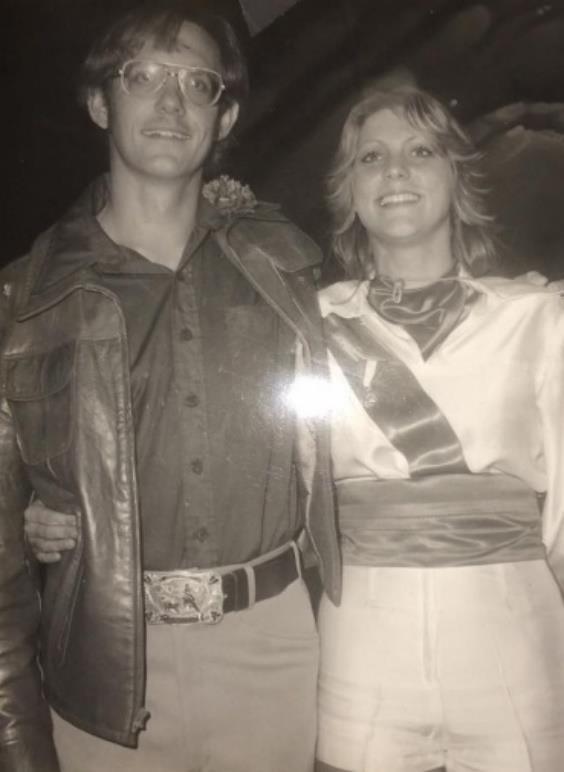 (Cathy and Brian O’Blanc.)
(Paula LaPoint and Jennifer Bertrand.)
(Cathy and Brian O’Blanc.)
(Paula LaPoint and Jennifer Bertrand.)
The bittersweet finale to an incredible story.
Year Five (1978-79) was one of nonstop rehearsals, performances, accolades, and a memorable send-off. With many trophies and plaques from marching festivals, concert festivals, and parades, we capped the year with our spring concert in a packed gym. It was my final time leading the Pride and Spirit band. It appeared as if the entire city was present.
The junior high and senior high bands took turns performing their concert band literature. But we also included some of the fan-favorite marching band arrangements.
I ensured that our high school and junior high drum majors could conduct during the performance. Cathy O’Blanc and Donna Comeaux took turns on the podium. Eva Giles, Allison Duhon, Traci Cain, and Stacey Lacombe (in full uniform) also assisted me in co-conducting a unique selection.
Alton O’Blanc and Alvin Richard represented the parents and Boosters in presenting a specially inscribed plaque to me. The Louisiana State Legislature awarded a formal commendation, and a letter from the Lake Arthur Mayor was presented. Pictures of hugging Lola Broussard and LaDonna Richard after the concert remain heart-tugging to this very day.
Of course, this is a Lake Arthur story. So, after all the tears and hugs, there was a celebration for all we had accomplished together during those five remarkable years.
And what better way to celebrate that than with a massive South Louisiana crawfish boil? Hundreds of students and parents ate their fill from the countless platters set up on tables in Alton O’Blanc’s backyard.
And yes, the air was filled with sounds of Cajun and Swamp Pop music blaring from the amp system I used when DJing the summer dances.
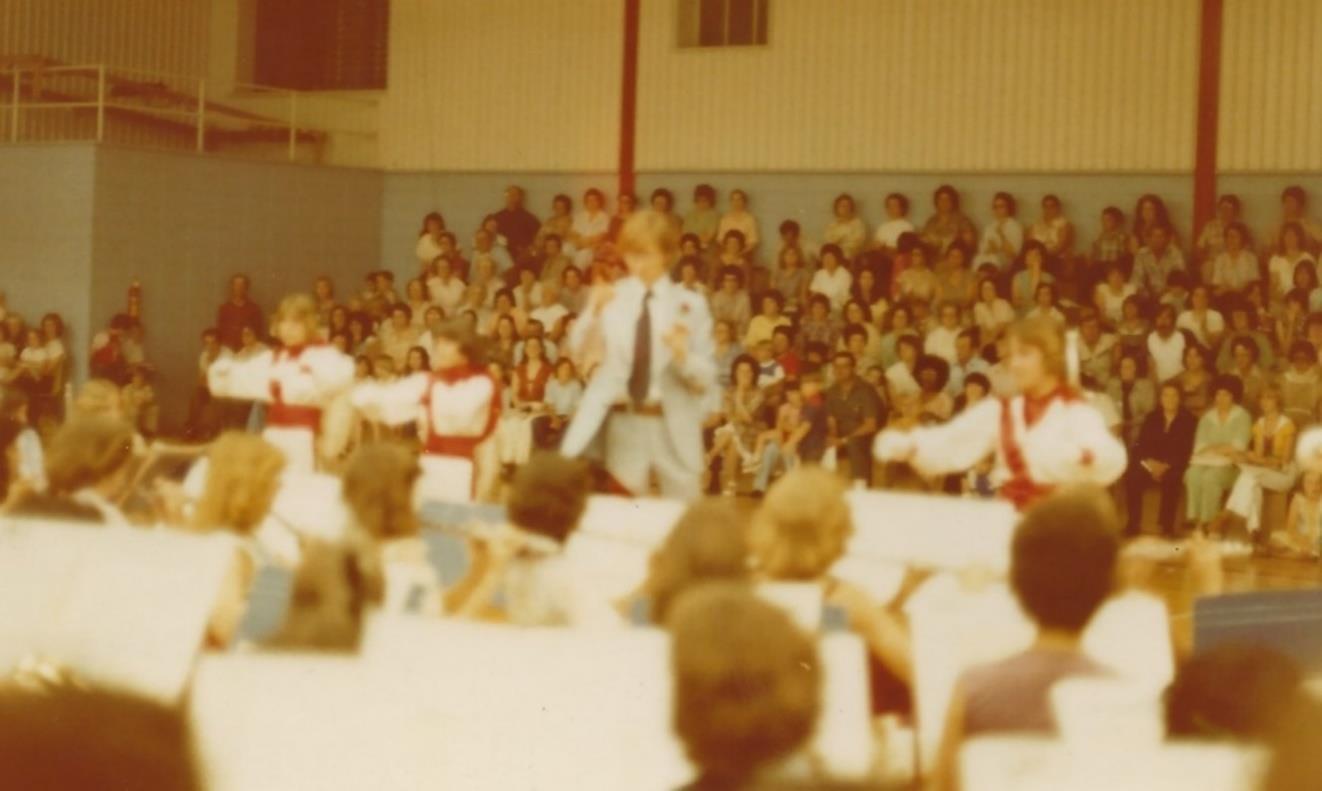
(I was conducting my final spring concert with the Pride and Spirit.)
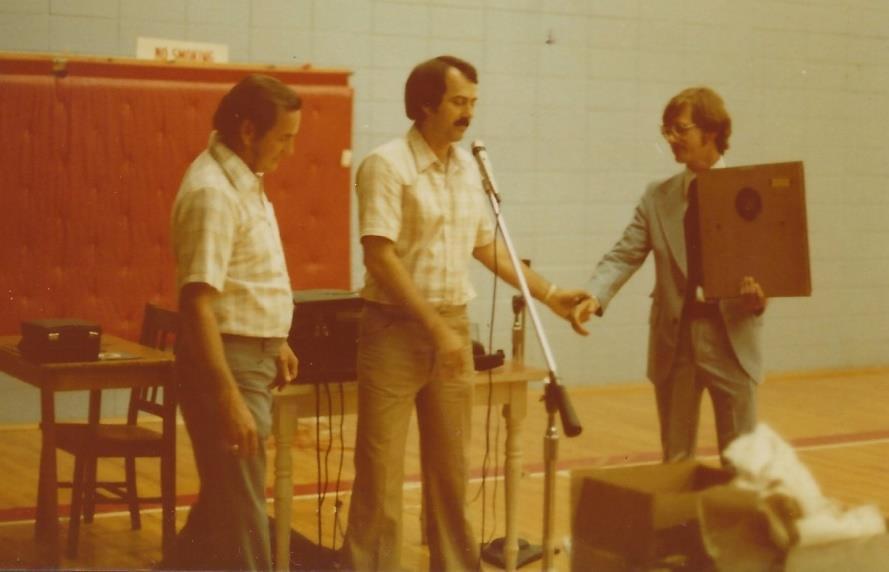
(Being honored by Alton
.)
O’Blanc and Alvin Richard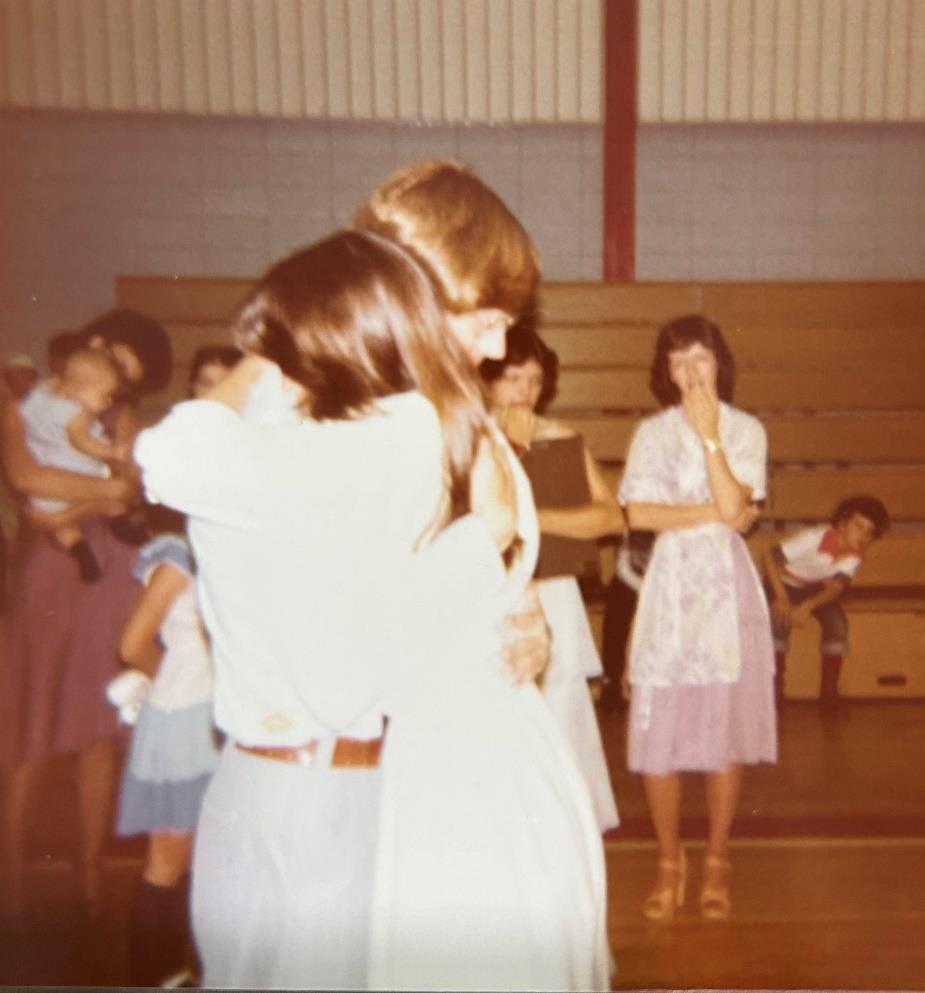
(A parting hug from Lola Broussard with LaDonna Richard in the background.)
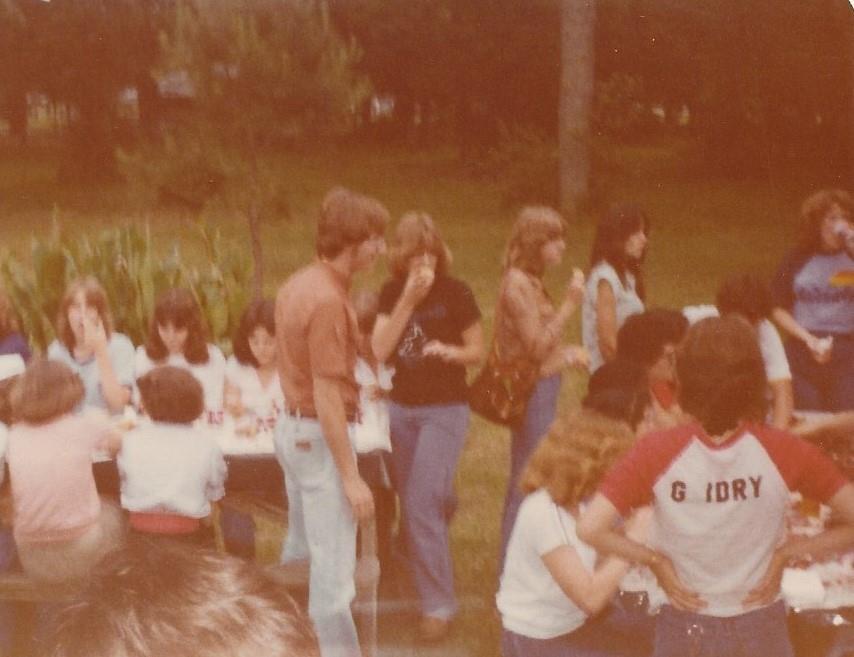
(It was not the end of the story…only a celebration of how far we had come.)
In August 1974, I entered 4th grade at LAE. I do not remember having any thoughts about the band that year, but the following school year, 1975-76, is a different story.
My back-door neighbor was Becky Guidry. She was a year ahead of me in school and played the clarinet. I am not sure exactly when it started, but she began to bring her clarinet home on weekends, and she allowed me to borrow it. This means we probably shared the mouthpiece and possibly the reed…I do not want to think about that now...Haha. I learned how to put it together and take it apart, and I began to learn basic notes and how to get a sound out of it. I knew when the next year came, I was going to play the clarinet in the school band just like her.
The school year started, 1976-77; not only was I joining the band, but while sitting in my math class, Mr. Pat Deaville walked in with a record player and a stack of vinyl records, and my world of music exploded. He brought in Cat Stevens, The Carpenters, and so many others.
I still listen to music today and love it for no reason other than the rhythm, harmony, and beat. Sometimes, I find that I love a song and have no clue what the words are; Ijustlovethesoundofthemusic,andIgivealotofthat creditto thosemusicclasses.
I rememberthenightthat Mr.Kelley from Swicegood Music setup inthe band room for us to rent or purchase our very own instruments. We were told to choose three that we wanted to try. I chose trumpet, drums, and, of course, clarinet. That night, I went home with a clarinet that I still own today. It has been played by both my daughter and my granddaughter in their band years.
During those first years we learned many things about reading music and getting the best sounds possible out of our instruments. But we also learned how to push ourselves to be the best, we learned to celebrate others’ wins, and we learned to take defeat. That was done in part by chair challenges.
Alison Duhon and I sat in the 1st and 2nd chair positions many times in those years, and when I felt like I could take that 1st chair position, I would challenge her. We would play an assigned piece in Mr. Deaville's office for him, and he would
determine who played it best and assign us our seating. Sometimes, I was awarded that 1st chair position, and other times, I was not, but one thing was for sure: when I was, I was certain she would challenge back very soon. This led to a lot of practice time, which was a huge win for the band program.
If you ask me now, I think Pat Deaville was brilliantly sneaky at finding ways to get us to practice and develop a healthy form of competition in us!
In the year 1978-79, 8th grade, band was my world, life is grand, and I was given the opportunity to be a band manager along with several of my classmates in the high school band. We traveled with them, served them, and watched up close what the high school band was all about. What a privilege! These people were our idols. They were the ones we looked up to. I was not going to play sports or be a cheerleader. They were doing what I wanted to do: march in the Pride and Spirit Band!
The memories of that time will remain with me forever. We worked hard. We covered the bleachers, so they had clean, dry places to sit, unloaded the instruments and whatever else they needed, and, in the process, we also played hard.
One of my favorite memories was how we got to one of the football games and festivals. We didn’t ride the buses, so our parents would take us where we needed to be, and you know things are different now because, on this one occasion, they put us in the back of my dad’s pickup truck! It had a cover on it, and so we all jumped in with our pillows and blankets and off we went. We had music to listen to and snacks to enjoy, and it was a blast.
I went on to enjoy a couple more years of marching band under Mr. Thompson's direction and will forever say that being in the band was the absolute best part of my school life.
Years later, I had the privilege of being a band parent for the Pride and Spirit Band and came full circle with my appreciation of how much our parents did for us and the sacrifices they made.
Band and music, in my opinion, are the greatest gifts you can give to any student, and I hope it will always be available to them.
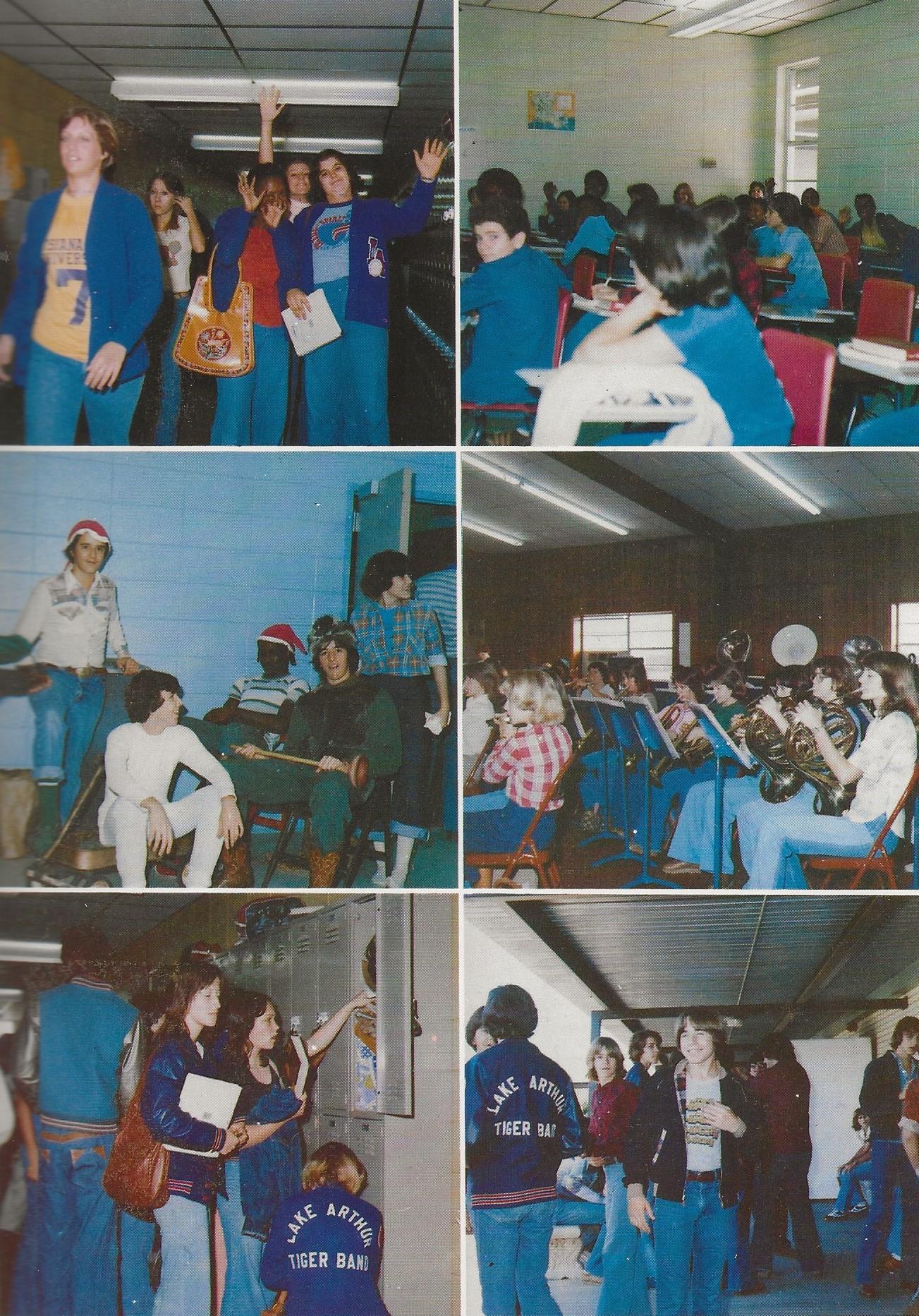
Greg Stevens
Mom and Dad had three kids in the “Pride and Spirit” from day one in 1974 until I graduated in 1982. Dad was the Booster Club Treasurer for eight years. Mom, along with many of her friends, worked tirelessly behind the scenes doing everything from sewing uniforms to making food and selling concessions at football games and at the big 4th of July fundraisers we used to have.
They not only supported me and my sisters who were in the band but all the kids in the band. I’m so thankful and grateful to have had them as my parents. Mom and Dad loved being a part of the Pride and Spirit Band. I miss them.
Cathy O'Blanc Young
I am so thankful that my Mom and Dad were so involved with the Pride and Spirit Band. They spent countless hours helping with fundraising, chaperoning Boogie Bashes, band trips, marching festivals, working the concession stand at football games, and hosting crawfish boils. Dad even drove a school bus to band camp in Mississippi with Mom following in the car to pick him up, and then the next week driving back to pick us up. My Mom continued to help with the band even after my brother and I graduated by chaperoning a band trip to Colorado. I am so grateful for the support of the school faculty, our families, friends, Lake Arthur citizens, and Mr. Patrick Deaville. Wecouldnothave accomplished all that wedid without everyone's hard work and dedication. It was a great ride and has played an important role in who I am today. The band taught us discipline, respect, and honor; I am forever grateful for that.
David Green
Remember the circus that came to Lake Arthur and set up the big tent on the school property? I think it was a band fund raising event. My friends and I helped set up and got free tickets.
Paula N Scott Helling
The band boosters’ support is what made all the difference. The creative things they came up with to raise funds helped us do things that we would never have been able to do otherwise. Those Boogie Bashes were a blast.
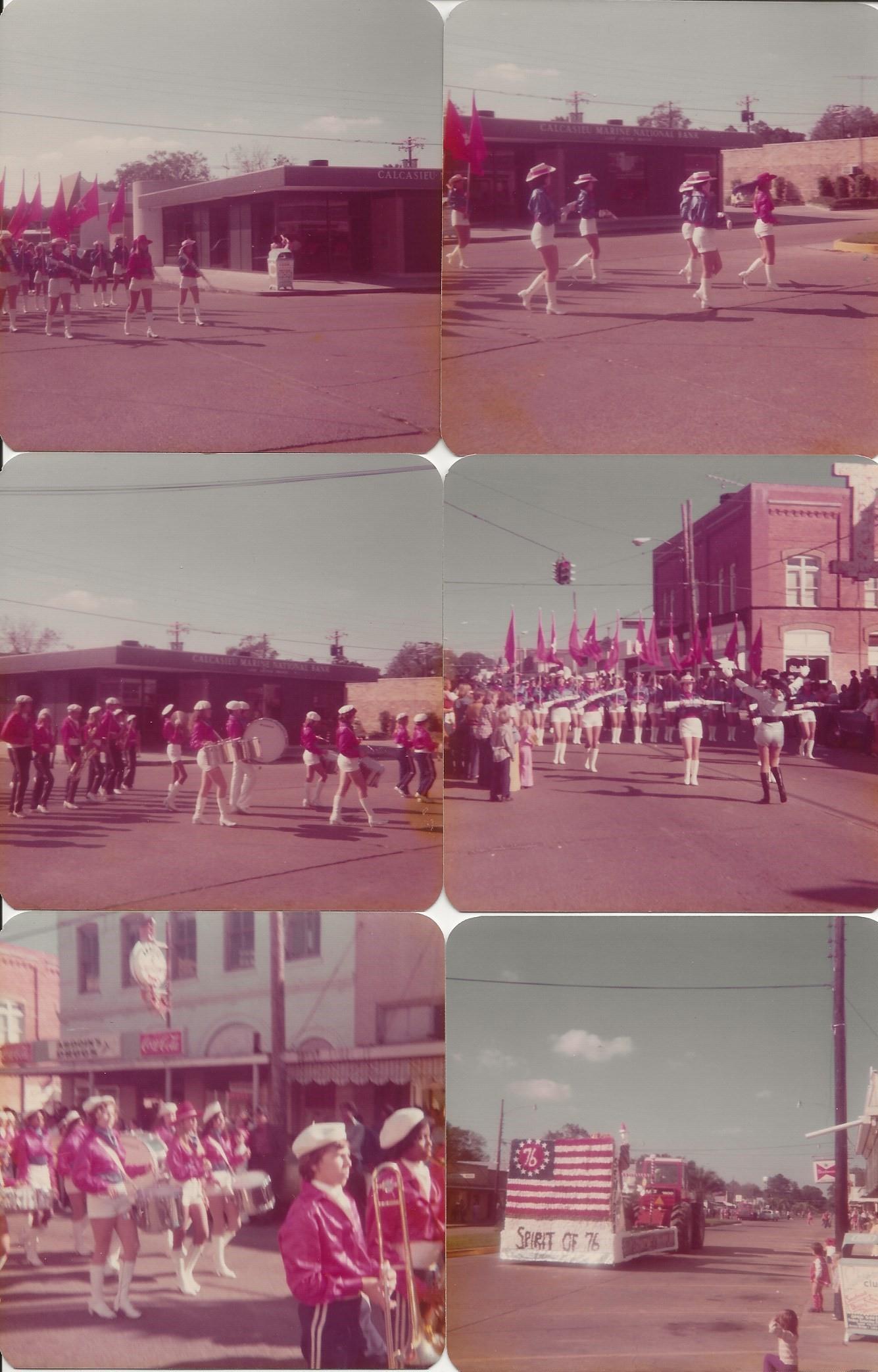
David Green Beat Kountze!
Today, I visited a small Texas town that brought back a lot of memories. I’ve never been here before, but the name was burned into my memory 45 years ago.
In the fall of 1978, our high school band was set to compete in the East Texas Marching Contest at Lamar University in Beaumont, TX. Our band was young. We had grown from 7 to over 200 students in a matter of a few years. Most of us had never played an instrument until we joined the band.
On the week of the contest, as we arrived at school, we were given spirit ribbons that said, “Beat Kountze.” We heard that over and over. Kountze High School was the top band in our classification. Every day, we were focused on one goal: to Beat Kountze.
Looking back, I realize it was never really about the Kountze High School Band. It was about our dedication, our work ethic, and our focus on the task in front of us.
Our band director, Patrick Deaville, knew how to motivate us. We didn’t do it out of fear, although a red-headed Cajun with a military background can be a little scary. We worked hard because of the example he set, and frankly, we didn’t want to disappoint him. I guess that’s why so many of us still look back fondly on our time in the Lake Arthur High School Pride and Spirit Band.
Paula N Scott Helling
This was an unforgettable moment another solidifier of the name we represented.
Edwina Wilks
Hard work pays off!
Kathy Jester Mack
It still evokes pride in me for this wonderful group of students and their director.
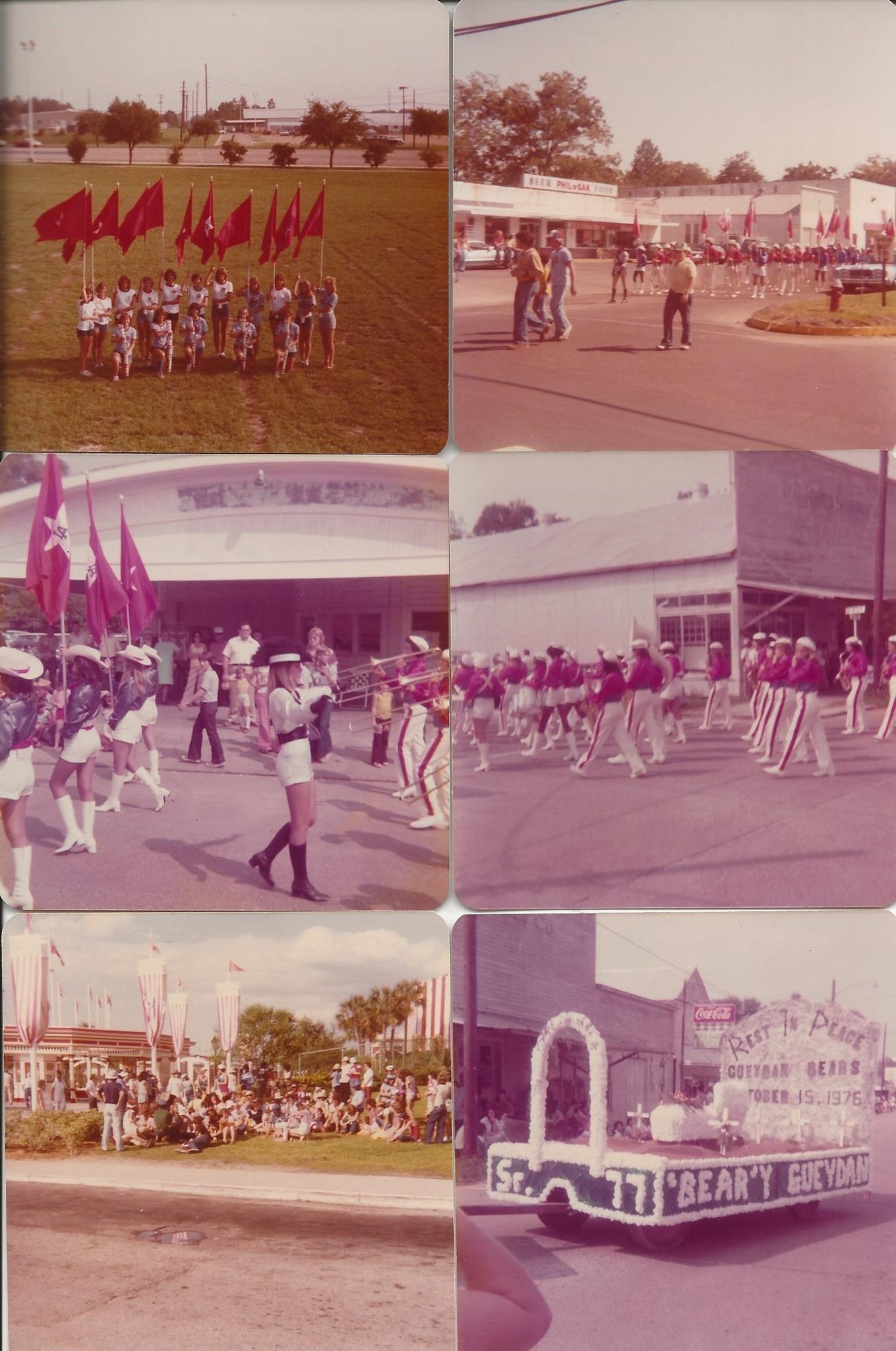
David Green posted a copy of the “end of the year message” (from Year Two or Year Three) that I gave to all band members. It emphasized the ideas of taking pride in our successes, acknowledging where we fell short, and recommitting ourselves to the spirit of excellence. Yes, I was a bit of a “taskmaster” who insisted on constant improvement.
This copy was personalized for David. I believe the letters were printed on the mimeograph machine in Mrs. Broussard’s office practice classroom. So, I have retyped it to make it easier to read.
Lake Arthur High School
Pride and Spirit Tiger Band
Dear Students,
I am confident. I believe in what we have done. We have covered a thousand miles of learning; each and every one of you has a right to be proud. Whether or not we have come far enough is not a question you or I can answer. We are close enough to reach out. Do so.
Yes, I do criticize. And do it often. Without criticism, success is just a dream. But often, I fail to express my deep appreciation for your concern and effort. Thank you. Our band is our band. There is no outsider in our school or school system that can claim the ultimate credit for our achievements. They are ours alone.
No one can ever take away what you have done in effort or achievement. You will carry with you the victories, the failures, and the memories of friendship long past your school days. Yes, there have been many long hours of practice. But as time passes, you will find that in looking back, there will never be regrets for anything you have done, only for what you haven’t done.
Sincerely yours,
Pat Deaville Director of BandsDavid, a great potential is a heavy burden. I know that you will carry it well and reach your ultimate goal in life. P.D.
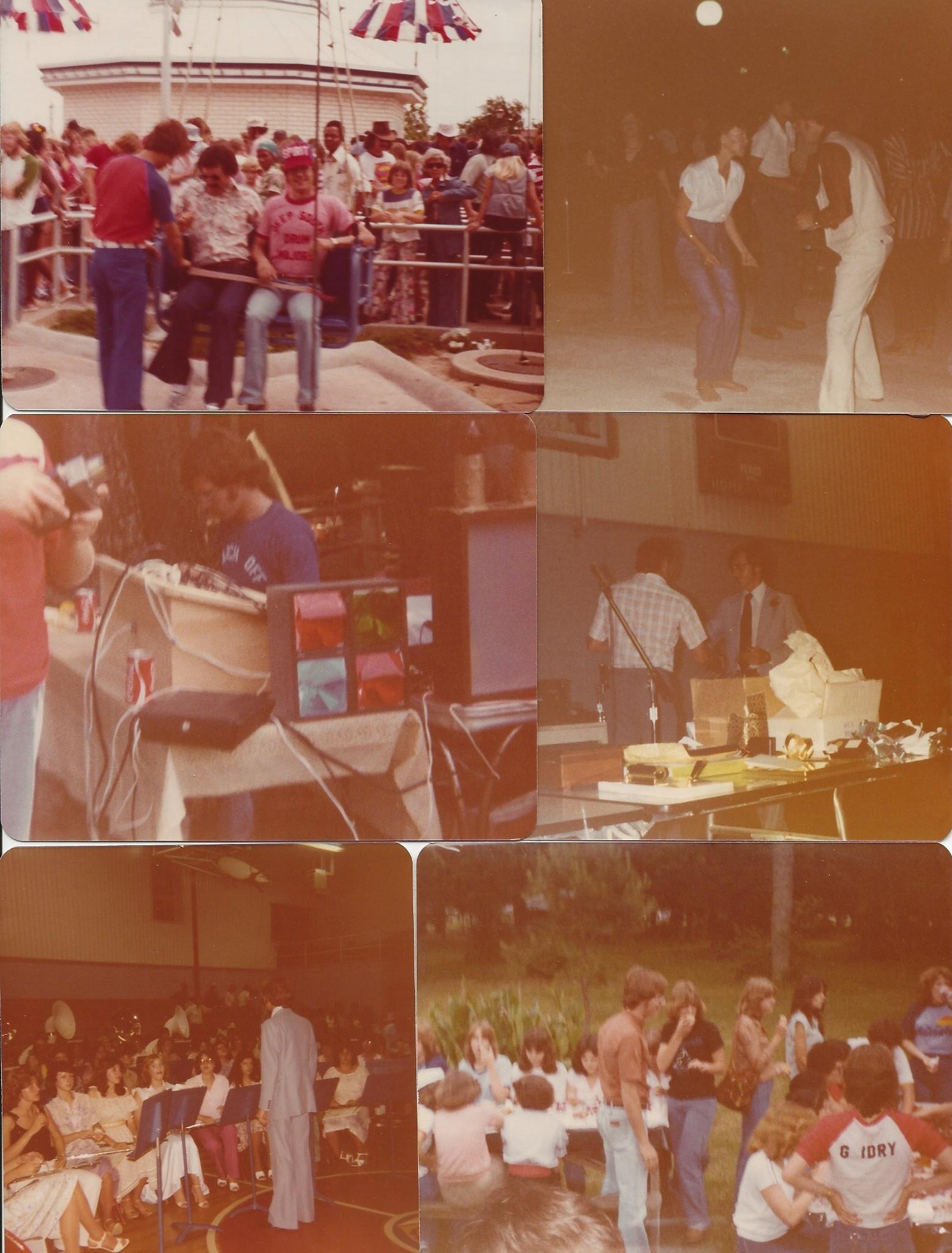
Pamela Breaux Thibodeaux
I still have the crack in the top bridge of my nose, throwing a triple behind the bleachers. The glare of the lights got me, but I never stopped a beat. I still have my rifle. I really don't know how it stayed with me. I can still twirl it but time says no more triples...
Sandra Ramos
Lots of bruises with those rifles.
Edwina Wilks
I was amazed that you let me take it with me when I left. It’s been fun over the years showing other people who throw rifles around how heavy my rifle was compared to the Styrofoam rifles they use now. Laugh out loud. Always forward.
Lola Broussard to Edwina Wilks
Yes, those were our first ones. We got lighter ones before I graduated. But we could really toss those babies for as heavy as they were. I would give almost anything to see videos or our competitions.
Sandra Ramos to Lola Broussard
I prefer the heavy, more control or we just got used to the heavy ones.
Brian Bertrand to Lola Broussard
I recall you and others, with these, creating a circle, which I marched into to trombone-blast my solo for "Send in the Clowns." I've got zero pictures of this, so these are bringing past "snapshots" in my mind of a cold night when my silver trombone and mouthpiece were frigid, and I had to strategize how to preserve sound execution in the conditions.
Denice Sonnier
I thank all of you who twirled those rifles for the memory of not only watching y’all but for the memory of the sound. I can still hear it today. I hope you understand what I mean by that. You all were in such sync, and it was mesmerizing.
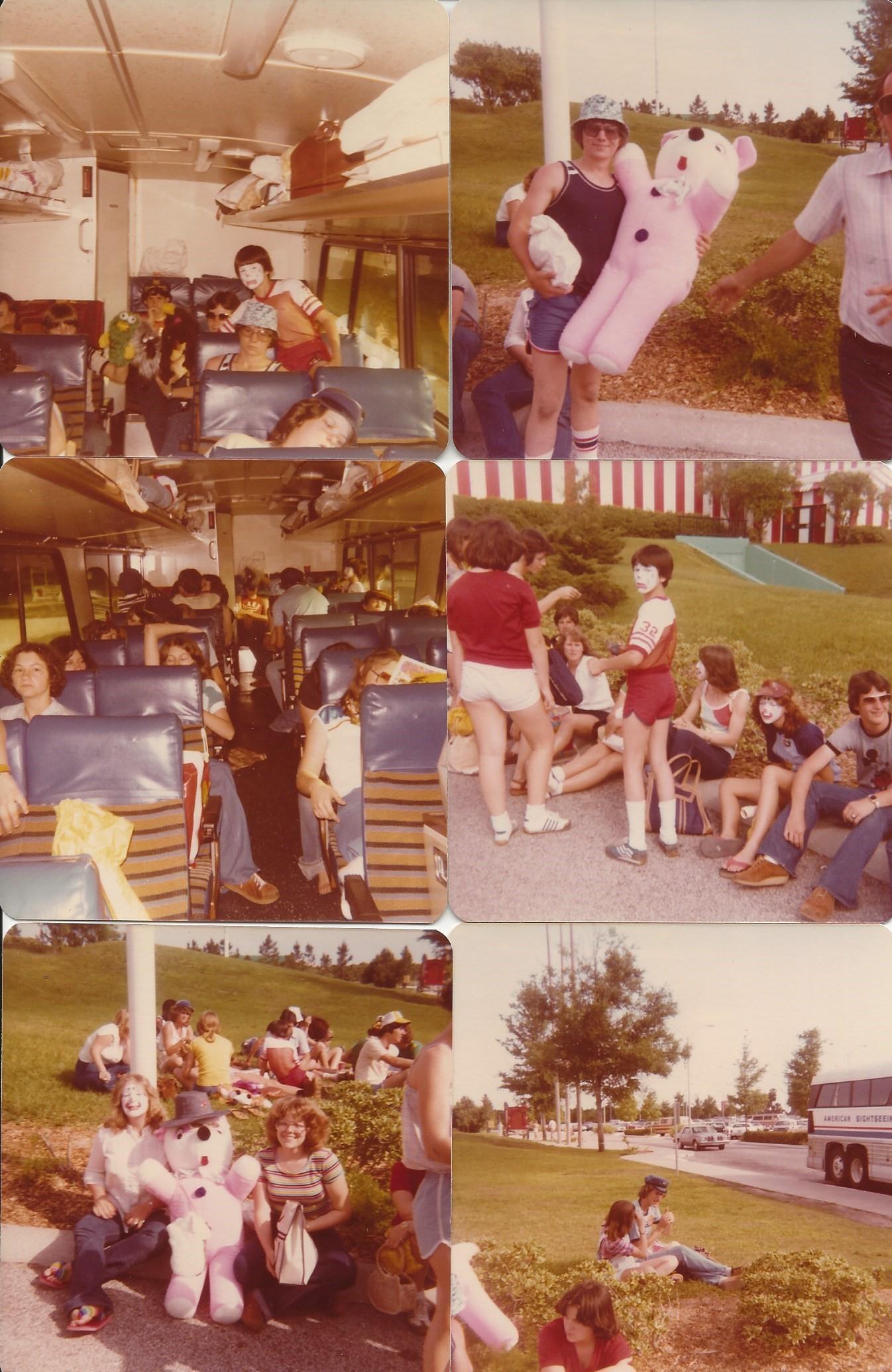
Lola Broussard to Brian Bertrand
We had great choreography and music! I remember the rifles getting on our knees, throwing a triple, and having the flags cut in between. A triple is difficult enough but from kneeling! Great memories.
Pamela Breaux Thibodeaux
Try to have a sword twirled over your head, throwing a double, and praying countless times during the execution that they would never collide.
Terrence S. Harrington
You haven't lived till one of those rifles hit your horn while they were tossed over your head while playing a solo. Thankful I was not playing at that moment. Fortunately, my horn took the damage not my mouth.
Madonna Hammond to Paula N. Scott Helling
I started off on flags and played French horn when I joined the band. One day, at the old band room, some of us were lined up and went into the band room office. Before I got there, I could hear some deep notes and some squeaking going on also. I had no idea why we were in line until I walked in, and Patrick Deaville asked me to blow into this large, ugly-looking instrument. I know I squeaked at least once, but after I was done, he asked if I'd play this in the band. I think I asked, “This ugly thing?” He said yes, and I looked at it and likely made an ugly face. It was the ugliest instrument I'd ever seen, and I had no idea what it was called. Lol. I then said something like, "Ok,I'llplaythisuglythingifyouletmetwirlriflesinsteadofdoingflags "Ithought rifles looked challenging. Lol. He said yes, and I lugged that Contrabass Clarinet around from then on. Lol. Many years later, I was grateful that I had the opportunity to learn woodwind with a short time on brass also.
Paula N Scott Helling to Madonna Hammond
Rifles were so cool! And I didn’t realize you started on French horn! Wow. I fell I love with it. I love the French horn sound; it catches my ear in songs every time. It was so neat having the versatility of being able to convert to F-Trumpet in the stands duringallthegames. We had an amazing concert band. Those Chicagosongs always take me back.
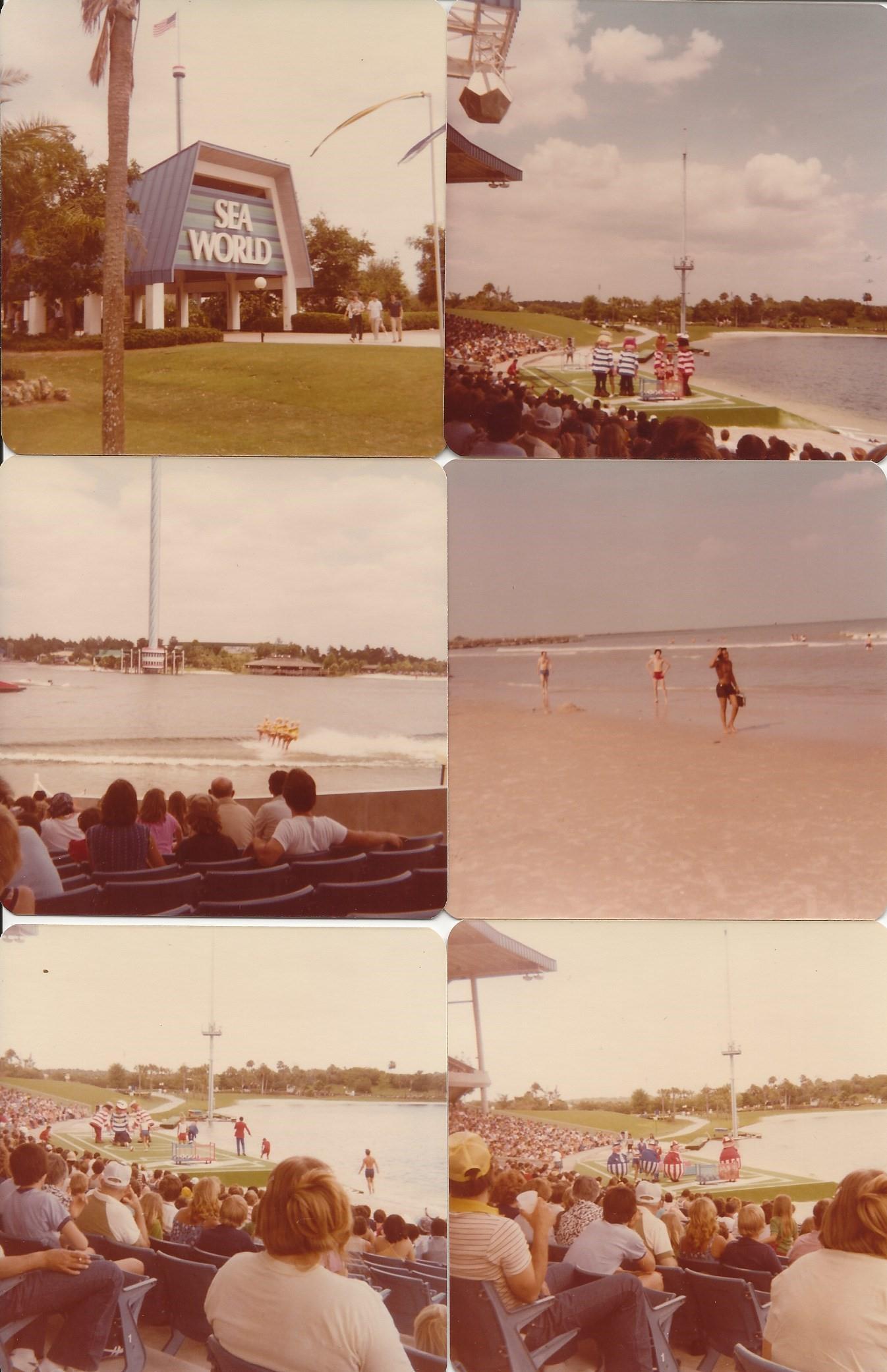
Madonna Hammond
Lol. I remember the Southern Mississippi camps like it was yesterday. I think Lola Broussard took the picture of me carrying Mr. Deaville. Band camp was so much fun. The walk to the practice field was so far away from our dorm! A few years ago, Billy and I went back to the campus. It has changed, but, some of it still looked as I remembered. Billy went to college there for a few years, so it was fun for both of us to see it again.
Madonna Hammond to Patrick Deaville
These camps taught us a lot, but you EXPECTED the best out of each and every student you taught. These camps would have done very little had we not had someonetoback upwhatwelearned. I stillsay that the best thing that everhappened to Lake Arthur High School was being blessed by a band director who EXPECTED the best from each of us.
On the rare occasions when we NEEDED a fussing, it wasn't the same as a fussing from any other teacher. I believe most of us loved you so much that it was more like an older sibling fussing, where you're still good with the person after it's over. The parents loved you also, so they got involved. YOU taught us to have pride in our work. As for myself, having parents who brought us up the same way made it an around-the-clock expectation for me. Entering the workforce was easy for me because of what was expected of me as a child and teenager. I am thankful that this form of pride was taught to me. Not a pride that makes you believe you are better than others but one that taught us that everyone wins when you give it your best. Thank you, Pat Deaville!
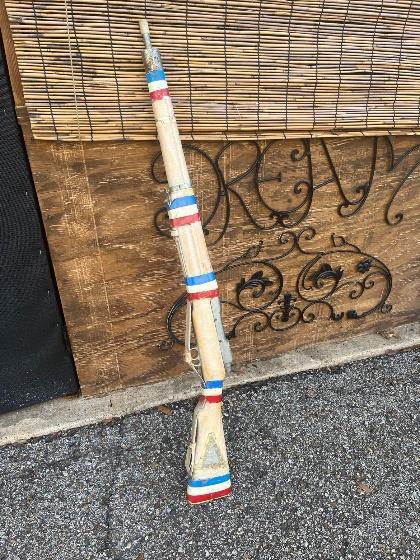
(The final
taping of Edwina Wilks’ rifle.)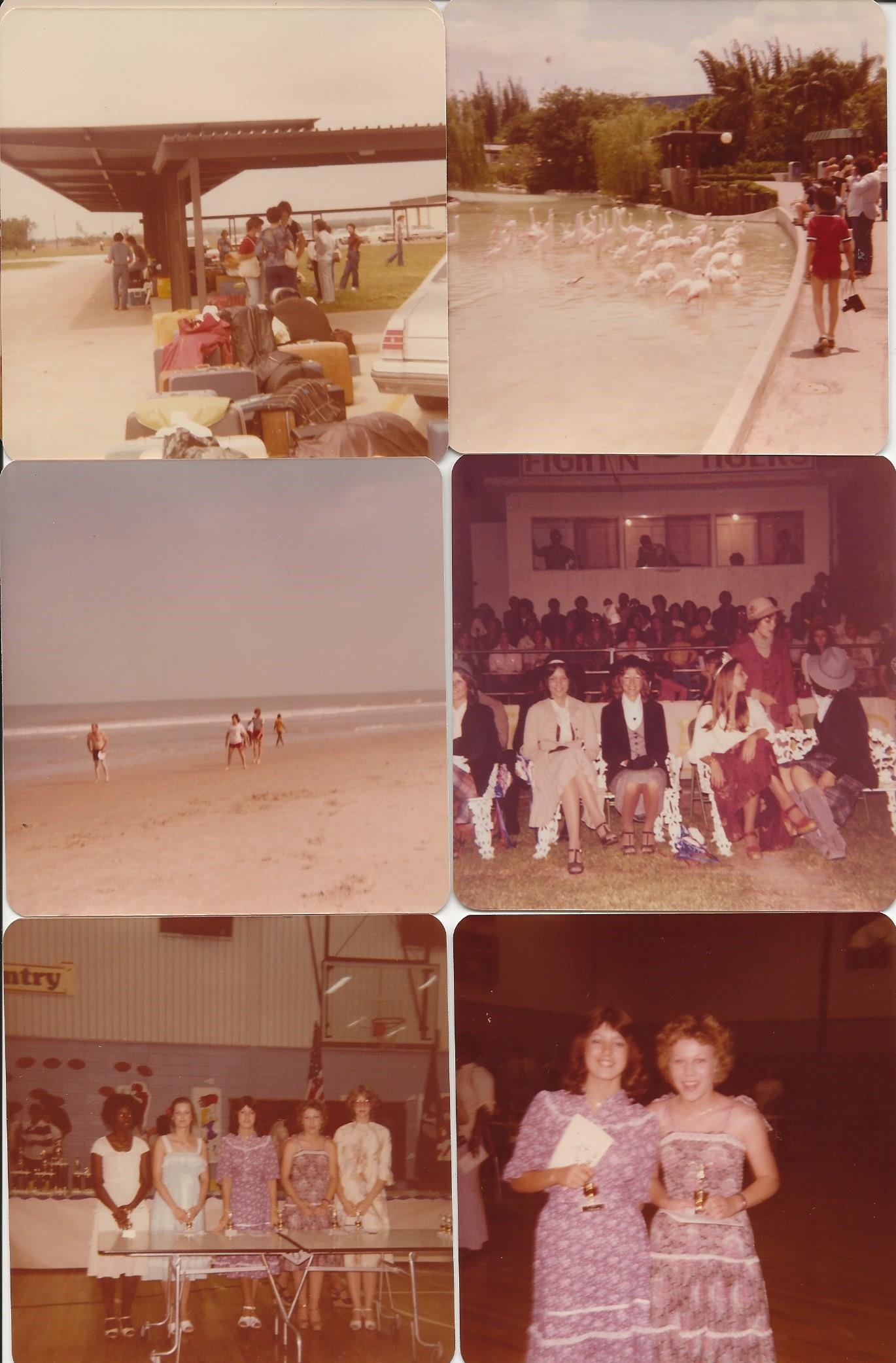
Madonna Hammond to Patrick Deaville
For years after you were gone, parents were still talking about what you did for our school....so were we! We still do from time to time and likely always will! You arrivedattheoldLAHighSchoolwith,howmany band students?Idon't remember, but I'd guess 20 or less! Your energy and hard work made us hungry to be a part of something exciting which turned out bigger and better than we ever imagined it could be!
We had a little hometown band that turned into a band that competed against bands larger than we were. I remember some parents worried that we were going over our heads by competing with larger schools. We didn't think so because you gave us the confidence to do it! You also taught us discipline! Discipline in a way that no one wanted to rebel against. We trusted what you said and expected from us, so we worked to make it happen. You made us brave enough to take on anyone.
Patrick Deaville to Madonna Hammond
We never brought the size or classification of the competing schools into the equation forourgoals of excellence and success. We just worked and competed.The vision was to fulfill our potential.
Madonna Hammond to Patrick Deaville
What you just said started with the word "We." That "We" began with YOU! YOU were so brave! I doubt any student comprehended the size of schools we were up against because you made us believe we could do it and it was no big thing. This is when some of the parents were afraid we were going to be disappointed for not keeping up. I don't remember who they were, but one night, as I came downstairs, I heard Mom telling Dad what some were saying. I remember Dad agreeing with you. He was a very competitive person and knew what you were doing. From what I understood, the parents were NOT upset with you, just worried that we would be disappointed. It didn't scare me but made me wonder what the bigger schools had thatwedidn't.Ialsorememberthatafterweachieved thesegoals,theseparentsdidn't doubt that we could compete. I wish every student at Lake Arthur had the chance to be in this kind of program right now! Feeling VERY blessed that I was there when hard work and discipline WORKED!
Paula N Scott Helling to Madonna Hammond
So many of us feel this way and I always wondered if he ever knew just how much!
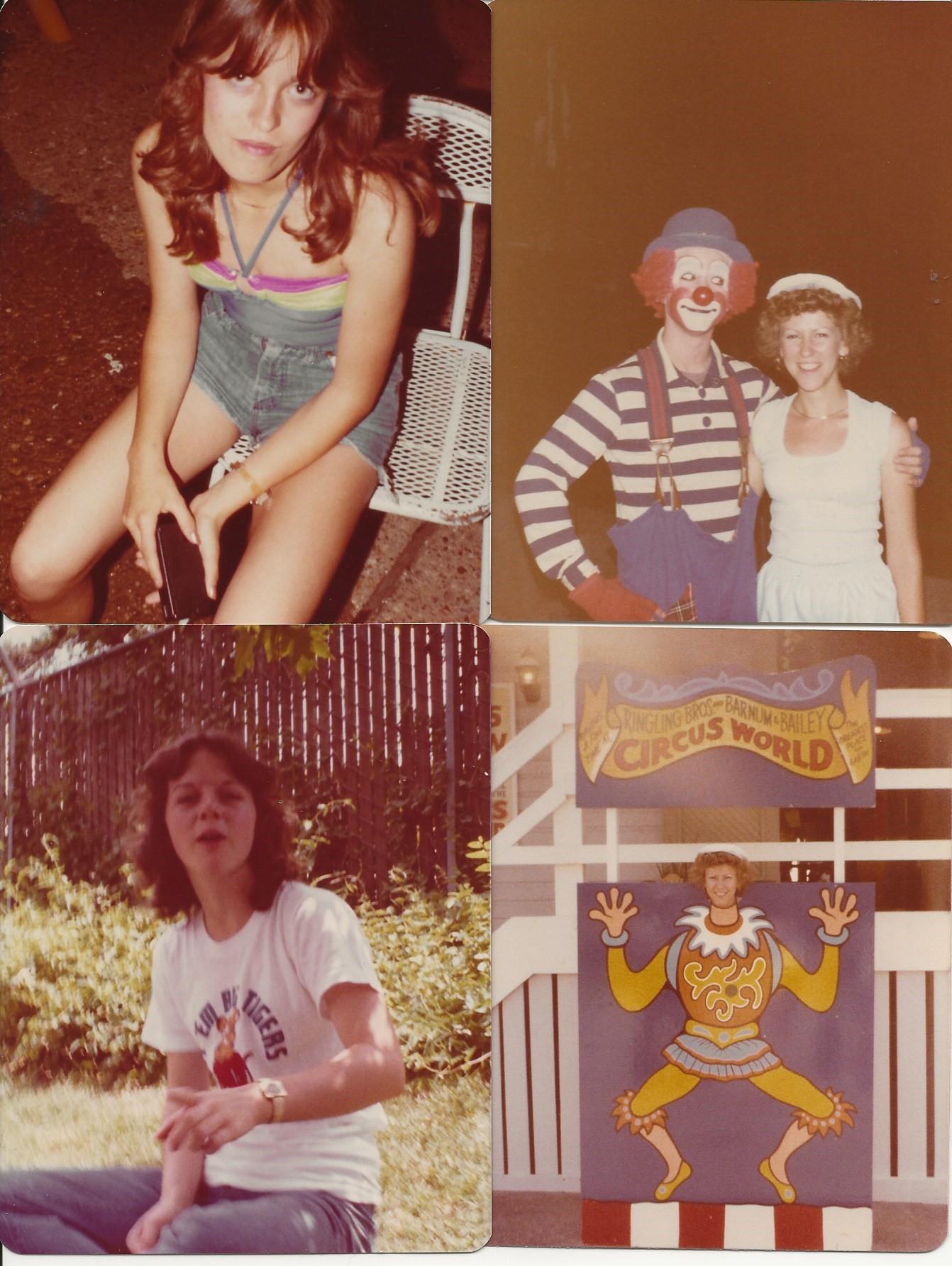
Mr. Deaville and Patton
David Green
In one of my favorite movies, “Patton,” there is a scene where General Patton has just given a fiery speech. His aide, Lt. Col. Charles R. Codman, says: “You know, General, sometimes the men don't know when you're acting.”
To which Gen. Patton replies: “It's not important for them to know. It's only important for me to know.”
It’s not a perfect analogy, but in some ways, it describes our experience in the Lake Arthur Pride and Spirit band. Like General Patton, Mr. Deaville had the weight of leadership on his shoulders. He chose the songs, arranged the music, created the formations, chose the student leaders, and taught most of us everything we knew about playing an instrument and marching in a band.
When he told us our marching show could win a contest, we believed him. When he told us that Kountze High School was the band to beat, we set our sights on them and worked harder. When he told us the only way to win at the concert festival was to memorize our three pieces of music and turn our music stands around, we did it.
And more often than not, we were rewarded with success.
I’m sure if you ask Mr. Deaville today, he will tell you there were many times he wasn’t sure if the plan would work. Or perhaps he had some doubts about our attention and dedication. But nonetheless, he always led us with determination and confidence. Looking back, I will forever be amazed at what was accomplished with a bunch of kids from a small Louisiana town.
Cathy O'Blanc Young to David Green
Well said, David. Thanks for sharing your memories of some of those I had forgotten. Sure put a smile on my face and pride in my heart!

Pamela Breaux Thibodeaux
Those years taught us so much. I think so much of those times and am still very good friendswith somanyofmyfellowbandmembers. It’safamilyyouwillneverforget. Drums & Rifle Corp.
Terrence S. Harrington
I was part of the all-district group, selected to the 1979 Jr. High Buccaneer Band. I was there with Mark Dubone, Helen Roy, and Lynn Bertrand. That was the only time I was not in the Contraband, and I was the first chair in Contra in my last two years. I was also selected to the All-State Band 3 times. I still play today (not so good anymore due to tooth issues). I cannot imagine my life without the trumpet; it’s the very first time in my life that anything came naturally to me. It’s the very first thing I was ever confident about. I am forever thankful to Patrick Deaville and Ed Thompson for all the encouragement over all those years. You fellas changed my life.
Darla LaComb
WOW! We made a lasting impression! So proud to have been part of The Lake Arthur Pride and Spirit Band! Drums and Rifle Corp!
The most memorable times in high school were being in the band. I feel it shaped me to be the person I am today. The characteristics that grew in me were discipline, perseverance, work hard, teamwork, communication, social skills, more selfconfidence, and analytical skills. I am sure many more things too.
Note: I will never forget the Saturday morning when a picture was shown of us. It was pointed out that my marching was on-point. I was and still am so proud!
Paula N Scott Helling
Wow, wow, wow!
David Green
We were all glad to get into the new band room. I have memories of practice in the cafeteria and the girls' locker room. However, after the move, I did miss the parade we put on for every home football game, marching three blocks from the old band room to the football stadium. My house was across from the football field and my parents could watch the parade from their living room window.
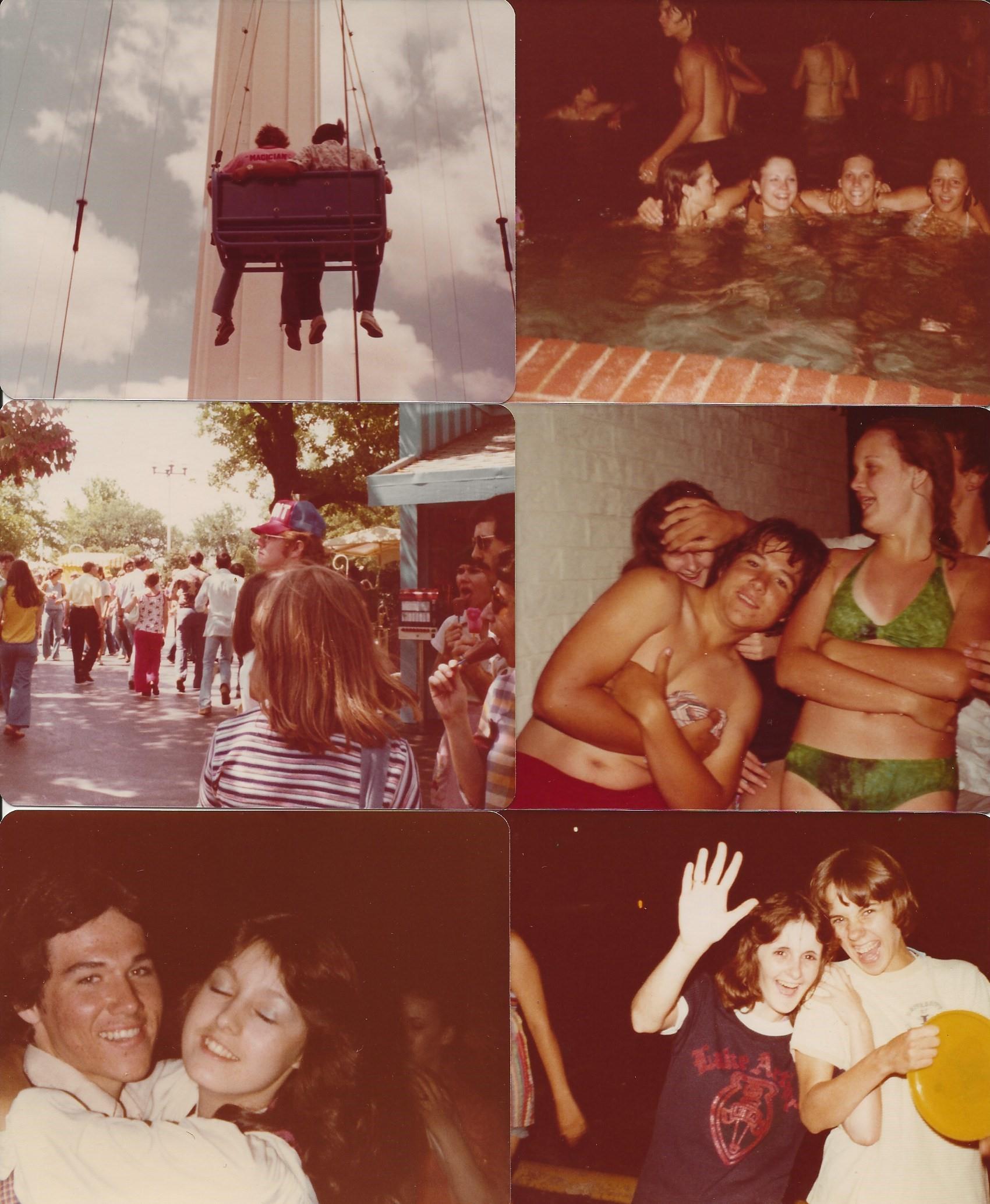
Paula N Scott Helling to Patrick Deaville
What a beautiful writing... Your heart, drive, and commitment were so apparent to allofus.Itwasundeniable.Yoursacrificewas immeasurable.Itjustseemed to come so naturally to you. I am so grateful for your vision and the confidence you had in us all to bring that vision to pass. It was an incredible journey. You shaped the character of us all and were the true essence and foundation of the pride and spirit that we had in your creation. The name said it all.
Cathy O'Blanc Young
Love this,,,, made me tear up!
Paula N Scott Helling to Cathy O’Blanc Young
Me too, Cathy! Patrick Deaville, you have such a gift; many, in fact. Thank you for so freely sharing them with others, and most specifically, with your Pride and Spirit Band. Your rewards will be great. We love you.
Kathy Jester Mack
I did not know about this. I'm proud that my church, Lake Arthur First United Methodist Church, had a small part in helping with the uniforms.
Sandra Ramos
I knew how to sew at an early age and was so proud I made my own uniform.
David Green
The patriotic red, white, and blue also aligned perfectly with the bicentennial celebration in those years.
Colette Manuel
I thought they were beautiful! I sewed my own.
Jennifer Prejean
My dear, sweet mother made all my band uniforms. She was a talented lady who did it all as need be. Such a precious memory of her at the sewing machine is amazing. She was so proud of me being in the band.
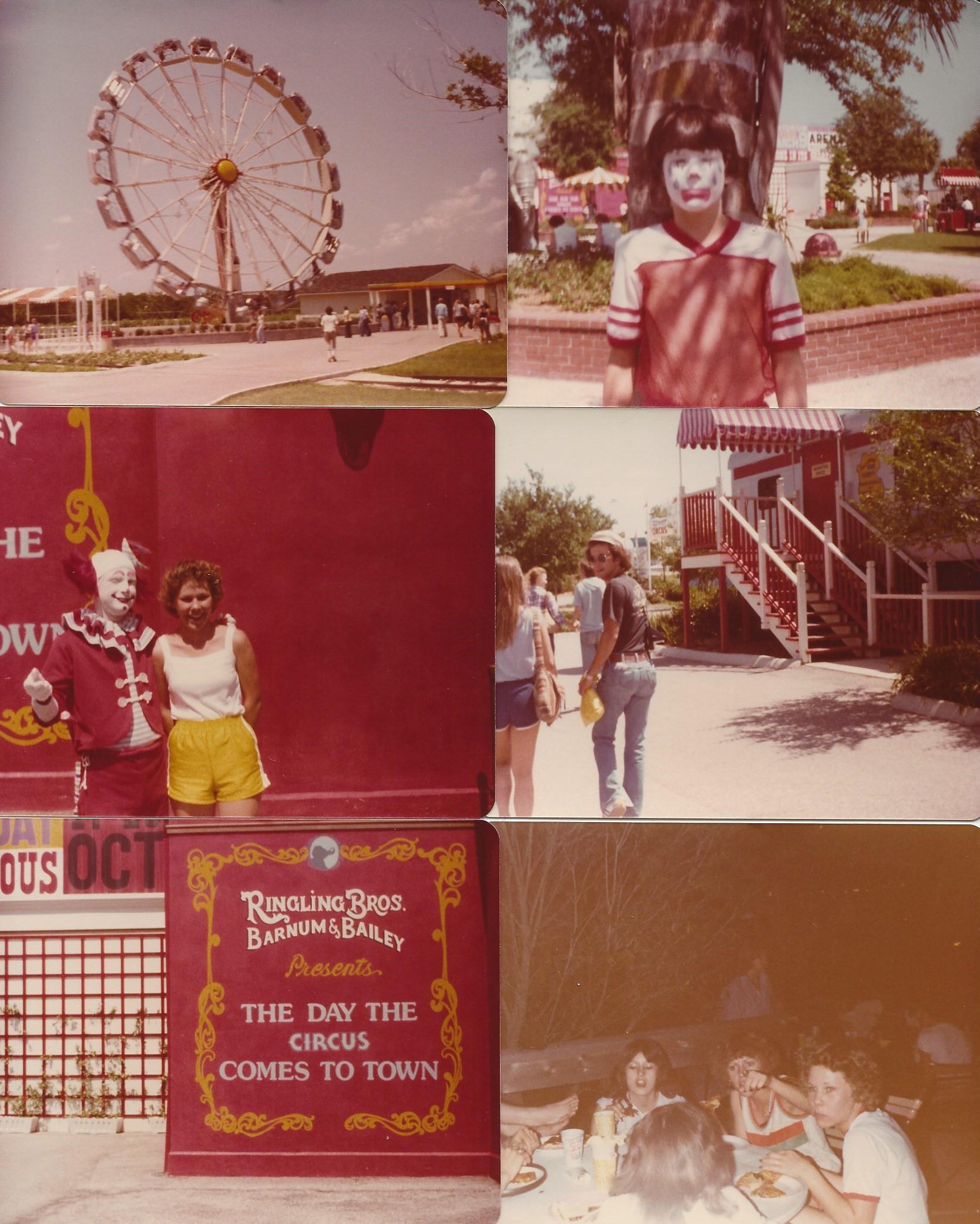
Brian Bertrand
That All-Star experience at LSU in July 1977 is when I learned I was a "Cajun." I've given some talks on "learning your identity and heritage," where I tell the story. Up till then, the word Cajun was confusing to me. We knew we were "French," but Cajun was broadly viewed as a performative to the Baton Rouge and NOLA types. They mostly hated being included in association with that term cause to those “high falloting” types, a Cajun was an illiterate backwoods person. In any case, I didn't really associate with me being a Cajun.
While going to the LSU student cafeteria at All-Star (I can see it all clearly in my mind’s eye right now), I was predominantly unskilled in conversation with anyone but people I knew, certainly “shy," and I was between two girls one from Zwolle and one from White Castle.
I attribute that moment as a big break out moment in learning to have conversations with strangers. As I was a geography freak, I impressed them both by telling them exactly where their cities were on a map. Then, it was my turn, and that's when I made up the phrase about Lake Arthur that: "You don't go there unless you intend to go there."LOL. I added commentary that wehad a great park andpastUS Presidents actually went hunting near Lake Arthur years ago (my Great-Grandfather and Great Uncle had told me those stories and mentioned about stump speeches by Long in the Lake Arthur Park).
As we got our cafeteria trays, I clearly recall my self-talk saying, "You are doing great talking to strangers!" It was a HUGE confidence boost. ...Now, back to the Cajun things...About then, the girl from White Castle said, “So you are one of those Cajuns, huh?" I had no idea what she meant. USL had only changed their name to RaginCajunsin1974(Ididn'tknowthatthen),andIhadaverytinybitofknowledge of that from watching TV because they were really good at basketball.
I was mostly silenced in the moment cause the tone and delivery of the reference to being a Cajun was not positive, so I was doubly confused about being called a Cajun and why Ishifted back from confident meto super shy me at that moment. Basically, there's much more to this and that week, but that's how I found out I was something called a Cajun versus just a little dude of French-speaking parents and heritage.
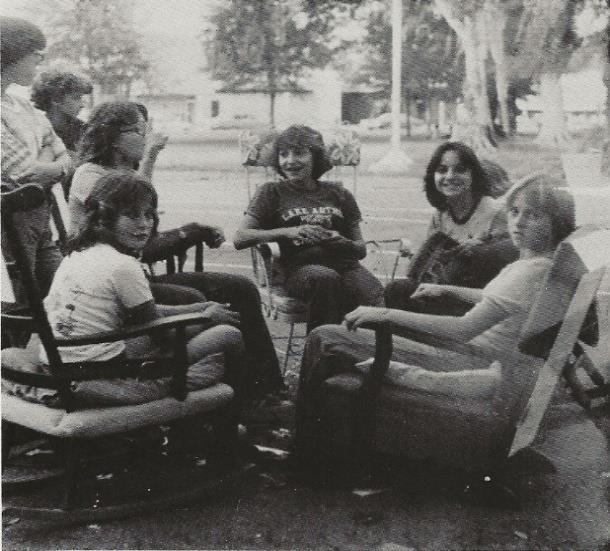
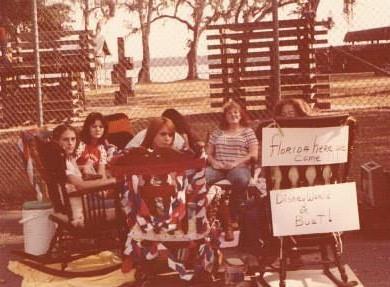
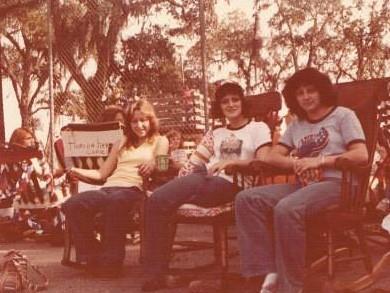
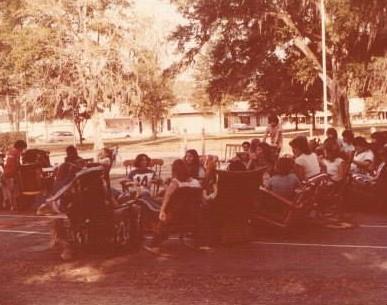
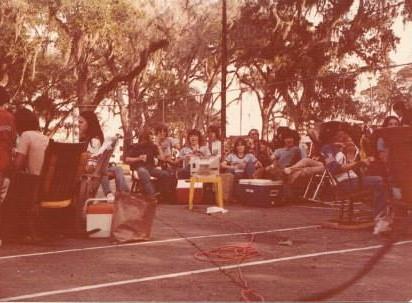
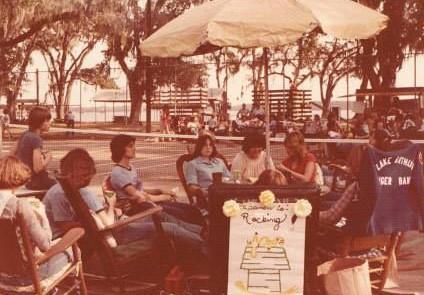
Tracy Manuel Trahan
His skills left a lifetime impact on my ears and soul! I loved hearing his solo.
Edwina Wilks
He nailed it!
Denice Sonnier
I was in his group when we were taught how to march. He was a great teacher and leader.
Tracy Manuel Trahan
They were a corps of ruffians and clowns who tested every ounce of patience you had.Theygrewintoagroupofprecisionpercussionists!Icanstillheartheircadence. And that concert timpani! I can hear it now and felt it to my core then!
David Green
Recitation of the Lord’s Prayer before getting off the band bus is one of my most vivid memories from the band. To me, this quick, routine act signified something greater. It showed that despite our different religious traditions, we could find common ground. My dad pastored a small Assembly of God church in Lake Arthur (some of you knew it as the old Chatterbox). The majority religion in town was Catholic, and most of the rest were either Methodist or Baptist. So, we were the rest of the rest. But the town was very friendly. My dad was friends with the Catholic priest and the Methodist minister. The priest even celebrated Thanksgiving with my family one year. Lake Arthur also had a community-wide Christmas service and a sunrise Easter service. So, when I look back, I am glad that we all got along
One last memory. Molly Myers (Owers), one of my band bus-riding buddies, and I would always recite the version of the prayer we learned from the King James Bible. We changed “trespasses” and “trespass” to “debts” and “debtors.” And we finished with “For thine is the kingdom, and the power, and the glory, forever. Amen.”
Molly Myers to David Green
I remember!
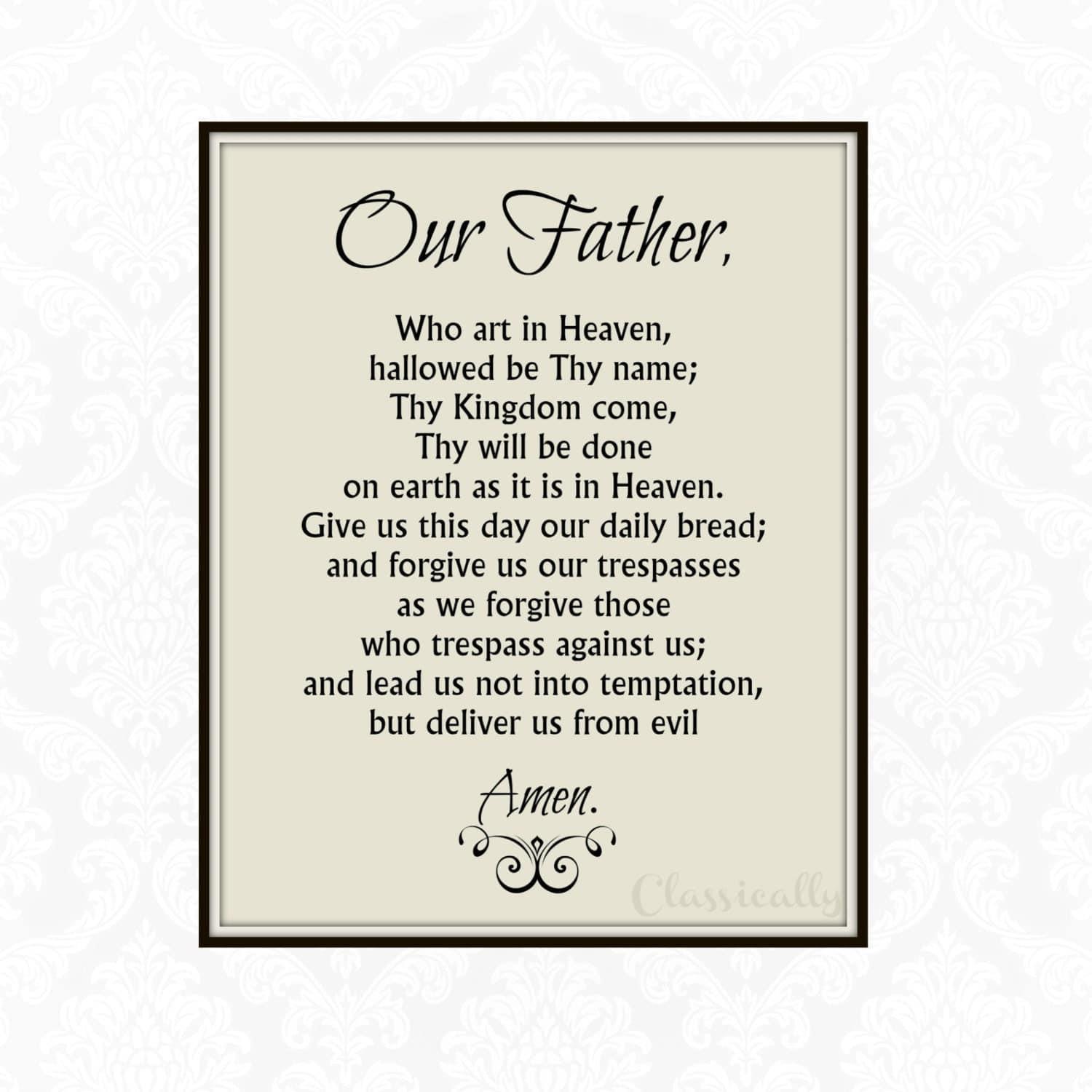
Patrick Deaville
Remember when we bussed band students back to the old school from the new school in 1975-76 for band classes? The new school was complete, except they had not built a band room. It was eliminated from the blueprint in 1973-74 because the futureof the bandprogramwas in question.Then, the Pride and Spirit exploded onto the scene in 1974-75. So, then they built a new band room at the new school site.
Cathy O'Blanc Young
I sure do remember that.
Edwina Wilks
That all happened last week, right?
Darla LaComb
I remember that also.
David Green
I lived on 4th street, across from the football stadium. When we marched from the old band room to the stadium, we passed right by my front door. My sisters could see the field from the upstairs window. But they might as well go to the game because you couldn't hear the TV once the band started playing.
Carl Chapman WOW...that brings back memories!!
Tina Gagneaux Nowocin
Mr. D., I do remember us being bussed to old school...now that you mention it.
Lola Broussard
I remember the cold nights in a blanket because we could NOT wear a coat. And we were getting demerits if we swatted a mosquito. And I loved every minute of it. We were so disciplined. That is what made us what we were. A fond memory was the Mississippi band camp. Well, one of my many. Thanks, Pat.
Patrick Deaville
Thosecamps at Southern Missprovedtobeagreat molding andbonding experience. So many Louisiana band directors would ask me, “Who are your guard instructors?" TheywerealwayssurprisedwhenIsaidourguardinstructedthemselves.Welearned
a lot at camps, but our routines, precision, style, and discipline came from our own studentleadership.Our flags and rifles were first-rate becausethey weredriven from within to be that way. In 1978, when we won the outstanding guard and drum major awards at the East Texas Marching Festival hosted by Lamar University, the Texas directors called me to have our "guard instructors" come to Beaumont to give a clinic. They could not grasp that we could be what we were without professional instructors.
Edwina Wilks
Hard work pays off!
Penny Cantrelle
So, thanks again, Mr. Patrick Deaville. Because of you, Lake Arthur has a band room, and the Pride and Spirit continues.
Becky Bertrand Dugas
How I remember it. MEMORIES!!!! FUN TIMES
Paula N Scott Helling
Mr. Patrick Deaville, I have a newspaper article about the "Lamar Marching Invitational" in 1978. I was reading it just the other day! That was definitely one of the major highlights of our "Pride and Spirit" years. What wonderful memories! The article is yellowed with years. I'm so thankful that my grandmother clipped this out of her newspaper. It's a treasure.
Darla LaComb
Thank you, Paula, for the article. It gave me goosebumps reading it!
Patrick Deaville
This amazing story was accomplished through our high standards, hard work, and discipline formula.
Bridget Bonin Peeler
But it all would not have been possible without you! You were a great inspiration and made us want to be the best! And Renee and I had the experience of a lifetime when we went on the European Collegiate Band Tour. Thank you for nominating us.
Patrick Deaville
Thank you for the kind words, Bridget. So many wonderful things happened to so many in such a short time...me included. It is difficult to explain the depth of my
feelings when I see the pictures from the Pride and Spirit days. As I have said in some earlier posts, you can never fully explain the emotions during those five years unless you were there experiencing it.
Darla LaComb
What a bond all of us had. You are so right. One cannot not explain the depth of feelings we had. I believe we still have that bond today...it is something special we will never lose.
LaNeve Alejandro
Thank you for posting. Great memories!!!
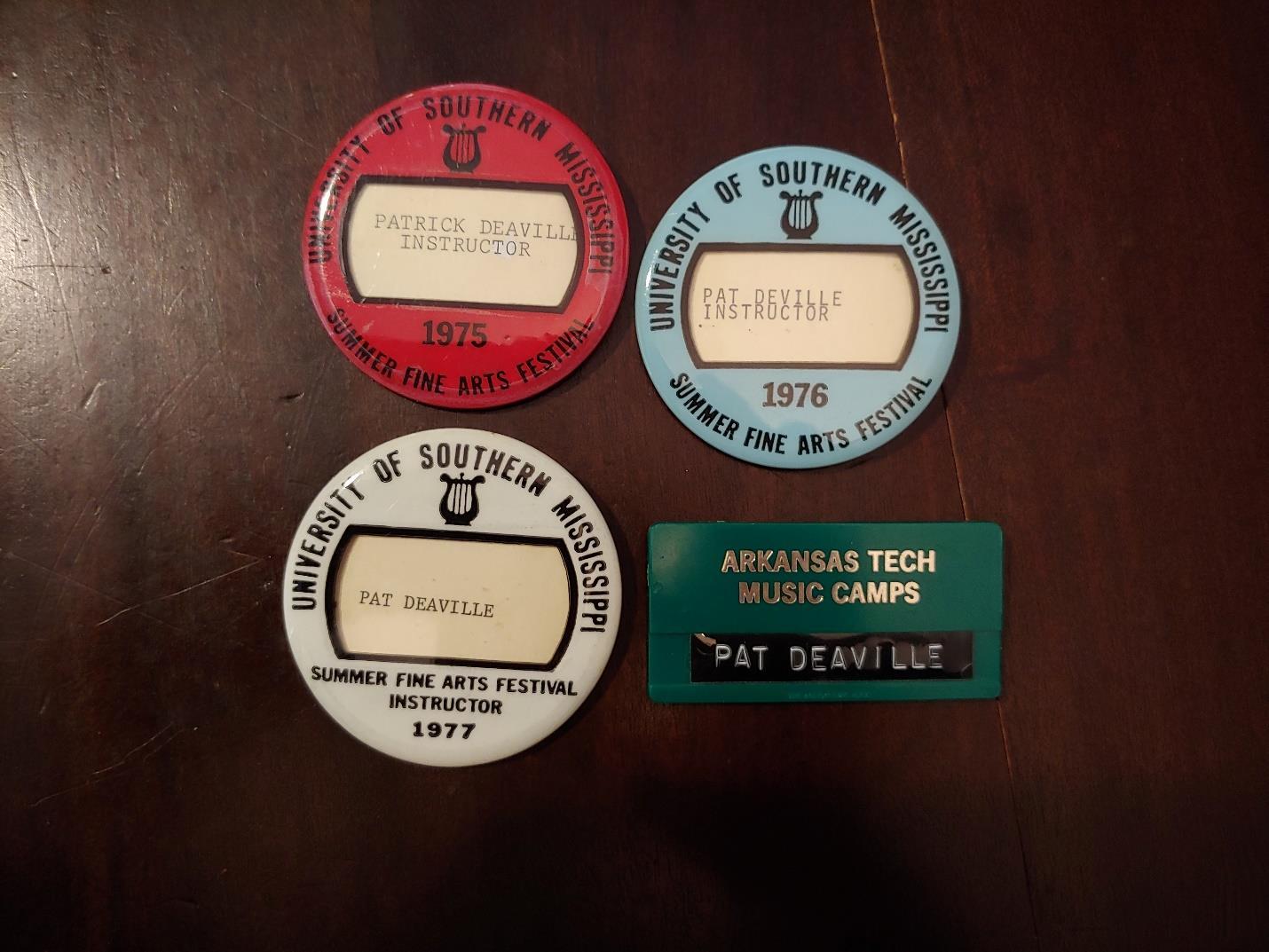 (Some of the badges from the camps in Mississippi and Arkansas.)
(Some of the badges from the camps in Mississippi and Arkansas.)
A Red and Blue Thank You by Pat Deaville
The "Red and Blue." Still makes me smile. Lake Arthur Tiger Land. The school. The teams. Community. And yes, of course, the Band.
"Red and Blue." A special place. There, my career did start. Five long years. Twenty-four/seven. Changed my life. Stole my heart.
The town. The people. Took me in. Gave me my first chance to teach. I grew. I loved. I worked. I cried…as all I tried to reach.
Success did happen. And more. We bonded deeply, too. Much time has passed. Just want to say: Red and Blue, I thank you.
Students. Most now grandparents. Are still young in my mind. Their faces, voices, and laughter...in memories, I find.
Don't know how to tell each one how much they mean to me. I only hope each understands. The things they helped me see.
I learned so much in those years. These students taught me, too. Their parents were patient. Stood by me. Together, saw it through.
Did much right. Made some mistakes. Young man finding his way. But in the end...was pure magic. Extraordinary days.
Band directors and coaches can be much like nomads. I had success with different bands. Each time I moved, felt sad.
Yes, I worked at many schools. Career spanned forty years. Countless people that I owe. To this day still hold dear.
Each place I taught filled my heart. Many moments treasured. All the students and parents too. First-rate, by any measure.
But “Red and Blue” set the tone. Gave me such confidence. Over time, I became better. Wiser. More competent.
Ended up in the Hall of Fame. But that is just a sign. Of what my students did for me. Award more theirs than mine.
As I've grown old...reflect...on the history we shared. The "Red and Blue." Pride and Spirit. The Band. The bond. Still there
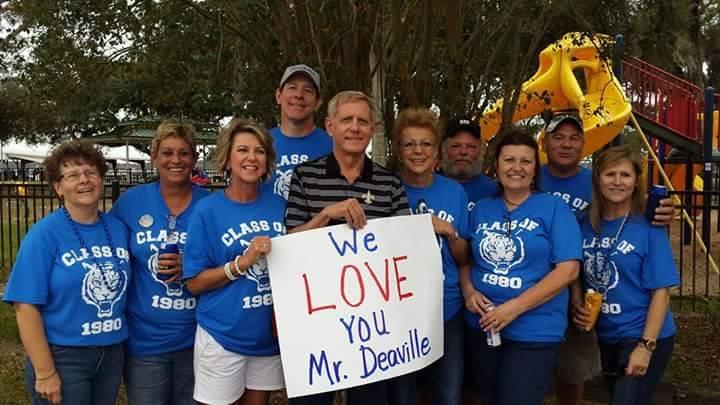
(A special moment with the Class of 1980.)
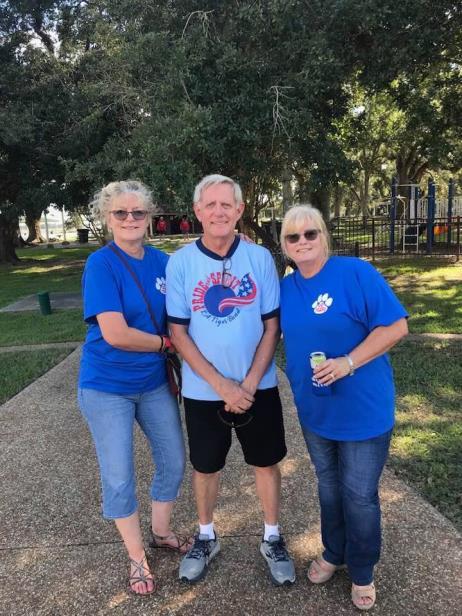
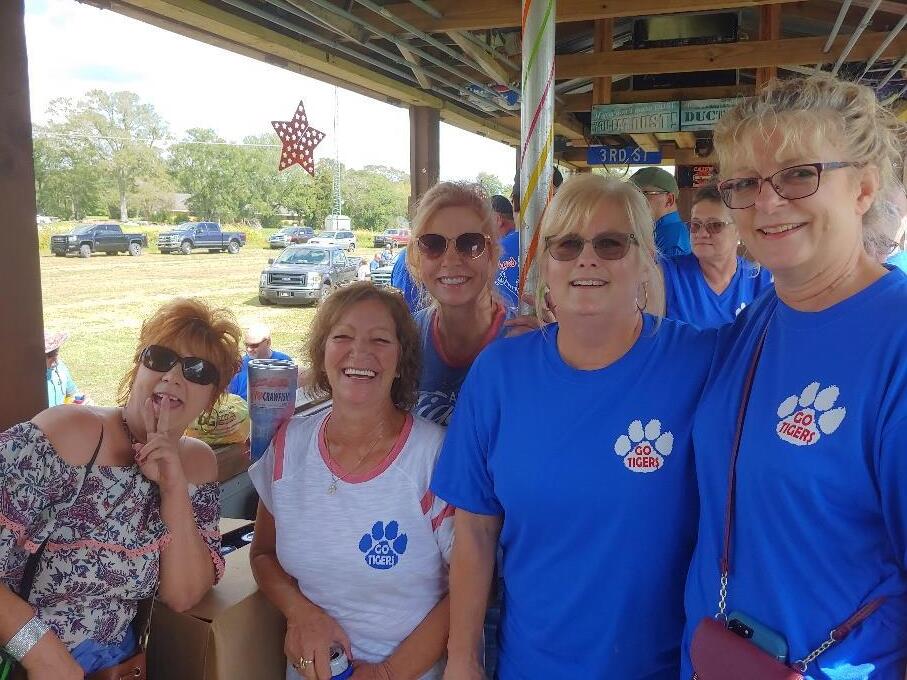
(Memorable photos with the Class of 1979.)
(Based on the recollections of my Lake Arthur band students, as shared with me in conversations, social media posts, and letters over the years.)
“Pride and Spirit” was the phrase. We understood it clear. It's stayed with me through all my days those words I still hold dear.
When first this mantra was used, our band was very small. But the school and town wanted more. Many answered the call.
We had a new director. And said that “it was him.” Who created this new culture. He said, "Give credit to them."
Horns were bought, and we were taught. Our school was filled with songs. Our band exploded overnight. Became a hundred strong.
Headlines! "Cinderella Band." Made big news with photos. We buckled down and bonded, too. While continuing to grow.
Not just a growth in numbers. “Superior” rating we earned. That spring, we grew in quality. The “Pride and Spirit” burned.
That rating got us to State with bands from distant towns. They asked us, "Just who are you guys? We've not seen you around."
Our leader told us clearly, "We are only at the start.” “Have lots to learn. Mountains to climb. Keep passion in your hearts."
“Pride and Spirit” was the phrase. We understood it clear. It's stayed with me through all my days. Those words, I still hold dear.
Learned to play and then to march. The trophies! Such a thrill. And each year, our band expanded. Not just in size but skill.
New uniforms and band room. The parents made it so. Sewing machines and voices loud, deep pride that they did show.
Great drum majors, that led us. A drum line that was fine. Our band was strong. Our town was known. Those flags and rifles shined.
A handful became two hundred over five years of time The marching band. Big. Impressive. The concert bands. Refined.
“Pride and Spirit” was the phrase. We understood it clear. It's stayed with me through all my days. Those words, I still hold dear.
For all this time, we've always said. “We owe it all to him.” But to this day, he still will say. "You know, was really them."
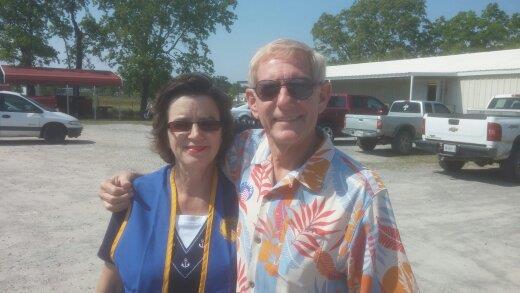
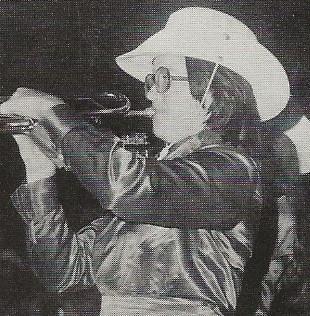 (Tina Martin, after all these years!)
(Tina Martin, after all these years!)
A small part of your legacy resides within the students. Their memories of music, events, and places that they went.
Trophies placed upon the shelves. Loyalty. Reaching goals. Still, in all these experiences, the whole story’s not told.
The high standards that you set. The discipline as well. How hard they worked. The way you led. The stories you would tell.
These were important building blocks in the daily process. Tiny pieces of the big picture. Reaching for excellence.
Taking them from where they were to where they needed to be. That was your job. Your central task. Also, their silent plea.
When wondering if you did well, who they became is key. For the outcomes they’ve attained in life, complete your legacy.
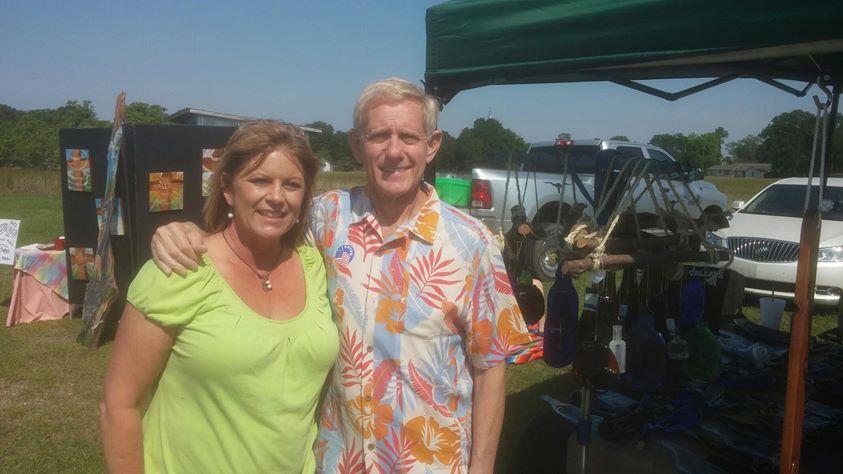
 (Rachael Braud and Monica Guillory LaCombe.)
(Rachael Braud and Monica Guillory LaCombe.)
Call the Band to “Attention!” by
Pat Deaville(This poem is based on the thoughts and recollections of my band students, as shared with me in conversations and letters over the years.)
Not sure why I joined the band. Perhaps it looked like fun. Was it just my friends who encouraged me to twirl that "plastic gun?"
The marching field, the street parades. That big rehearsal hall. Was WORK and fun. I soon found out when "Attention!" was the call.
The practices on summer days. The bright sun seemed so big. We got free tans and blisters, too. And yes, we sweat like pigs.
Often, we saw the sun rising. Once school year had begun. Those early morning “drills for skills” were never that much fun.
At times, we practiced in the mud. Even when rain did fall. My hands were taped, my ankles wrapped. Still, "Attention!" was the call.
We practiced, not just early but often until dark. Sometimes, we lit the field with lights from cars that we would park.
The director pushed us all the time. The drum major's days were long. Our captains and section leaders were kind and tough and strong.
Then the music soared, the horns they roared: the flags, a glorious sight. The drums were loud, and we were proud. On football Friday nights.
Stadium lights, mosquito bites. Stood tall throughout it all. So cold we nearly froze in place. Yet, "Attention!" was the call.
We just let go, the brass did blow our big, 4th quarter jam. We got the fans up on their feet. They cheered and clapped their hands.
The festivals on Saturdays. We worked so hard each week. Performed and waited for the scores. Striving to reach our peak.
The speaker called out "ONE" most times. We fought to win it all. Improve and grow. Stand as a wall. When "Attention!" was the call.
I even learned to play a horn and made the concert band. The music challenged one and all. Became a “classics” fan.
The spring trip and the travel. Fundraisers, all the time. With parents and our boosters, oh yes, we earned each dime.
The parades, the halftimes, the concert band. I grew to love it all. Made friends for life, our futures bright. "Attention!" was our call.
Today, I'll say I've made a life of which I'm very proud. Through joy and trials, worked long and hard to stand out from the crowd.
Sometimes, in dreams, I see the field. Hear horns within the hall. I know my life is better because "Attention!" was my call.
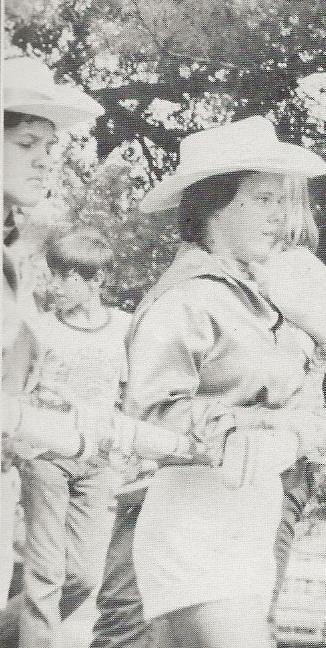
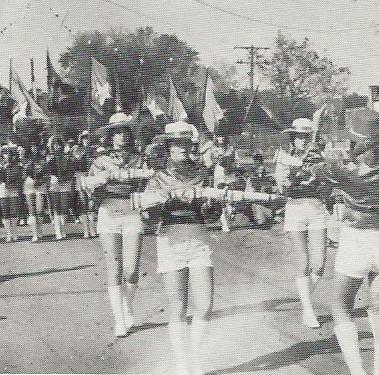 (The rifles were always a tough bunch. MaDonna Hargrave, Edwina Wilks, Lynne Hollister, and Lizanne Carter.)
Foundation by Pat Deaville
(The rifles were always a tough bunch. MaDonna Hargrave, Edwina Wilks, Lynne Hollister, and Lizanne Carter.)
Foundation by Pat Deaville
Learned so much throughout my life. Each phase a part of me. But marching band’s my foundation. It established who I’d be.
The discipline. The music. The dedication, too. Inspired and taught me about life and how to see things through.
The teamwork and the standards became my cornerstones. Though sometimes was frustrating, the path was clearly shown.
Sacrifices must be made. Commitment was required. Pre-dawn, reporting to band room. By mid-day, was so tired.
In the heat, cold, rain, and wind. In mud. On frosty field. With insect bites and sore muscles. Numb fingers. Fever. Chills.
Memorizing the music. And each day, we added drill. Spent countless hours on music and moves. The final product we ’d build.
Each week, performing at the games and intense competitions. Please the fans. Impress the judges. Live up to traditions.
Those long bus rides. Away games. Get home after midnight. Up early for the next day’s parade. Then, more practice that night.
At the marching festivals, felt pressure to score well. Announcer on the loudspeaker. Those ratings, he would tell.
The thrills. The disappointments. How it would make us feel. The joy, the grief, the smiles, the frowns. Was all part of the deal.
Learned how to cope with success. The trophies. Small and tall. Humility taught. For, at times, brought home nothing at all.
No matter what had happened, the next week was the same. Take one more step. Improve ourselves. As higher, we would aim.
I have lived for many years. Band lessons still can see. In all I do. Each stage of life. It’s still inside of me.
Pride by Pat DeavillePride is a silent commitment. It’s not loud arrogance. Pride evolves from doing right and taking a tough stance.
The manner in which you do things. Challenges you accept. Embracing goals. Enduring trials. Knowing what to reject.
Pride grows from solving problems. External and within. Pride’s found in helping others the messages you send.
The cornerstone you build on is the strength contained inside. With pillars of belief, faith, hope, and the north star as your guide.
Building a sense of community rather than tearing down. Reaching high. Grabbing the stars. With feet still on the ground.
Pride is earned. It’s not a gift. As daily you must try, To rise above all selfishness. Use wings of pride to fly.
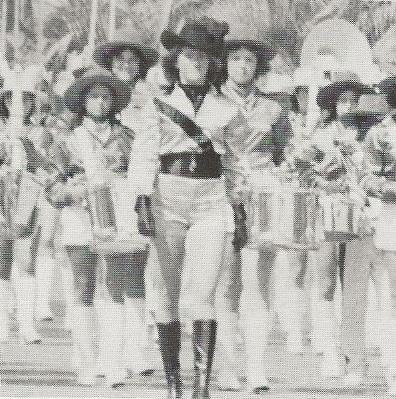
.)
(From the basketball court to the street parade. Donna Comeaux Spirit by Pat DeavilleDo not underestimate the strength you have inside. In every single one of us, human spirit resides.
Both triumphs and tragedies, each one of us will see. Exhilaration and sorrow will visit you and me.
Through all of this, we are shaped by the choices we make. Our attitude and resolve are more critical than fate.
When on top succeeding, we should show humility. Celebrate appropriately, never arrogantly.
Enjoy life. Strive for success. Seek a healthy balance. Maintaining sense of who we are, building self-reliance.
Accept there is a cycle. There’ll be sunshine and rain. Both high mountains and low valleys are found in life’s terrain.
During difficult moments, external life may change. The secret, then, is look within. A source of strength remains.
Human spirit still is there, just waiting to be called. Cast aside your doubts and worries. Climb over mental walls.
Many suffer more than you, and still, they overcome. Their stories inspirational, showing us how it’s done.
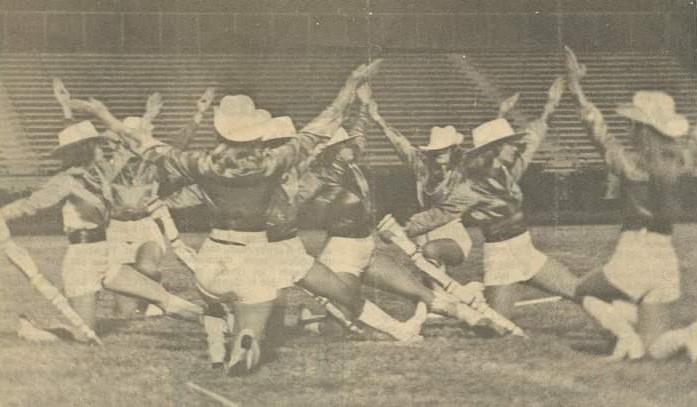 (Pride and Spirit Rifles at 1977 DeRidder Festival)
Teach by Pat Deaville
(Pride and Spirit Rifles at 1977 DeRidder Festival)
Teach by Pat Deaville
My heart was almost bursting. Truly, felt the passion. After two years in the Army, was beginning my life’s mission.
We all do have a purpose. To teach was indeed mine. I could not wait to get started. Big dreams were in my mind.
My first job was in Lake Arthur. Became a band director. The Band had fallen into hard times my goal was to make things better.
I had the energy and a vision. Build quality and size. That August, I scrubbed and cleaned the Band Room. Painted. Organized.
Worked closely with the Principal. “We can do this!” I would say. Set up a “horn drive” with a music store recruited, night and day.
Only a handful of students were enrolled at first. But within a month, there were a hundred, and still, for more, I searched.
Parents got on board with support. Dedicated Boosters. Taught before, during, and after school. Late nights. Up with rooster.
Worked through summers. Never stopped. Found great student leaders. There never was a moment’s rest. Refused to cut corners.
Can’t explain the emotions that boiled inside of me. We must grow, learn, and achieve. Was driven to succeed.
This fire burned not just a month. It raged for five long years. It consumed me. It consumed them our time, precious and dear.
My joy came from the teaching. I started most from scratch. They learned. I learned. We were a team: nothing, too big a task.
Saw them mature before my eyes. Their “sound” became refined. Built self-esteem. Their spirit soared. Got better all the time.
Yes, I did make some mistakes while building on “the fly.” Each day, each hour, and each minute. At times, so tired I cried.
The Band Parents had wisdom. Helped me survive my self. They took on chores to ease my way behind-the-scenes results.
Two hundred students had joined band before I said goodbye. We had exceeded all expectations. So highly, we did fly.
Was this just a joyful time? For me, there was a dark side. Must also admit what I gave up during this amazing ride.
Passion dominated me as work became my life. I ignored my health and family. And yes, I lost my wife.
And finally came the day. The “Fire” exhausted me. At some point, I knew I would burn out. I passed the torch, sadly.
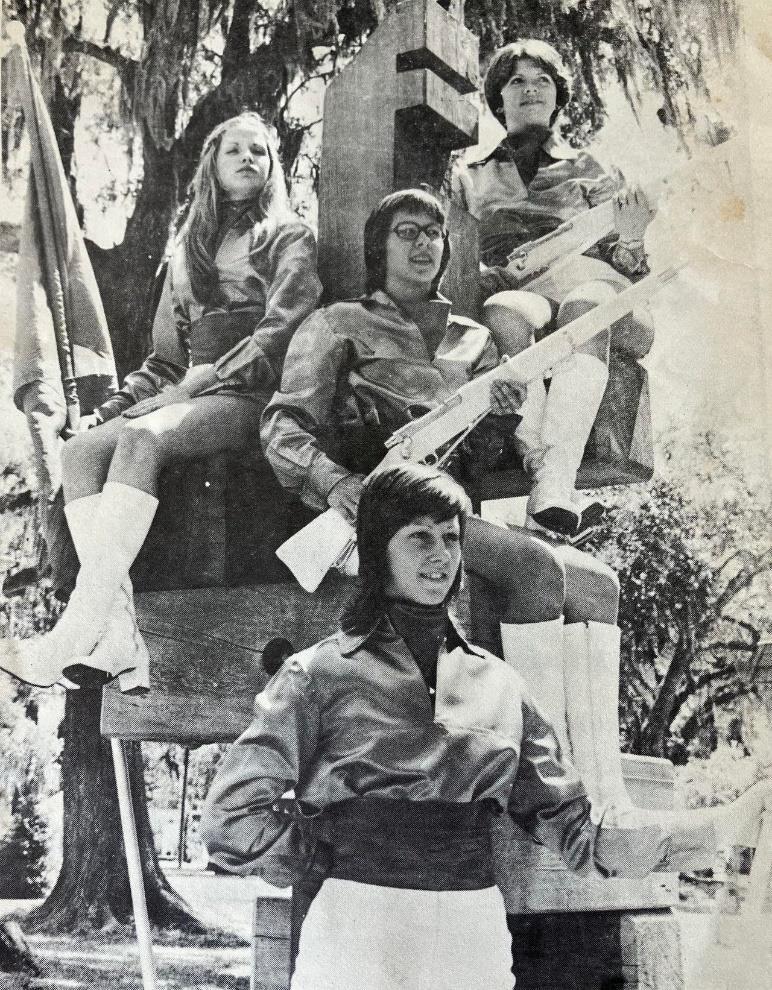 (Liz Dupuis, Lori Carter, Gina Cain, and Colette Trahan.)
(Liz Dupuis, Lori Carter, Gina Cain, and Colette Trahan.)
From "The Lake Arthur Revue" on June 13, 1974
Fitzgerald Named Classroom Supervisor Dobson Assumes Principal's Post
Allen Fitzgerald, Principal of Lake Arthur High School, has been named to the position of Classroom Supervisor for Jefferson Davis Parish Schools effective July 1, 1974. Named along with Fitzgerald was former Lake Arthur teacher and Central Elementary Principal W. F. Whitford.
These personnel changes came during the regular meeting of the Jeff Davis Parish School Board last Thursday night. The Classroom Supervisors, of which the parish now has three, are responsible for observing the programs in all schools and are directed to make recommendations to the principals and/or teachers on any matters related to the educational programs in the system.
Louis Gaudet was chosen to fill the parish's Assistant Superintendent Administration position.
Fitzgerald, who has been affiliated with LAHS for twenty-three years, will be replaced as Principal by Assistant Principal Malon Dobson. Assuming Dobson's present duties will be Guidance Counselor Tommy Hymel.
Mrs. Maureen Perkins, home economics instructor, has been named to fill the position of Guidance Counselor, and Mrs. Elaine Segura will assume the duties of home economics teacher.
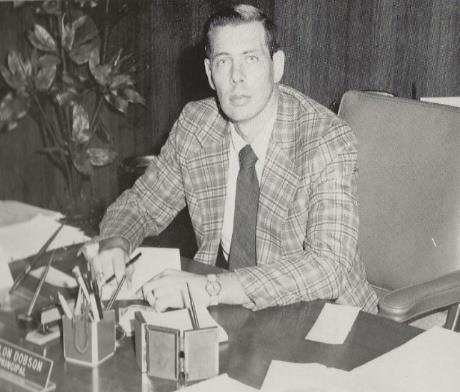
(Mr. Malon Dobson was the Principal at LAHS throughout my tenure. He gave me all the support I could ever have hoped for.)
From "The Lake Arthur Revue" on April 21, 1977
Miss Liz Dupuis, daughter of Mr. and Mrs. Edward Dupuis, and Miss Lynne Hollister, daughter of Mrs. Blanche Hollister, have been named to the high school All-American Hall of Fame.
Both students were nominated for the National Music Honor Organization in April 1976. A full resume of their musical, academic, and leadership achievements was considered for one year by the Hall of Fame selection board. The board is headed by Mr. Al Wright, former president of the American Band Master Association and director of bands at Purdue University in Illinois.
Upon receiving official notification, Mr. Patrick Deaville, director of bands at Lake Arthur High, telephoned Mr. Wright and expressed the appreciation and gratitude of the students, band, school, and community.
Miss Hollister has been an outstanding flute player in the LAHS Tiger band for three years, was Rifle Corps Captain in 1975, and was named to Who's Who Among Music Students in America for the past two years. Her senior classmates have voted her as "Most Likely to Succeed."
Lynne has also been selected as a U.N. delegate, Pelican State delegate, and Sheriff Youth Recognition representative during her high school career.
Academically, Miss Hollister ranks as one of the most outstanding in the school's history. She has attended the district literary rallies in English I, II, III, and IV while being selected to participate in the state rally in English II and IV. Recently, she placed second in the parish Voice of Democracy contest.
An active Science Club member, she has also been chosen for participation in local, regional, and state science fairs. Lynne has also lettered twice in Lake Arthur's outstanding girls' basketball program.
Miss Dupuis, a French horn player in concert seasons, has been captain of the wellknown Pride and Spirit Flag Corps for two years. She has twice been listed in Who's Who Among Music Students in America.
She has been selected to the LAHS Homecoming Court for three years while sportinga3.7gradeaverage.ShewaspickedbytheLAHSfacultyasarepresentative to the LSU Leadership Conference and worked as co-editor of the LAHS Yearbook in 1977.
A consistent honor roll student, Liz has participated in district social studies fairs, district science fairs, and state science fairs. Liz has also been an active member and officer in Lake Arthur's award-winning FTA club, Beta Club, 4-H, and FBLA.
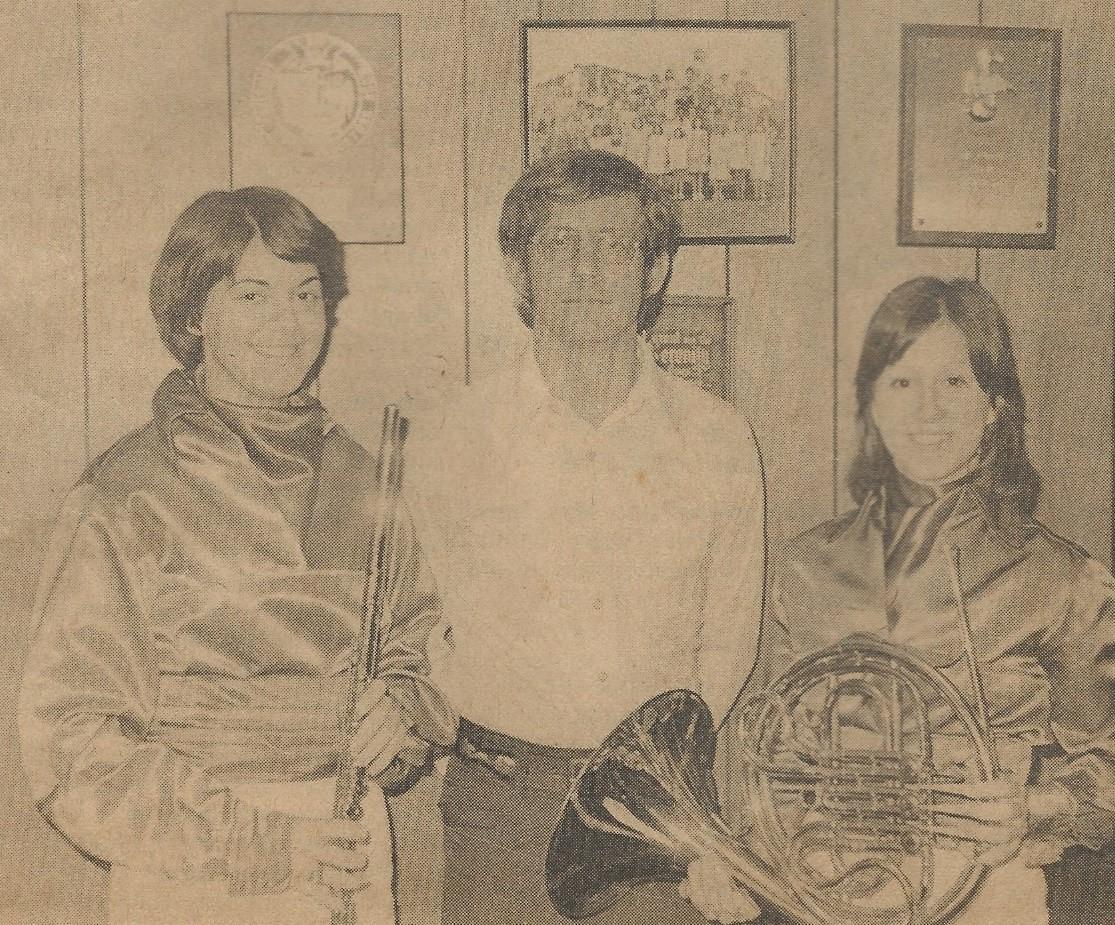 (Lynne Hollister and Liz Dupuis.)
(Lynne Hollister and Liz Dupuis.)
From "The Lake Arthur Revue" on April 21, 1977
Crowned
Melanie Bonin was crowned Miss Lake Arthur of 1977 at the end of the most elaborate and beautiful pageant ever held in the city’s history.
Miss Bonin, a 16-year-old LAHS junior, is the daughter of Mr. and Mrs. Leroy Bonin. Melanie was one of seventy-seven contestants who participated in the 1977 pageant. Wendy Hundley, a sophomore at Goretti High, was selected as first runnerup. Miss Hundley is the daughter of Mr. and Mrs. W. Y. Hundley.
Molly Owers, daughter of Mr. and Mrs. Harold Owers, was selected as Little Miss Lake Arthur from among thirty-four contestants in grades 6 through 8. Tanya Marionneaux, daughter of Mr. and Mrs. Charles Marionneaux, was chosen as a runner-up for Little Miss Lake Arthur honors. Both Molly and Tanya are junior high students at LAHS.
Gina Cain, daughter of Mr. and Mrs. Curtis Cain, and Colette Trahan, daughter of Mr. and Mrs. Donald Trahan, were selected by the contestants themselves to share Miss Congeniality honors.
Mrs. Lu Doland served as the emcee for the festivities, and Miss Annette Roches, the reigning Miss Lake Arthur, presented awards and crowns to all winners. Proceeds from the pageant, which over 600 spectators attended, were donated to the Lake Arthur High School Band Boosters. The profits made completed financing the Pride and Spirit Band’s trip to the Six Flags Band Festival in Dallas, Texas.
1977 senior class queen is Tamea Smith, daughter of Mr. and Mrs. Curtis Smith. Liz Dupuis, daughter of Mr. and Mrs. Edward Dupuis, was the senior runner-up.
The junior class queen for 1977 is Laurie Doland, daughter of Mr. and Mrs. Jerry Doland. Junior class runner-up was AngieStevens, daughterofMr. and Mrs.Jimmy Stevens.
The sophomore class queen for 1977 was Monica Istre, daughter of Mr. and Mrs. HenryIstre.Thesophomorerunner-upwasBridgetBonin,daughterofMr.andMrs. Leroy Bonin.
The freshman class queen is Cathy O’Blanc, daughter of Mr. and Mrs. Alton O’Blanc. Joan Guidry, daughter of Mr. and Mrs. V. L. Guidry, was selected as runner-up.
The eighth-grade queen is Rosie Chapman, daughter of Mr. and Mrs. Robert Chapman.Therunner-upwasSonyaTalen,daughterofMr.andMrs.CharlesTalen.
The seventh-grade queen is Monica Guillory, daughter of Mr. and Mrs. Denver Guillory. Paula Guidry, daughter of Mr. and Mrs. V. L. Guidry, was selected as runner-up.
Thesixth-gradequeenis MichelleMcGee,daughterofMr.and Mrs.CalvinMcGee. Runner-up in the sixth-grade division was Eva Giles, daughter of Mr. and Mrs. Red Giles.
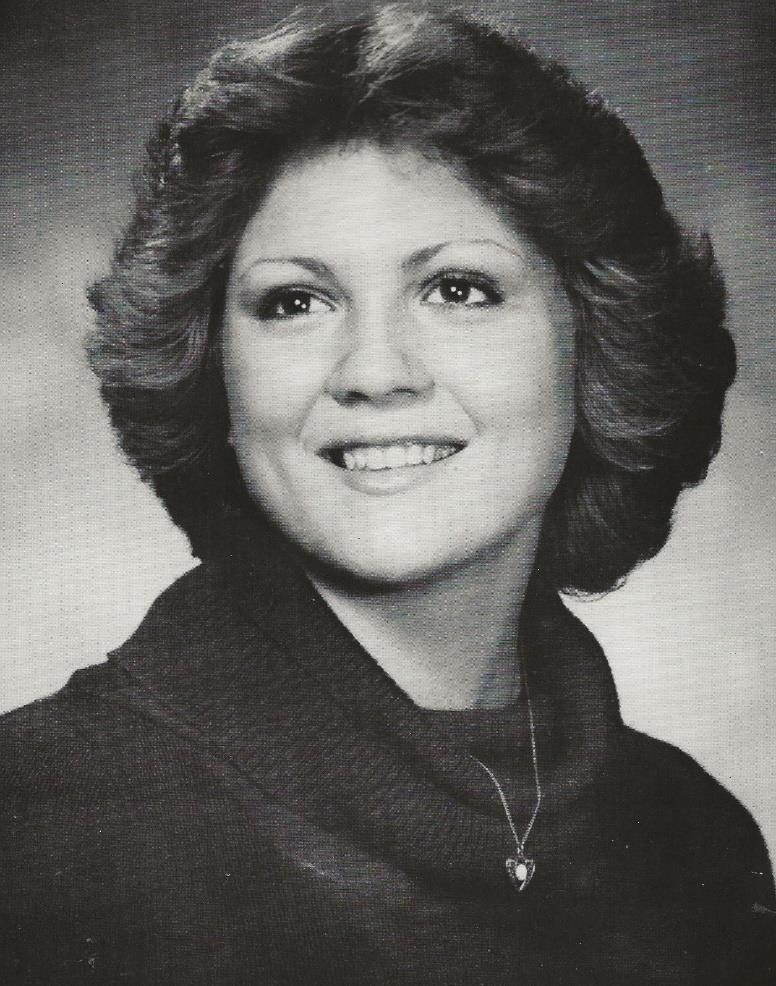 (Melanie Bonin)
(Melanie Bonin)
From “Jennings Daily News” on August 17, 1977
While most high school students throughout the parish have been using the summer months strictly as a vacation, many Lake Arthur High School Band members have been actively preparing for the opening of the 1977-78 school year. One hundred thirty-one LAHS students have participated in this year’s summer program. While most of the musicians prep for this fall inside the new air-conditioned band room, the members of the flag and rifle units have been drilling in the summer heat, preparing routines for those chilly Friday night football games.
Three of the Pride and Spirit Band members got the jump on the football season as they participated in the Louisiana All-Star Marching Band, which presented a brilliant halftime performance during the Louisiana All-Star Football game on July 30 in LSU’s Tiger Stadium. Ed Dupuis, Brian Bertrand, and Tracy Manuel represented Lake Arthur in this outstanding marching unit.
Lynne Hollister, a recent Tiger Band graduate, served with the United States Collegiate Band as the internationally famous group made a three-week tour in Europe. The organization also presented several concerts in New York City, including an ill-fated performance in Radio City Music Hall on the night of the New York blackout.
Twenty coeds from the band’s flag and rifle corps attended the University of Southern Mississippi Auxiliary Camp. The USM Camp is the largest auxiliary training center in the South and is recognized as one of the finest in the nation. Over one thousandstudents attended the camp,with 104 different high schools from asixstate area participating.
The Tiger Flags ended the camp ranked 3rd out of the 61 competing flag units. The Lake Arthur lassies were ranked only behind AAAA powerhouses Acadiana High School of Lafayette, LA, and Greenwood High School of Greenwood, Mississippi. The Tiger Rifles placed 4th out of the 39 rifle groups, bowing only to Acadiana, Greenwood, and Louisville High School of Louisville, Kentucky. Tracey Guidry and Paula LaPoint will captain the LAHS flags this year. Lizanne Carter and Melissa Broussard will captain the rifles.
Pictured in the flag photo (kneeling l to r) are Tana Bourgeois, Pam O’Blanc, and Melanie Bonin. (Standing l to r) are Becky Hanks, Shelia LeJeune, Geralyn Guidry, Tracey Guidry, Margo Dugas, and Bridget Bonin.
Pictured inthe rifle photo (kneeling l to r) are Tina Perry and MaDonna Hargrave. (Standing l to r) Aretha Richard, Melissa Broussard, Pat Deaville (Band Director), Sandra St. Germain, and Lizanne Carter.
Jennifer Bertrand, Corps Captain for the Tiger Auxiliary, and Donna Comeaux, Assistant Drum Major for the LAHS Marching Band, also attended the USM Camp. Miss Bertrand was an assistant instructor on saber and featured in both saber and field conducting presentations. Miss Comeaux took the Intermediate Drum Major competition by storm as she worked her way into the finals past eighty-one competitors. She was outpointed in the finals by the Drum Major from Selia, Alabama.
For the second consecutive year, Cathy O’Blanc, Drum Major of the LAHS Marching Band, was chosen to be the Feature Drum Major at the USM Camp, with over one hundred Drum Majors representing high schools from states across the south.ThisLakeArthur brown-eyed beauty also took firstplacehonors in the Senior Division of Uniform Modeling. Six hundred forty-six girls were eligible for the Senior Division competition this year.
“All in all, it has been a busy and successful summer for the Pride and Spirit organization,” remarked Director of Bands Pat Deaville. “It appears as though this year’s crew will be an exceptional group. We intend to make the 1977-78 session a super year for the Tiger Band.”
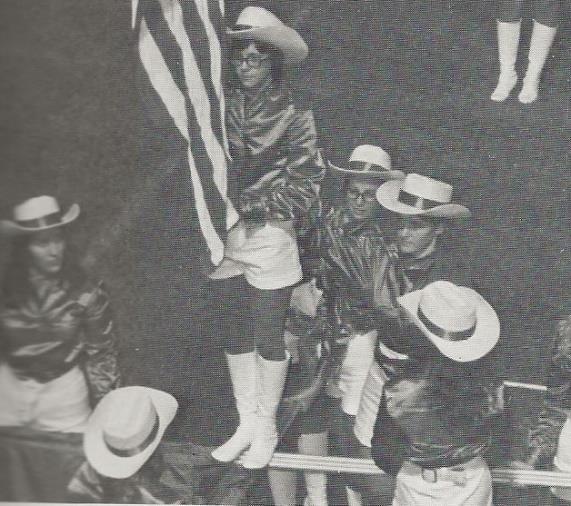
(Lori Carter presented the colors.)
From “Jennings Daily News” on August 17, 1977
Lake Arthur Pride and Spirit Band Drum Major Wins Again
Cathy O’Blanc, sophomore Drum Major of the LAHS Tiger Band, continued in her winning ways this summer as she dominated competitions on a tour of outstanding band camps in the Southern United States. This brown-eyed beauty, selected as “Freshman Queen of Lake Arthur” and “Miss Valentine for Jeff Davis Parish” this past year, proved once again that she has much more working for her than just an attractive form.
While attending the University of Southern Mississippi Band Camp, Cathy was chosenforthesecondstraightyearas“FeatureDrumMajor.”Withover onehundred Drum Majors from states throughout the South in attendance, it was once again a unique honor for the talented 15-year-old to be selected for this post. Cathy also earned first place in the Senior Division of Uniform Modeling. Six hundred fortysix girls were eligible for the competition in the Senior Division.
FollowingtheUSMCamp,MissO’Blancservedasa co-instructorforthetwocamps held on the Arkansas Tech University campus. She also presented numerous “Free Style Conducting Exhibitions” for student and band director clinics throughout Arkansas. The largest clinic was presented to some four hundred students and fifty directors in Witherspoon Auditorium in Russellville, Arkansas. Lake Arthur can indeed be proud of this young lady in her representation of the community and the State of Louisiana.
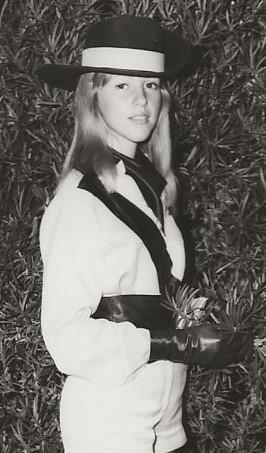 (Cathy O’Blanc)
(Cathy O’Blanc)
From "The Lake Arthur Revue" in the Fall of 1977
The Lake Arthur High Pride and Spirit Band, underthe directionof Patrick Deaville, captured top honors in the "Biggest Little Band Contest" of Louisiana. The contest was held in DeRidder, Louisiana, on November 17.
The organization received the overall rating of "Superior" from judges in the Band and Drum Major categories. The Tiger Auxiliary and Percussion sections were also rated "Excellent" by the specialty judges. Their scores, combined with the Bands' performance at the LaGrange Marching Contest, elevated the Tiger marchers into the top echelon of Class B rankings in Louisiana.
"Everything just seemed to work," remarked director Pat Deaville. "From the first day to the last, our kids were determined to win. And, of course, we had outstanding support from parents, boosters, faculty, and administration. You can't succeed without that kind of support.
The Lake Arthur Band has been in a rebuilding program for the past three years. During this time, band enrollment has increased from seven to over two hundred active students ranging from grades six to twelve.
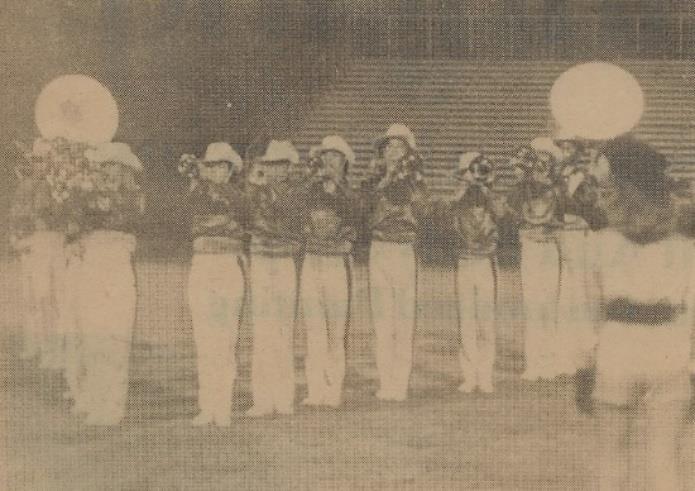
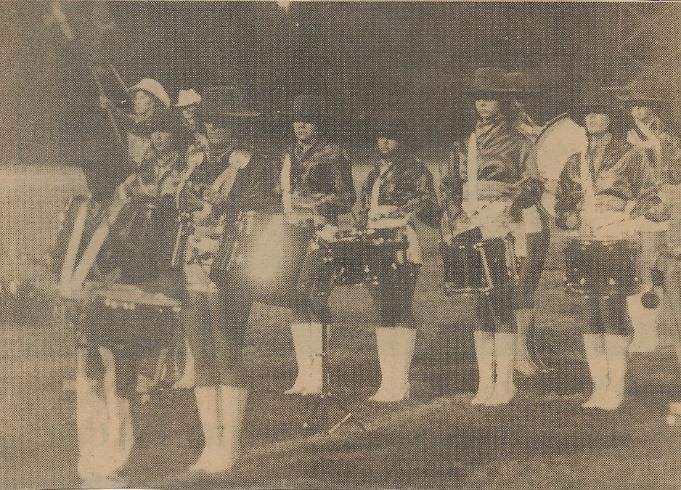
(Photos from the DeRidder Festival by Greg English.)
From "The Lake Arthur Revue" in the spring of 1978
In the past four years, the band program in the Lake Arthur School System has undergone tremendous growth in quality and quantity. In the fall of 1974, the enrollment in the program, grades six through twelve, consisted of only seven students. At that time, a united effort by school administrators, faculty, students, and parents initiated a change in the instrumental department's fortune.
Patrick Deaville, a former commissioned officer in the U. S. Army, was hired as Director of Bands. An intensive recruiting campaign resulted in an increased enrollment of over one hundred students in September. During the 1974-75 school year, most of these students met in classes before and after school as scheduling changes could not keep pace with the vast increases in enrollment.
The program presented a "beginning band" in district and state competitions, receiving numerous superior and excellent ratings. During this year, a new Band Booster Club was organized, with Alvin Richard installed as its first president. The Booster Club produced immediate results in financing the travels and uniforming of the young band.
In the 1975-76 school term, the Pride & Spirit Marching Band was first organized, with Sally Wade selected as Drum Major. Enrollment grew to exceed one hundred fifty students, with all students receiving training during the regular school periods due to improved scheduling.
The concert band continued to rank highly in competitive events, enriching the educational process by attending musical activities like the LSU Symphonic Band Spring Concert.
The Pride & Spirit Marching Band began to considerably impact the local area in its second year of existence. Cathy O'Blanc was selected as Drum Major, with Jennifer Bertrand leading the Tiger Auxiliary Units as Corps Captain.
The 1976-77 school year reflected a growth in band enrollment to exceed two hundred students in grades six through twelve. The program continued to build its reputation of producing outstanding competitive groups as the concert band participated in the Six Flags Over Texas Band Festival in the Spring of 1977.
The 1977-78 school term was a banner year for the Tiger Band, producing numerous award-winning performances. They received a total of 9 superior ratings during the year. The Marching Band was named the Outstanding Band in the Jefferson Davis Parade and received superior honors in major marching events.
The growth and sense of excellence developed in the Lake Arthur Band Department is a positive reflection of the achievements possible through sincere and dedicated teamwork. The school and community can take equal pride in this success story. It is indeed an inspiration to young bands throughout America.
This organization has grown from seven to two hundred twenty-three members in a short four-year span. It now rehearses in a new air-conditioned and carpeted facility equipped with many modern instruments.
Competitively, the band has performed at the district, state, and national levels and has received superiorratingsin marching band, auxiliary, concert performances, and sightreading events.
But most importantly, the band has served as ambassadors of goodwill, representing the community of Lake Arthur in a proud and dignified manner. They are a true reflection of the spirit of our fair city.
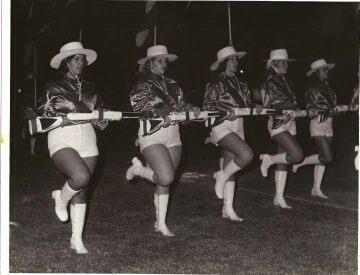
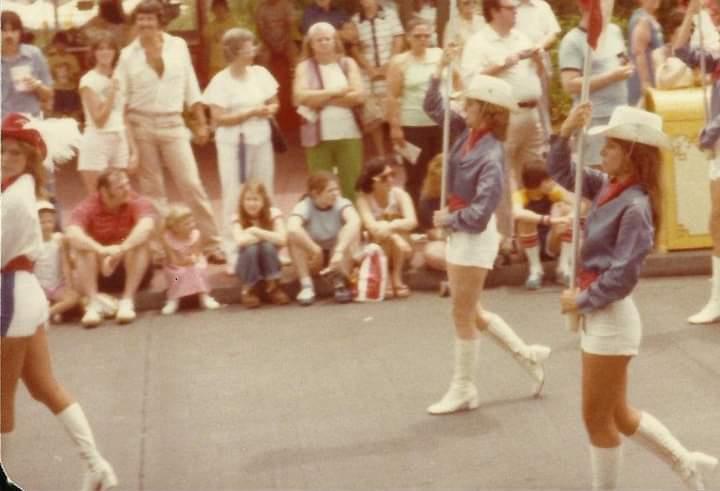
(We were striving for perfection in every way.)
From "The Lake Arthur Revue" in the fall of 1978
Lake Arthur Band Sweeps Up Awards At Lamar University Marching Contest on October 7, 1978
The Lake Arthur High School Band joined two other Louisiana bands in a virtual sweep of top awards at the annual East Texas Marching Festival hosted by Lamar University in Beaumont, Texas.
Barbe High School, Morgan City High School, and Lake Arthur High provided Louisiana with "bragging rights" in this year's classic Texas-Louisiana battle of the bands.
The three Louisiana bands captured five of the six top awards presented at this year's contest.
Lake Arthur's "Pride and Spirit" proved to be the giant killers as it jumped from Class B to Class AA while joining the two AAAA Bands from Louisiana as major award winners.
The Lake Arthur Band earned the "Outstanding Drum Major" and "Outstanding Flag Corps” awards.
The Tiger Band showed little fear in stepping out of its Louisiana Class B status to take on numerous Class AA Texas bands. The Tiger Band placed second in Class AA and finished fifth in the open division, taking on the AAA and AAAA bands.
"I think we proved what we set out to prove," director Pat Deaville says. "That we have one of the most competitive marching bands in the state regardless of classification. The horn line, percussion line, rifles, flags, corps captain, and drum majors are all winners.
Cathy O'Blanc, Lake Arthur's drum major, continued to add to her list of credits as she was named the "Outstanding Drum Major" in the contest.
"Cathy was carrying a heavy responsibility in this Texas competition as she is a Louisiana All-Star Drum Major and has been the Exhibition Drum Major at elite camps in Mississippi and Arkansas," Deaville remarked. "It was like a 'wild west shoot out' with the Texas drum majors trying to make a reputation by outpointing
her. Both the drum majors from Barbe and McCullough were well-prepared, but Cathy came through like the champion she is."
TheTigerFlagCorpsprovidedthemoststunningupsetoftheday,outscoringseveral highly rated AAAA flag units to capture the "Outstanding Flag Corps" trophy.
Paula LaPoint, Senior Flag Captain, led the Lake Arthur flags through a nearperfect performance.
"For several years, we've put our flag and rifle units into tough competitions against big school groups and nationally rated units at the elite University of Southern Mississippi Auxiliary Camp," Deaville explained. "When you do that, you gain much experience while taking a few lumps.”
“Well, it was finally our turn to outscore the big-name groups. Our rifle corps did a great job with a high-risk routine, and our flag corps performed fantastically. It was a notable victory for our girls and a high-water mark in our five years of growth and development.”
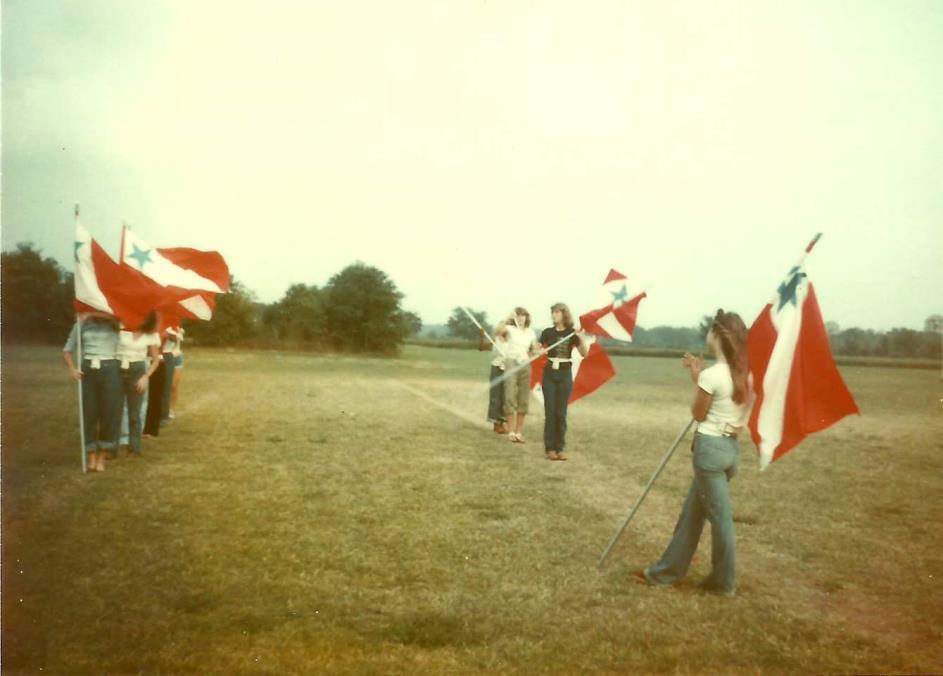 (The daily grind reaped the big awards.)
(The daily grind reaped the big awards.)
From "The Lake Arthur Revue" on November 2, 1978
The Lake Arthur Tiger Band continued to set school records, earning two "superior" ratings and two "excellent" ratings in the 1978 LaGrange Marching Festivalthis past Saturday. The “Pride and Spirit” has now established a record string of nine consecutive contest performances, which have been rated either “excellent” or “superior.”
This string of impressive showings stretches across a 3 ½ year period. It includes ratings from 45 separate judges and extends back to April 1975 when the Tiger Band first competed under the direction of Pat Deaville. The nine events reflect district, state, and regional competitions with marching and concert bands.
In their most recent competition at the LaGrange Festival, the Marching Band received an "excellent" rating, the highest score awarded in Lake Arthur’s classification this year. The Tiger Percussion also grabbed a rating of “excellent.”
During the day-long contest, Cathy O’Blanc, LAHS’s premier Drum Major, continued her winning ways as she was awarded a rating of “superior.”
TheTigerRifleandFlagCorpslivedupto theirreputation astheyalsowereawarded a “superior” rating.
“Of course, we never go into a contest thinking about records,” explained Director of Bands Pat Deaville. “We prepare for each contest one at a time. But it takes a great deal of maturity to maintain such a high level of performance over such an extended period.”
“Fortunately, our students have always come through when it counts. Right now, all we are thinking about is the next competition. You just can’t look back; there isn’t time for that. This year has been a joy because this group has been the most talented and consistent since my arrival.”
In the past sixty days, we have done ten pep rallies. We have performed at six halftimes, a pre-game show, a post-game show, two parades, and two significant competitions without a single ‘down’ performance.”
The Pride and Spirit Band will be looking to extend their string of successful competitions to ten as they travel to Denham Springs later this week for the final contest of their “marching season.”
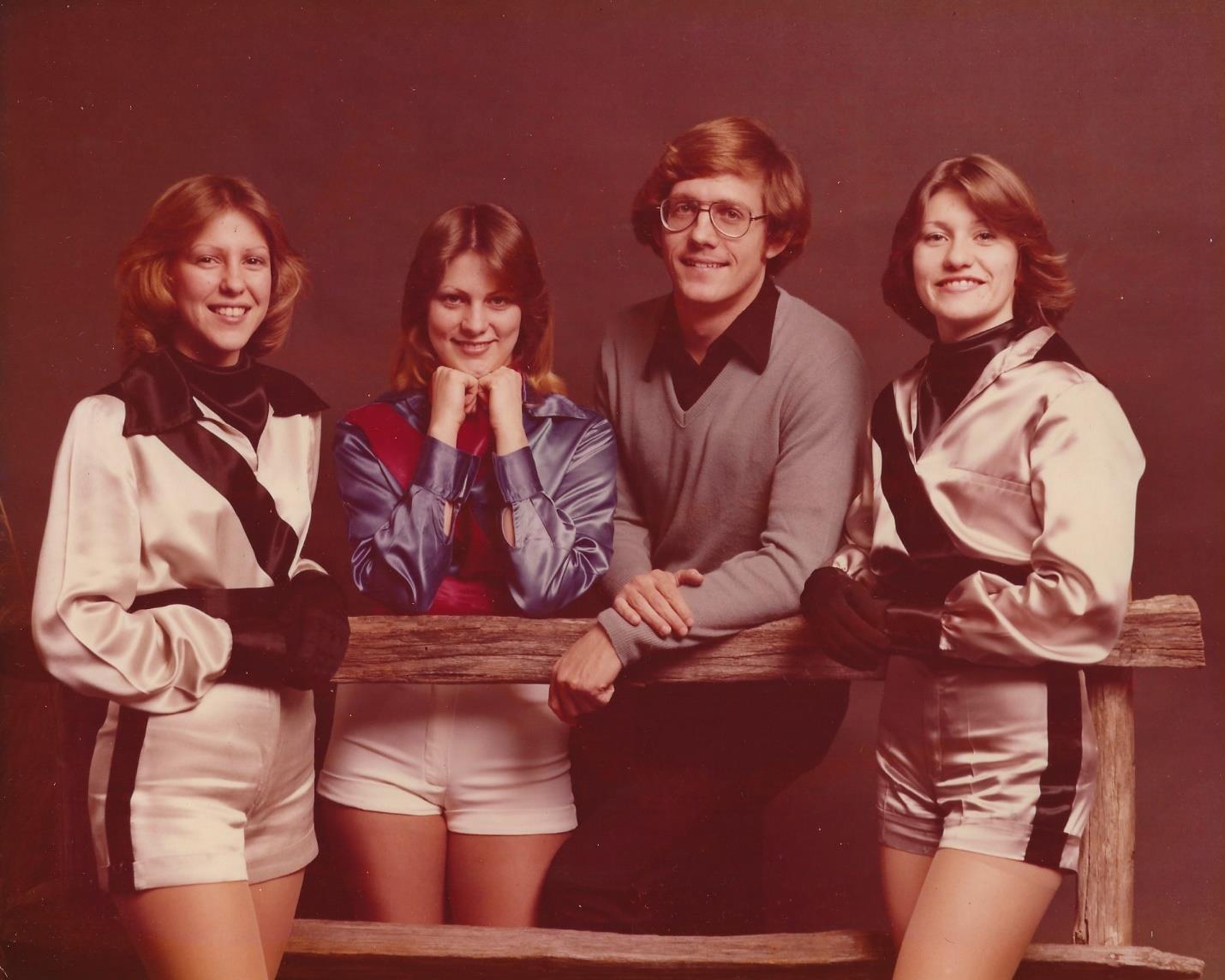 (Cathy O’Blanc, Jennifer Bertrand, and Donna Comeaux.)
(Cathy O’Blanc, Jennifer Bertrand, and Donna Comeaux.)
From “Jennings Daily News” on May 18, 1979
Lake Arthur Tiger Band - Five Years of Growth and Achievement
Malon Dobson, Principal and Roy Lapoint, Assistant Principal Pat Deaville, Director of Bands
In the last five years, the Tiger Band and its director, Pat Deaville, have represented the community of Lake Arthur in competitions, exhibitions, clinics, and performances throughout the south.
In Louisiana, the band has participated in numerous district competitions in Lake Charles and has traveled in state competitions to Ruston, Lafayette, DeRidder, Baton Rouge, and Denham Springs.
Outside Louisiana’s borders, the band’s Flag Units, Rifles Units, and Drum Majors have participated in camps, clinics, exhibitions, and contests in Hattiesburg, Mississippi, and Russellville, Arkansas. Deaville has also presented drum major clinics in Meridian, Mississippi; Gulfport, Mississippi; and Mobile, Alabama.
The Marching band also competed in Beaumont, Texas. In addition, the entire band has made performance and clinic trips to LSU in Baton Rouge, Six Flags over Texas in Arlington, Texas, and Disney World in Orlando, Florida.
Some milestones in the Pride and Spirit Band’s history between 1974 and 1979.
1974-75
Malon Dobson was appointed as Principal at LAHS.
1974-75 Patrick Deaville was hired as LAHS Band Director.
1974-75 Alvin Richard was selected as LAHS Band Booster President.
1974-75 Band enrollments increased from 7 to 104 students and adopted the moniker: “Pride and Spirit.”
1974-75 New band uniforms were designed and hand-sewn by the booster club.
1975-76 The Marching Band is reinstituted and begins performing with Sally Wade as Drum Major.
1975-76 Flags Unit, Rifle Unit, and Drum Majors attend and compete at the University of Southern Mississippi Summer Camp for the first time.
1975-76 Band travels to Baton Rouge as a guest of the LSU Symphonic Band.
1976-77 Alton O’Blanc was selected as LAHS Band Booster President.
1976-77 Band enrollment grows to 188 students.
1976-77 Construction of a new band room is completed.
1976-77 Band traveled to a concert band contest at Six Flags over Texas in Dallas.
1977-78 LAHS drum major Cathy O’Blanc was named the Louisiana All-Star Marching Band drum major.
1977-78 Band records its first album.
1977-78 Mayor proclaims Lake Arthur Band Day.
1978-79 Band enrollment increases to 228 students.
1978-79 Band performs at Disney World in Orlando, Florida.
1978-79 The Louisiana House of Representatives congratulates and commends Pat Deaville for his outstanding achievement with the Lake Arthur High School Band.
Pride and Spirit performances from the spring of 1975 through the spring of 1979. 45
184 Total Performances over five years.
Pride and Spirit individual honors from 1975 through 1979.
31 Students were selected to district-level honor/clinic bands.
27 Students were selected to the Louisiana All-Star Marching Band.
24 Students were named in Who’s Who in America.
8
3
Students are mentioned in the All-American Hall of Fame list.
Students were invited to participate in the United States Wind Band.
Band Competition ratings from the spring of 1975 through the spring of 1979.
1975 LMEA District Concert Band Festival Superior
1975 LMEA State Concert Band Festival Excellent
1976 LMEA District Concert Band Festival Excellent
1977 LMEA District Concert Band Festival Excellent
1977 LaGrange Marching Band Invitational Superior
1977 DeRidder Marching Invitational Superior
1977 Jefferson Davis Parish Parade Outstanding Band
1978 LMEA District Concert Band Festival Excellent
1978 LMEA District Sightreading Performance Superior
1978 LaGrange Marching Band Invitational Excellent
1978 Lamar University Marching Band Invitational Excellent
1978 Denham Springs Marching Band Invitational Excellent
1978 Jefferson Davis Parish Parade Outstanding Band
1979 LMEA District Concert Band Festival (Jr. High) Superior
1979 LMEA District Concert Band Festival (Sr. High) Superior
1979 LMEA District Sightreading Performance Superior
1979 LMEA State Concert Band Festival Very Good
1979 LMEA State Sightreading Performance Very Good
Flag/Rifle Unit Achievements from the summer of 1977 through the fall of 1978
1977 University of Southern Mississippi Camp Competition
3rd place out of 84 competing groups.
1978 University of Southern Mississippi Camp Competition
4th place out of 87 competing groups.
1977 LaGrange Marching Band Invitational Superior
1977 DeRidder Marching Band Invitational Excellent
1978 LaGrange Marching Band Imitational Superior
1978 Lamar University Marching Band Invitational Superior
Overall Outstanding Unit
1978 Denham Springs Marching Band Invitational Superior
Drum Major Achievements from the summer of 1976 through the fall of 1978
1976 University of Southern Mississippi Camp Competition
1st place in the Junior Division (Cathy O’Blanc)
1976 University of Southern Mississippi Camp Competition
Selected as the Exhibition Drum Major (Cathy O’Blanc)
1977 University of Southern Mississippi Camp Competition
1st place in the Senior División (Cathy O’Blanc)
1977 University of Southern Mississippi Camp Competition
Selected as the Exhibition Drum Major (Cathy O’Blanc)
1978 University of Southern Mississippi Camp Competition
2nd place in the Intermediate Division (Donna Comeaux)
1978 University of Southern Mississippi Camp Competition
Selected as the Exhibition Drum Major (Cathy O’Blanc)
1978 Louisiana All-Star Marching Band Drum Major (Cathy O’Blanc)
1977 LaGrange Marching Band Invitational Excellent
1977 DeRidder Marching Band Invitational Superior
1978 LaGrange Marching Band Invitational Superior
1978 Denham Springs Marching Band Invitational Superior
1978 Lamar University Marching Band Invitational Superior
Overall Outstanding Drum Major
From "The Lake Arthur Revue" in the spring of 1979
Pat Deaville Resigns as Band Director
Patrick Deaville, Director of Bands at Lake Arthur High School, has announced his resignation effective July 31, 1979. He will assume the Director of Bands position at Lake Charles High School on August 1, 1979.
Mr. Deaville's resignation comes at the end of his fifth year of service as director. During his tenure, he led the LA "Pride and Spirit" Tiger Band from near obscurity to national exposure. His efforts and leadership increased the band enrollment from seven to over two hundred members, primed the construction of a new band facility, and inspired a program that developed a high profile in the Southern U.S.
Competitively, the Tiger Band rewrote the school's record books. During the last five years, the band has earned "superior" ratings in all areas of competition, including field marching, parade marching, auxiliary units, drum major, concert performances, and sightreading.
The "Pride and Spirit" was twice named the Outstanding Band in the Jeff Davis Parish Fair Parade, captured three District Superior ratings in concert performance, two Superior Ratings in sightreading, and numerous Superior ratings with marching units as well as "Outstanding in Festival" recognition in Louisiana and Texas marching events.
Eight of his students have been named to All-American Hall of Fame honors and twenty-seven to the Louisiana All-Star Marching Band, including Cathy O'Blanc, who was named the Louisiana All-Star Drum Major.
The flag and rifle units have earned a national reputation with victories in open competitions against some of the finest marching units in the country. In earning these honors, the Tiger Band has traveled throughout Louisiana, Texas, Arkansas, Mississippi, and Florida.
Beyond his contributions as Band Director at LAHS, Mr. Deaville has served as Senior Class Sponsor, Cheerleader Sponsor, and Student Council Sponsor. For the last three years, he has served as Music Program Chairman for Jeff Davis Parish's Accountability Study. He was twice Chairman of District V Honor Bands and twice named to the instructional staff of the Louisiana All-Star Marching Band.
Patrick Deaville, a Jennings native, majored in music education at McNeese State University, earning the principal trumpet and drum major positions. In 1972, he was awarded summa cum laude honors at McNeese and ranked first in a graduating class of over five hundred bachelor's degree candidates.
Eightyearslater,hemaintained aperfect4.0 average in graduate studies at McNeese while earning a Master of Education in Administration and Supervision.
Upon receiving an officer's commission, he remained on active duty in the U. S. Army's 18th Airborne Corps for two years.
After completing his military commitment, Deaville served as a band director for twenty years in Jefferson Davis and Calcasieu Parishes public schools. His directorships included Lake Arthur High School, Jennings High School, Lake Charles High School, LaGrange High School, and SJ Welsh Middle School.
Over those two decades, his concert bands earned twenty-three sweepstakes awards at LMEA concert assessments. As an instructor, he was named Band Director of the Year for District V and Calcasieu Parish Middle School Teacher of the Year.
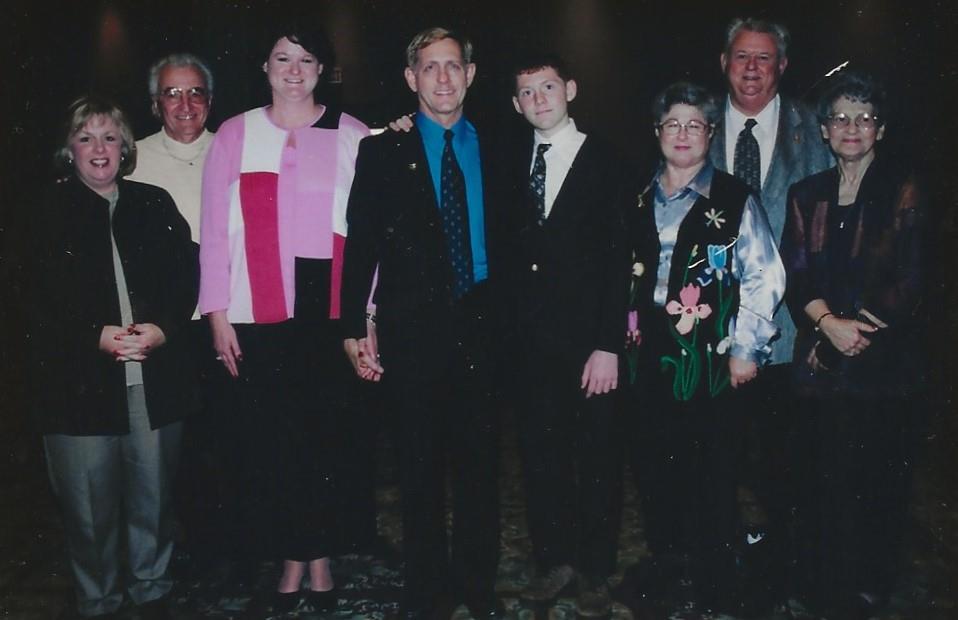 (Louisiana Music Educators Association Hall of Fame Induction.)
(Louisiana Music Educators Association Hall of Fame Induction.)
In 1993, Mr. Deaville left the rehearsal hall and embarked on a twenty-year administrative career. He first served as Assistant Principal at SJ Welsh Middle School before assuming the same role at Sam Houston High School.
He oversaw discipline, curriculum, instruction, scheduling, and faculty evaluations for four years at Sam Houston. He was also acting principal for one semester during a transition in school administration.
DuringhistenureatSHHS,DeavillewasnamedCalcasieuParishAssistantPrincipal oftheYearandwasafinalistfortheLouisianaAssistantPrincipaloftheYearaward.
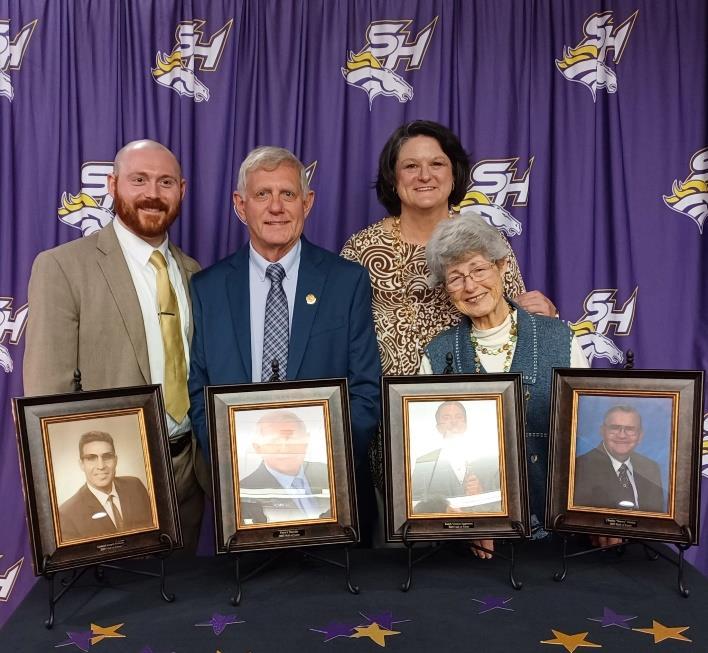
In 2000, he was promoted to district-level leadership, where he functioned as the CPSB Director of High School Curriculum and Instruction and as the Music Supervisor for all Calcasieu Parish schools. In addition, he held seats on Louisiana's Accountability Commission and the Louisiana Department of Education High School Redesign Committee.
Throughout Mr. Deaville's long career in teaching and administration, he remained activeintheLouisianaMusicEducatorsAssociation (LMEA).His involvementwith the Louisiana Music Educators Association included a thirty-four-year tenure on the Board of Directors. During that timeframe, he spent eight years as the District V Representative, twenty-five years as Chairman of the State Music Professional Development Conference, and twenty-eight years as Editor of The Louisiana Musician.
(Sam Houston High School Hall of Fame Induction.)In 1998 and 2009, Deaville was named Louisiana's Outstanding Contributor to Bands. In addition, LMEA inducted Mr. Deaville into its Hall of Fame in 2003.
In 2022, Patrick Deaville was named one of the first two recipients of the Louisiana Music Educators Association’s Distinguished Legacy Award. In 2023, Mr. Deaville was announced as one of the first four inductees into the Sam Houston High School Hall of Fame
A prolific writer, Mr. Deaville has produced a multitude of powerfully influential editorials and educational essays published in state, national, and international education periodicals. He also authored eleven fiction, nonfiction, and poetry books.
Mr. Deaville is married to Kathlene Honsinger Deaville and has two sons, Paul and Patrick Austin. Kathlene is a Lake Charles High and LSU graduate who earned numerous awards in advertising as an account executive with KPLC TV.
Paul completed his secondary studies at the Louisiana School for Math Science and Arts. Like his father, Paul was a summa cum laude graduate of McNeese State University.
Patrick Austin is a Sam Houston High School and McNeese graduate who works in the digital news team at KPLC TV. Like his father, Patrick Austin was an accomplished high school and collegiate trumpet player.
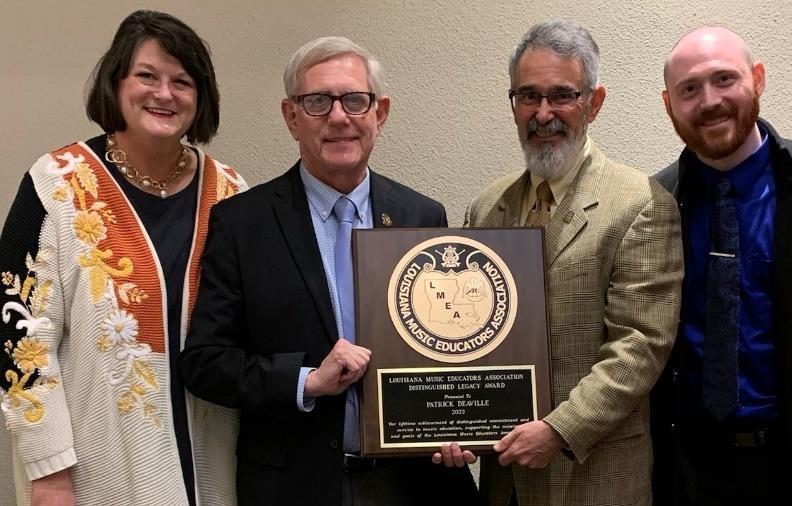 (Louisiana Music Educator Association Distinguished Legacy Award.)
(Louisiana Music Educator Association Distinguished Legacy Award.)